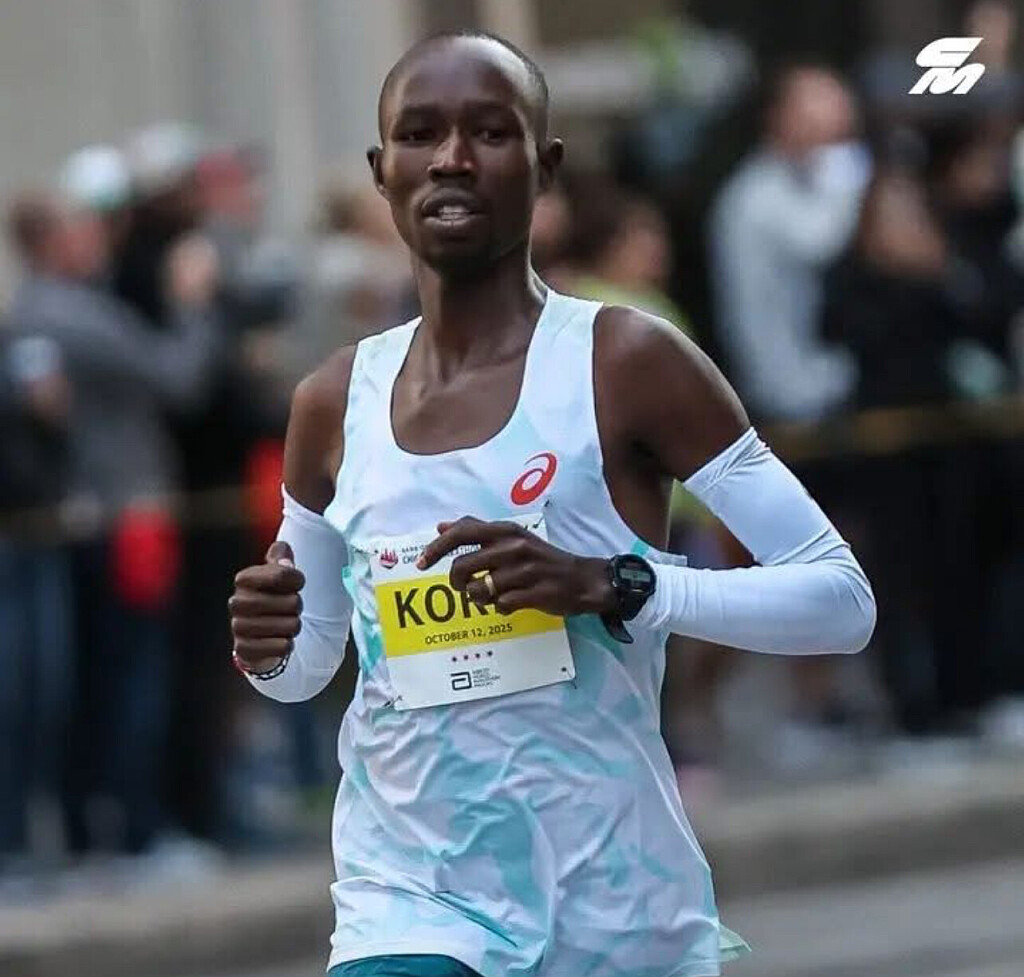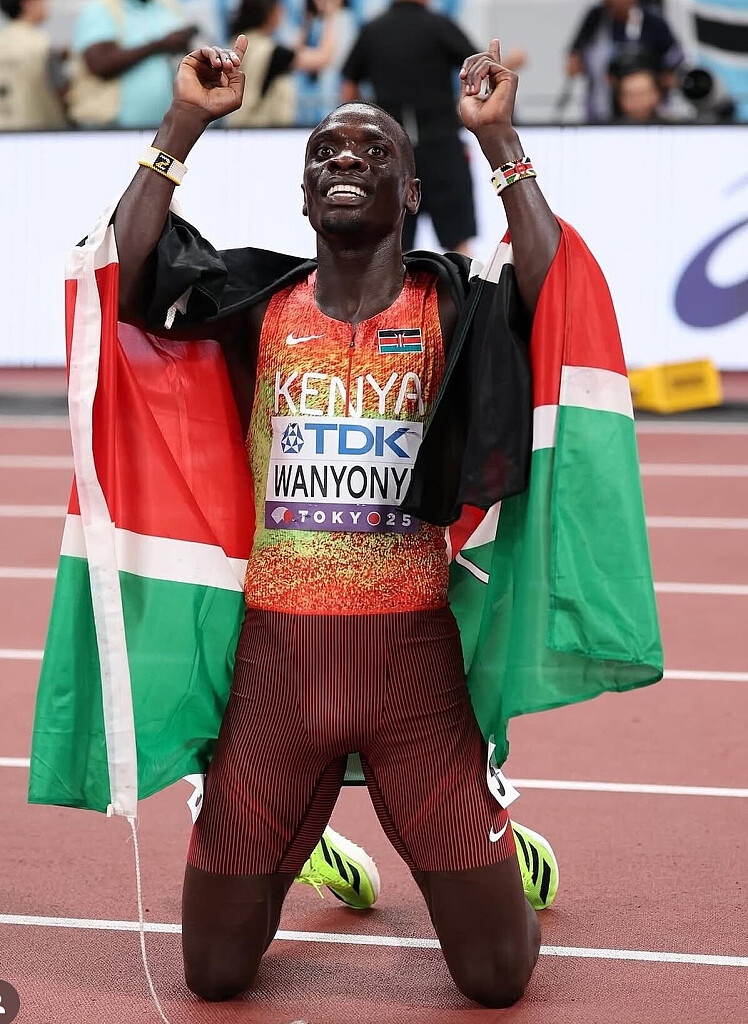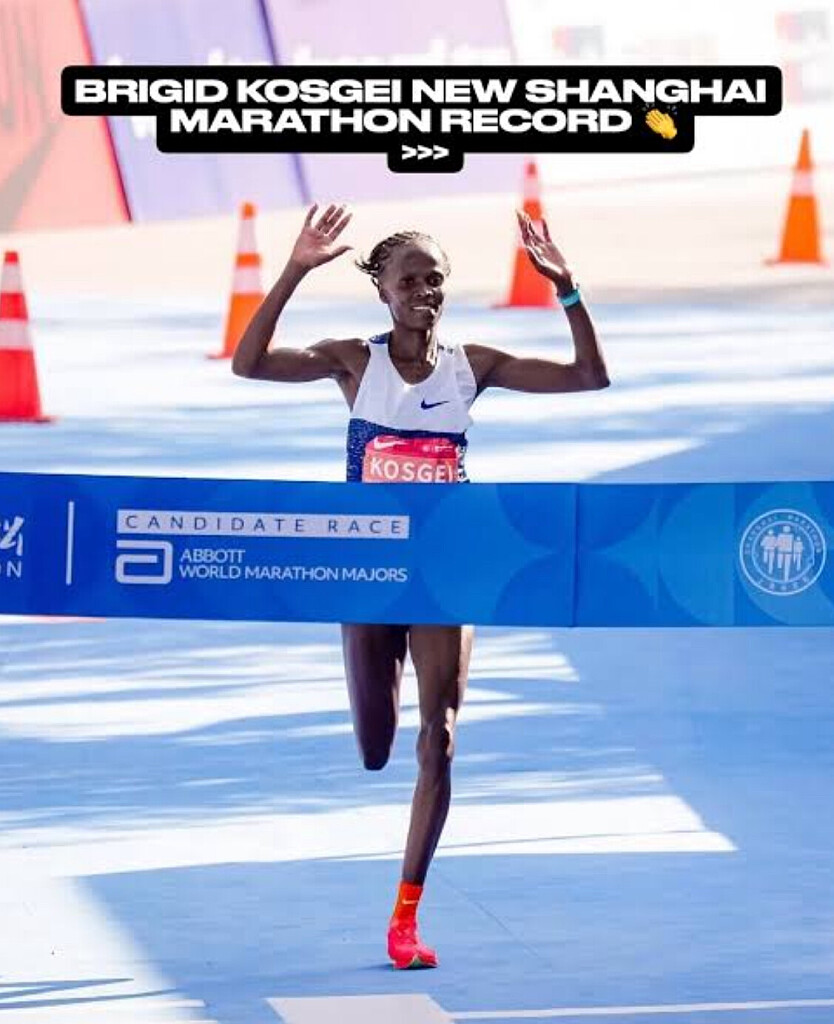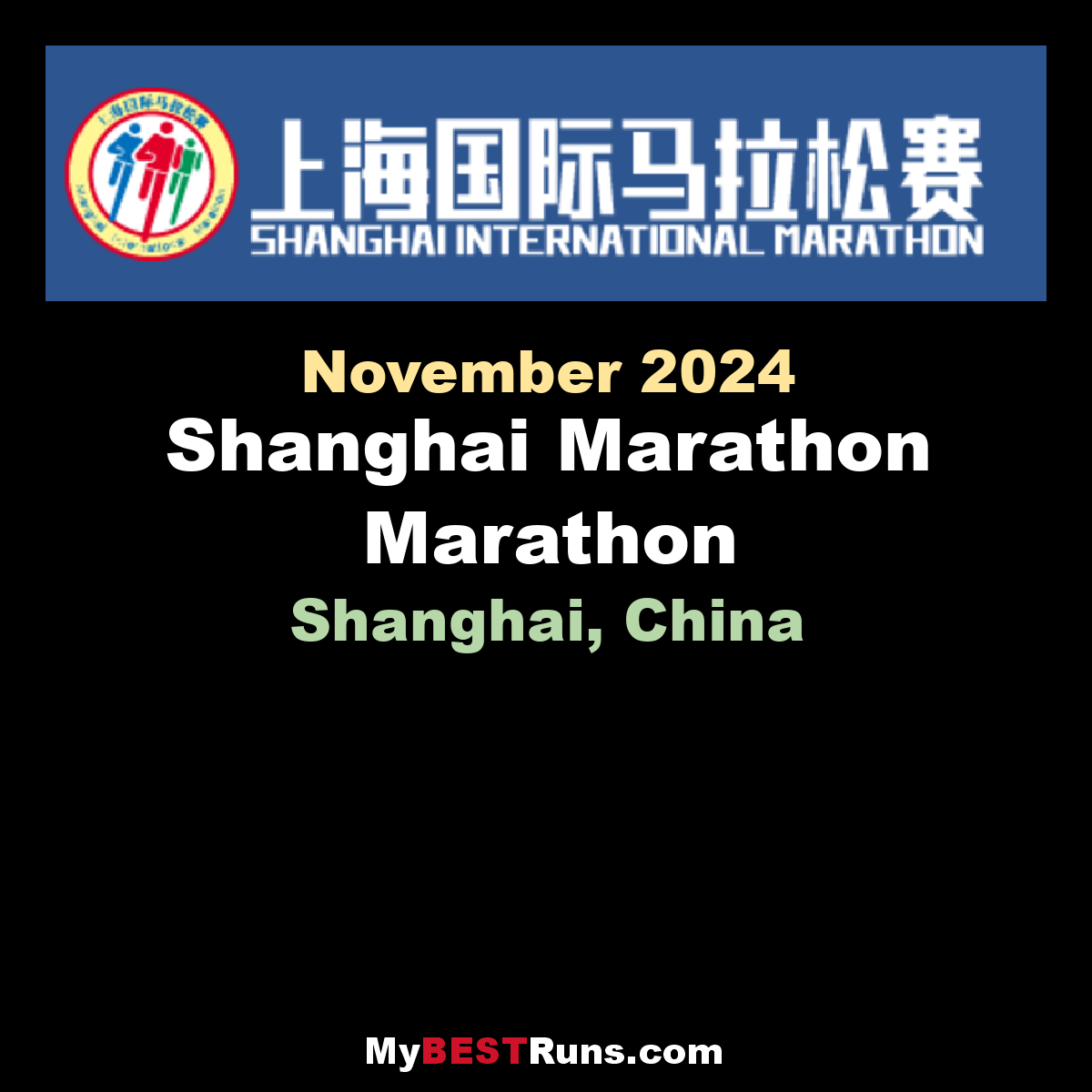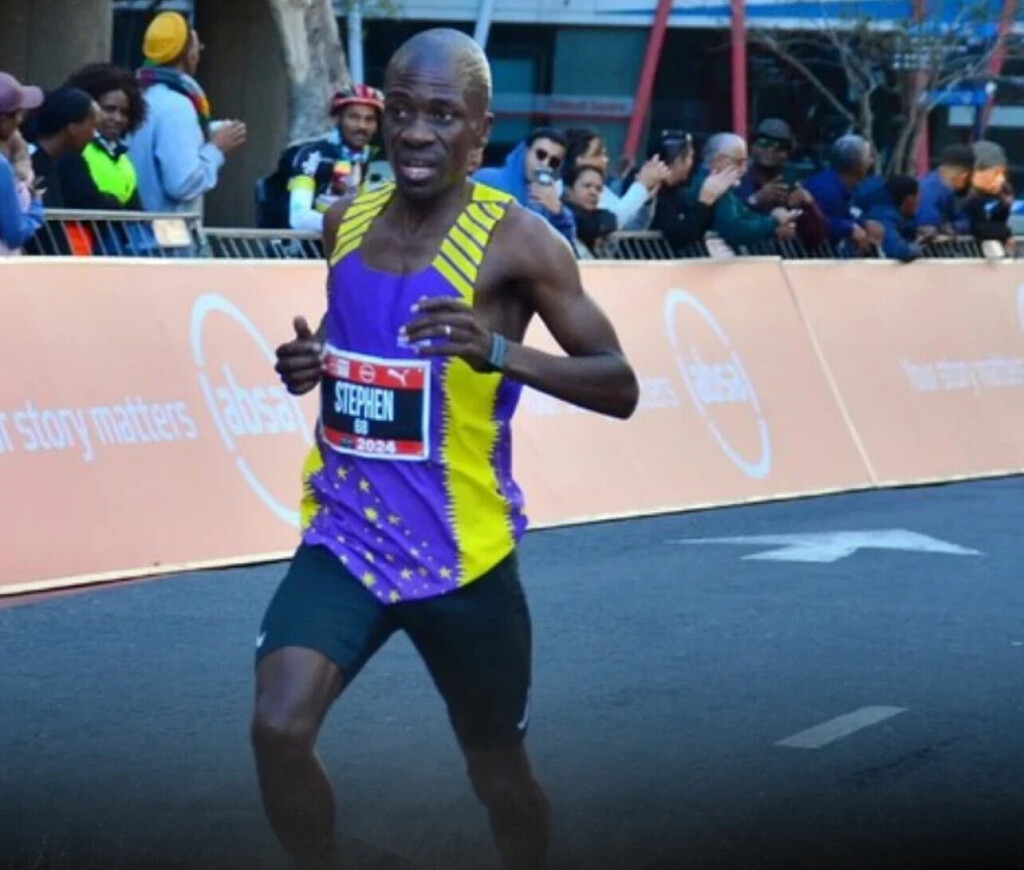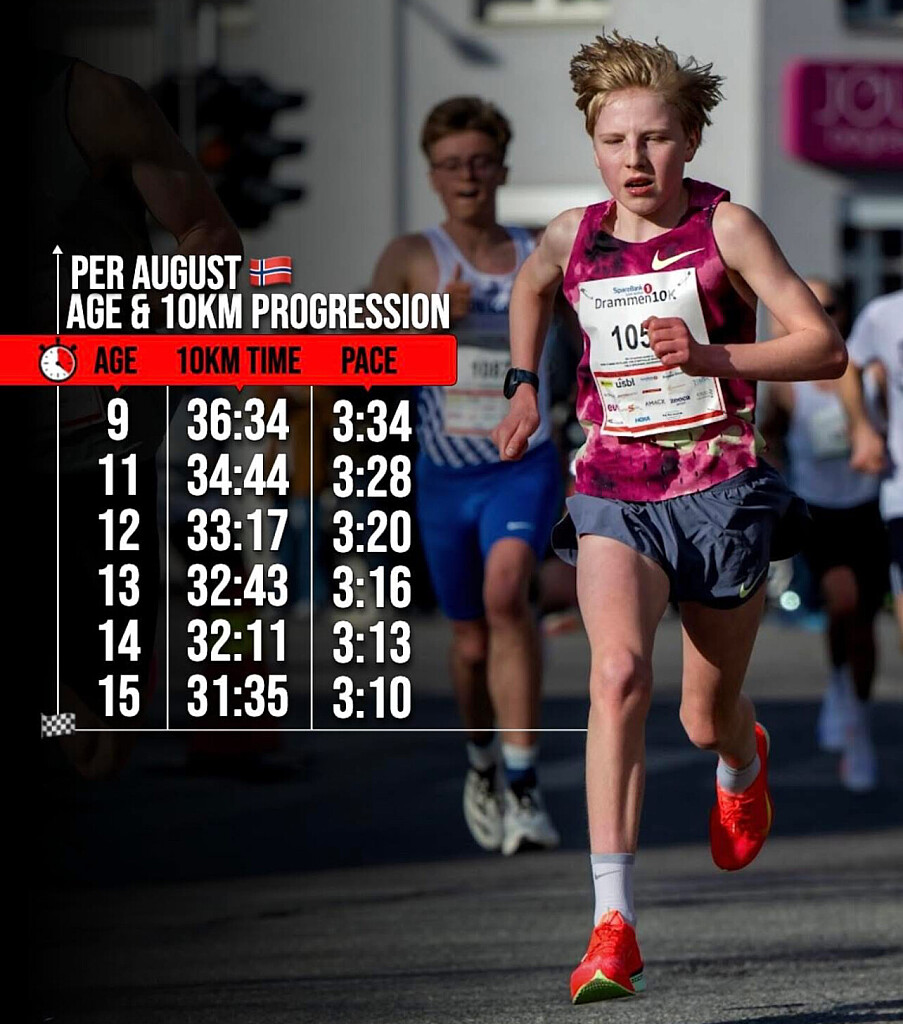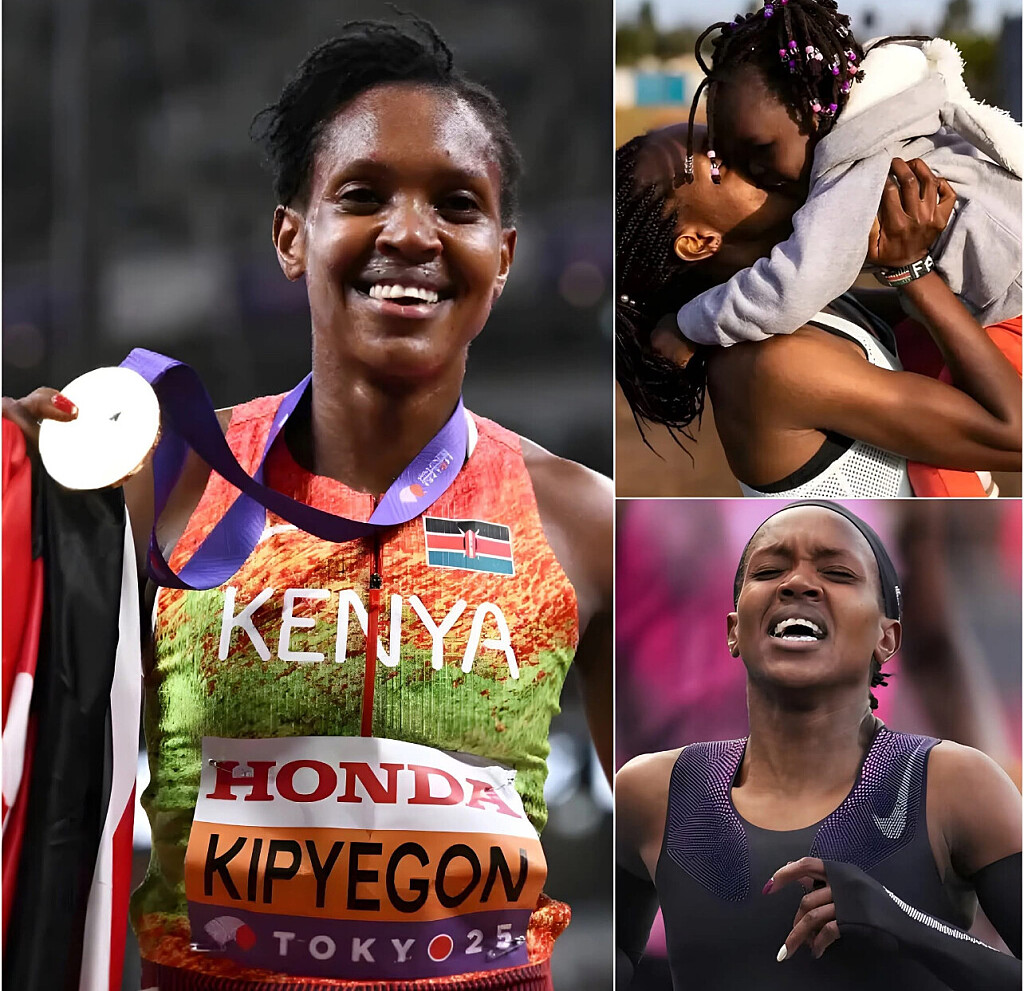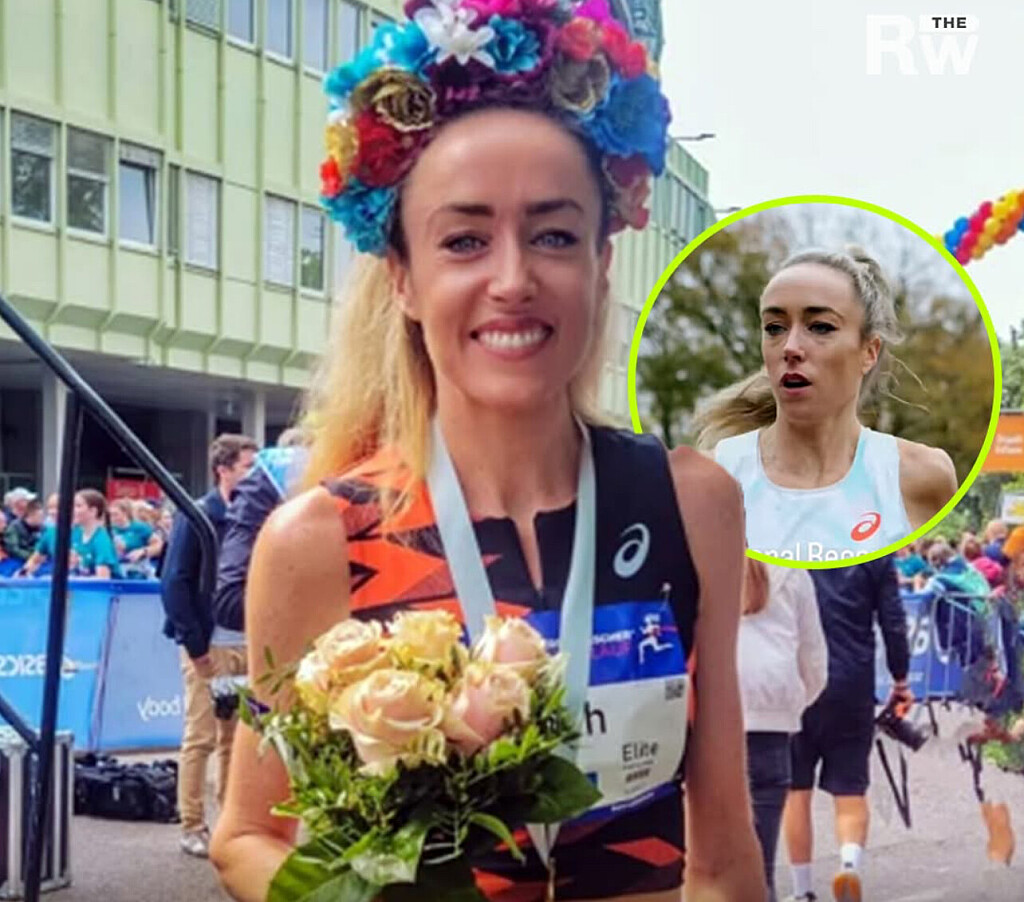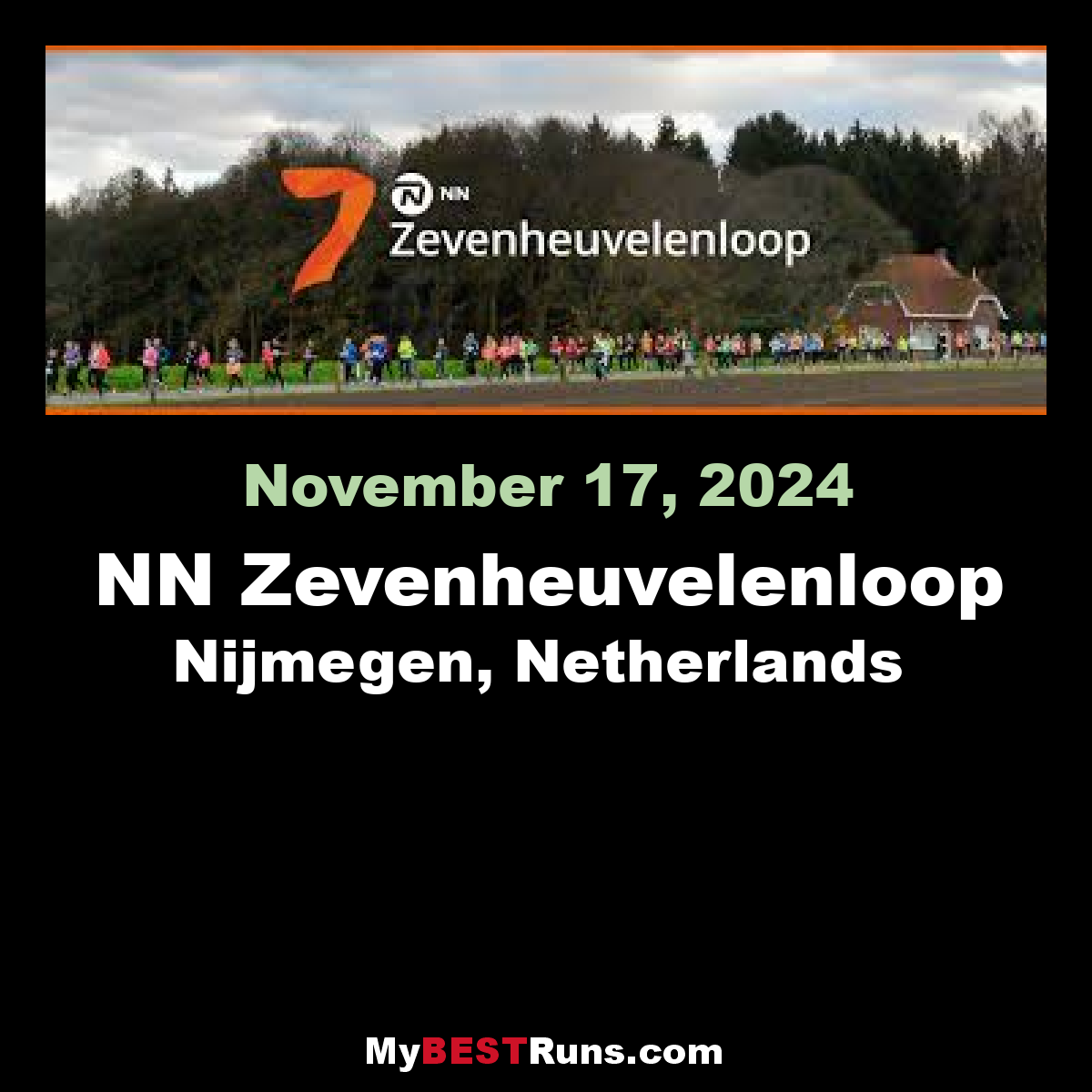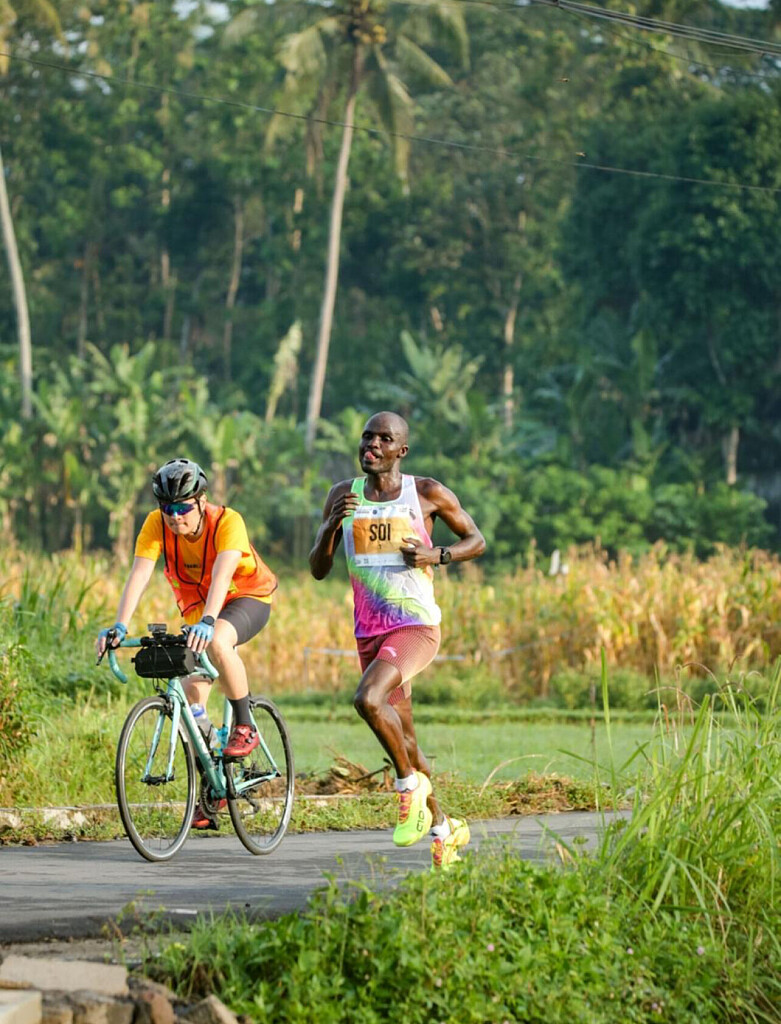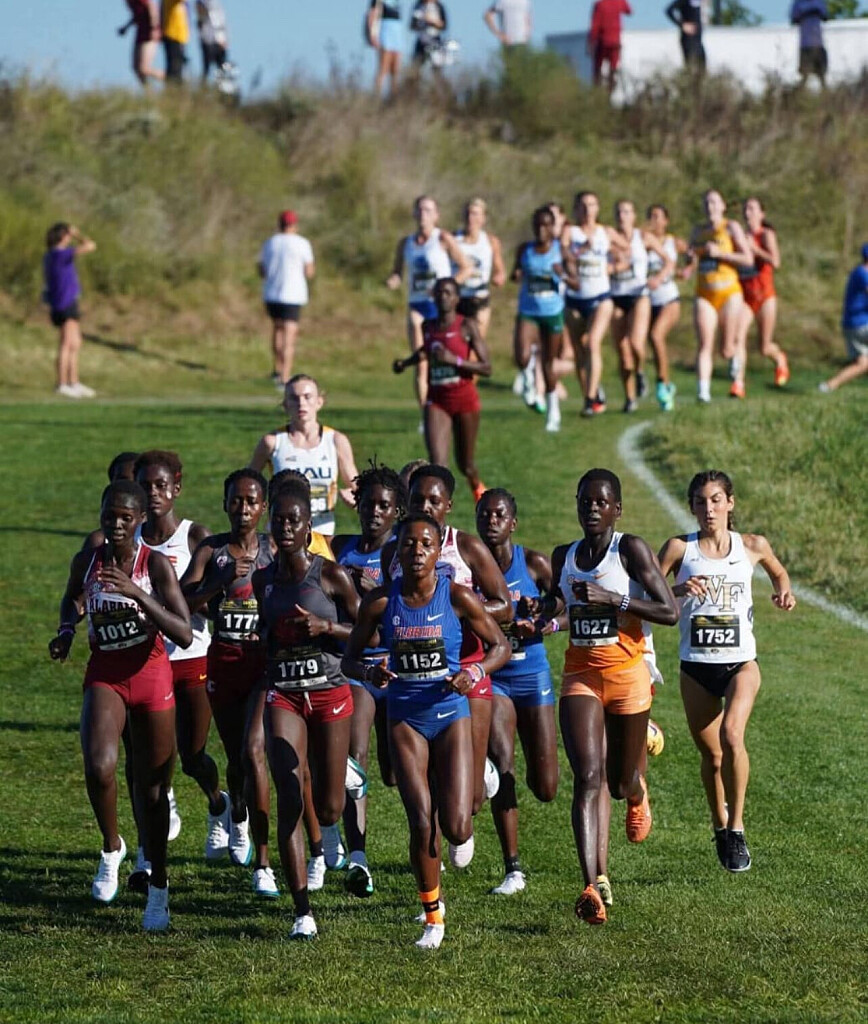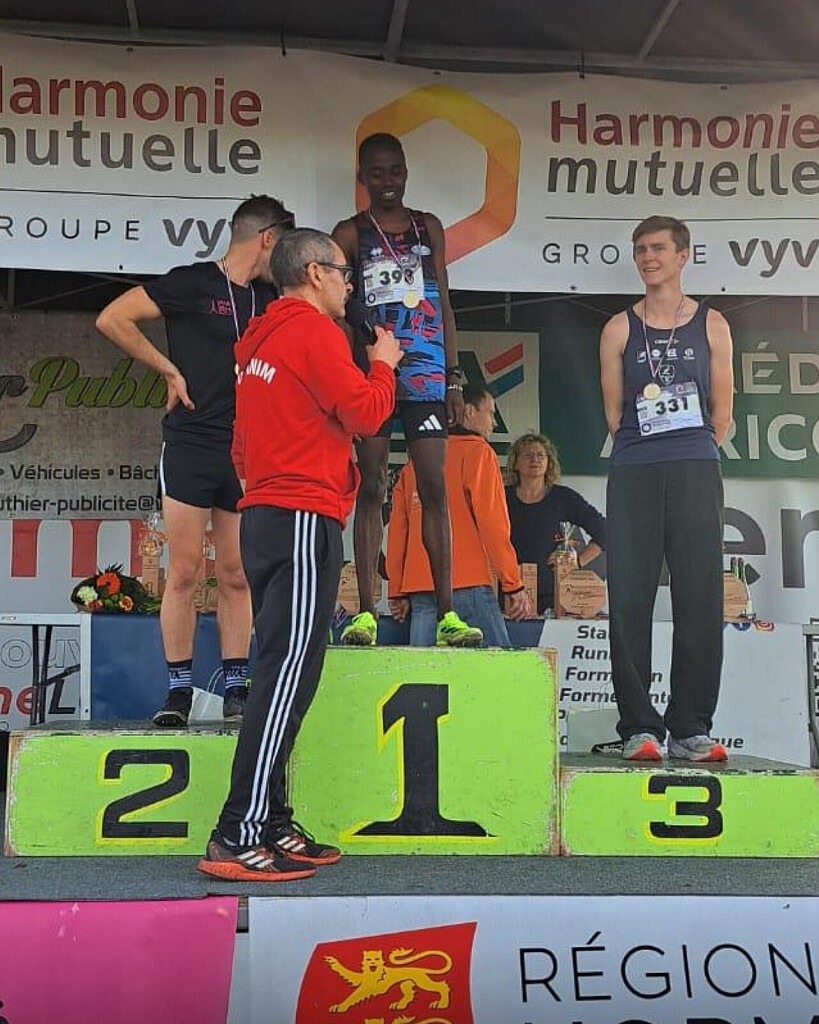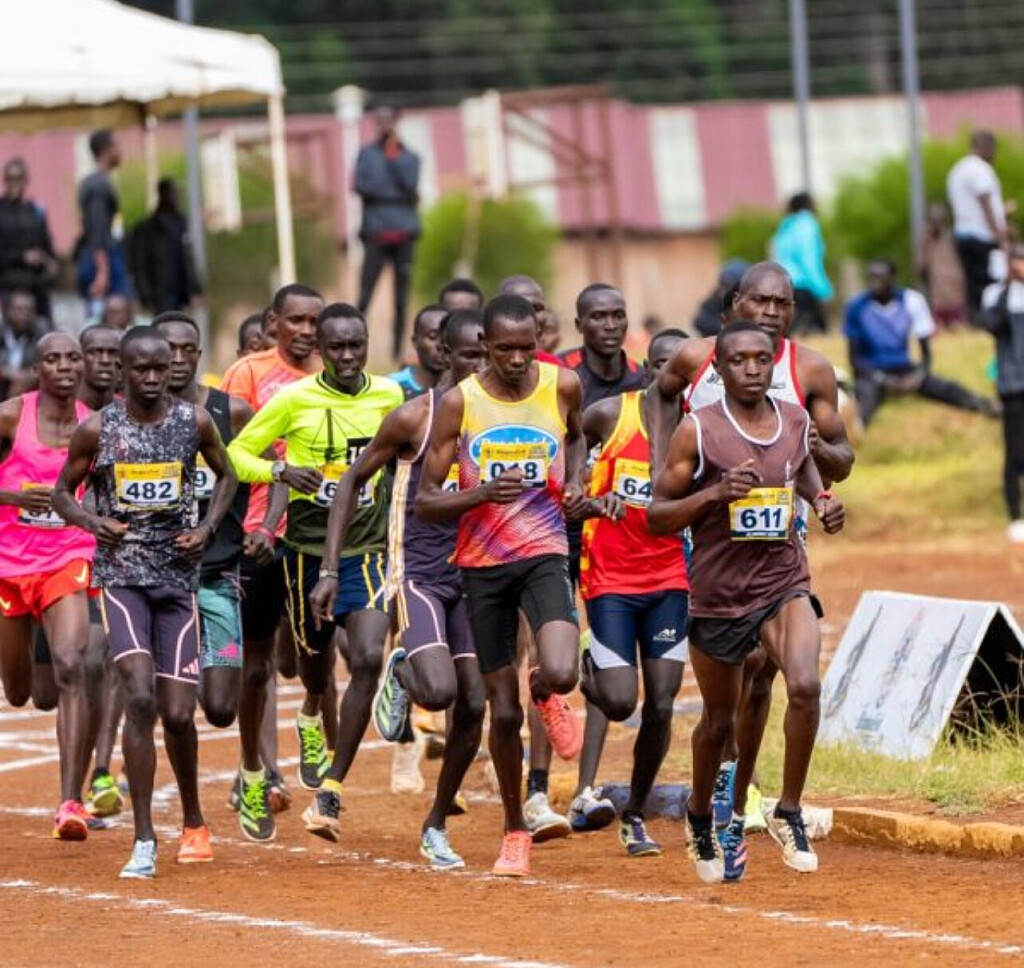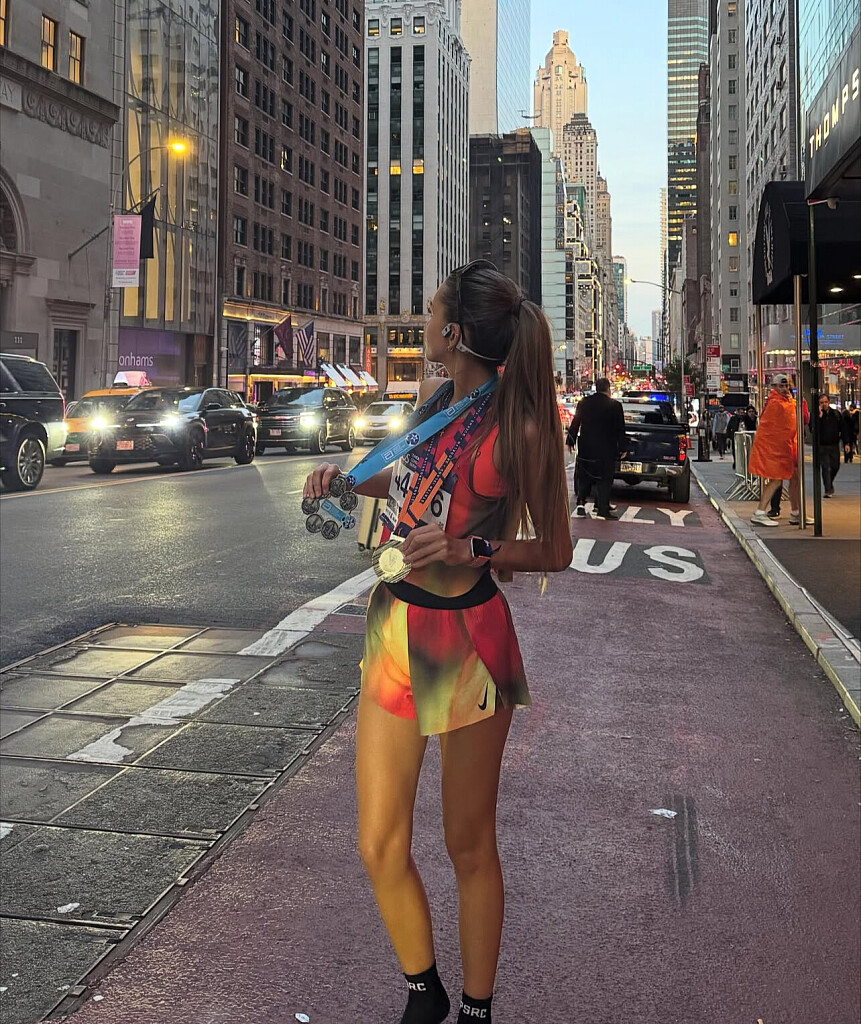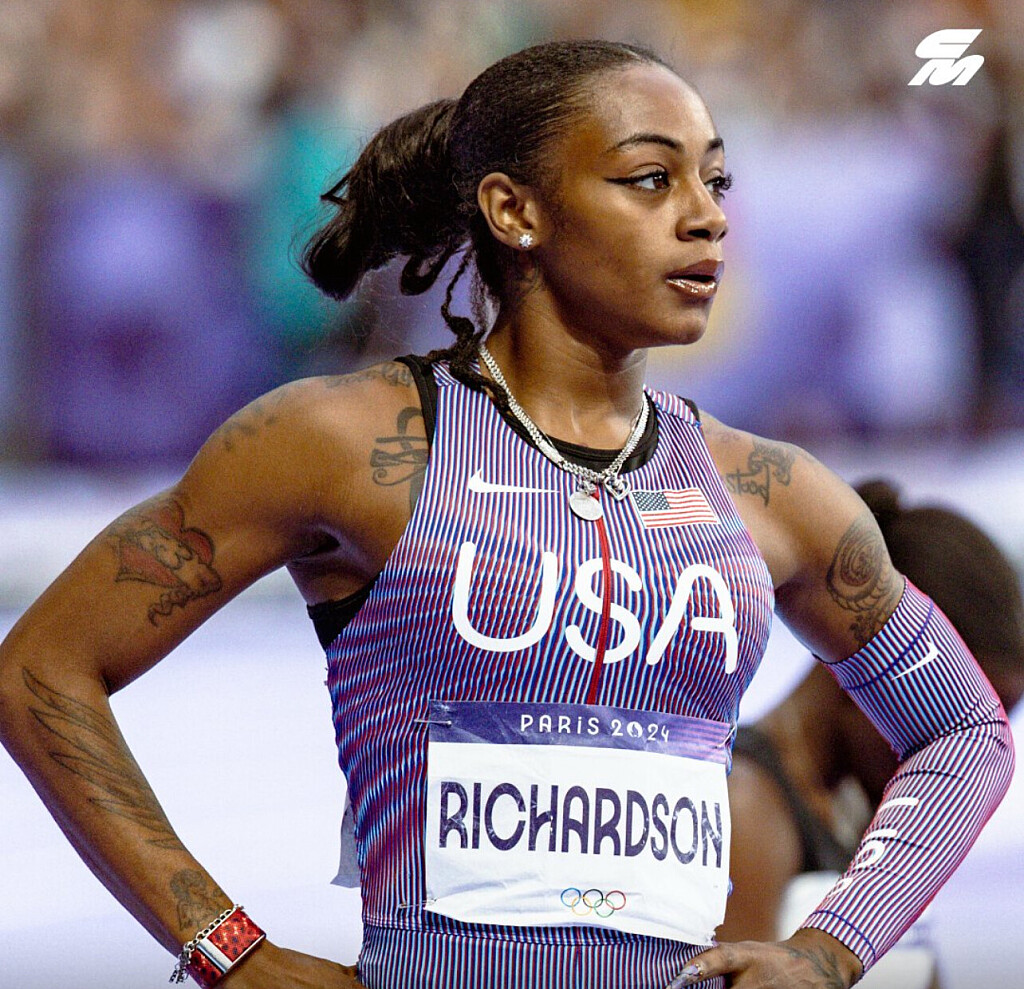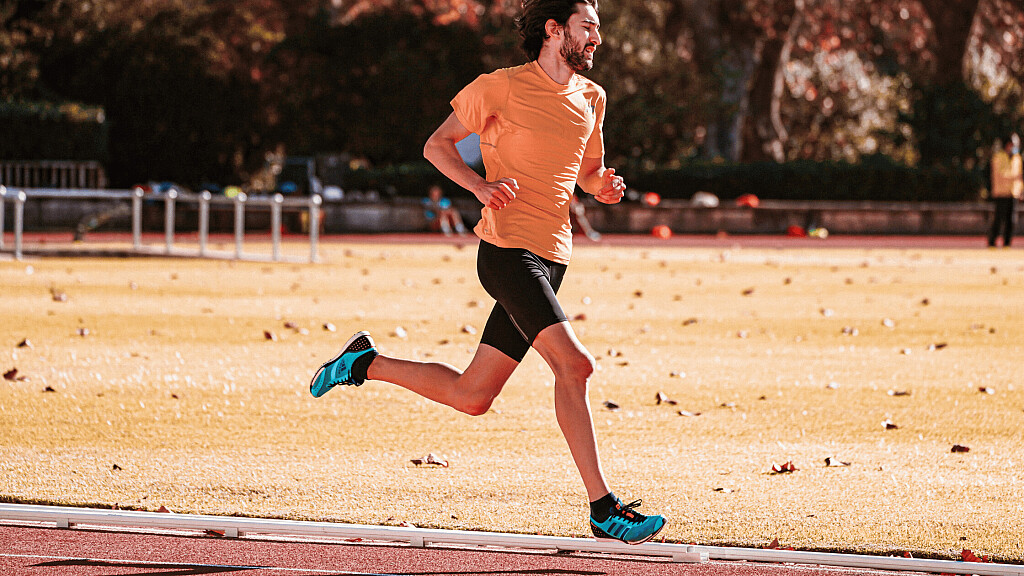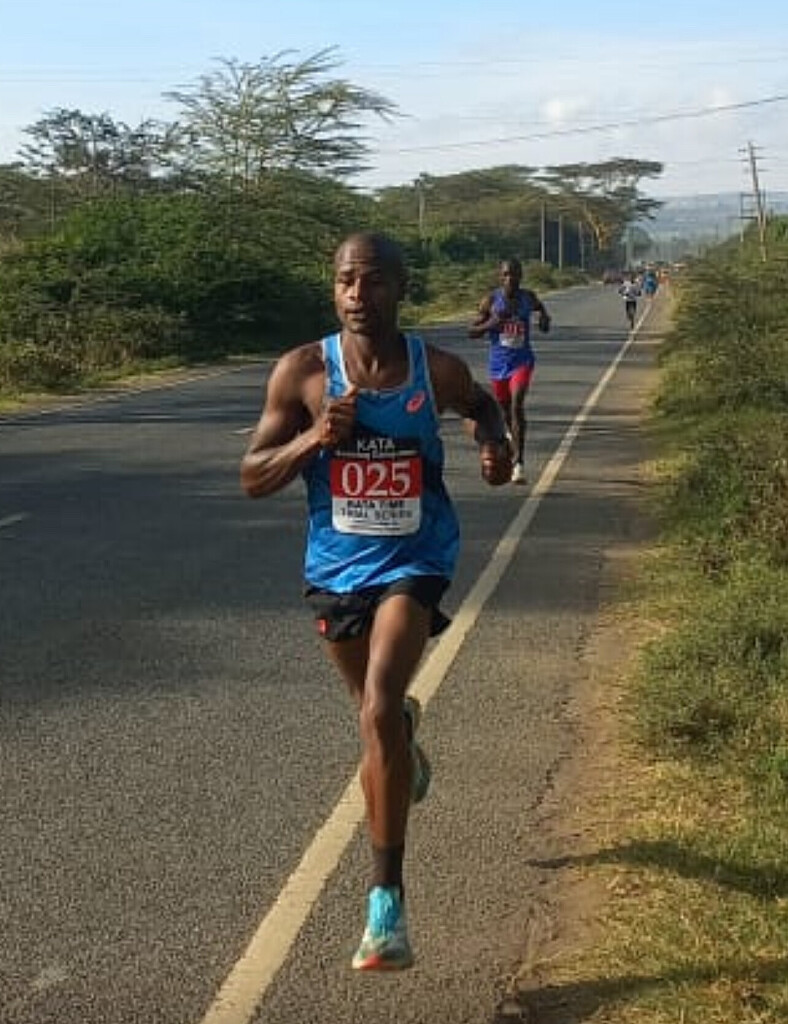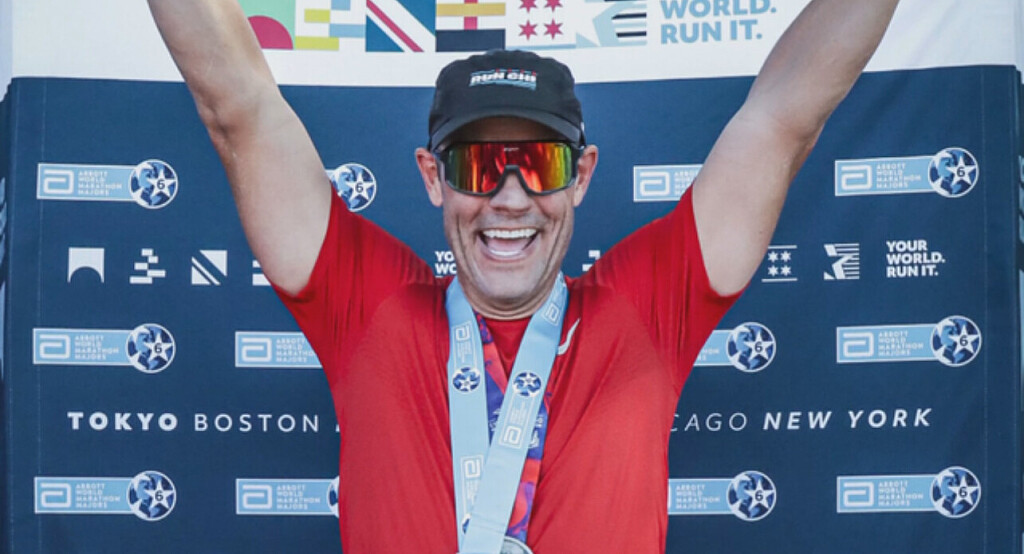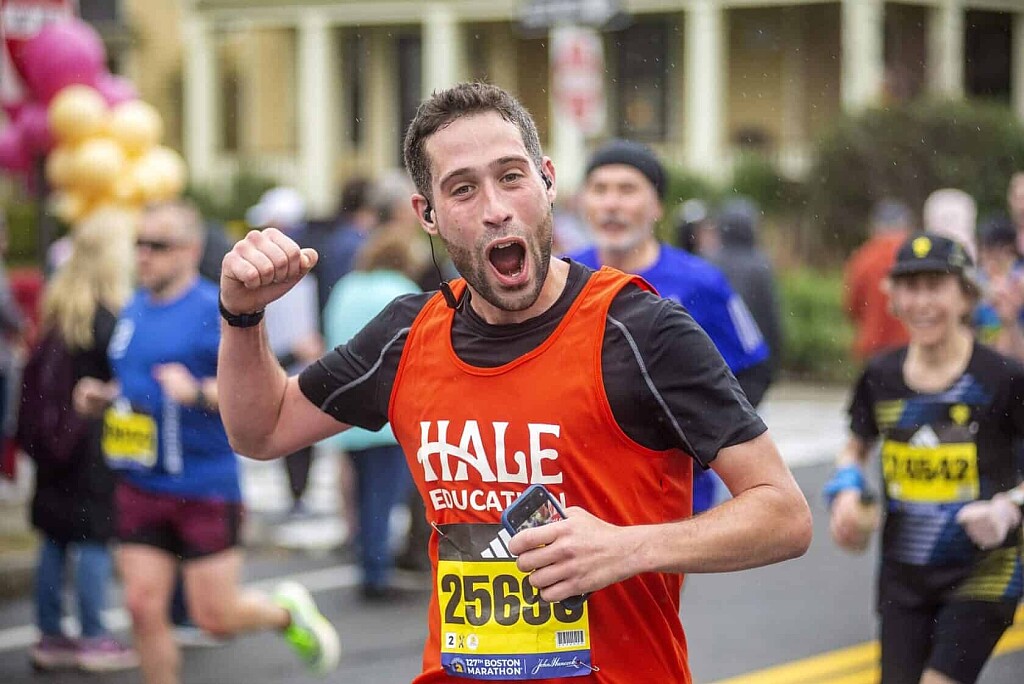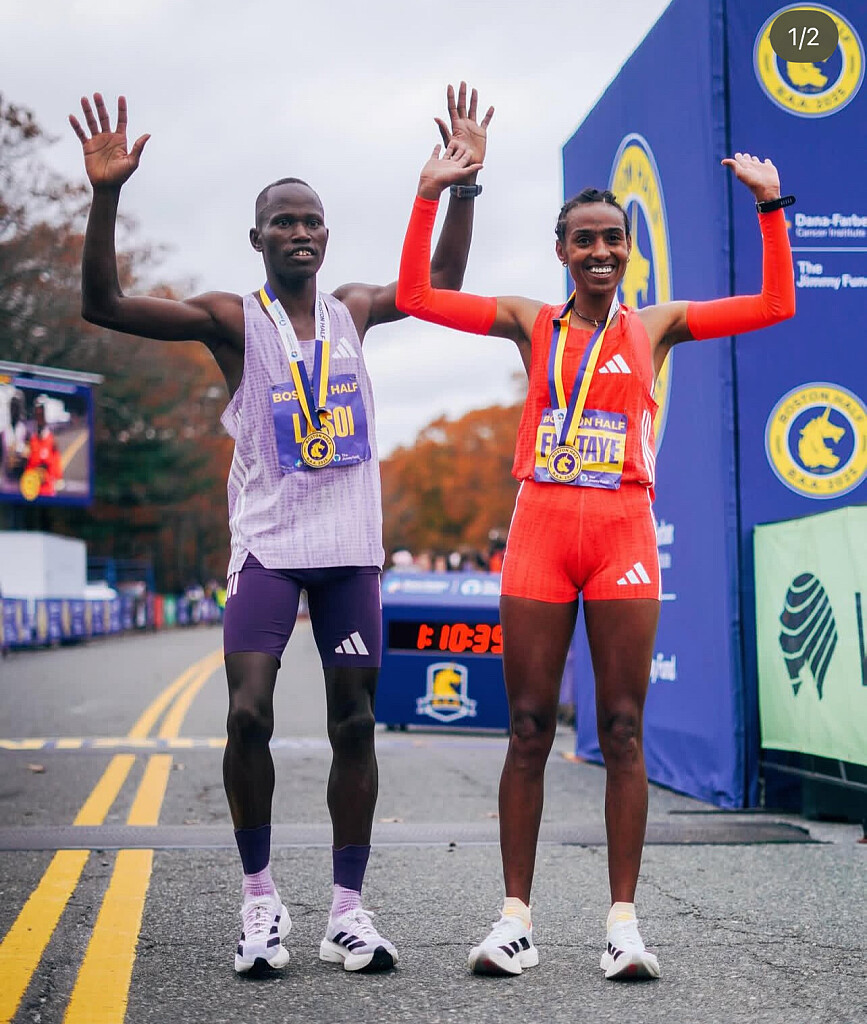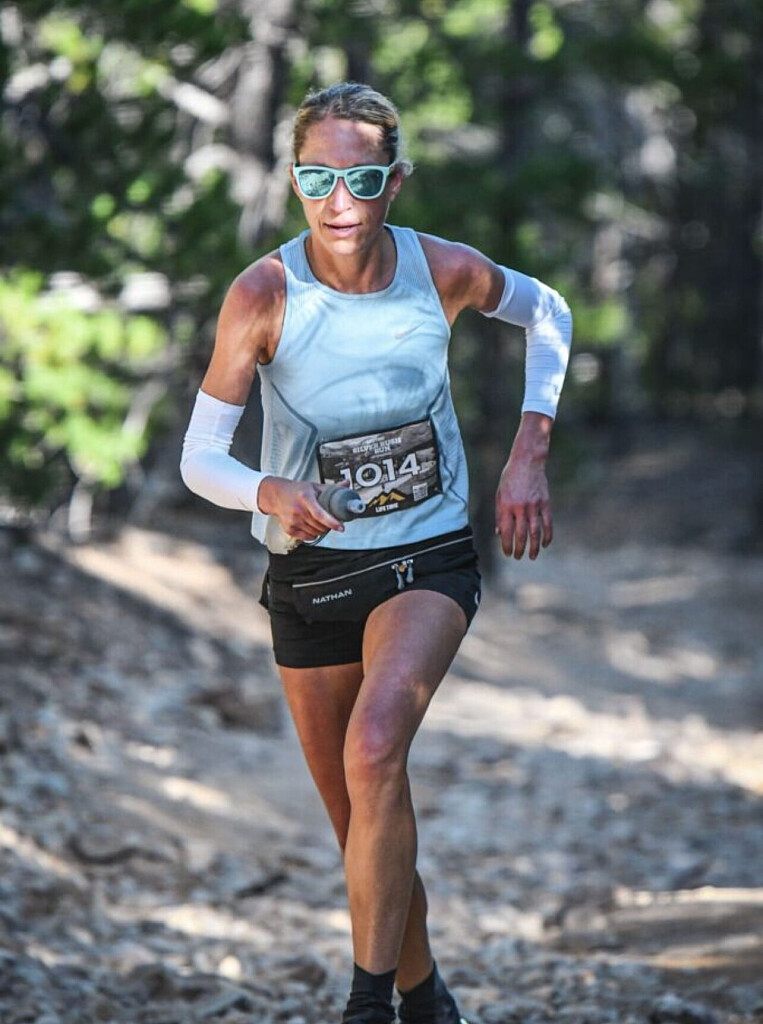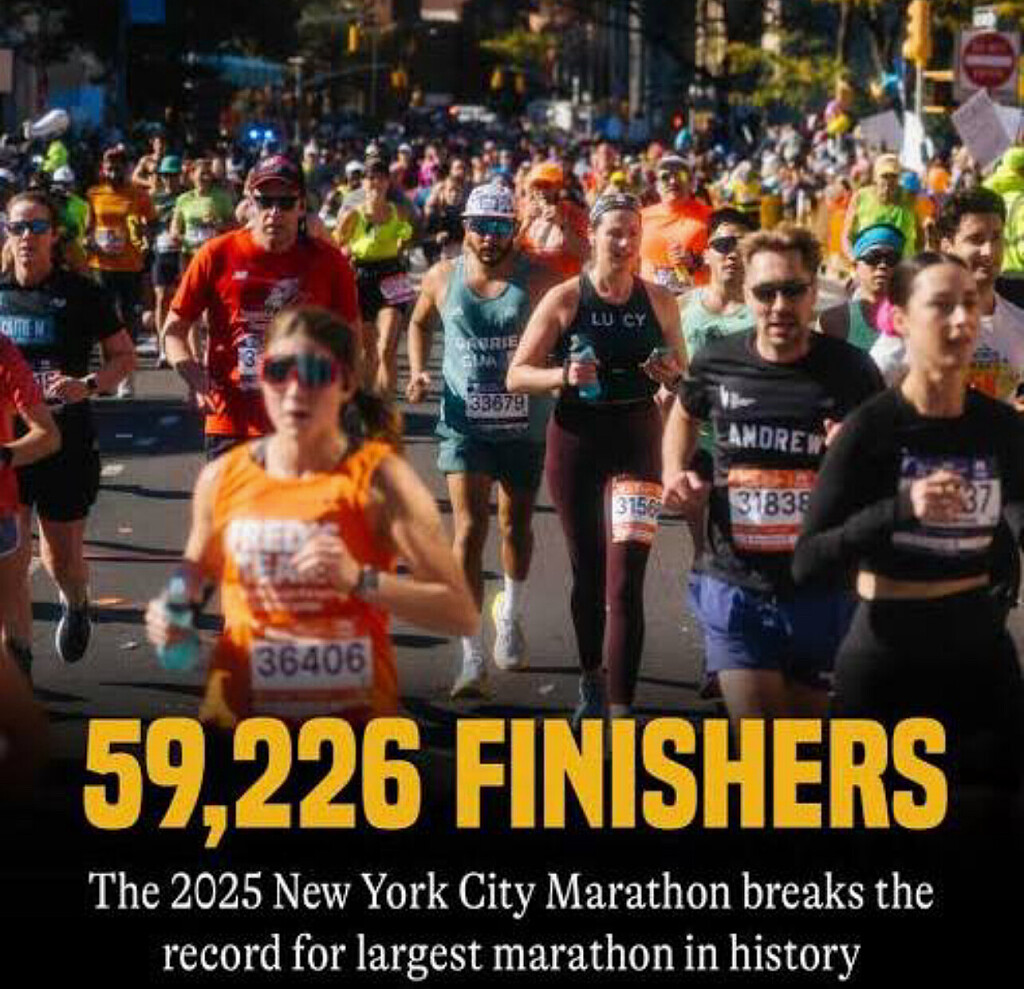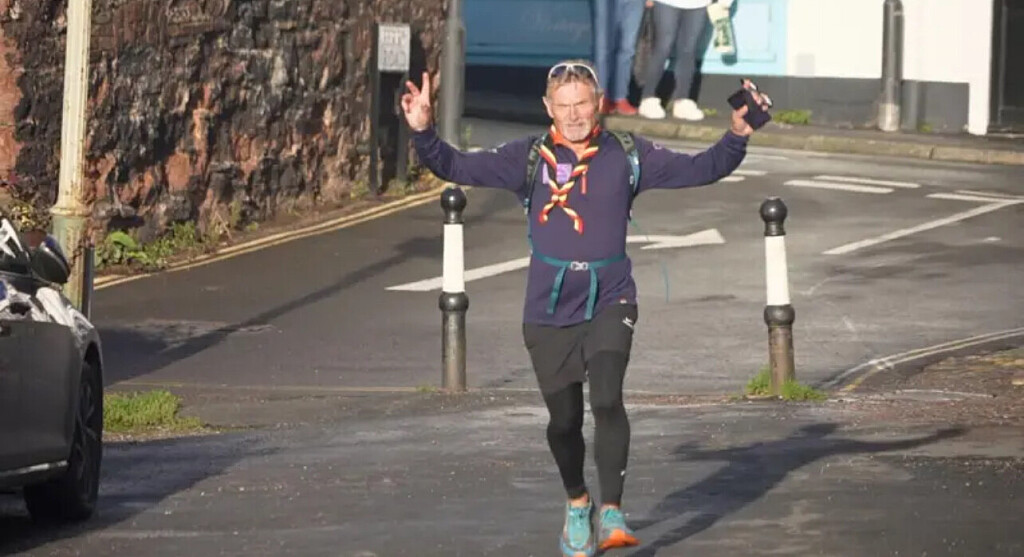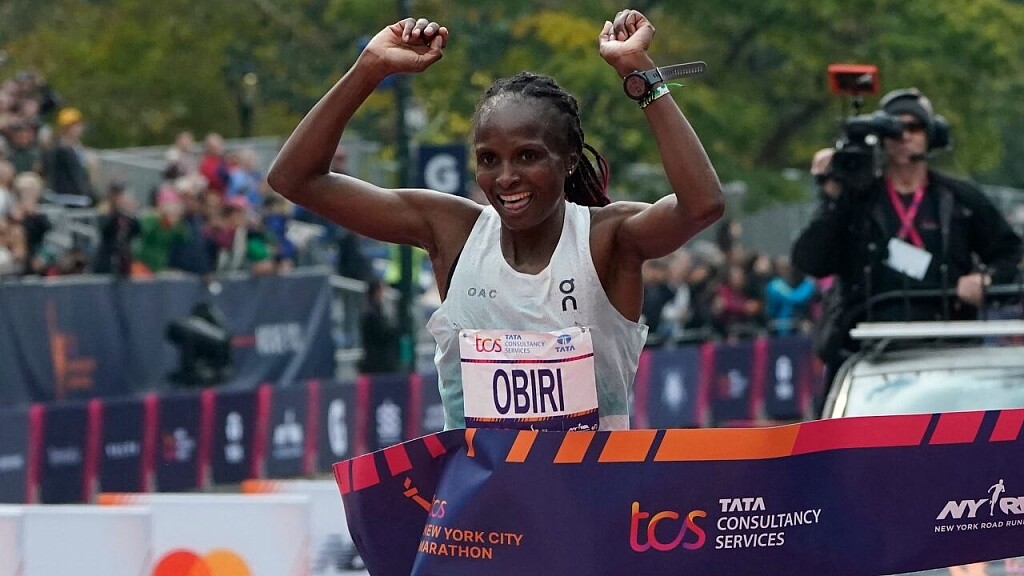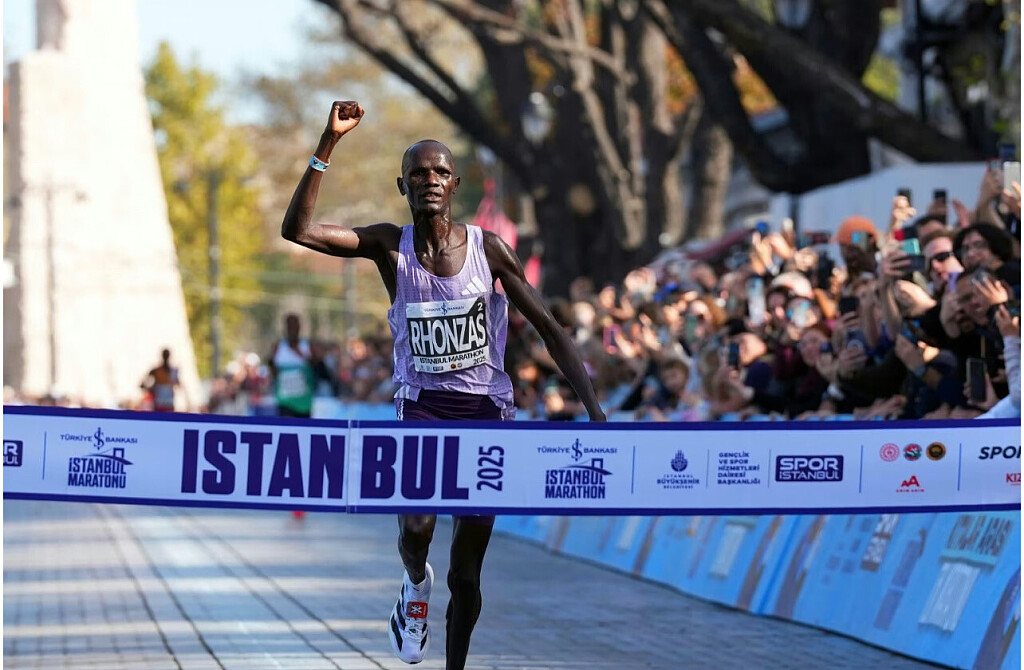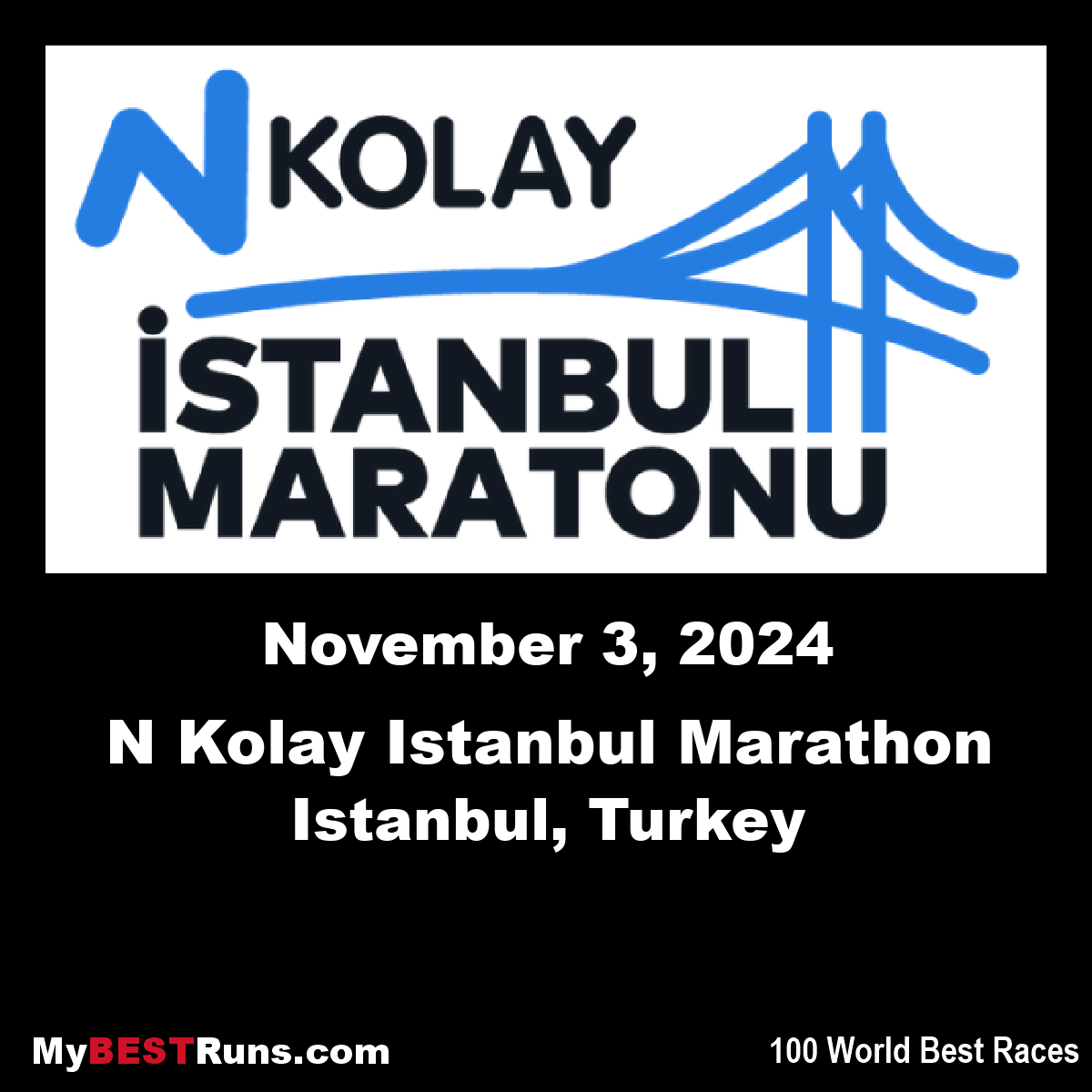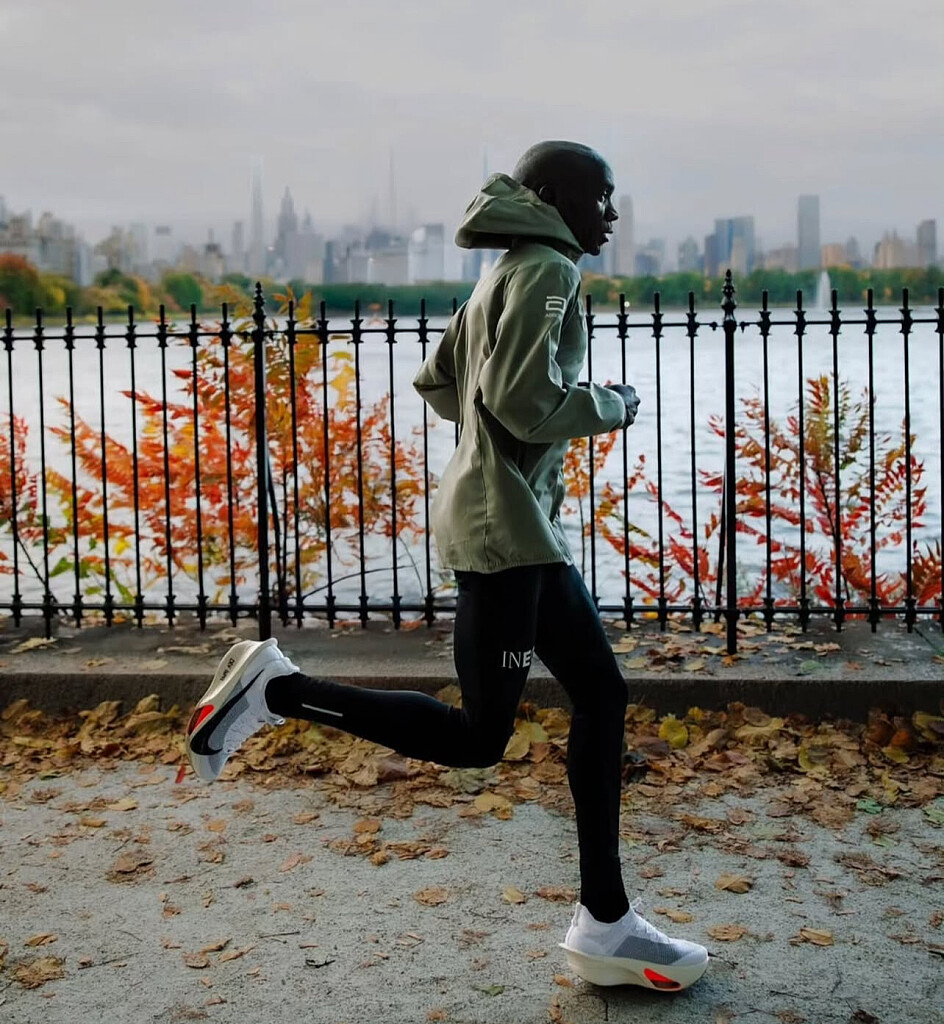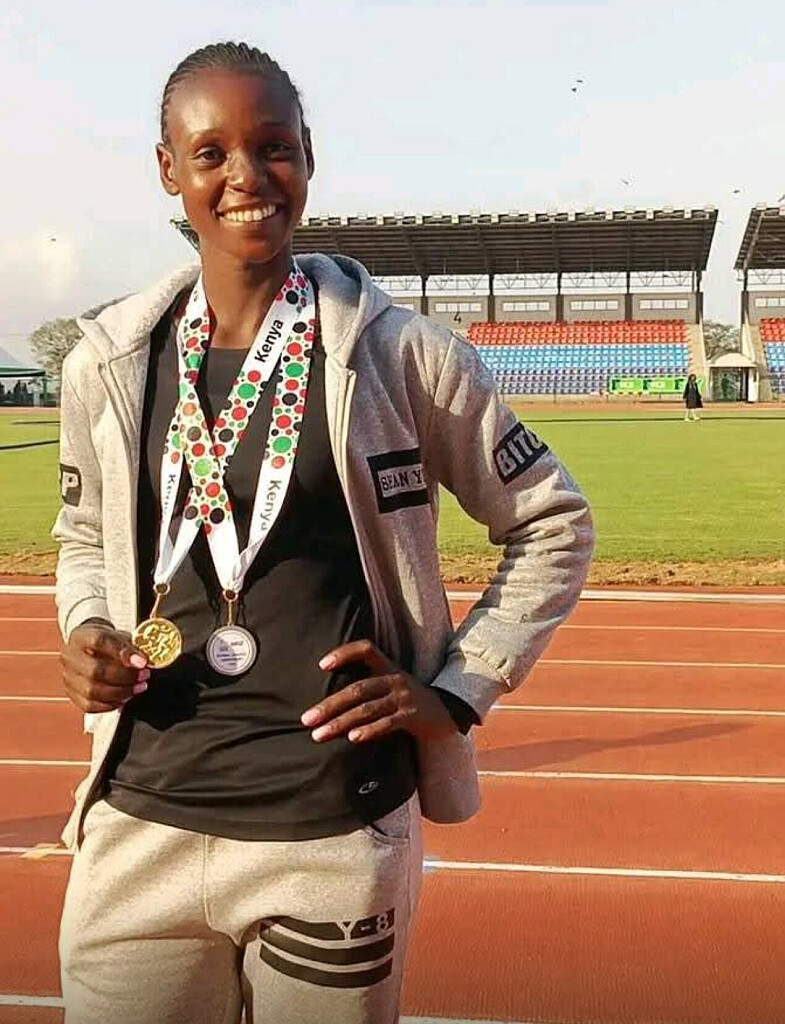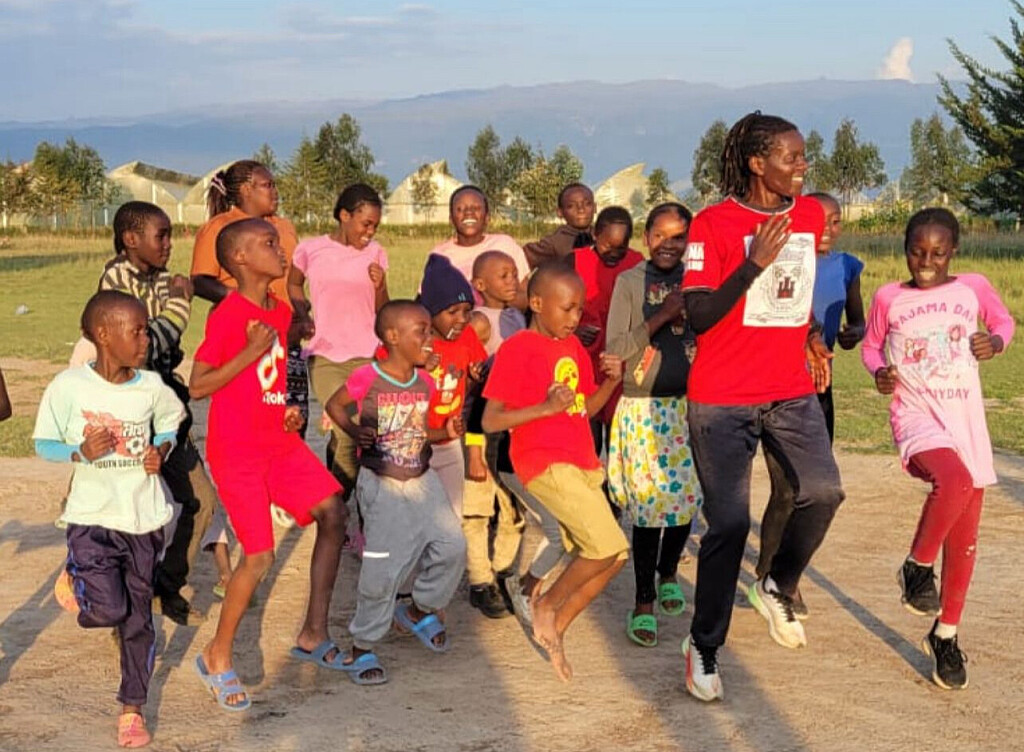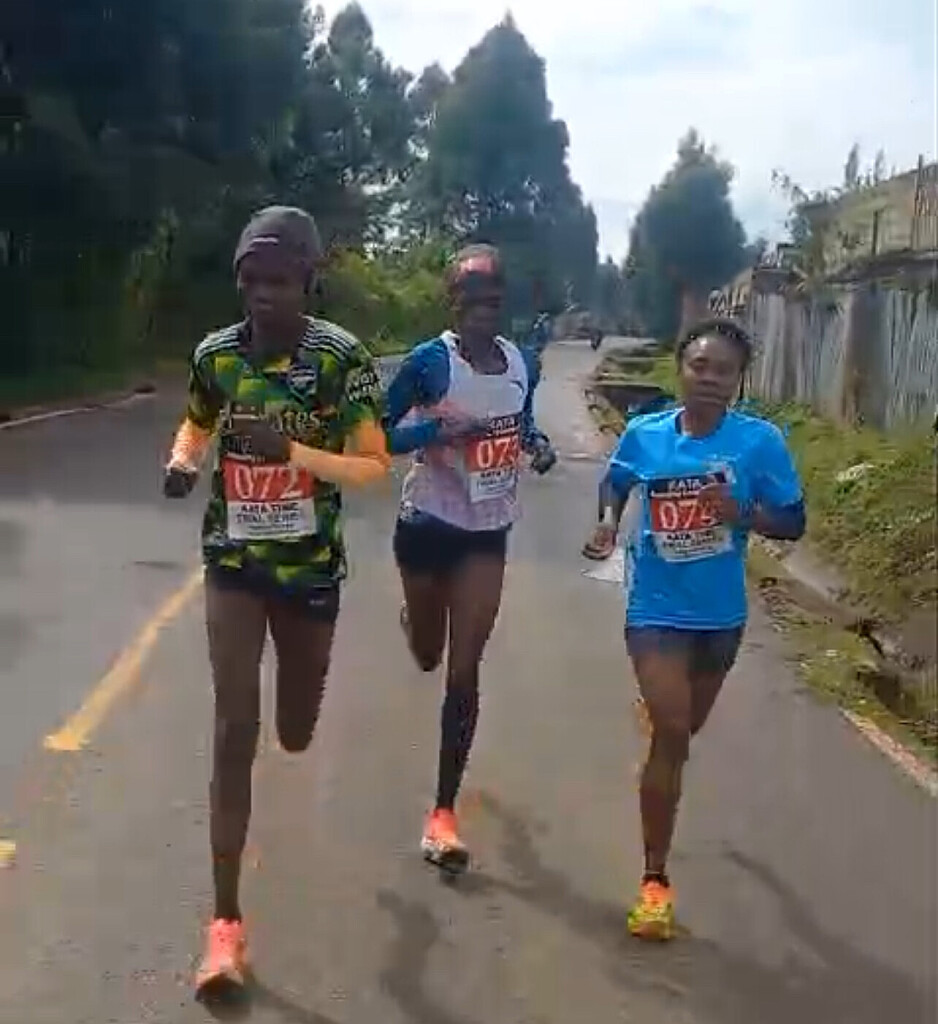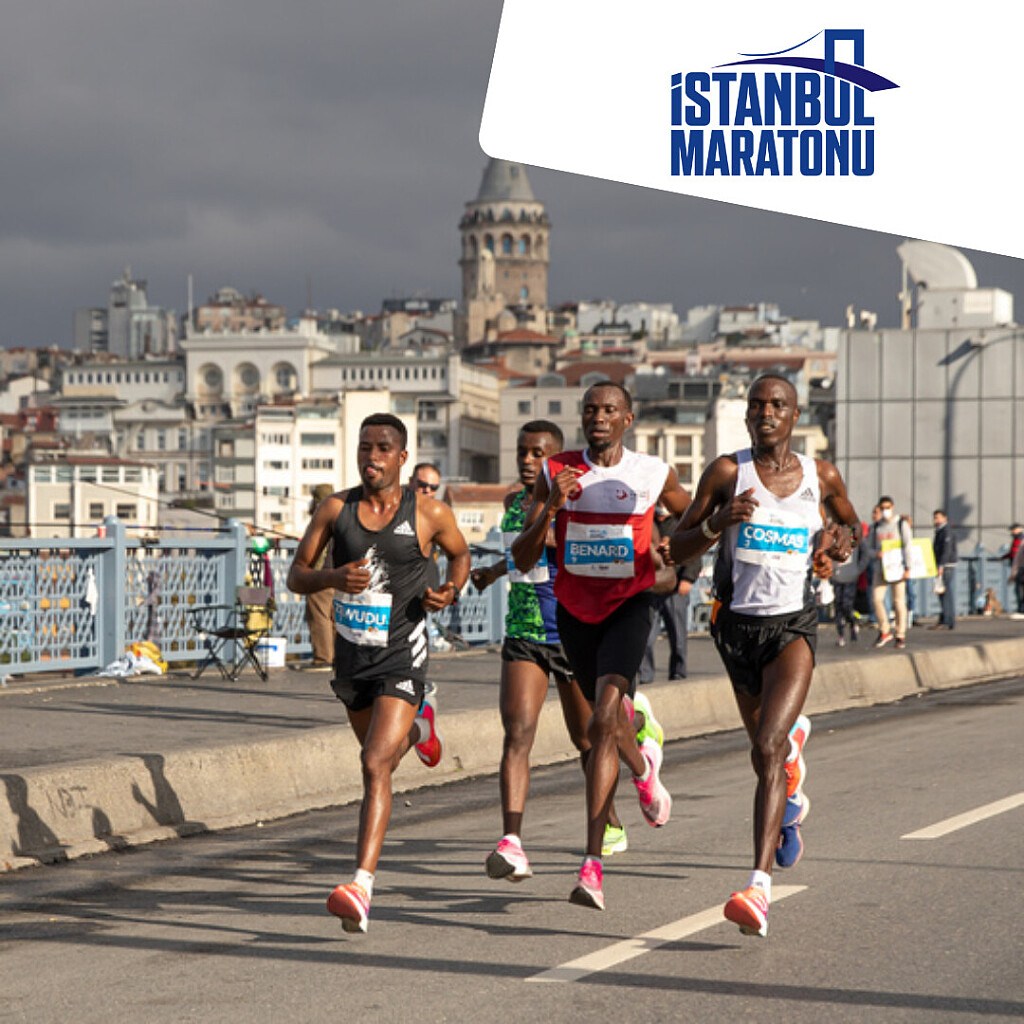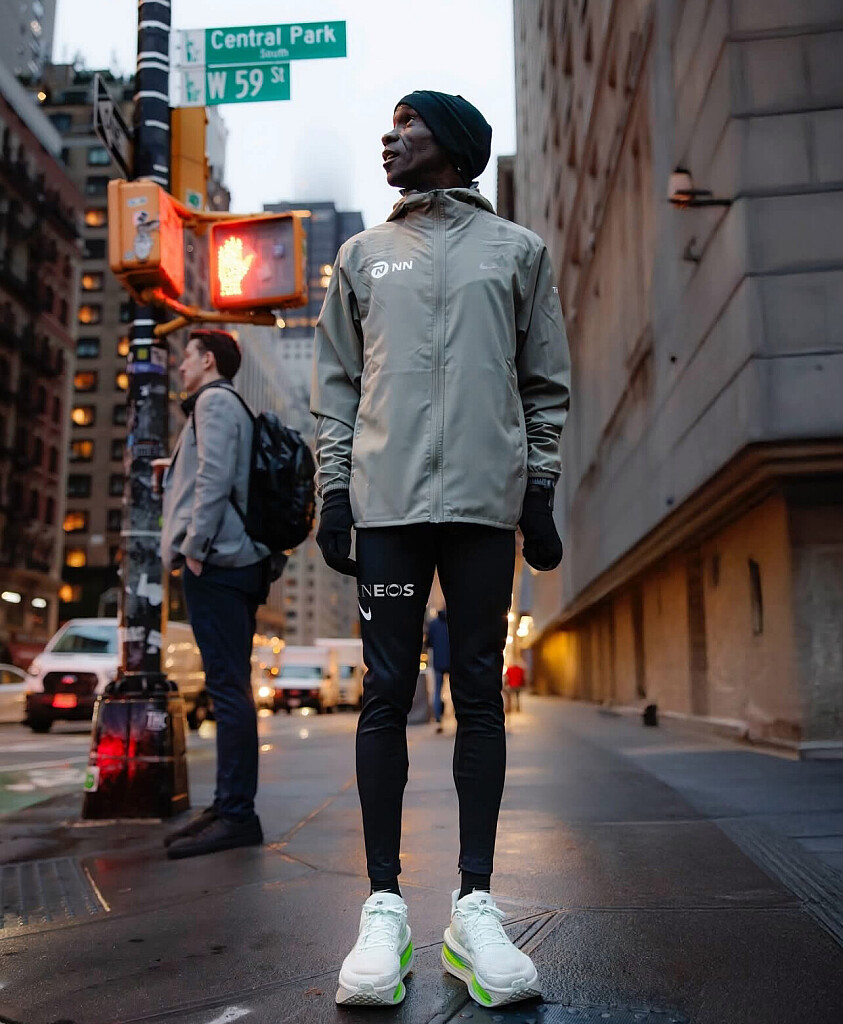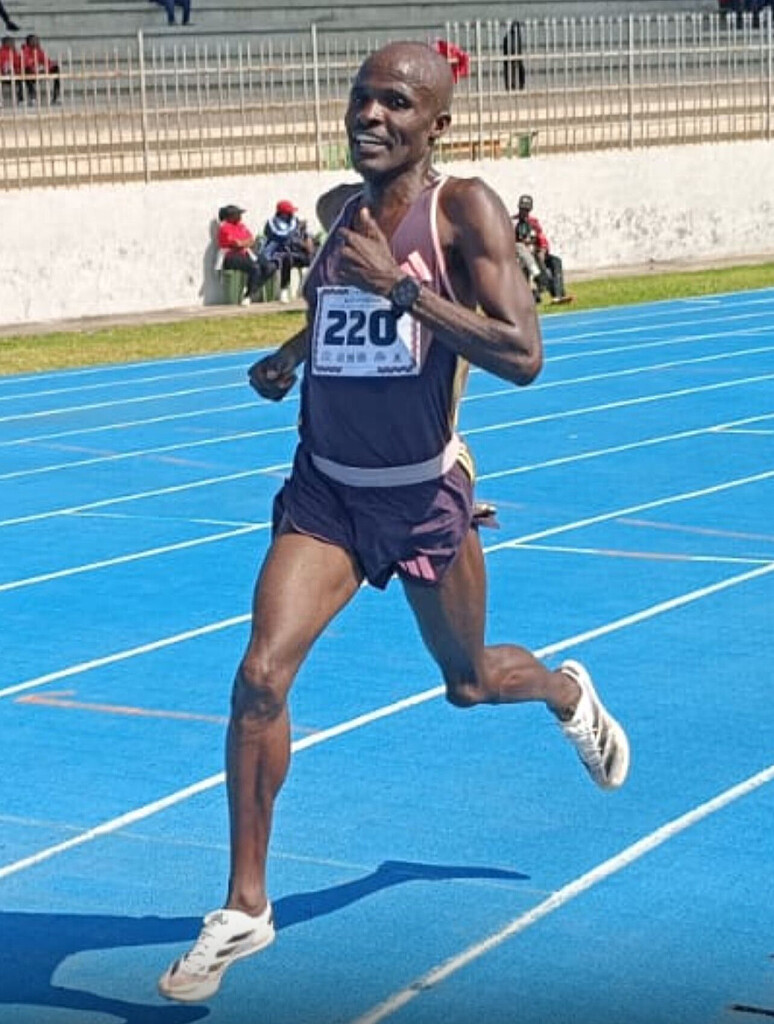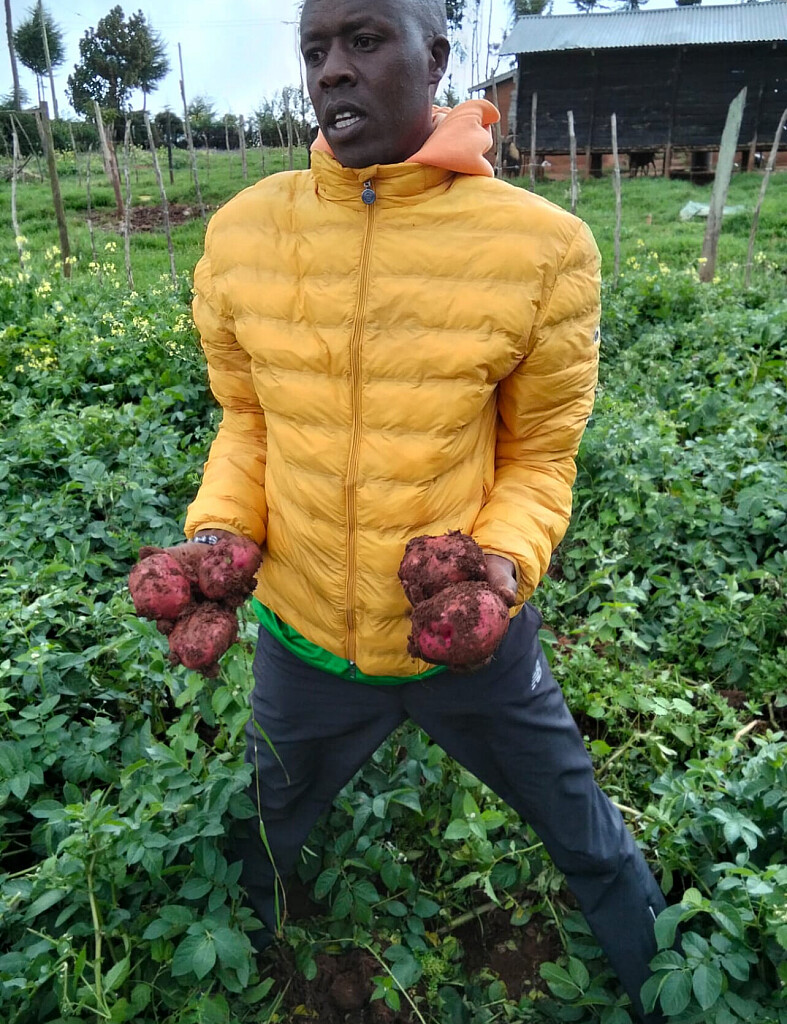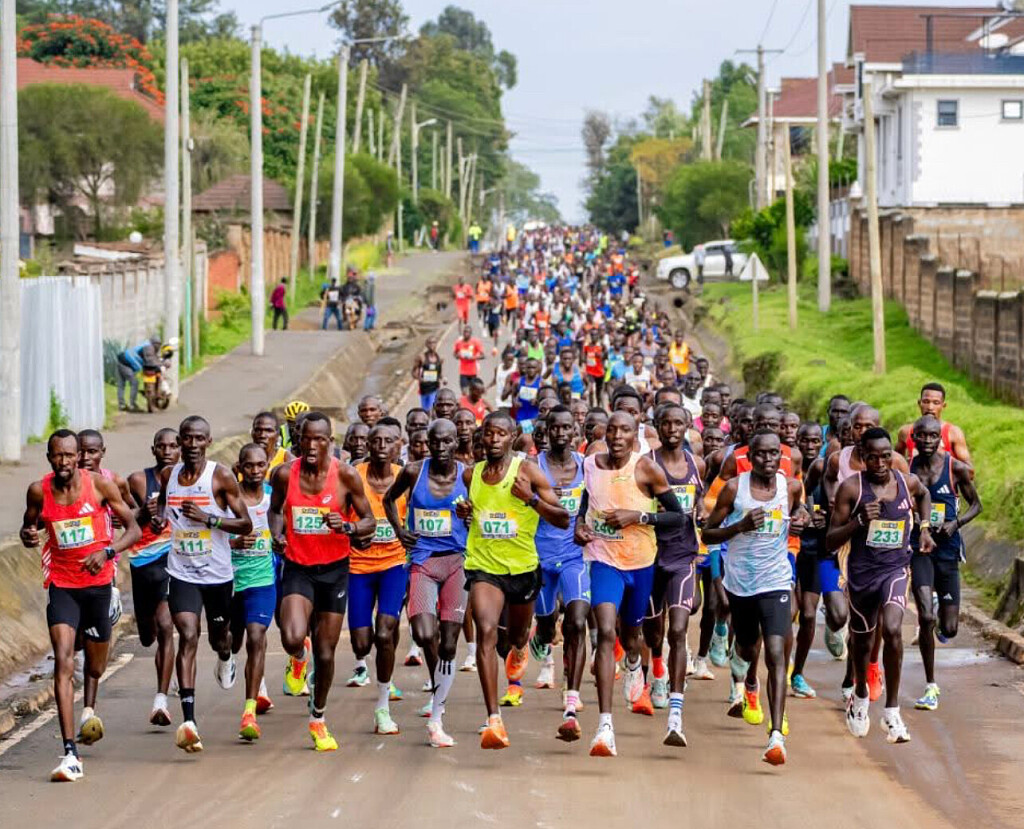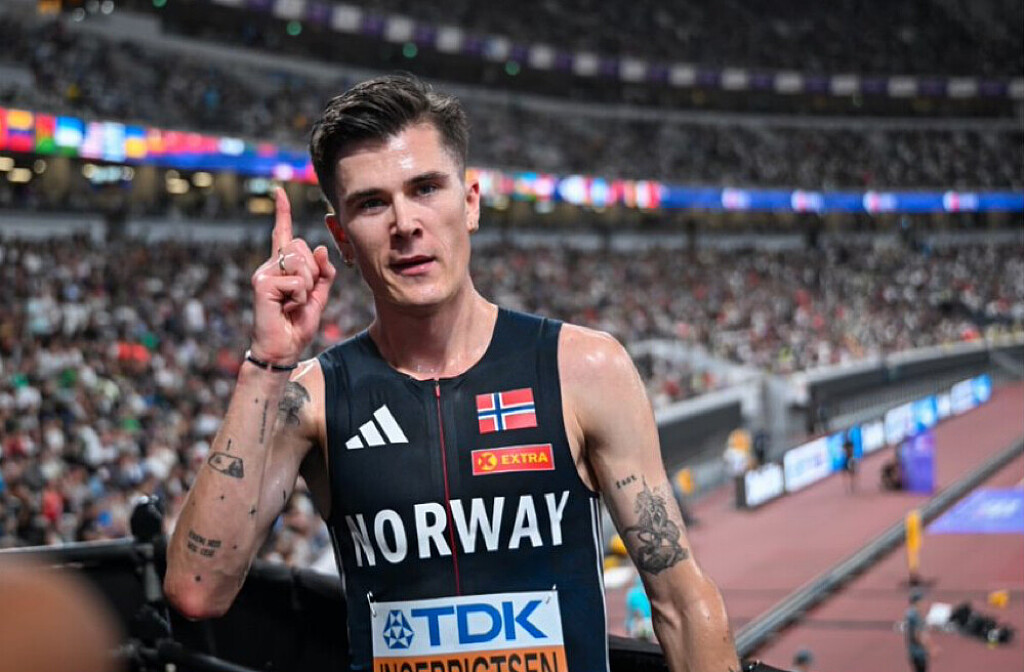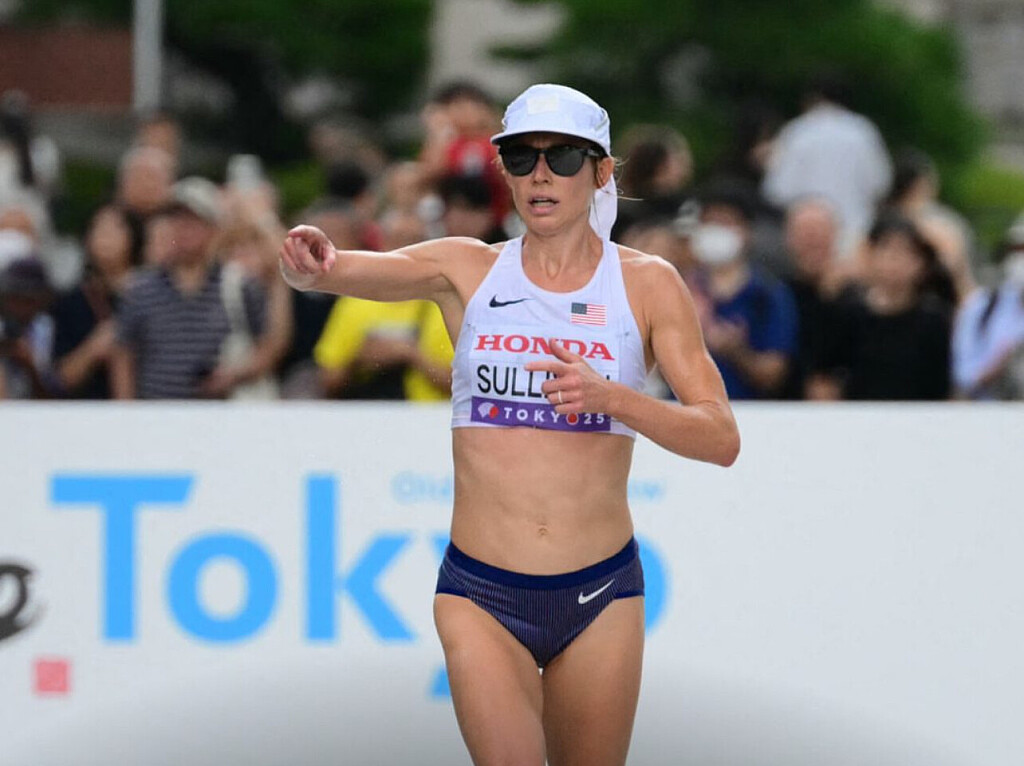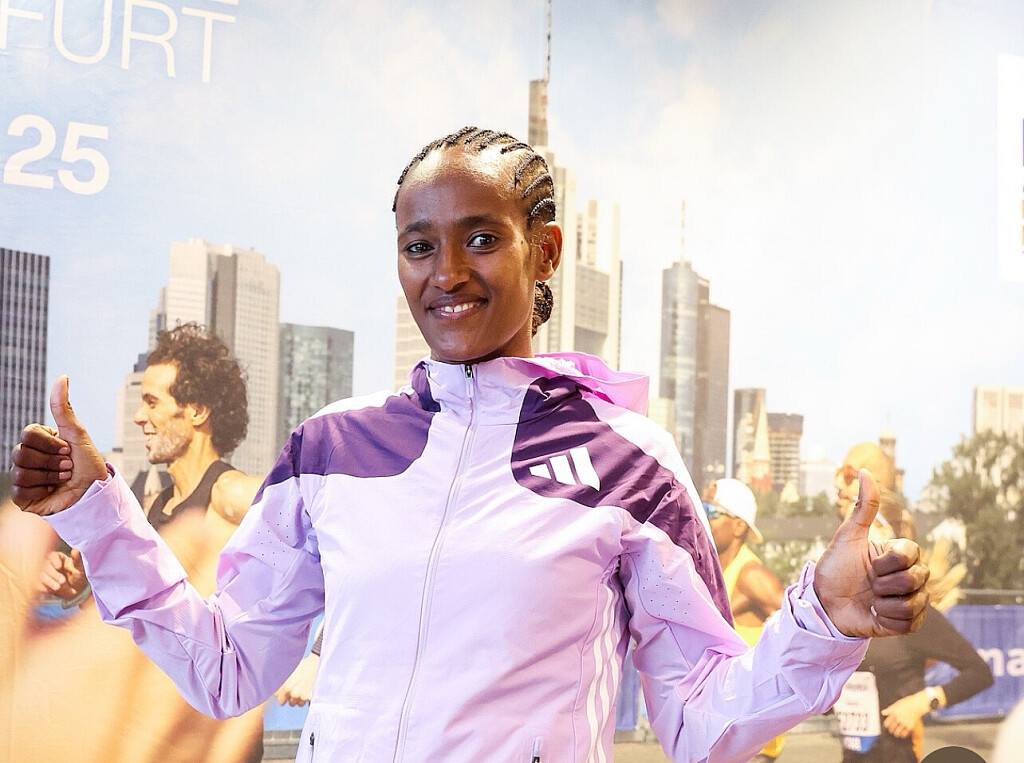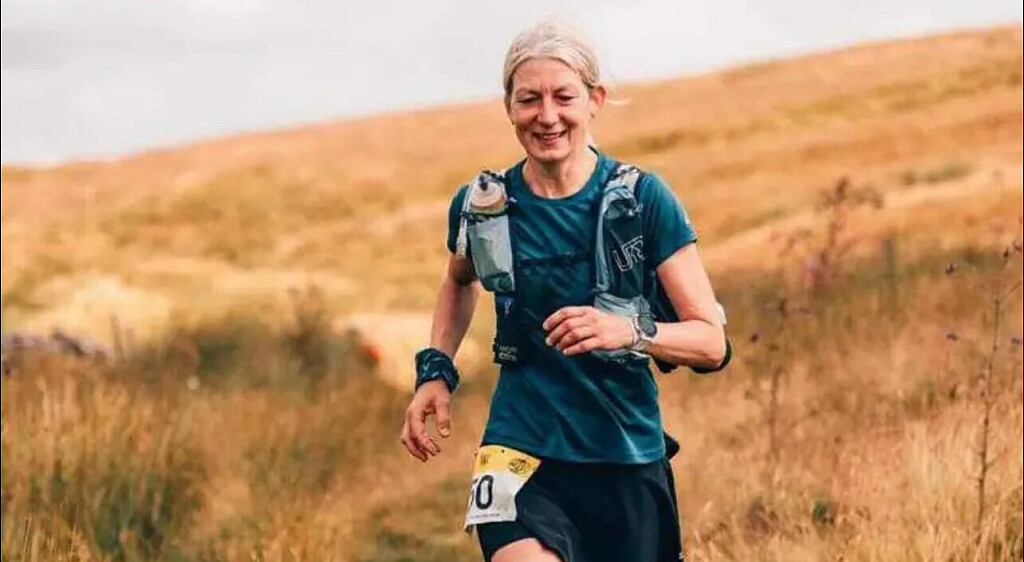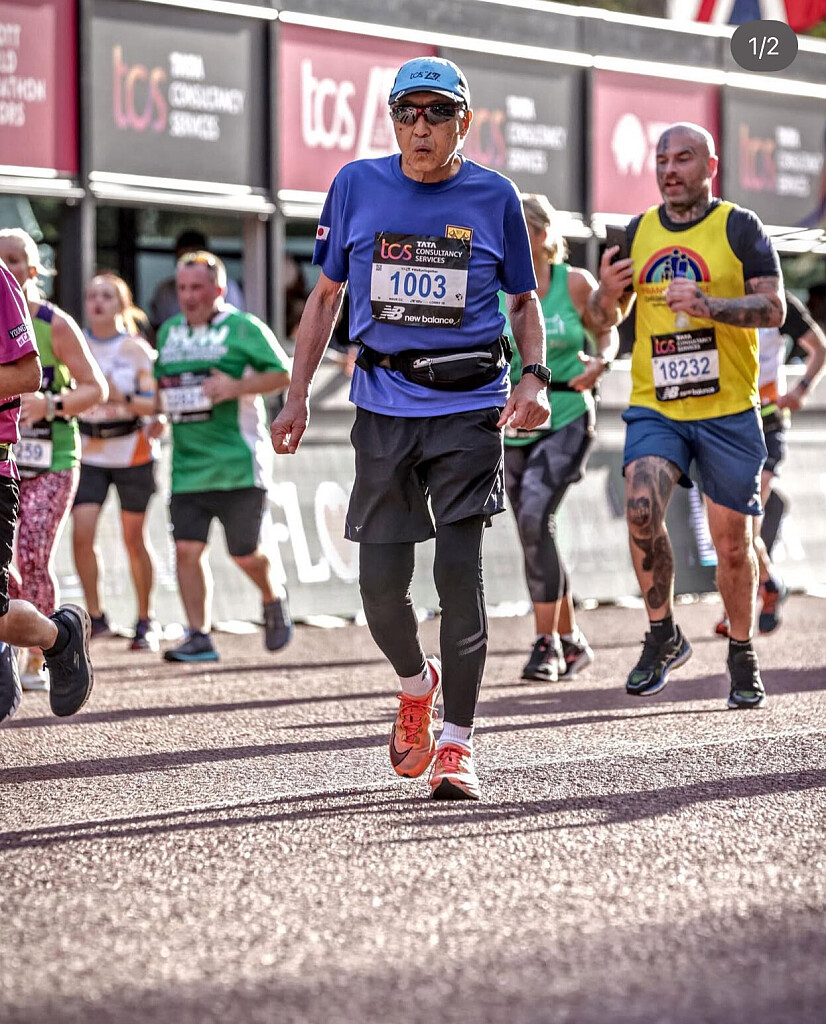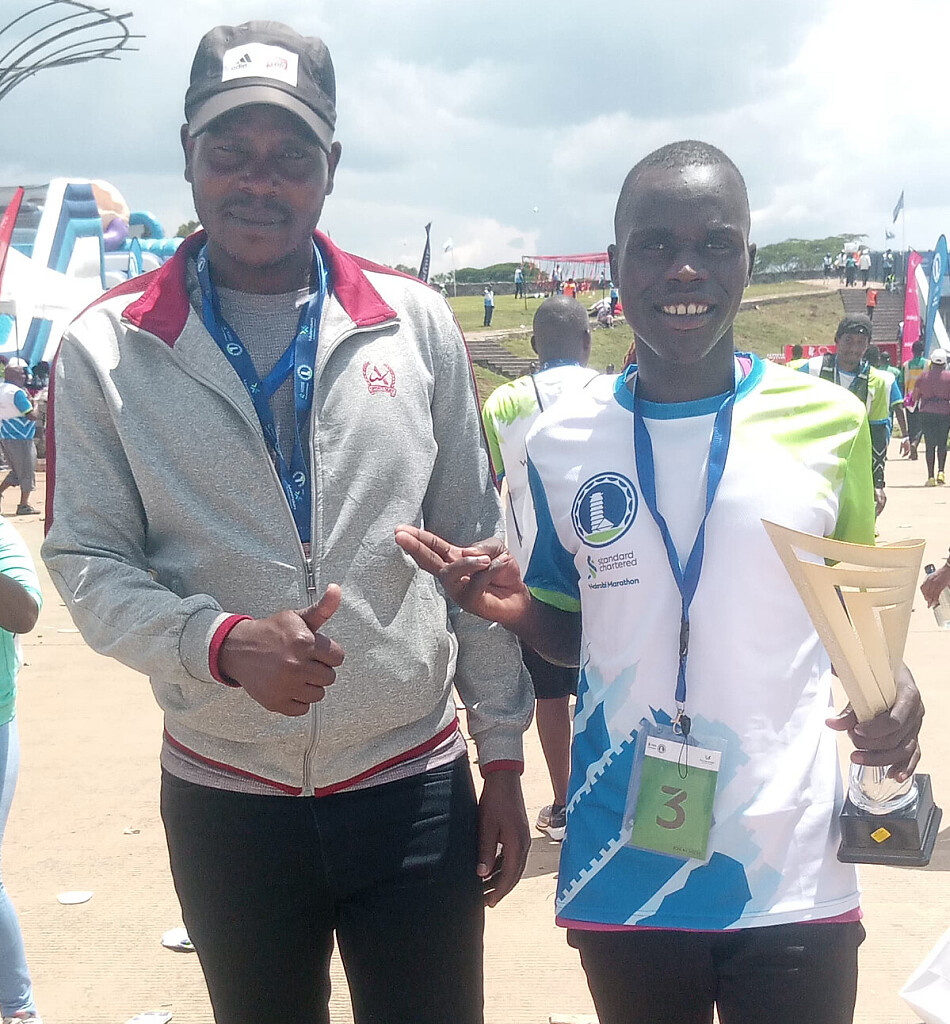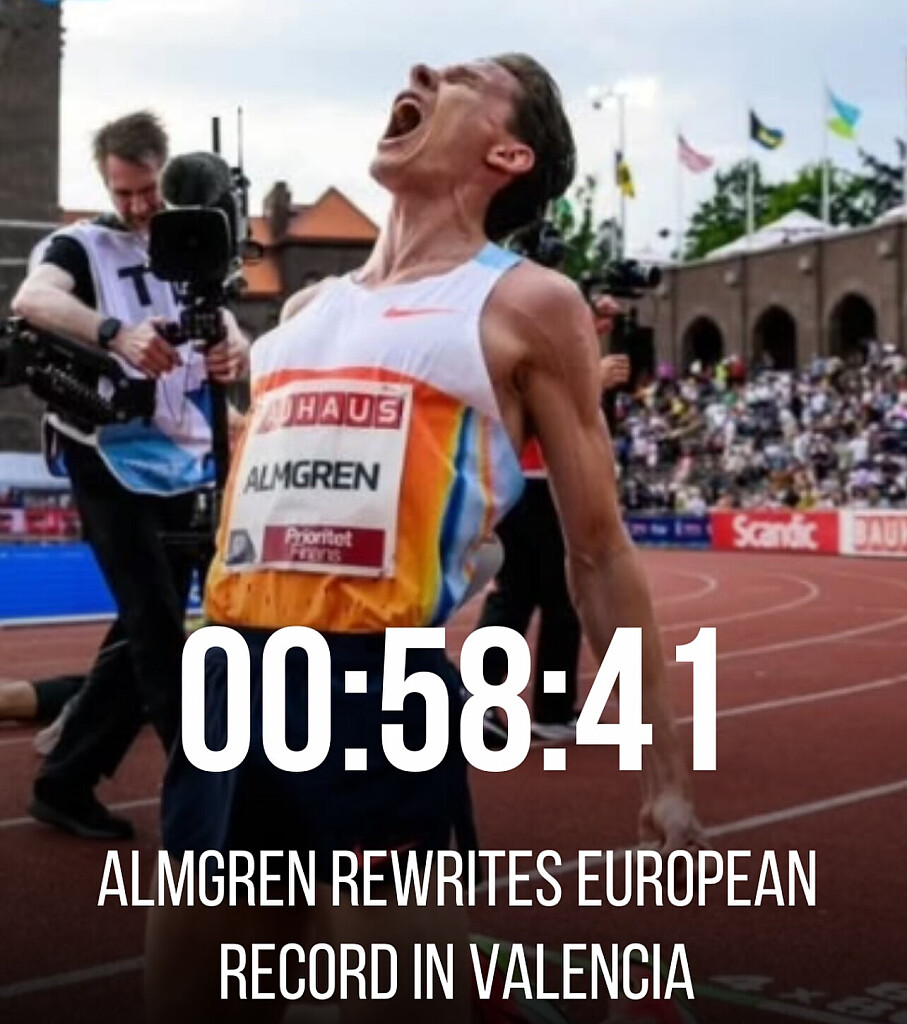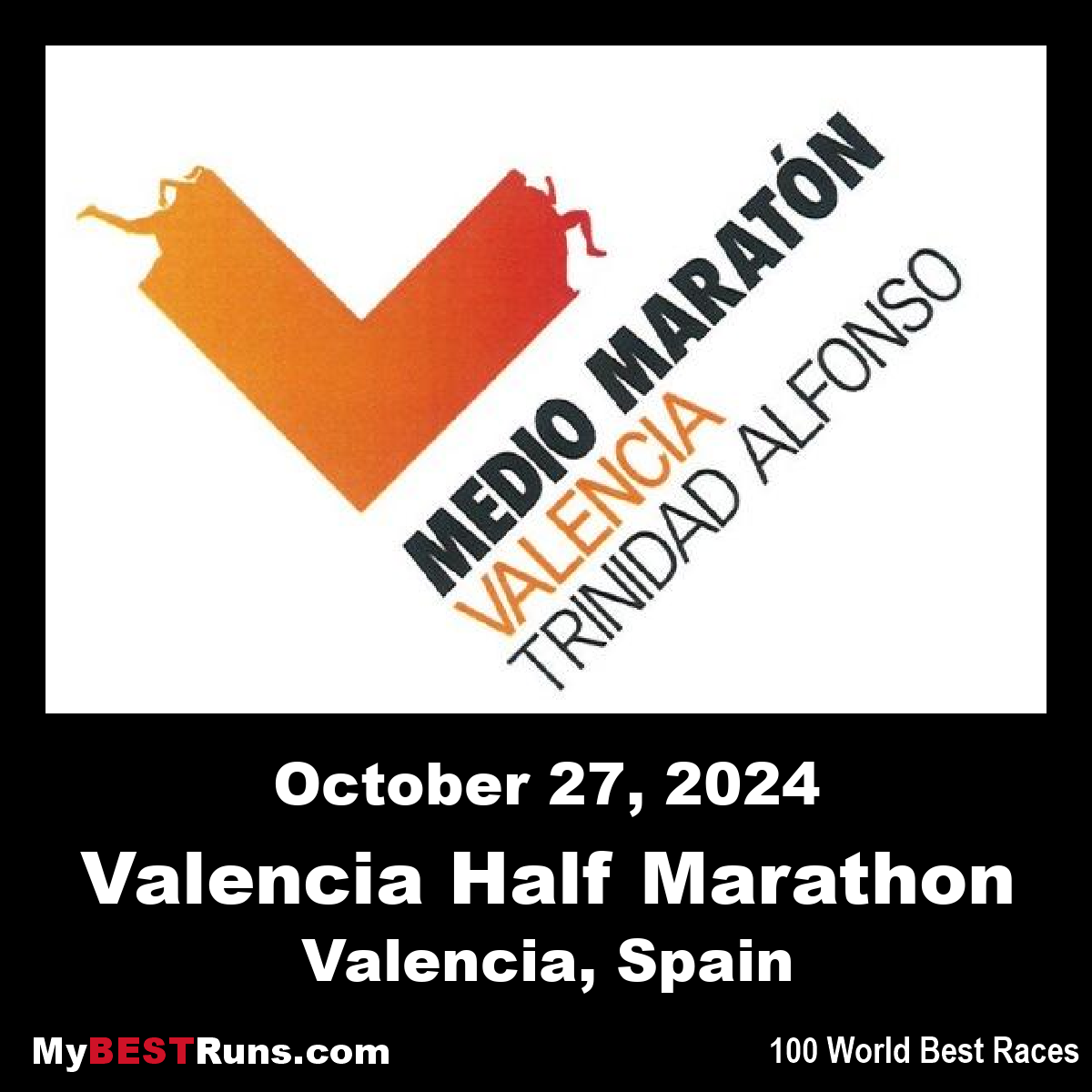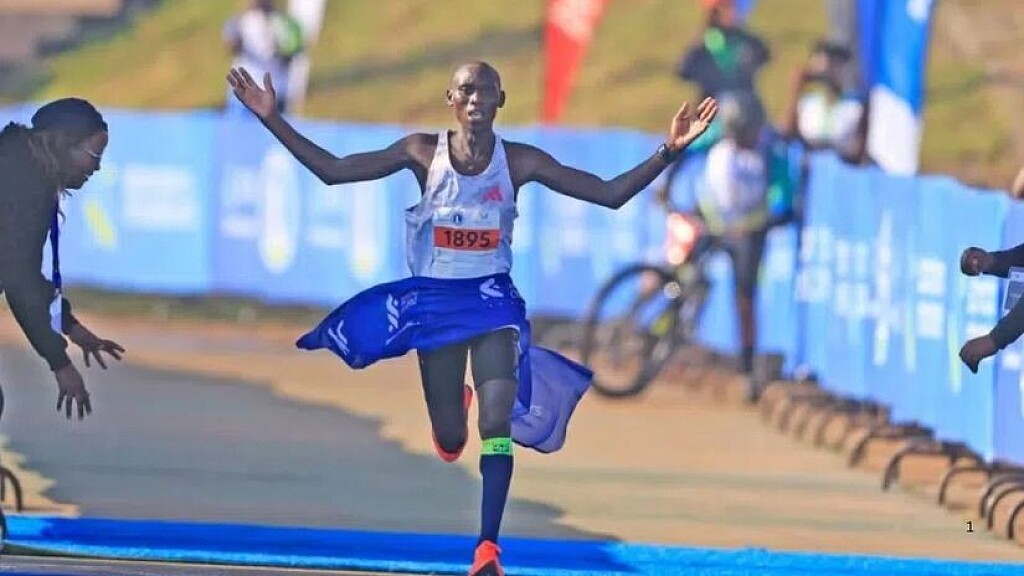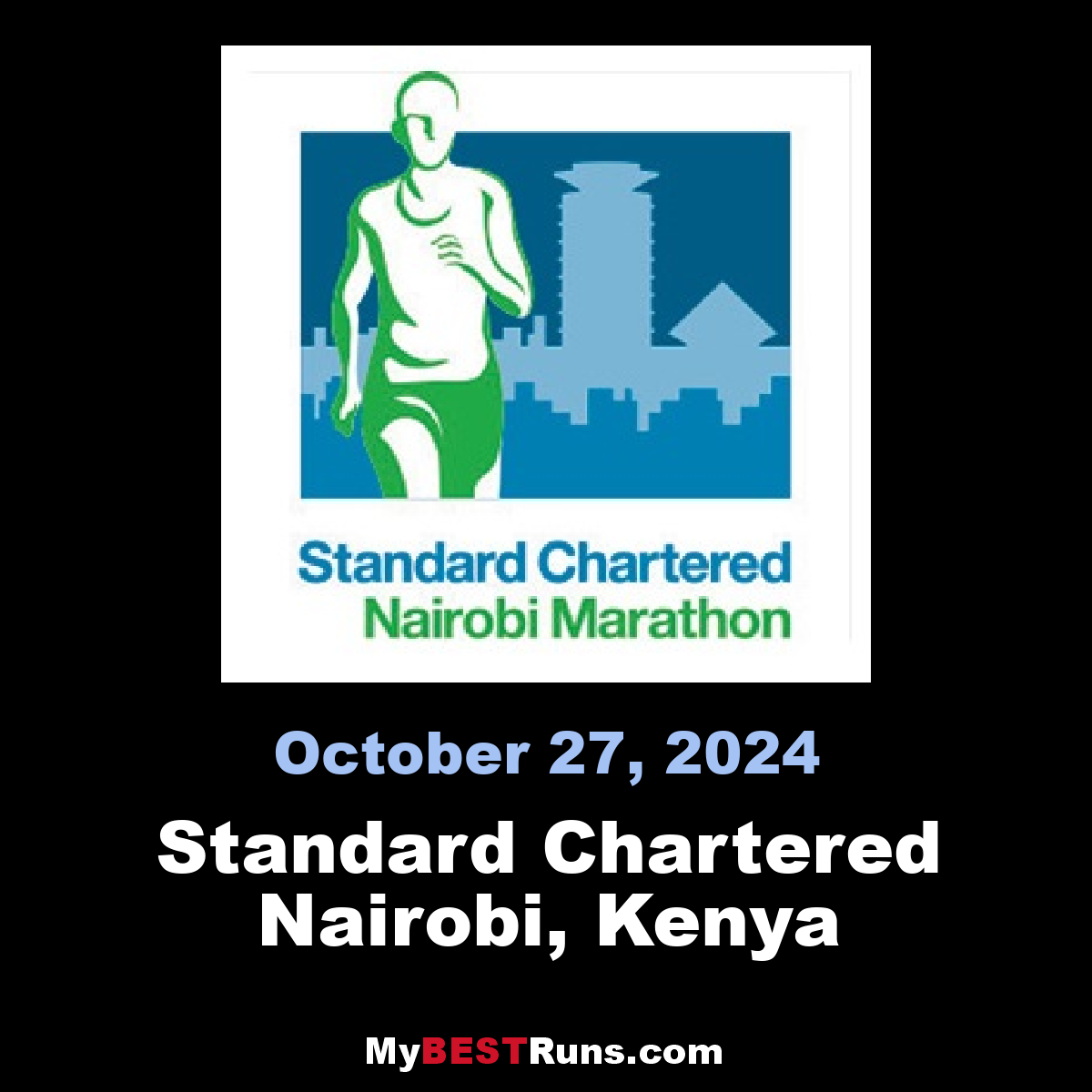Running News Daily
Running News Daily is edited by Bob Anderson. Send your news items to bob@mybestruns.com Advertising opportunities available. Train the Kenyan Way at KATA Kenya and Portugal owned and operated by Bob Anderson. Be sure to catch our movie A Long Run the movie KATA Running Camps and KATA Potato Farms - 31 now open in Kenya! https://kata.ke/
Index to Daily Posts · Sign Up For Updates · Run The World Feed
Articles tagged #and
Today's Running News
John Korir Set for Valencia Marathon Showdown After Boston Glory and Chicago DNF
The streets of Valencia—long known as a launchpad for marathon breakthroughs—will welcome another major storyline this Sunday as Boston Marathon champion John Korir lines up for one of the fastest races in the world.
Korir, who claimed the 2024 Boston Marathon title, heads to Spain looking to reset his momentum after a disappointing DNF at the Chicago Marathon. Valencia, however, has a reputation for revitalizing careers and producing history-making performances. It was here that Kelvin Kiptumastonished the running world with his 2:01:53 debut, and where Sebastian Sawe delivered his own blazing introduction to the distance.

This year’s edition will test Korir against another powerhouse field.

A Clash With Sisay Lemma and a Deep Kenyan Contingent
Leading the opposition is Sisay Lemma, the Ethiopian star and one of the most consistent marathoners on the international circuit. Lemma, who has repeatedly delivered world-class marks, will be targeting a major statement run in Valencia.
The Kenyan challenge will be formidable as well, with a trio of established athletes joining Korir on the start line:
• Hillary Kipkoech – former track standout making waves on the roads
• Edward Cheserek – the 17-time NCAA champion continuing his marathon evolution
• Justus Kangongo – a proven performer capable of big breakthroughs
Each arrives with something to prove—and Valencia’s flat, rapid course has a way of rewarding ambition.
Why Valencia Matters
The Valencia Marathon has earned its reputation as the fastest marathon outside of the World Marathon Majors, regularly producing:
• Course records
• National records
• Top-10 all-time performances
• Breakout debuts for emerging stars
For Korir, the race presents the perfect environment to reestablish his position among the world’s elite and build momentum heading into the 2025 season.
What’s at Stake
A strong performance would reinforce Korir’s Boston victory as a sign of lasting form—not a one-off moment. With Olympic selections and global rankings in play, every second in Valencia matters.
As fans await Sunday’s race, one question stands out:
Will the City of Running deliver yet another defining chapter in marathon history?
My Best Runs will have full coverage and results as the race unfolds.
by Boris Baron
Login to leave a comment
VALENCIA TRINIDAD ALFONSO
The Trinidad Alfonso EDP Valencia Marathon is held annually in the historic city of Valencia which, with its entirely flat circuit and perfect November temperature, averaging between 12-17 degrees, represents the ideal setting for hosting such a long-distance sporting challenge. This, coupled with the most incomparable of settings, makes the Valencia Marathon, Valencia, one of the most important events in...
more...Sydney McLaughlin-Levrone Named Women’s Track Athlete of the Year
Sydney McLaughlin-Levrone has been named the Women’s Track Athlete of the Year for 2025 by World Athletics, capping off a season where she once again redefined what excellence looks like in the 400 meters.
Already one of the most gifted athletes in the sport, McLaughlin-Levrone delivered a dominant year highlighted by her 400m world title and a world-leading performance in the flat 400m—a rare double few athletes have even attempted. Her speed, form, and command over both the hurdles and the flat event continue to elevate her into all-time territory.
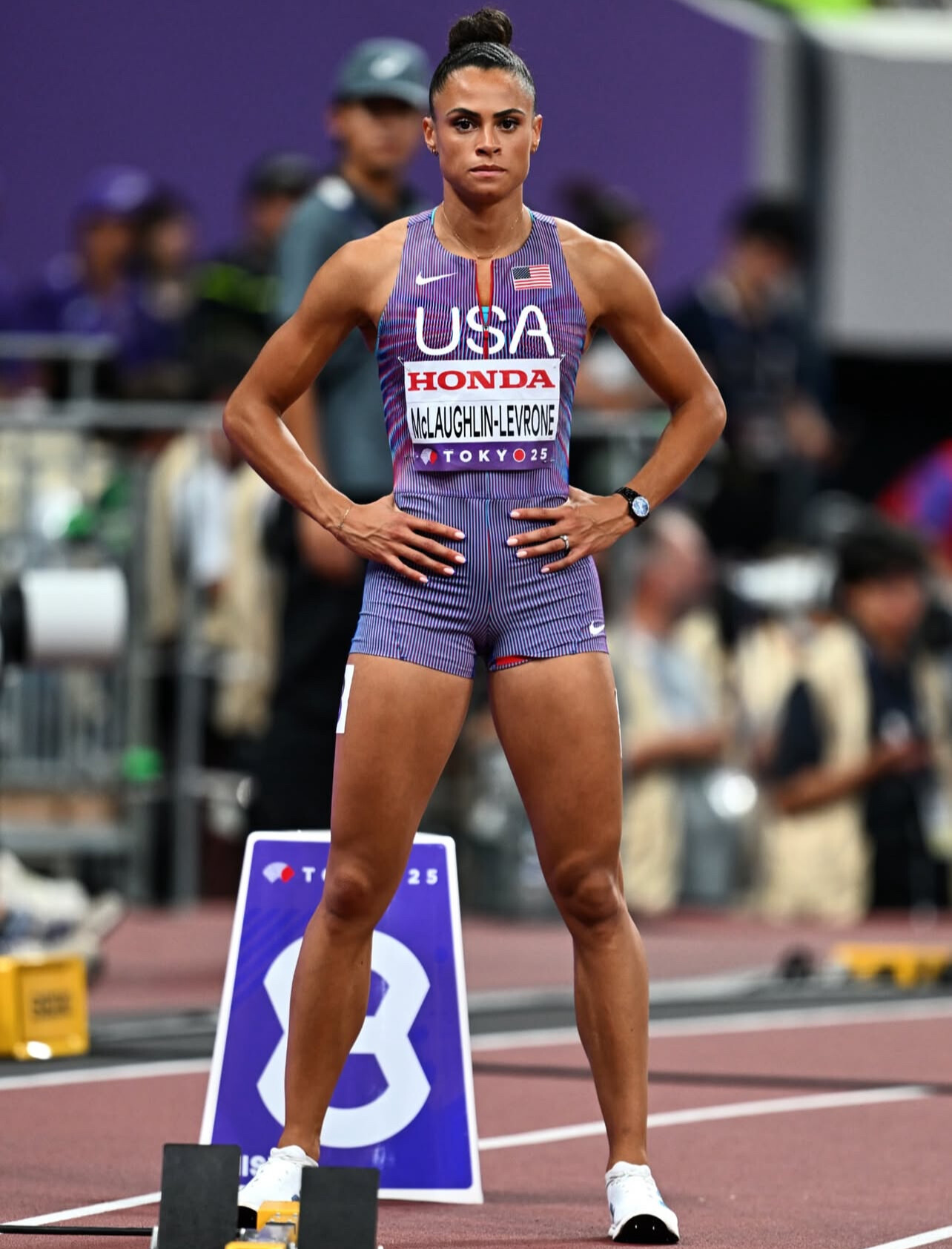
McLaughlin-Levrone’s season was not simply about winning races. It was about how she won them—control from the opening strides, unmatched top-end speed, and the kind of precision that has become her signature. Every time she stepped on the track, she looked untouchable.
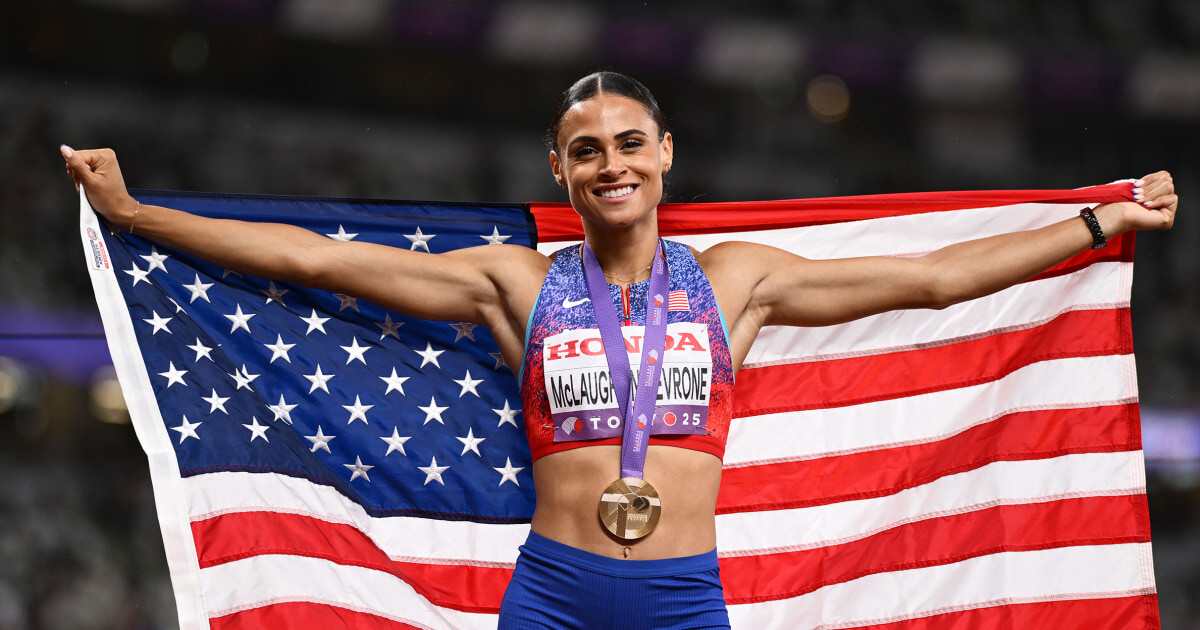
Her rivalry with Dutch star Femke Bol fueled global attention throughout the year, but when it came to the biggest stage, McLaughlin-Levrone delivered once again.
With this award, she solidifies her place as one of the defining athletes of her generation—and one of the most complete 400m runners the sport has ever seen.
by Boris Baron
Login to leave a comment
Emmanuel Wanyonyi Named Male Track Athlete of the Year
Kenya’s Emmanuel Wanyonyi has been named Male Track Athlete of the Year, a recognition that felt inevitable after a season marked by dominance, composure, and electrifying performances on the global stage. At just 20 years old, Wanyonyi has already rewritten expectations in the men’s 800 meters—and 2025 proved to be his breakthrough year.
Wanyonyi consistently displayed the kind of front-end speed, race intelligence, and finishing strength that separates champions from contenders. His victories across the Diamond League circuit, combined with his commanding global championship run, made him the clear favorite for the award.
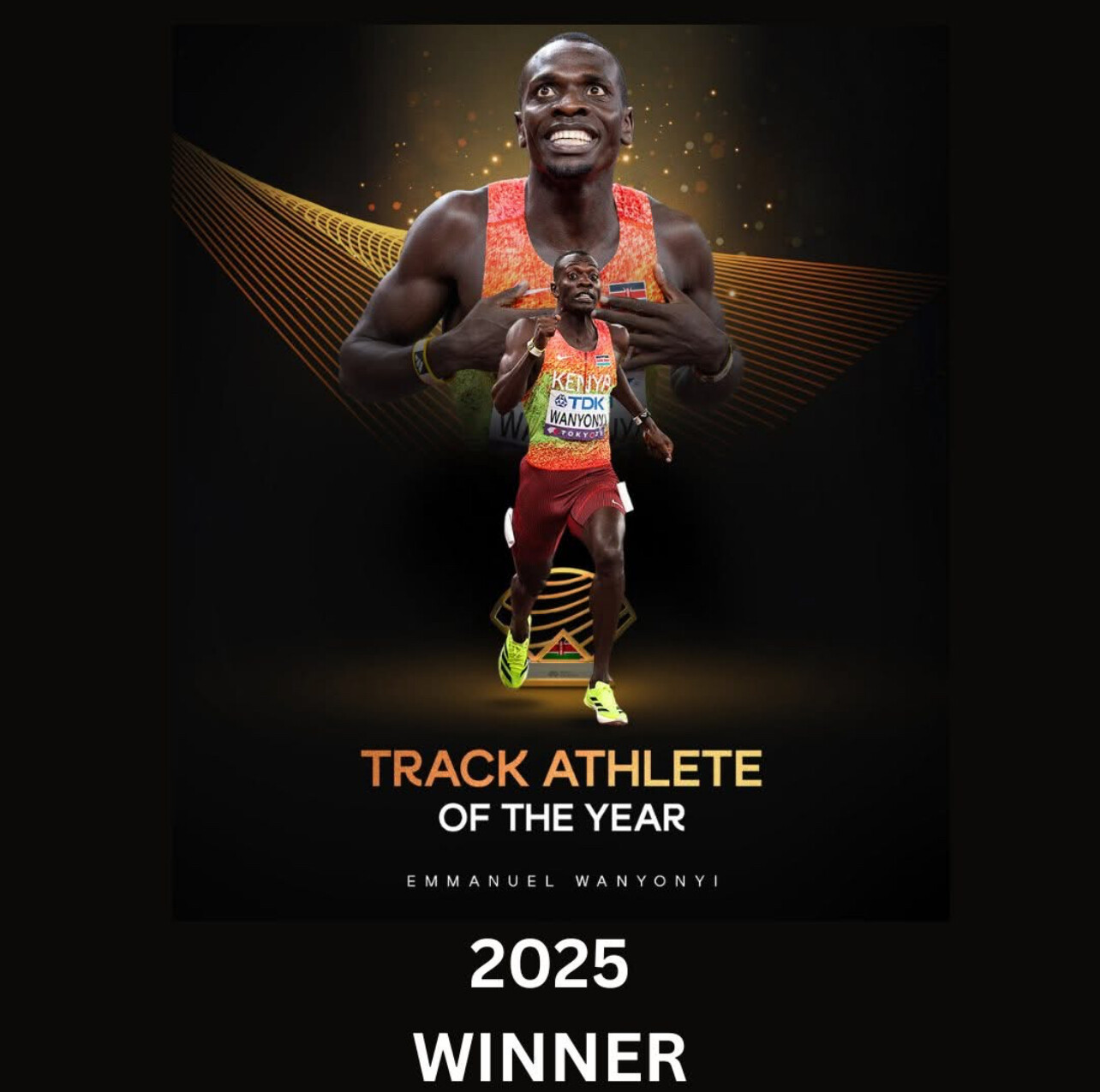
What sets Wanyonyi apart is his ability to take control of races early and maintain a pace that leaves even seasoned competitors scrambling. Whether he was pushing the tempo from the break or waiting to unleash a decisive final burst, Wanyonyi showed maturity well beyond his age.
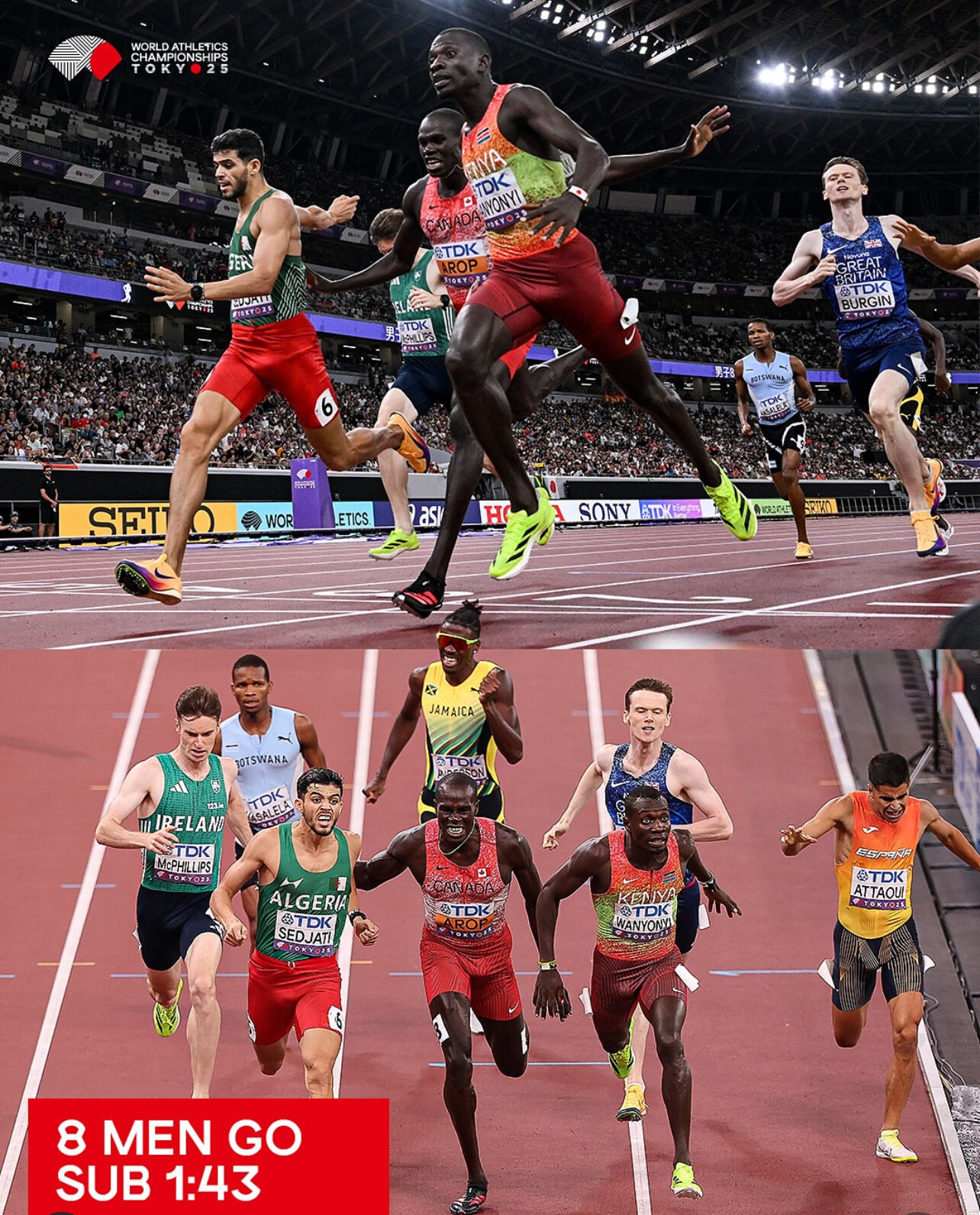
Could anyone else have challenged him?
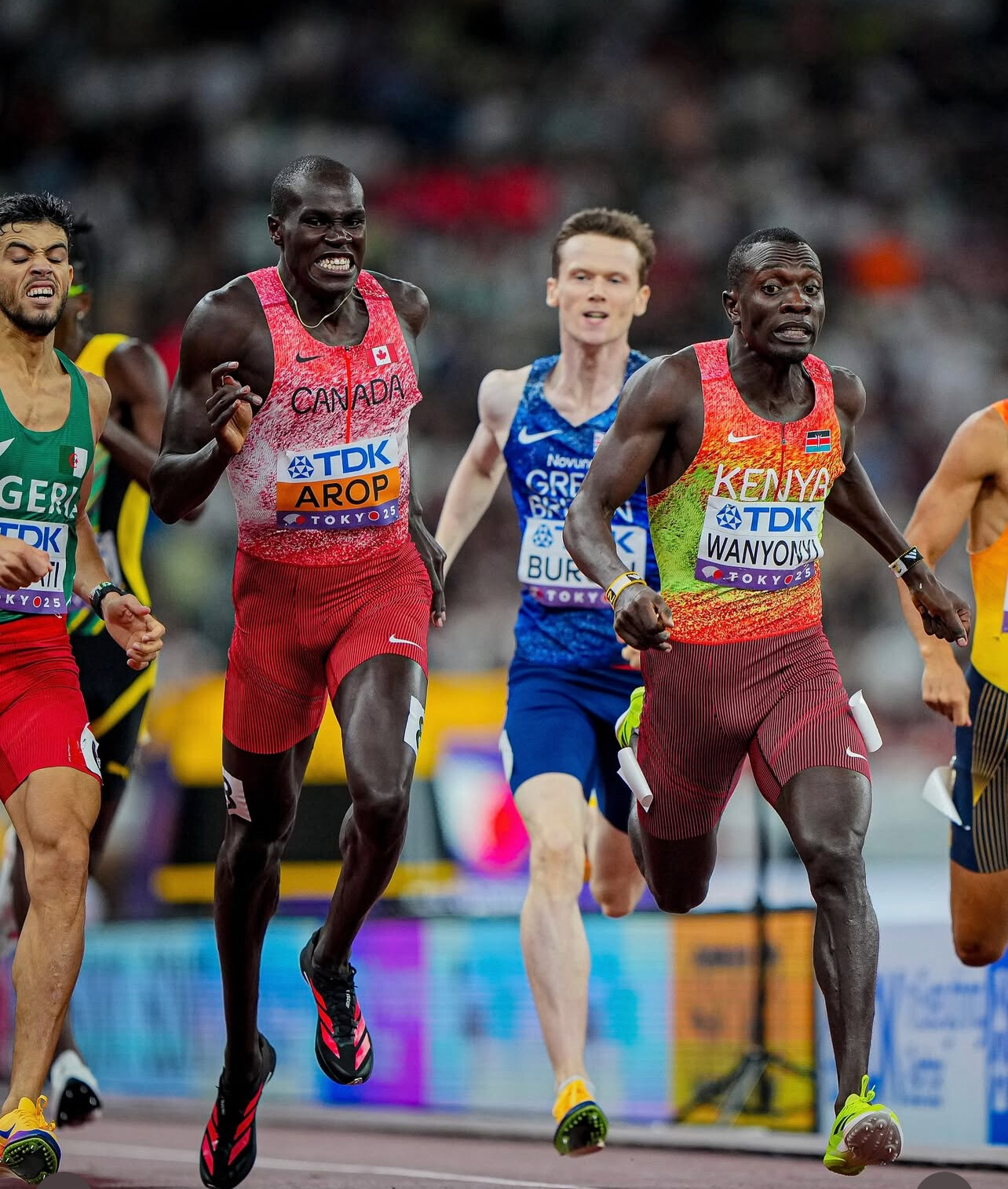
In truth, only a handful came close. Canada’s Marco Arop, the reigning world champion from 2023, mounted a strong season and pushed Wanyonyi in several marquee races. Algeria’s Djamel Sedjati also delivered standout performances. But no one matched Wanyonyi’s consistency, his fearlessness, or his results across the year’s biggest stages.
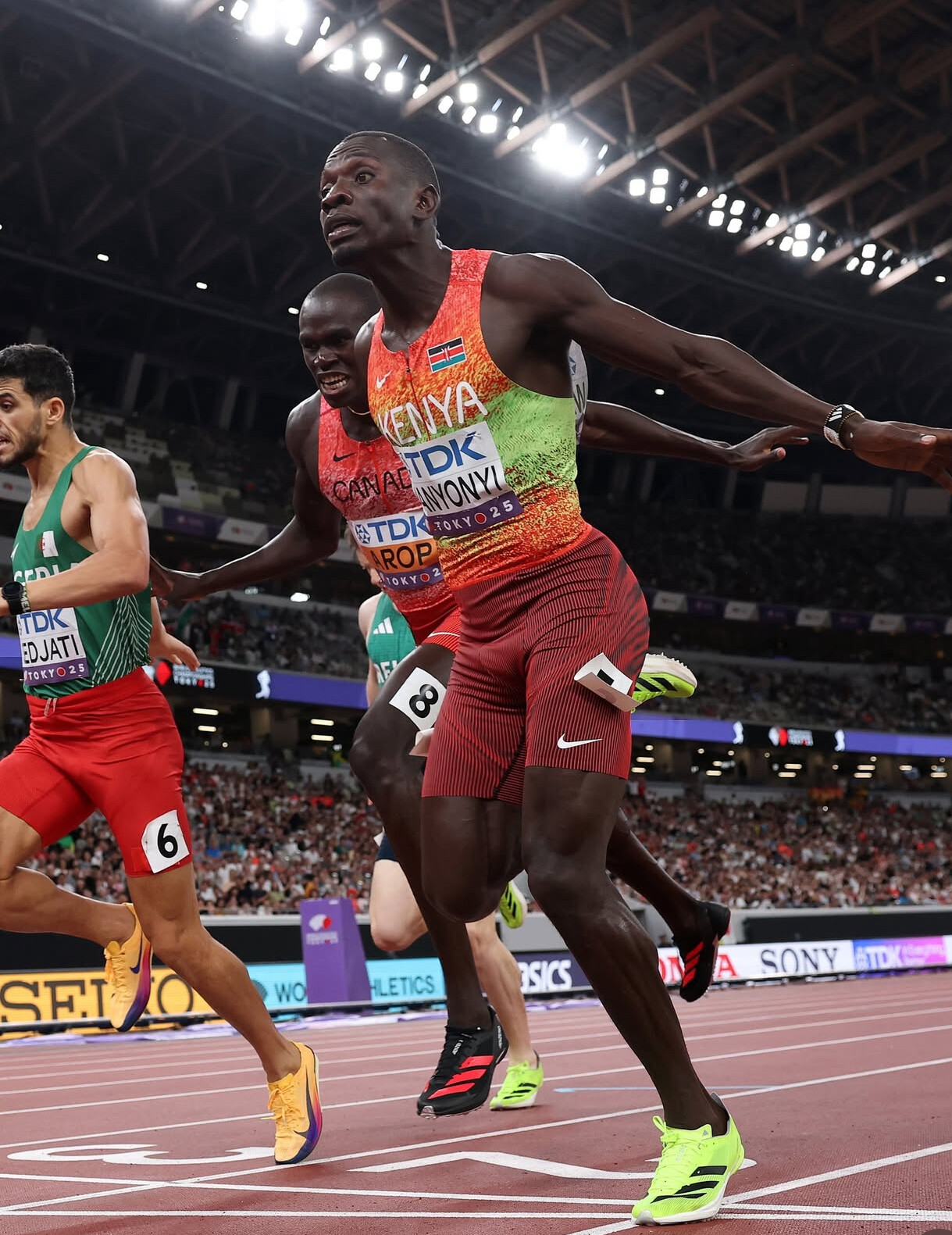
Wanyonyi’s rise is also seen as a resurgence for Kenya’s middle-distance dominance, echoing the eras of David Rudisha and Wilson Kipketer. Coaches and analysts agree: we may only be seeing the beginning.
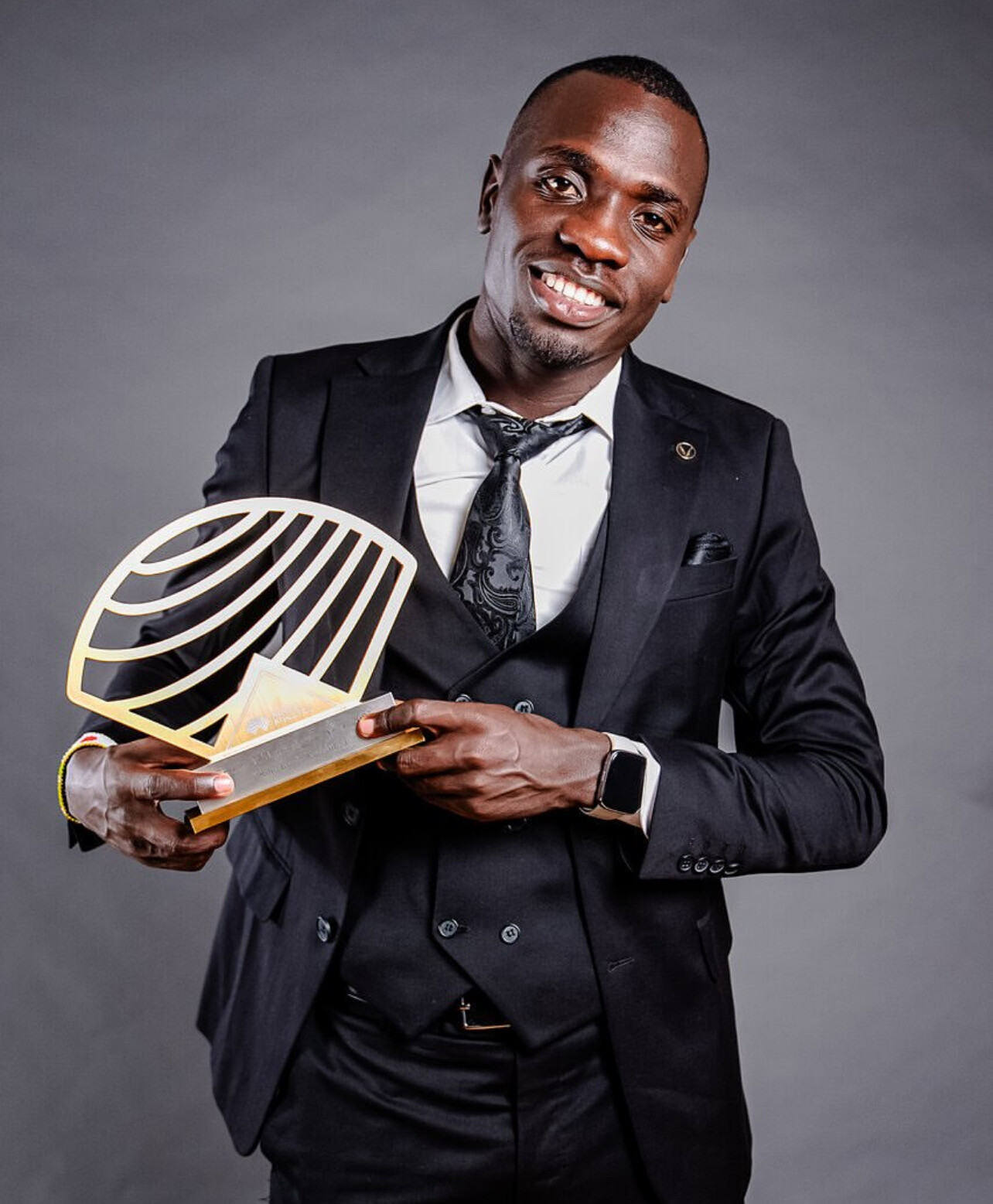
As 2026 approaches, Wanyonyi now stands as the man to beat—and the face of the next generation of 800m excellence.
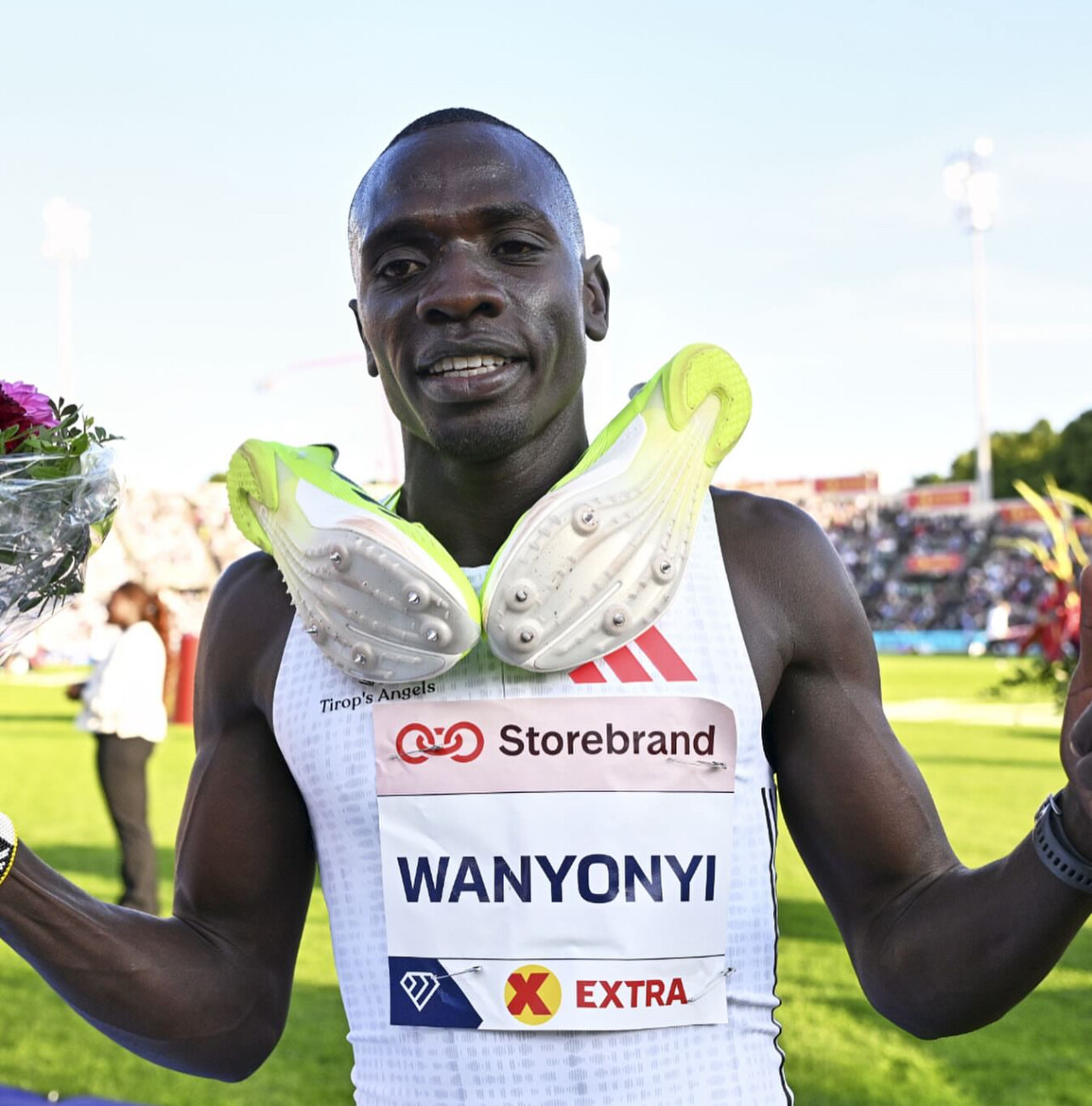
by Boris Baron
Login to leave a comment
Kosgei Shatters Course Record as Mengesha Leads Ethiopian Sweep at the 2025 Shanghai Marathon
The 2025 Shanghai Marathon delivered the kind of fireworks organizers were hoping for on Sunday, November 30—fast times, dominant front-running, and a powerful statement that Shanghai is ready to join the World Marathon Majors.
More than 23,000 runners started at the Bund at 7 a.m., racing through one of the world’s most iconic skylines before finishing at Shanghai Stadium. Both the men’s and women’s races produced standout performances.
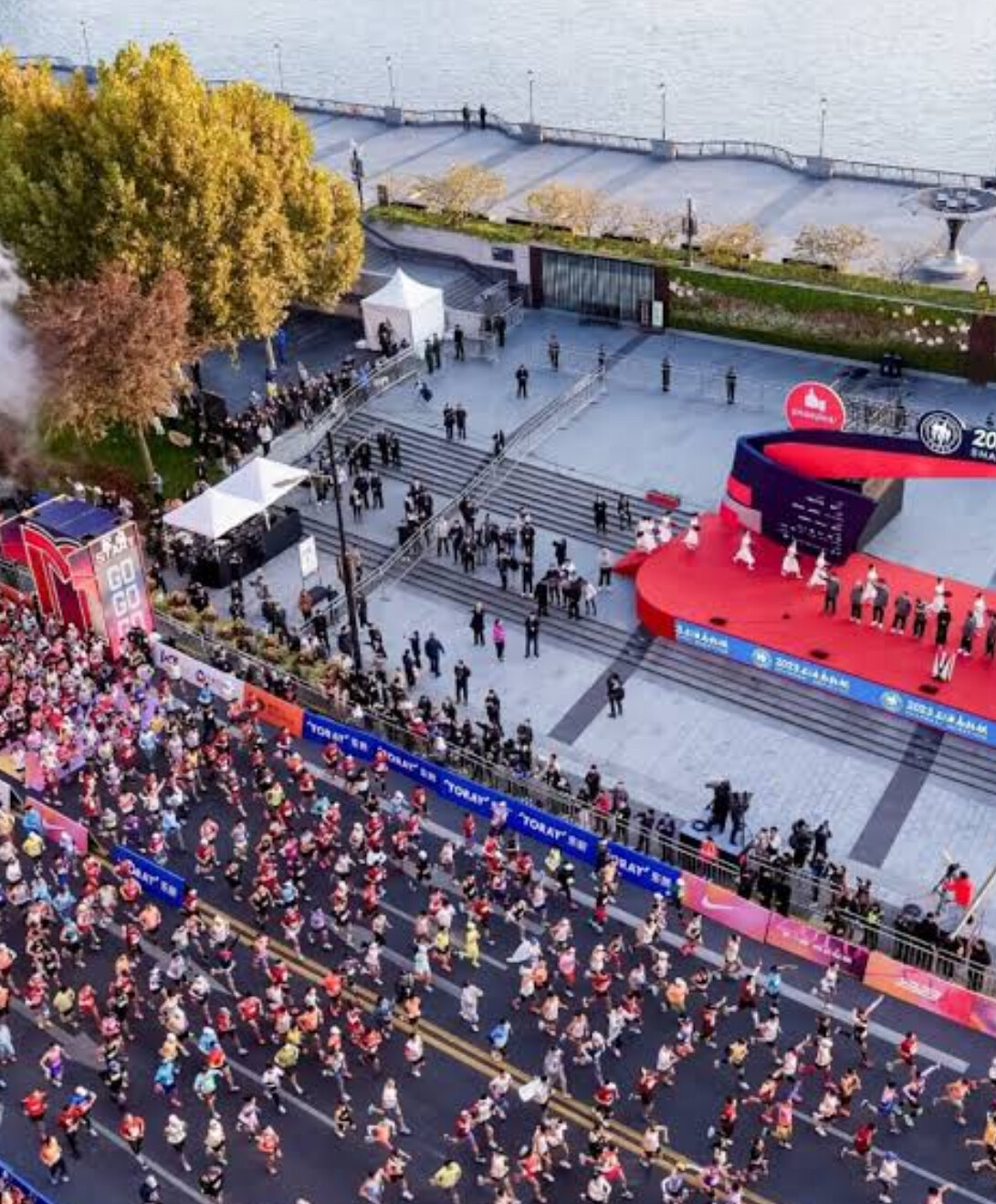
Kosgei Back on Top With a Historic Run
Former world record-holder Brigid Kosgei returned to the top of the podium in commanding style. The 31-year-old Kenyan surged early, hit halfway under 69 minutes, and never looked back, winning in 2:16:36—
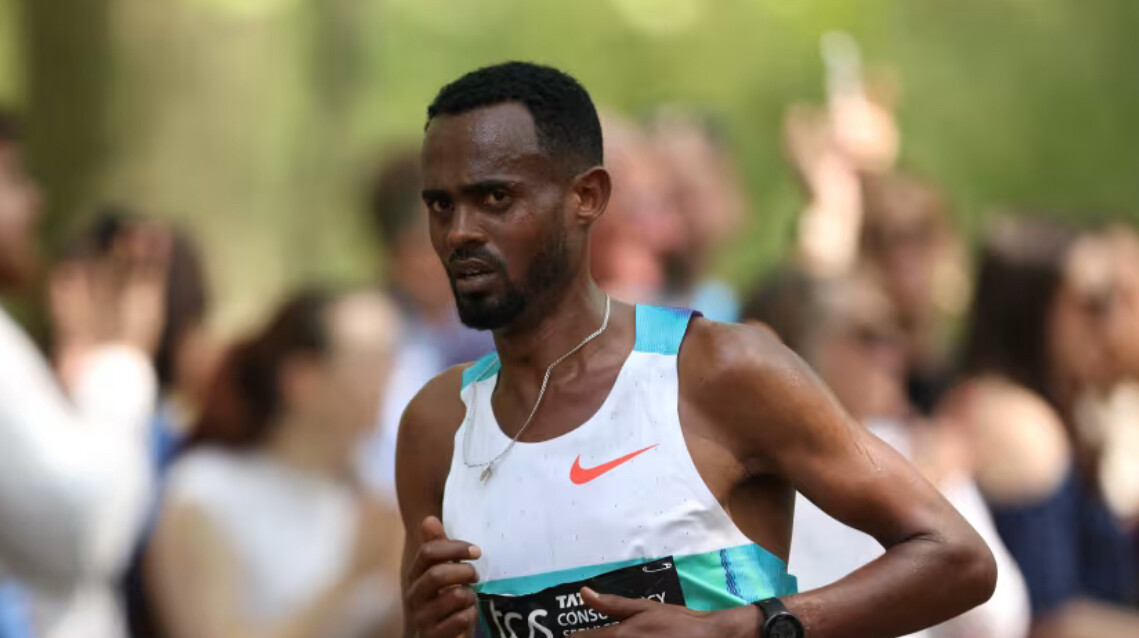
• the fastest marathon ever run on Chinese soil,
• a new Shanghai course record, and
• the third-fastest performance of her career.
Only compatriot Irine Chepet Cheptai could stay close in the early miles, eventually taking second in 2:18:51. Ethiopia’s Tiruye Mesfin finished third in 2:20:38, followed closely by fellow Ethiopian Bekelech Gudeta at 2:20:59.
China’s top star Zhang Deshun placed fifth in 2:25:13, continuing her impressive streak of top domestic finishes.
Ethiopia Sweeps the Men’s Podium
The men’s race unfolded differently—a large, aggressive pack early on before Ethiopia dominated the final 10K. In a furious sprint to the line, Milkesa Mengesha broke the tape in 2:06:25, edging compatriot Dawit Wolde by two seconds. Deresa Geleta finished third in 2:06:36, completing an all-Ethiopian podium.
Five Ethiopians broke 2:07, underscoring the depth at the front.
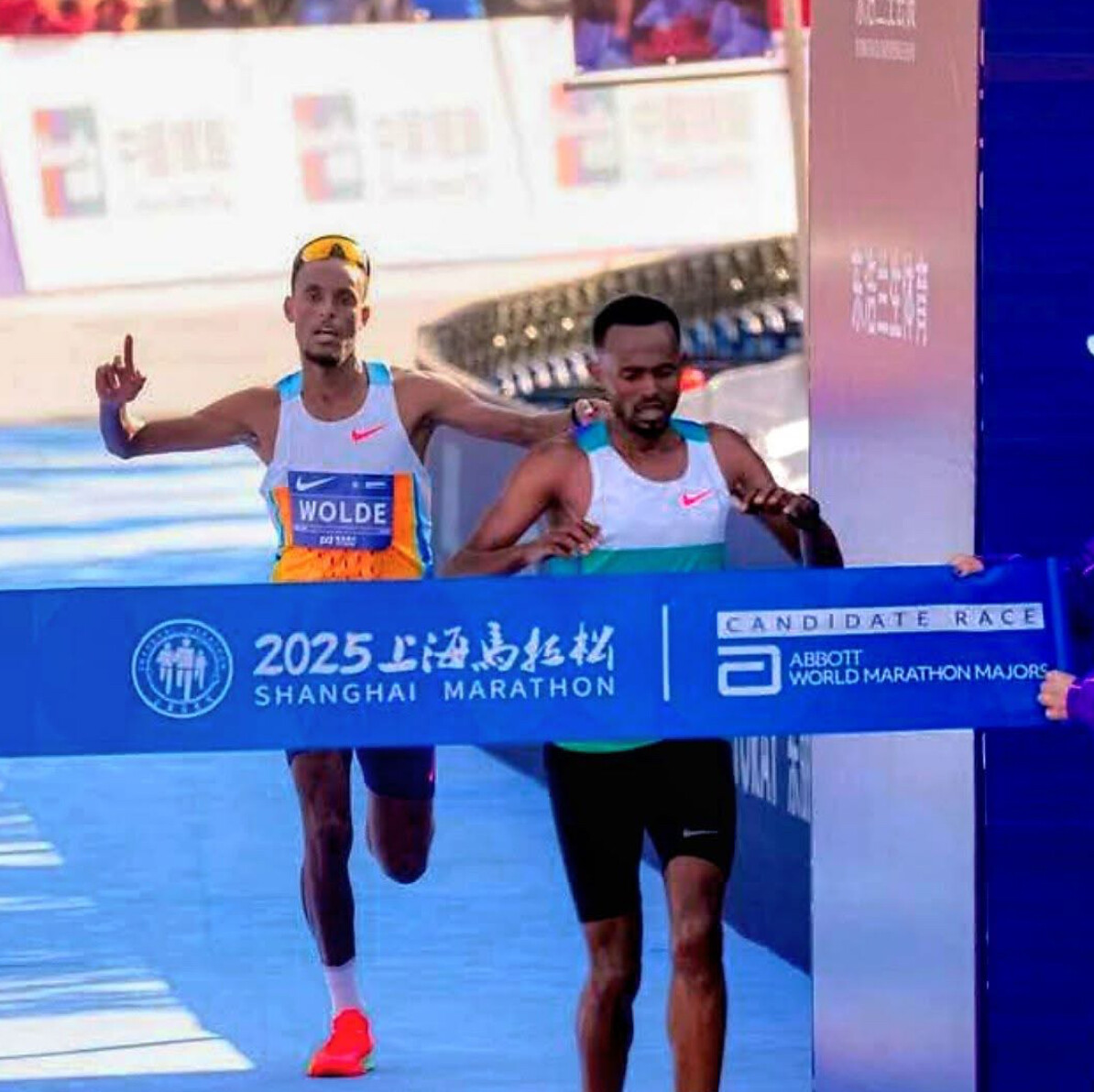
China’s Feng Peiyou delivered the best domestic performance of the day, clocking 2:08:36, the fastest marathon ever run by a Chinese athlete in Shanghai. Countrymen Yang Kegu, Li Dalin, and Ma Rui also cracked the top ten.
Top 10 Results
Men
1. Milkesa Mengesha (ETH) – 2:06:25
2. Dawit Wolde (ETH) – 2:06:27
3. Deresa Geleta (ETH) – 2:06:36
4. Haftu Teklu (ETH) – 2:06:57
5. Challa Gossa (ETH) – 2:08:06
6. Feng Peiyou (CHN) – 2:08:36
7. Solomon Kirwa Yego (KEN) – 2:09:42
8. Yang Kegu (CHN) – 2:12:00
9. Li Dalin (CHN) – 2:13:11
10. Ma Rui (CHN) – 2:13:26
Women
1. Brigid Kosgei (KEN) – 2:16:36 (course & Chinese all-comers record)
2. Irine Chepet Cheptai (KEN) – 2:18:51
3. Tiruye Mesfin (ETH) – 2:20:38
4. Bekelech Gudeta (ETH) – 2:20:59
5. Zhang Deshun (CHN) – 2:25:13
6. Veronicah Njeri Maina (KEN) – 2:26:33
7. Wu Shuang (CHN) – 2:27:17
8. Yao Miao (CHN) – 2:31:13
9. Shen Jiayao (CHN) – 2:31:57
10. Ma Xuexian (CHN) – 2:34:51
Shanghai’s Road to Becoming a Major
For the second straight year, organizers staged the race under the “Run Beyond Borders” banner, showcasing deep elite fields, expanded medical and volunteer support, and international broadcast coverage. Shanghai is currently undergoing World Marathon Majors evaluation, with the earliest possible inclusion in 2027.
by Boris Baron
Login to leave a comment
Shanghai International Marathon
Shanghai International Marathon has established itself as the marquee running event on China’s Marathon calendar. Every November, tens of thousand participants run passing the many historical places of this city such as Bund Bull, Customs House, Shanghai Museum, Shanghai Grand Theater, Shanghai Exhibition center, Jing’an Temple, Nan Pu Bridge, Lu Pu Bridge, Long Hua Temple, Shanghai Stadium. The course records...
more...Stacked Fields Set for Sunday’s Shanghai Marathon as Kosgei and Kipchumba Return
The 2025 Shanghai Marathon — a World Athletics Platinum Label event — is set for Sunday (30), and both the women’s and men’s races are shaping up as some of the strongest in the event’s history. Former world record-holder Brigid Kosgei and defending men’s champion Philimon Kiptoo Kipchumba headline a deep international lineup chasing fast times on one of Asia’s premier courses.
The mass start field in Shanghai will once again deliver the energy and depth that has become a signature of this Platinum Label event, with tens of thousands of runners pouring through the city streets behind one of the strongest elite line-ups of the season. Local club runners, age-group veterans, first-time marathoners, and international amateurs will all share the course with the world’s best, creating a fast, colorful, and highly competitive atmosphere from start to finish.

With ideal late-November conditions expected and Shanghai’s reputation for producing personal bests, the mass field is poised for another year of standout performances and unforgettable marathon moments.
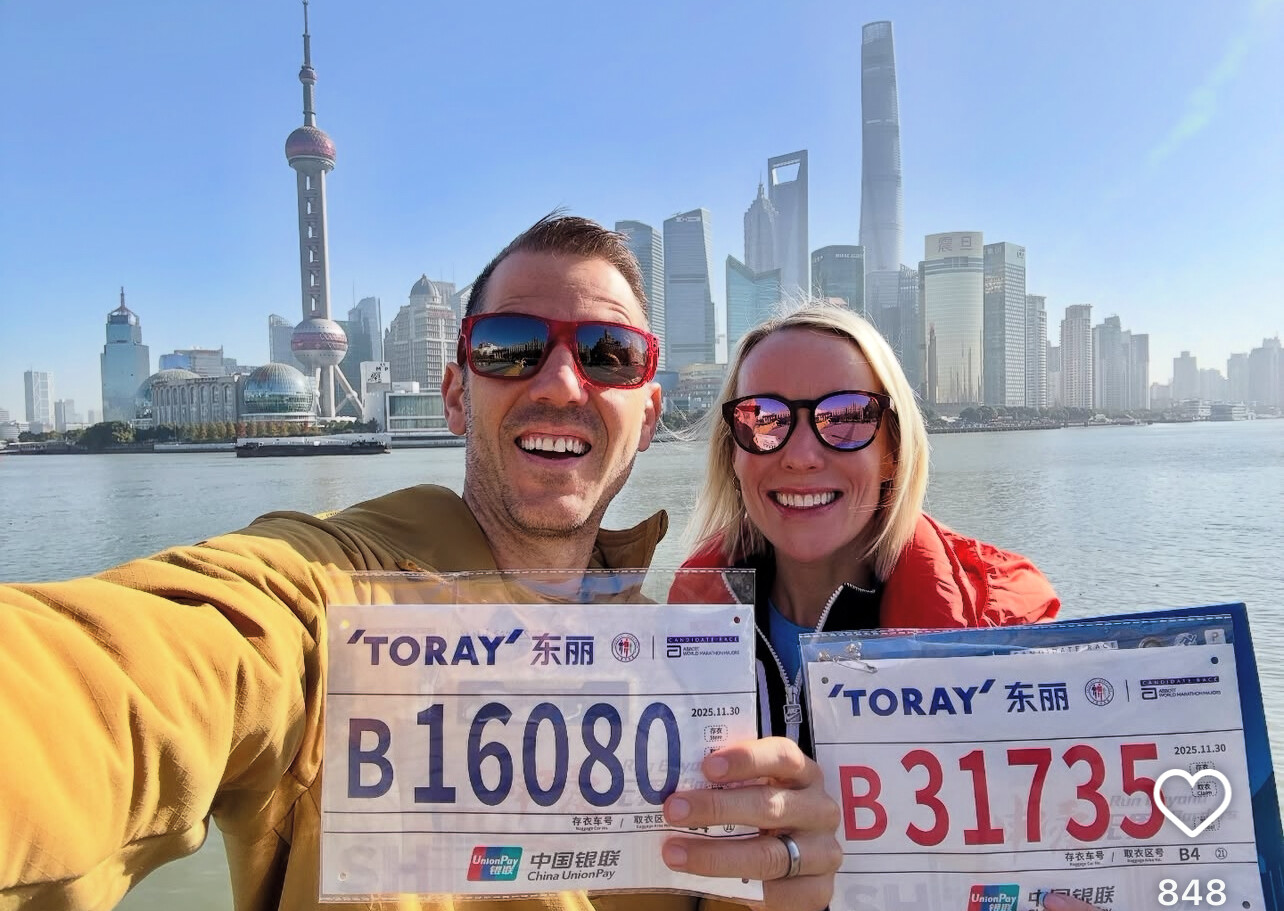
Kosgei Targets First Win in Two Years — and a Course Record
Brigid Kosgei, whose 2:14:04 stood as the world record from 2019 to 2023, lines up for her third marathon of the year. The 31-year-old Kenyan has been consistently sharp in 2025—second in Hamburg (2:18:26) and again in Sydney (2:18:56).
A victory in Shanghai would be her first since Abu Dhabi 2023, but the stakes go beyond winning:
• The course record stands at 2:20:36 (Yebrgual Melese, 2018).
• Pacers have been asked to roll out at 2:17:50 pace, fast enough to challenge both the course mark and the Chinese all-comers’ record (2:18:09 by Ruti Aga, 2023).
Kosgei will not be alone. Two sub-2:20 performers stand in her way:
• Irine Cheptai (KEN) — PB 2:17:51, coming off strong runs in Chicago and Boston.
• Tiruye Mesfin (ETH) — PB 2:18:35, part of Ethiopia’s long history of dominance here.
Ethiopian women have won 10 of the last 14 editions, and Mesfin leads their charge again.
China brings a serious contender as well.
• Zhang Deshun, the No. 3 all-time Chinese marathoner (2:20:53 at Tokyo), returns just two weeks after winning the National Games.
Add in Bekelech Gudeta (ETH) — who won marathons in Seoul and Mexico City this year — and the women’s race becomes one of the most competitive in Shanghai’s history.
Four Sub-2:04 Ethiopians Lead Men’s Lineup
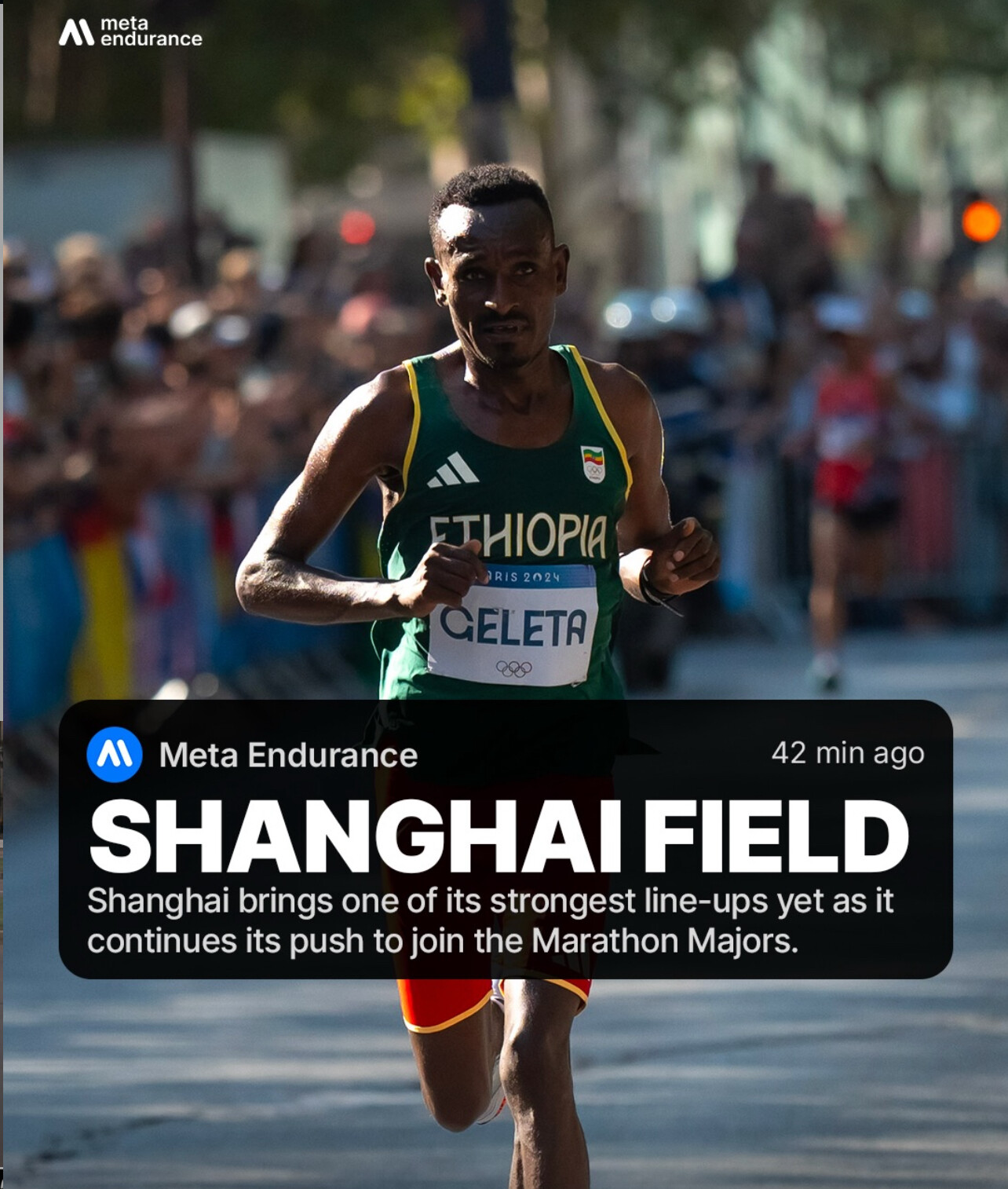
The men’s race may be even deeper. Ethiopia sends a quartet capable of pushing into all-time territory:
• Deresa Geleta (ETH) — 2:02:38, fastest in the field
• Birhanu Legese (ETH) — 2:02:48, two-time Tokyo champion
• Milkesa Mengesha (ETH) — 2024 Berlin winner
• Dawit Wolde (ETH) — former Xiamen champion
Geleta has been brilliant when healthy, clocking 2:02:38 in Valencia and 2:03:51 in Tokyo this year, though he dropped out of Wuxi and the World Championships. Legese tuned up with a 1:00:54 at the New Delhi Half.
But Ethiopia is far from guaranteed victory.
Kiptoo Kipchumba Returns to Defend His Title
Kenya’s Philimon Kiptoo Kipchumba, the 2023 champion, owns the Chinese all-comers’ record of 2:05:35 set in Shanghai. He hasn’t raced since placing 10th here last year, but he returns with unfinished business.
He is joined by a strong Kenyan contingent:
• Titus Kipruto — 2:04:54
• Solomon Kirwa Yego — 2:05:42
• Kenneth Keter — 2:05:53
• Edmond Kipngetich — 2:06:47
China’s biggest hope is Feng Peiyou, the second-fastest Chinese marathoner ever (2:07:06). A small improvement would break the national record of 2:06:57.
Pacers will target 2:58/km (≈2:05:00) — fast enough to threaten Kiptoo’s all-comers’ record.
Leading Entries
Women
• Brigid Kosgei (KEN) – 2:14:04
• Irine Chepet Cheptai (KEN) – 2:17:51
• Tiruye Mesfin (ETH) – 2:18:35
• Selly Chepyego Kaptich (KEN) – 2:20:03
• Zhang Deshun (CHN) – 2:20:53
• Bekelech Gudeta (ETH) – 2:21:36
• Veronicah Njeri Maina (KEN) – 2:24:46
• Xia Yuyu (CHN) – 2:25:45
• Wu Bing (CHN) – 2:26:01
• Li Meizhen (CHN) – 2:27:51
• Shen Ni (CHN) – 2:28:47
• Huang Xuemei (CHN) – 2:29:51
Men
• Deresa Geleta (ETH) – 2:02:38
• Birhanu Legese (ETH) – 2:02:48
• Dawit Wolde (ETH) – 2:03:48
• Haftu Teklu (ETH) – 2:04:42
• Titus Kipruto (KEN) – 2:04:54
• Philimon Kiptoo Kipchumba (KEN) – 2:05:35
• Solomon Kirwa Yego (KEN) – 2:05:42
• Kenneth Keter (KEN) – 2:05:53
• Edmond Kipngetich (KEN) – 2:06:47
• Feng Peiyou (CHN) – 2:07:06
• Challa Gossa (ETH) – 2:07:32
• Wu Xiangdong (CHN) – 2:08:04
by World Athletics
Login to leave a comment
Shanghai International Marathon
Shanghai International Marathon has established itself as the marquee running event on China’s Marathon calendar. Every November, tens of thousand participants run passing the many historical places of this city such as Bund Bull, Customs House, Shanghai Museum, Shanghai Grand Theater, Shanghai Exhibition center, Jing’an Temple, Nan Pu Bridge, Lu Pu Bridge, Long Hua Temple, Shanghai Stadium. The course records...
more...Stephen Mokoka Breaks 37-Year-Old SA Veterans Marathon Record at Big Hole Marathon
South African marathon legend Stephen Mokoka continues to prove that age is no barrier to excellence. On Saturday, November 22, 2025, the 40-year-old star shattered the South African veterans (40+) marathon record at the Big Hole Marathon in Kimberley, finishing second overall in a brilliant 2:15:31.
The previous record — 2:17:40, set by Paulus Masilela in 1988 — had stood untouched for 37 years. Mokoka didn’t just dip under it; he demolished it.
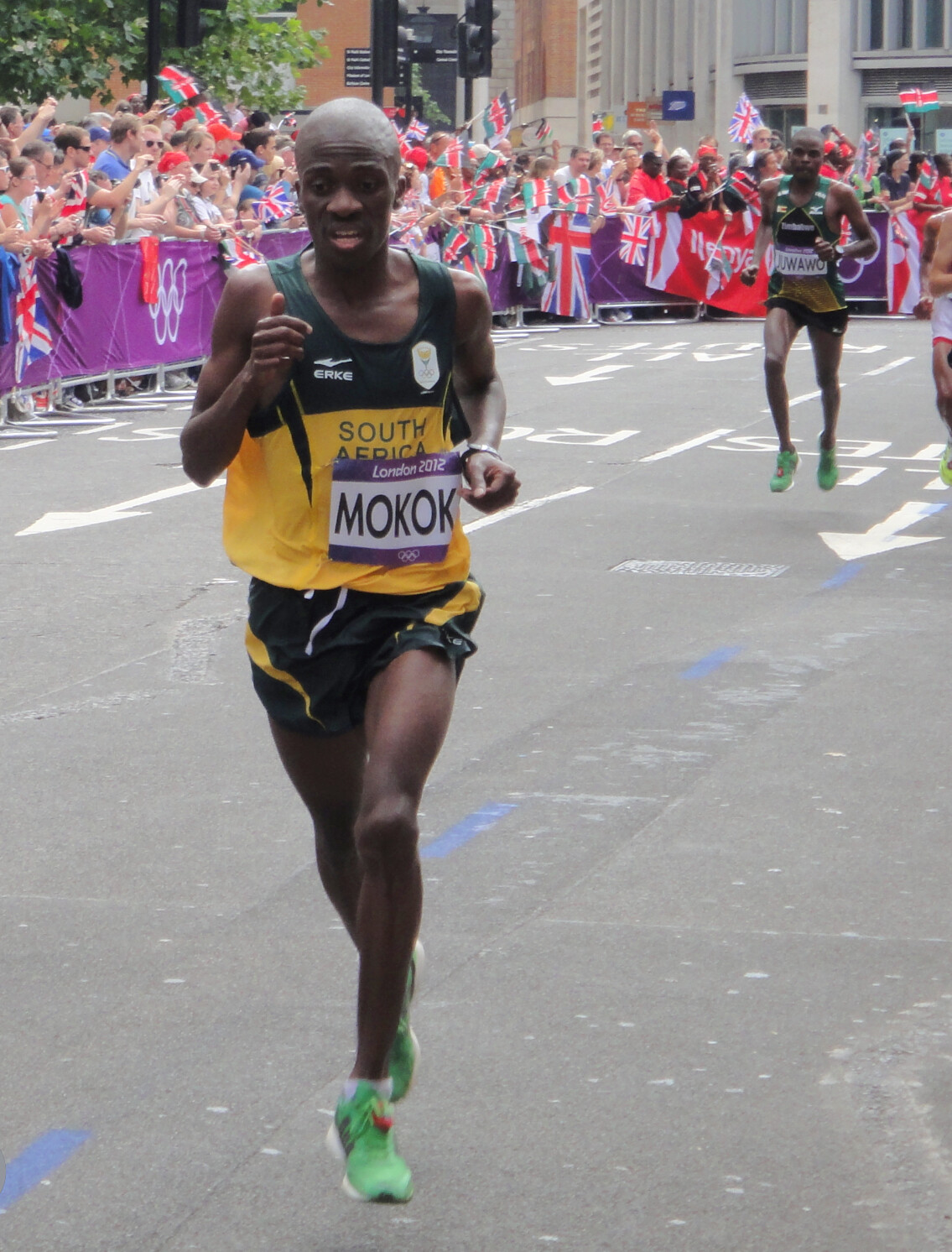
Adding to the historic moment, fellow veteran Lucky Mohale also broke the old mark with his fourth-place finish in 2:17:19. Two over-40 athletes surpassing a decades-old national record on the same day is a rare and remarkable achievement in distance running.
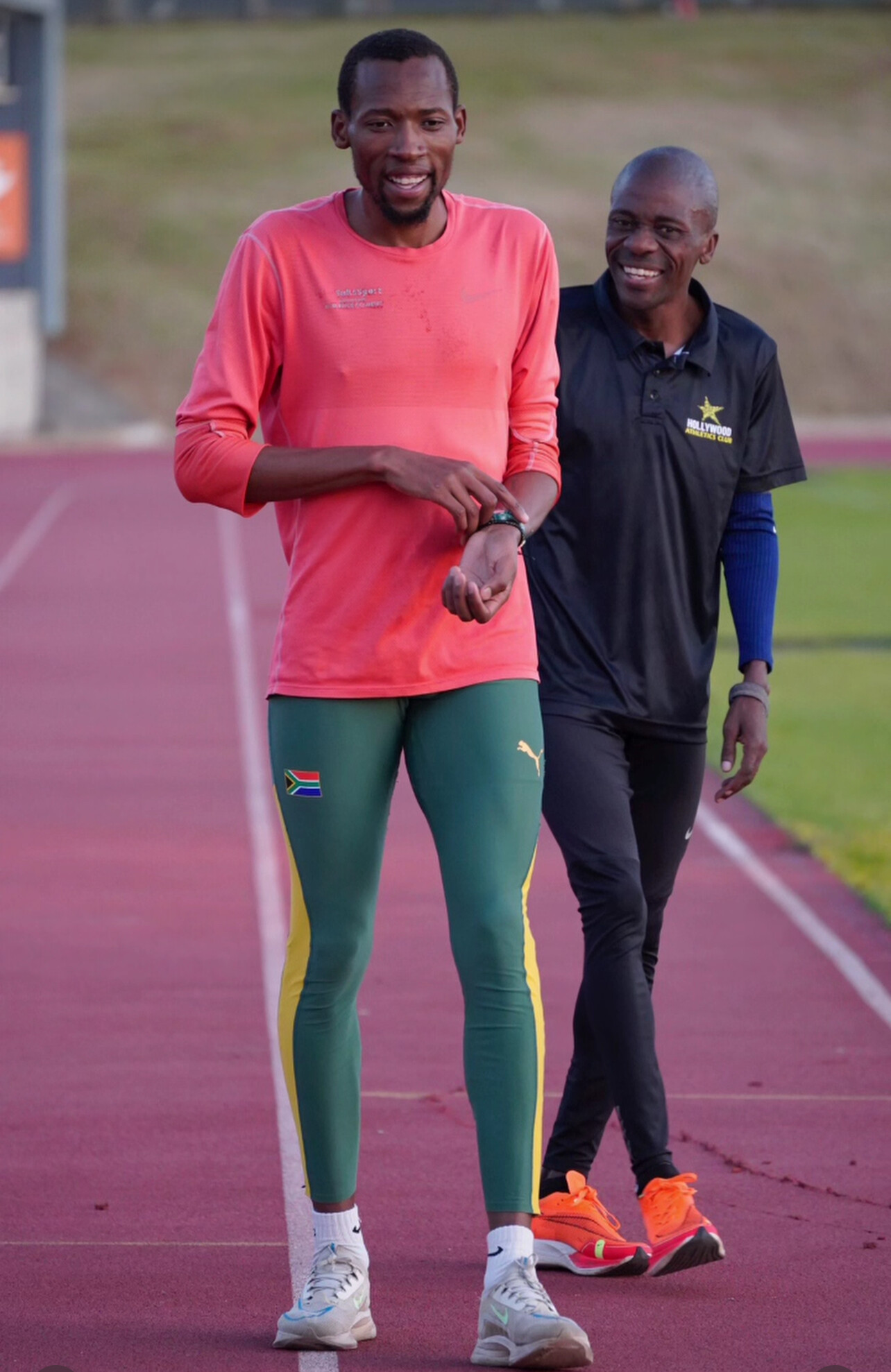
Top Veterans Results
• Stephen Mokoka — 2:15:31
• Lucky Mohale — 2:17:19
A Masterclass in Longevity
Mokoka, one of South Africa’s most decorated distance runners, has been a model of consistency for nearly two decades. His record-breaking run in Kimberley underscores not only his exceptional endurance but also his continued drive to compete at the highest level well into his 40s.
With performances like this, Mokoka solidifies his place as one of the most durable marathoners of his era.
What’s Ahead?
With the veterans record now rewritten, fans are already asking:
Can Mokoka target even more age-group records in 2026?
Given the shape he showed in Kimberley, nothing seems out of reach.
A historic day for South African distance running — and a powerful reminder of what is possible when talent, experience, and longevity come together.
by Boris Baron
Login to leave a comment
From 36:34 10k at Age 9 to 31:35 at Age 15: The Remarkable Rise of Norway’s Per August
In a world where young talent is emerging faster than ever, few stories capture the imagination quite like that of Per August, Norway’s rapidly rising teenage distance star. His progression over the past six years is nothing short of extraordinary—moving from a 36:34 10K at just nine years old to an impressive 31:35 at age 15.
What sets Per August apart isn’t just the times; it’s the level of professionalism embedded in his training. Guided by a Norwegian system known for its precision, he has embraced a routine that mirrors the world’s best:
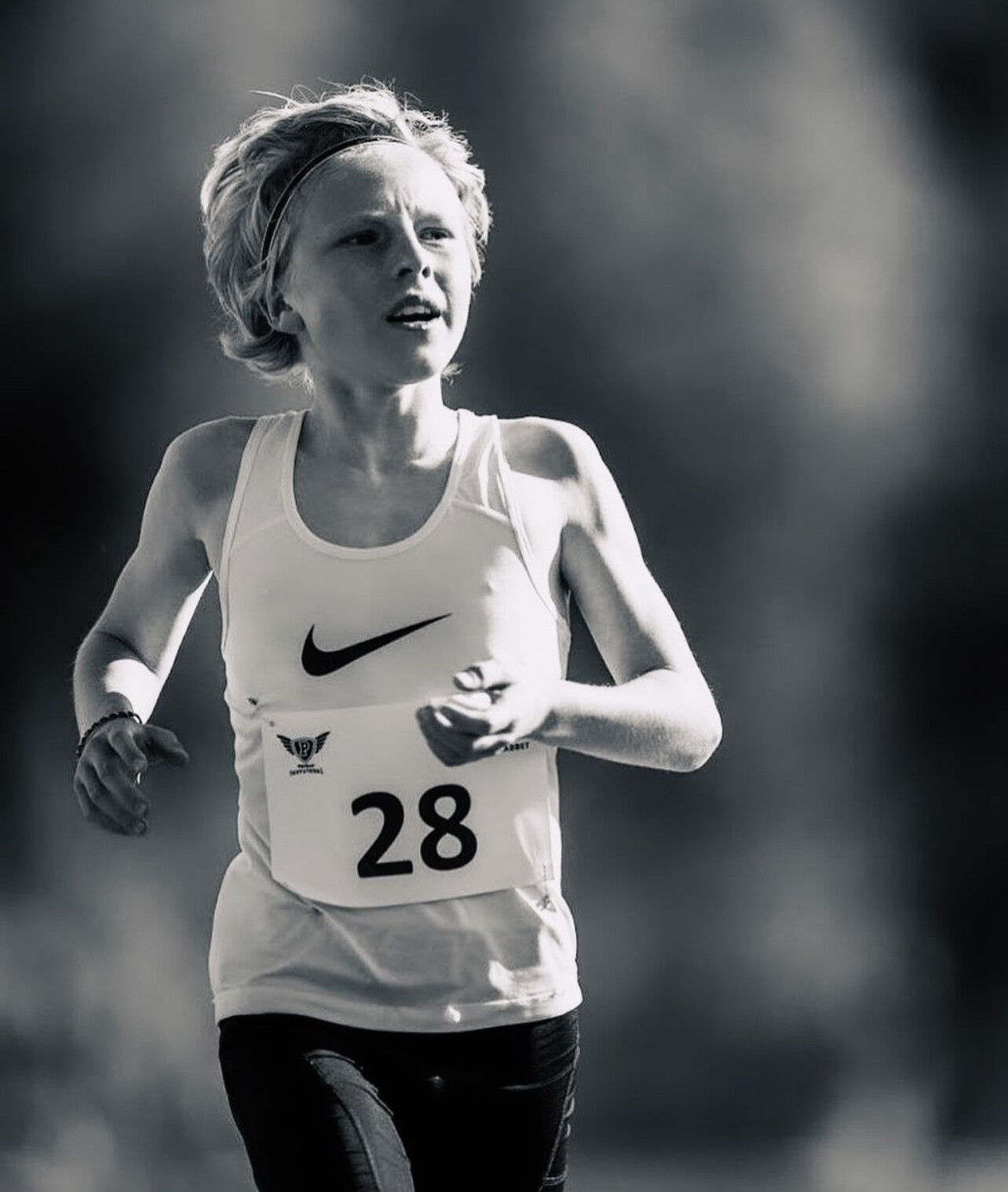
• Double-threshold sessions
• Weekly hill intervals
• Significant mileage performed on the treadmill
• Regular lactate testing to perfectly dial in effort
This scientific, disciplined approach—popularized by Norway’s Ingebrigtsen brothers—has helped Per August shave nearly five minutes off his 10K time between ages 9 and 15. His year-by-year progression demonstrates both remarkable consistency and a rare ability to adapt to higher training loads:
Age 9: 36:34 (3:34/km pace)
Age 11: 34:44
Age 12: 33:17
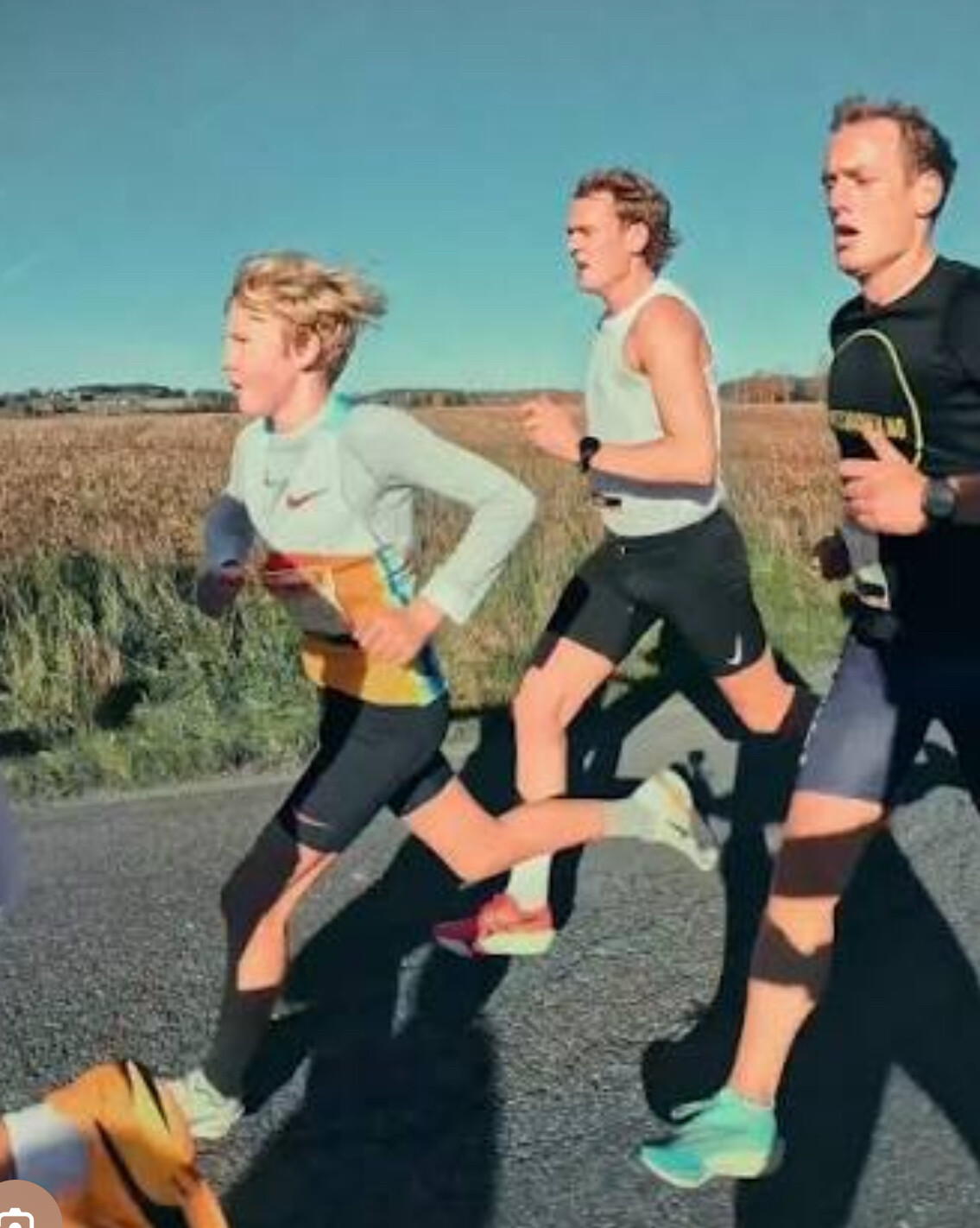
Age 13: 32:43
Age 14: 32:11
Age 15: 31:35 (3:10/km)
For a 15-year-old, 31:35 places him in elite company—not just locally, but globally.
Per August’s story is a testament to what happens when smart training meets long-term commitment. His progression reminds the running world that success is not built overnight, but year after year, with patience, structure, and belief.
If this trajectory continues, Norway may soon have another world-class distance runner on its hands. And at only 15, Per August’s journey is just getting started.
by Boris Baron
Login to leave a comment
Faith Kipyegon: The Mother, the Champion, the Miracle
When Faith Kipyegon gave birth to her daughter in 2018, doctors advised her to take it slow—very slow. Heavy training, they cautioned, should wait at least two years. Most athletes would have accepted that timeline. But Faith Kipyegon is not like most athletes.
Just six months after becoming a mother, she laced up her spikes again.
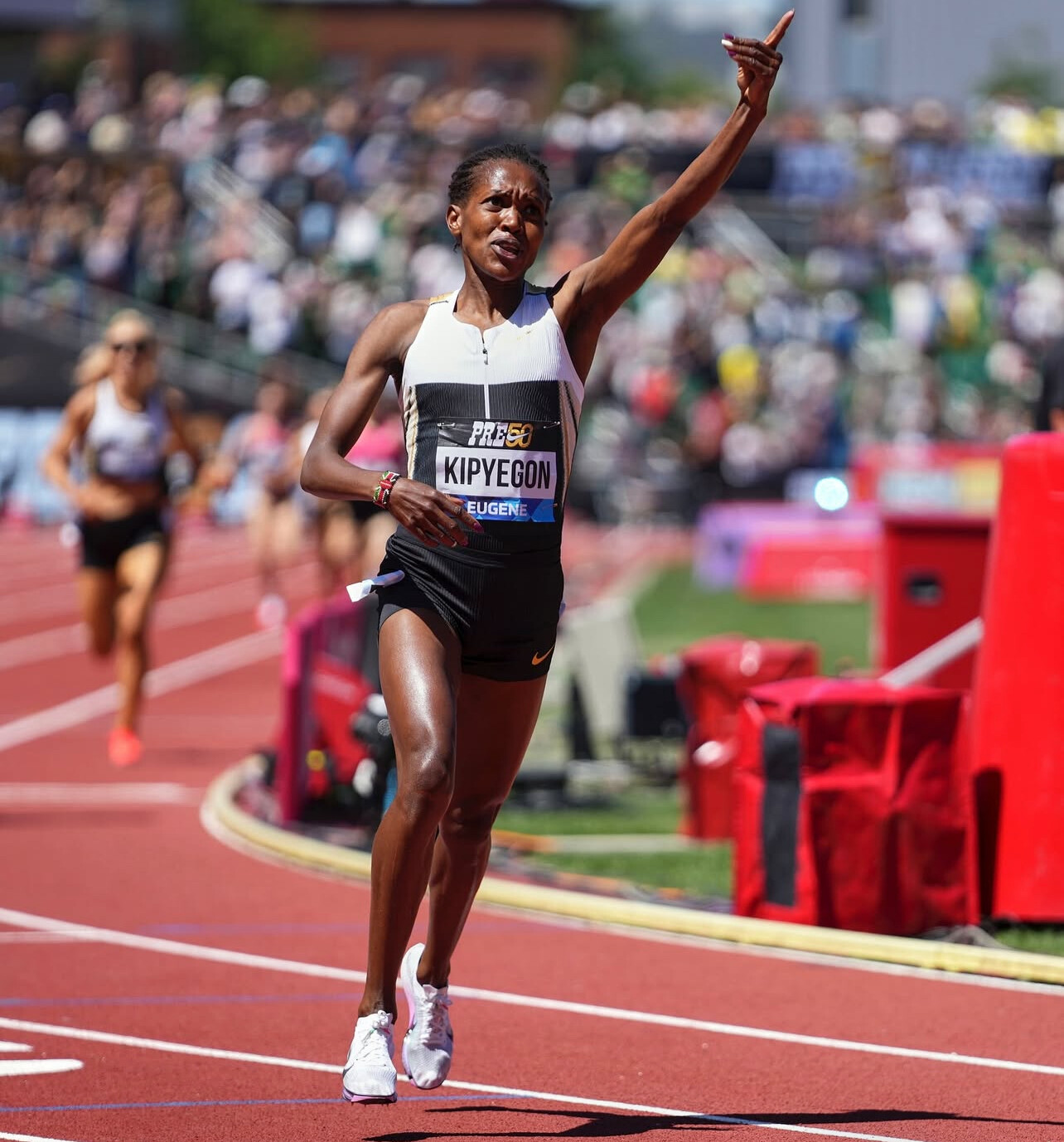
At first, it was simply to move, to feel the track beneath her feet. But soon, the quiet fire that defines the greatest champions began to burn again. What unfolded next is one of the most remarkable comeback stories in modern athletics.
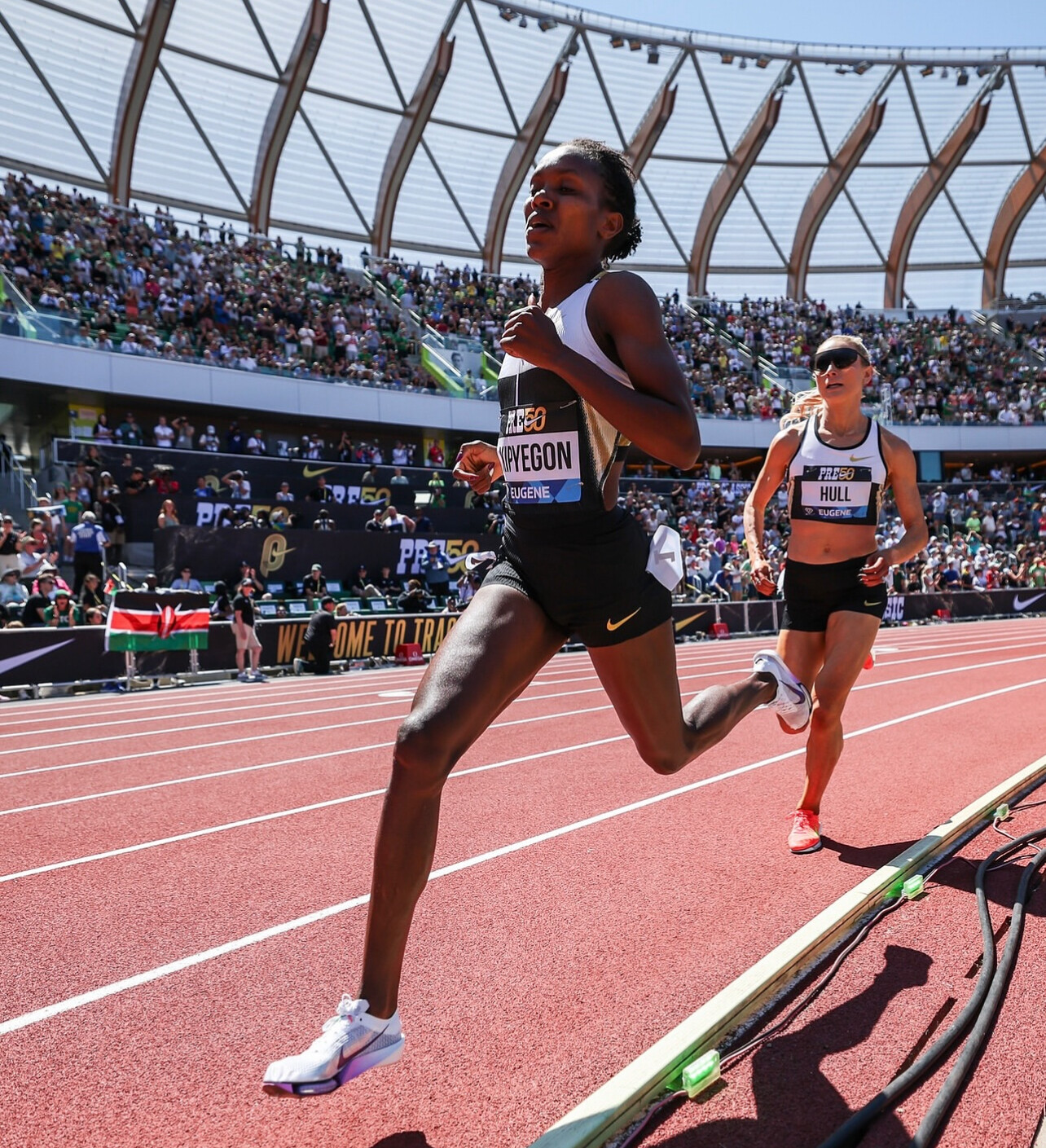
Kipyegon didn’t just return—
she rose higher than ever before.
In a sport where returning to elite form after childbirth is already a major achievement, Kipyegon did the unthinkable. She not only reclaimed the top of the world, she reset the limits of what humans—and mothers—can do.
In 2023, she produced one of the most extraordinary streaks in track history, breaking two world records within weeks:
• 1500m World Record – 3:49.11
• 5000m World Record – 14:05.20
Her 1500m dominance continued into global championships, where she ran with a mixture of elegance, ferocity, and absolute confidence—qualities that have made her one of Kenya’s most beloved athletes and one of the greatest middle-distance runners of all time.
Kipyegon’s story is not simply about medals or records.
It is the story of resilience, of a woman who refused to accept limitations—medical, physical, or societal. It is about the extraordinary will of a mother who wanted to show her daughter, and the world, that strength does not disappear with motherhood; it transforms.
Today, Faith Kipyegon stands as a global symbol of perseverance. Her journey continues to inspire millions—athletes, mothers, and dreamers everywhere—who see in her story a reminder that the human spirit is capable of more than we dare to imagine.
A champion.
A mother.
A legend rewriting what is possible.
by Boris Baron
Login to leave a comment
Edwin Kurgat and Weini Kelati Shine at the 89th Manchester Road Race
MANCHESTER, Connecticut — Edwin Kurgat and Weini Kelati delivered commanding performances on Thursday morning, claiming victory at the 89th edition of the storied Manchester Road Race. Clear, cool weather set the stage as the two Flagstaff-based athletes dominated the 4.737-mile loop through downtown Manchester—a Thanksgiving tradition that blends elite competition with a festive community atmosphere.
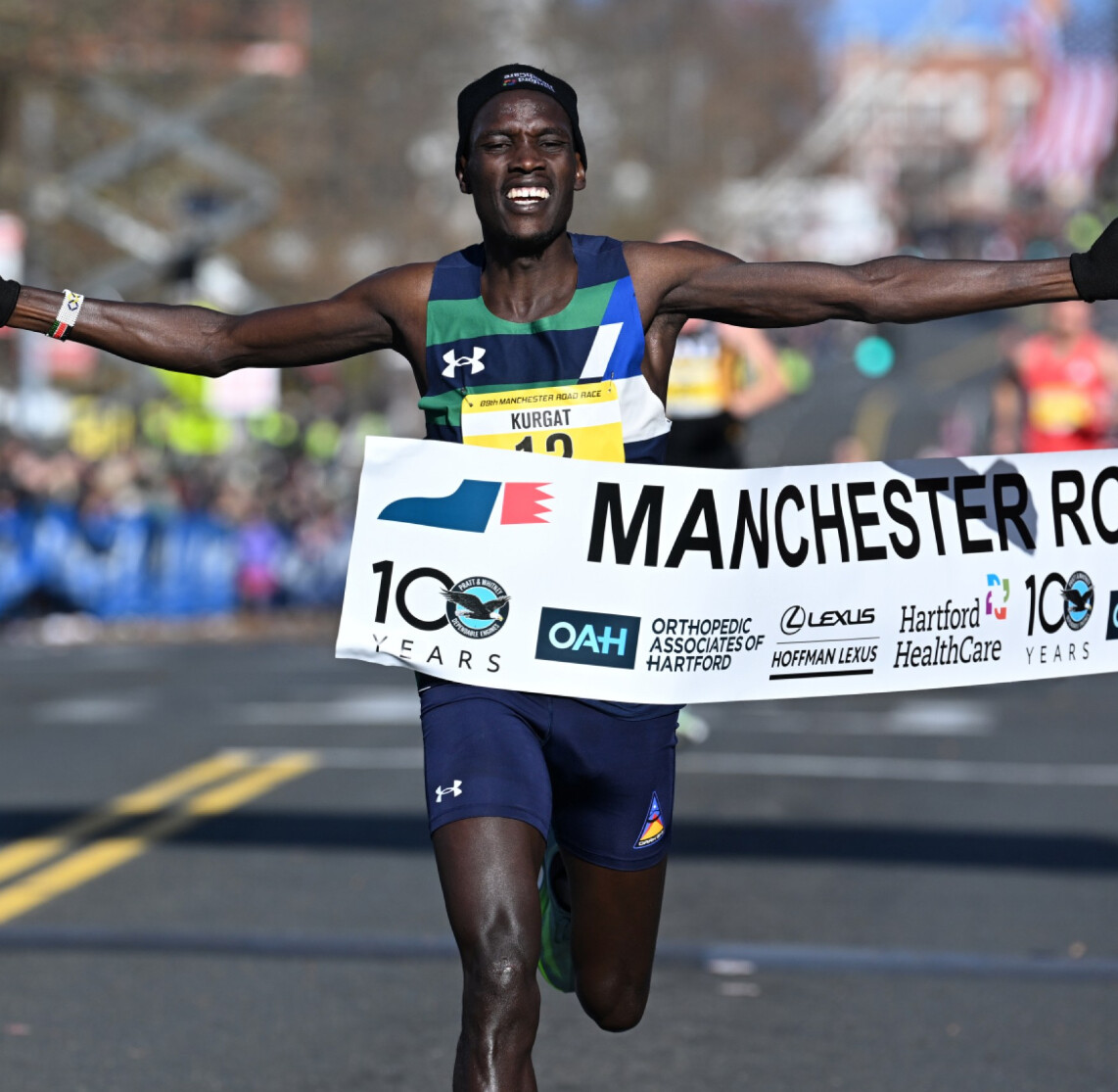
Kurgat stormed to the men’s title in a record-breaking 20:54, eclipsing the previous mark of 21:04 set by Conner Mantz in 2022. In the women’s race, Kelati secured an extraordinary five-peat, crossing the line in 23:18. While short of her own course record of 22:55 from 2021, her consistency and dominance reaffirmed her status as one of America’s top road runners.
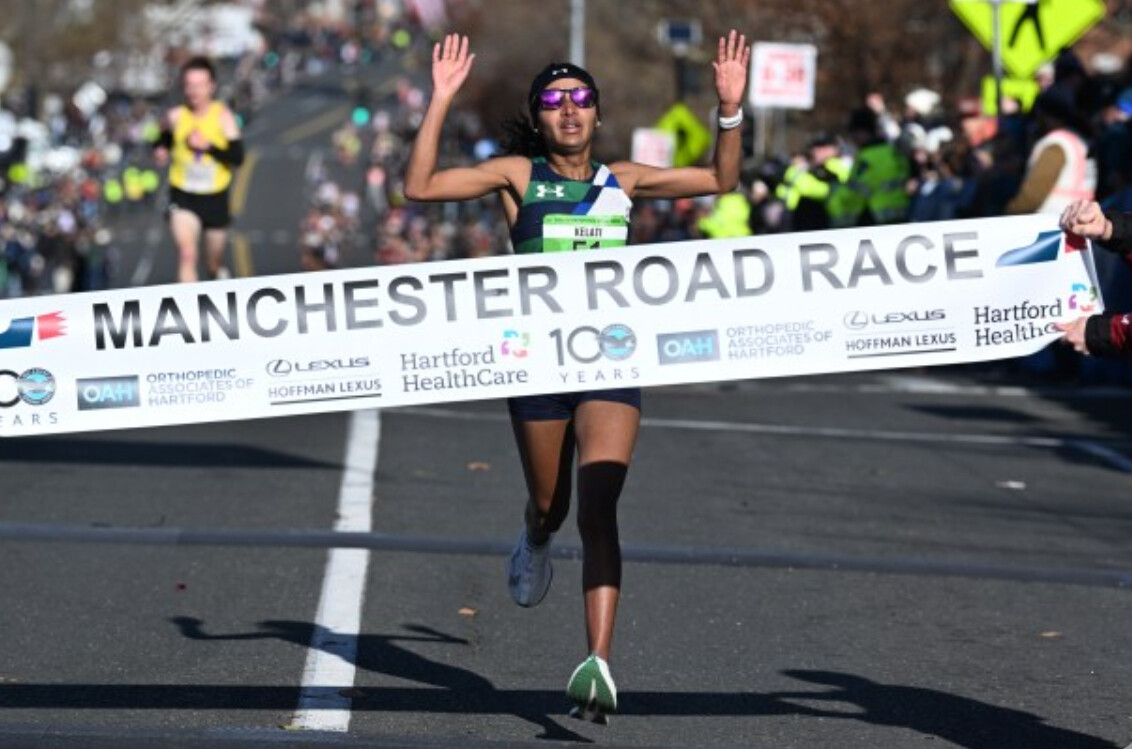
This year’s race attracted 12,386 registrants, continuing the event’s strong post-COVID resurgence. The “massive field,” as race officials described it, featured defending men’s champion Andrew Colley, 2023 champion Morgan Beadlescomb, Kelati, and world-class Kenyan standout Dorcus Ewoi—further cementing Manchester’s reputation as one of the premier road races in the United States.
by Boris Baron
Login to leave a comment
Manchester Road Race
The Manchester Road race is one of New England’s oldest and most popular road races. The 86th Manchester Road Race will be held on Thanksgiving Day. It starts and finishes on Main Street, in front of St. James Church. The Connecticut Sports Writers’ Alliance recently honored the Manchester Road Race. The CSWA, which is comprised of sports journalists and broadcasters...
more...Eilish McColgan Shatters British 15K Record with Sensational 47:12 at Zevenheuvelenloop
Eilish McColgan lit up the roads of Nijmegen on Sunday Nov 16 with a performance that redefines her comeback story. Racing the historic Zevenheuvelenloop 15K, the Scottish star clocked a stunning 47:12, breaking the British national record and finishing fourth overall.
Her time erased the previous British mark of 47:24, set earlier this year by Calli Hauger-Thackery, and moves McColgan to No. 2 on the European all-time list, behind only Lornah Kiplagat’s 46:59 from 2007.
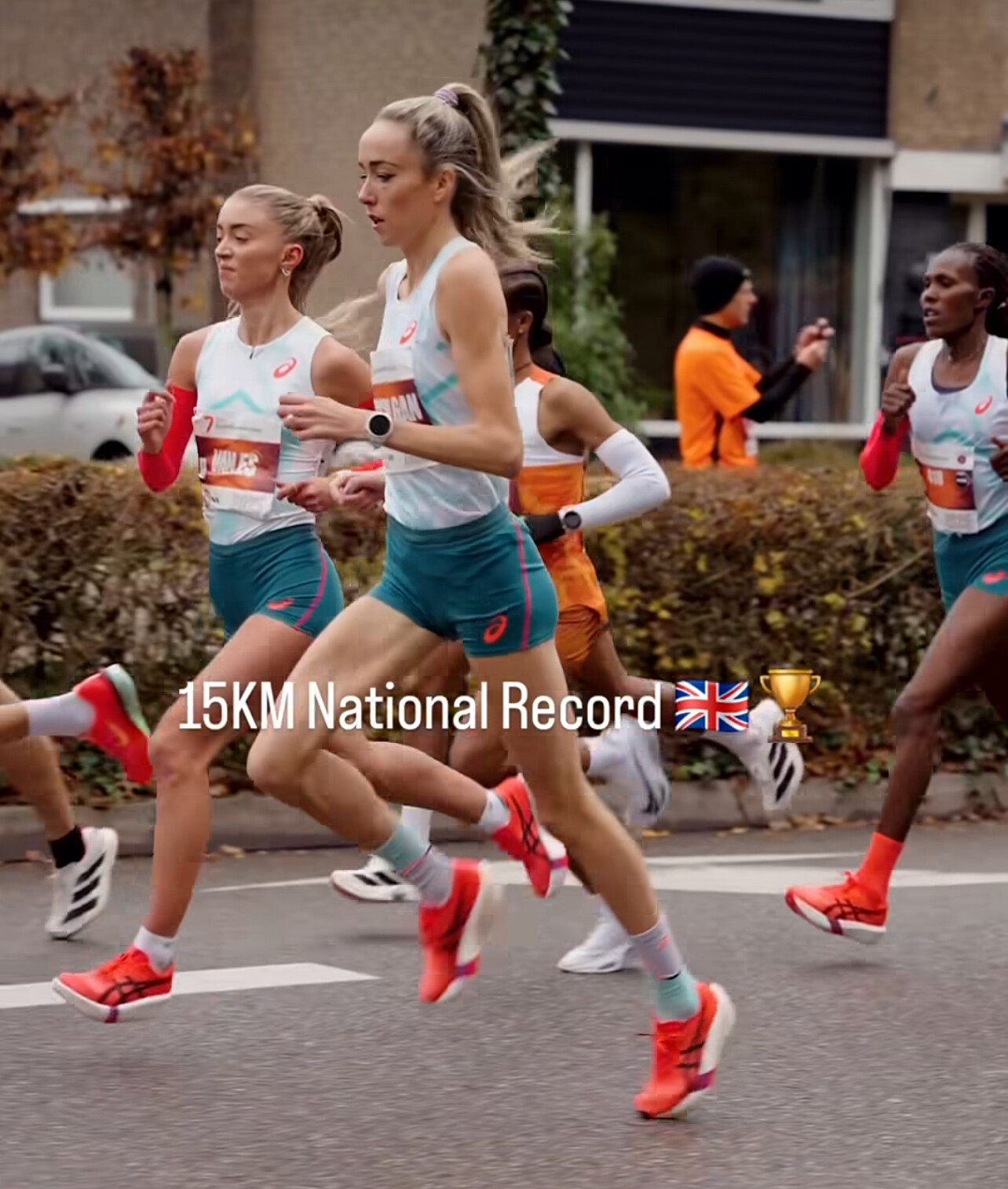
McColgan ran aggressively from the gun, navigating the rolling hills—“Zevenheuvelenloop” literally means “Seven Hills Run”—and holding pace with the world-class lead pack before surging home for the fastest 15K of her career.
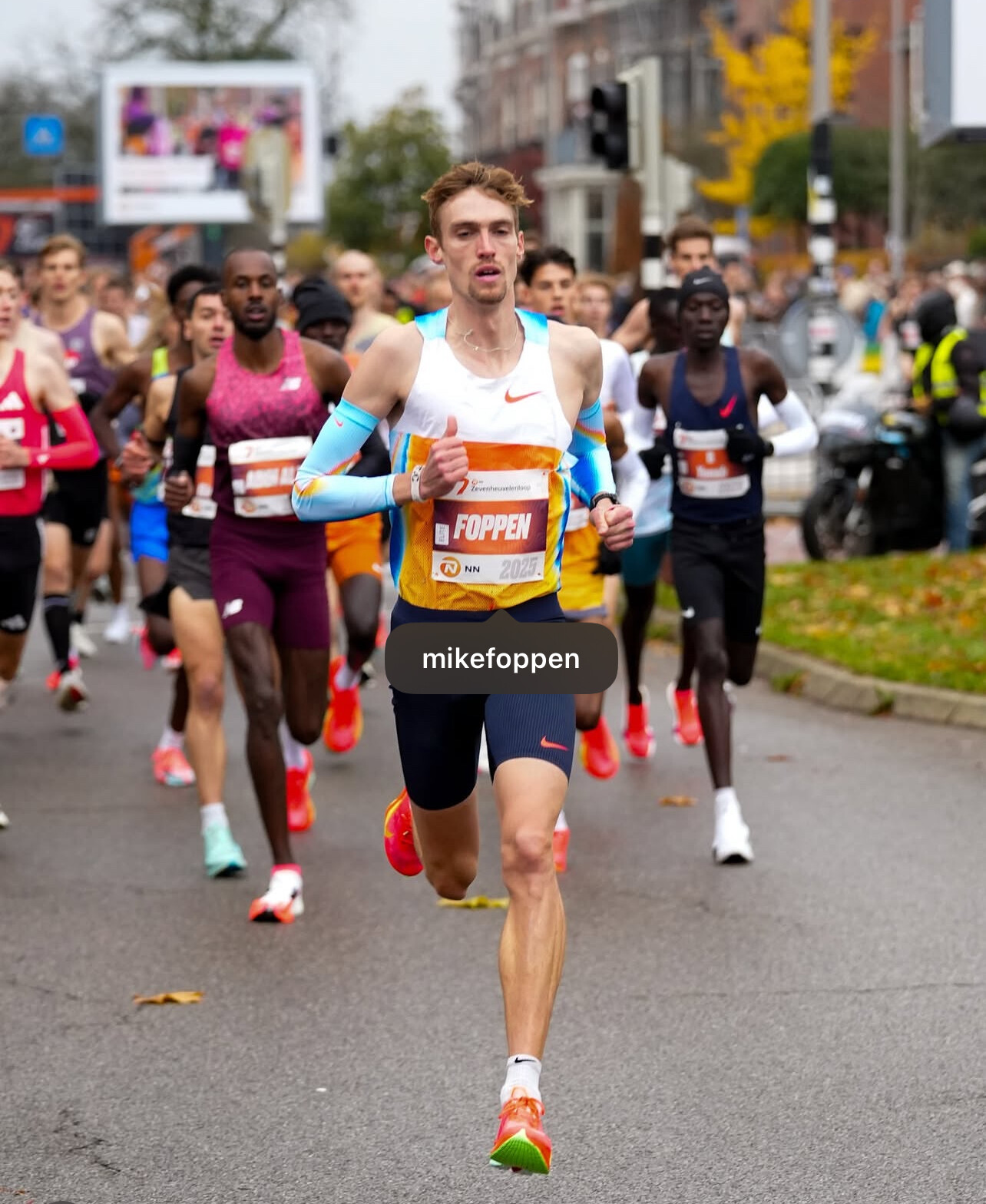
Top Women – Zevenheuvelenloop 15K (2025)
1. Joyciline Jepkosgei (KEN) – 46:53
2. Jane Chelangat (KEN) – 46:59
3. Calli Hauger-Thackery (GBR) – 47:09
4. Eilish McColgan (GBR) – 47:12 (British Record)
McColgan finished just three seconds behind Hauger-Thackery and only 19 seconds behind the winner—an incredibly tight margin at this level.
lTop Men – Zevenheuvelenloop 15K (2025)
1. Selemon Barega (ETH) – 41:35
2. Bernard Kimeli (KEN) – 41:52
3. Birhanu Balew (BRN) – 42:10
The men’s race was fast from the start, with Olympic champion Selemon Barega controlling the front and closing with authority.
A Statement from McColgan
For McColgan, who has endured a difficult stretch of injuries and recovery over the past two seasons, this run marks one of her finest road performances. It signals she is back in top form heading into what promises to be a compelling 2026 season.
by Boris Baron
Login to leave a comment
The NN Zevenheuvelenloop
The NN Zevenheuvelenloop, or Seven Hills Run, is an annual 15-kilometer road race held in Nijmegen, Netherlands. Established in 1984 as a modest event with 500 male participants, it has evolved into one of Europe's premier running events, attracting over 25,000 runners in recent years. Renowned for its picturesque and undulating course, the Zevenheuvelenloop has been the stage for multiple...
more...Edwin Soi’s Second Act: Veteran Track Star Turns Mentor While Leading Kenyan Charge at the Borobudur Marathon
In the tranquil dawn surrounding Indonesia’s ancient Borobudur Temple, Kenya’s Edwin Soi—once one of the world’s deadliest final-lap specialists—returned to the global stage with a performance defined by grit, maturity, and renewed purpose. His 2:20:21 fourth-place finish may have placed him just outside the podium, but it became one of the most compelling stories of this year’s Borobudur Marathon.
On a redesigned course rich in culture and punishing in terrain, Soi showed the poise of an athlete embracing the complexities of his second act—a transition from mid-distance brilliance to marathon resilience.
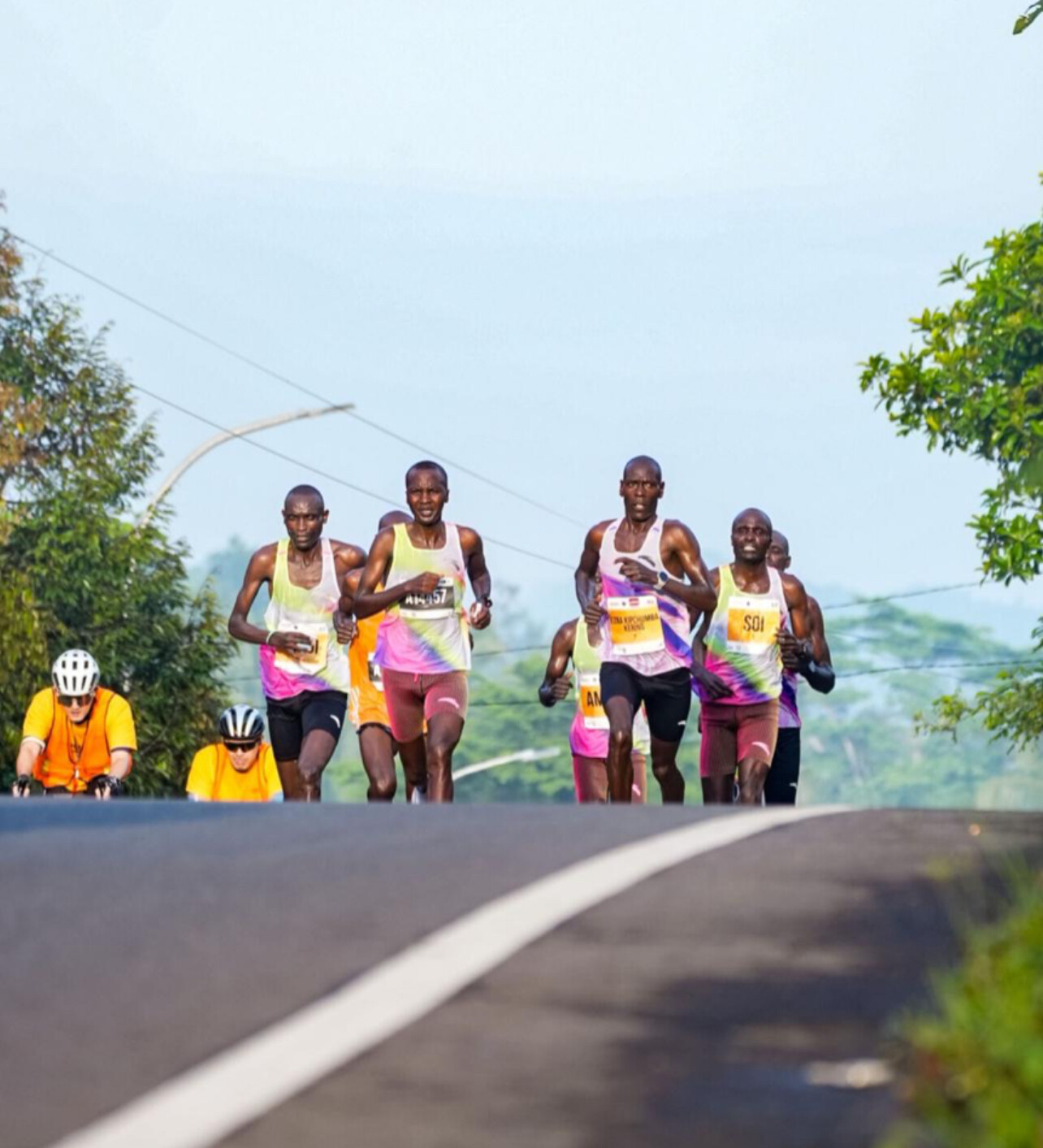
Speaking with My Best Runs after the race, Soi described the deep transformation required to evolve from track icon to marathon contender.
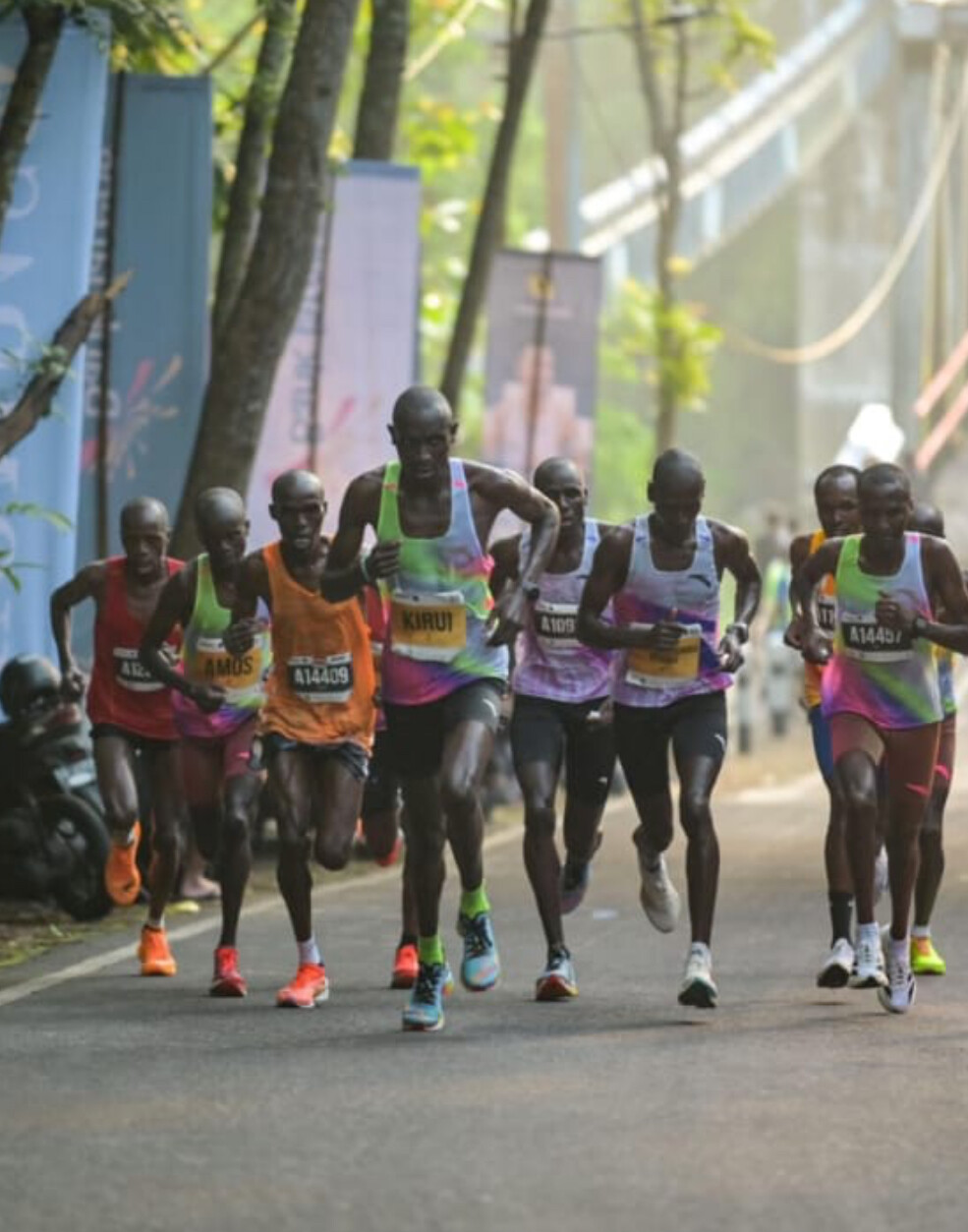
“My career on the track—my Olympic bronze in the 5,000m—was built on the fast finish,” he said. “But the marathon is completely different in the final 5km. You can’t just turn your legs over like on the track; the fuel is nearly gone. The biggest adjustment is shifting from raw speed to relentless endurance.”
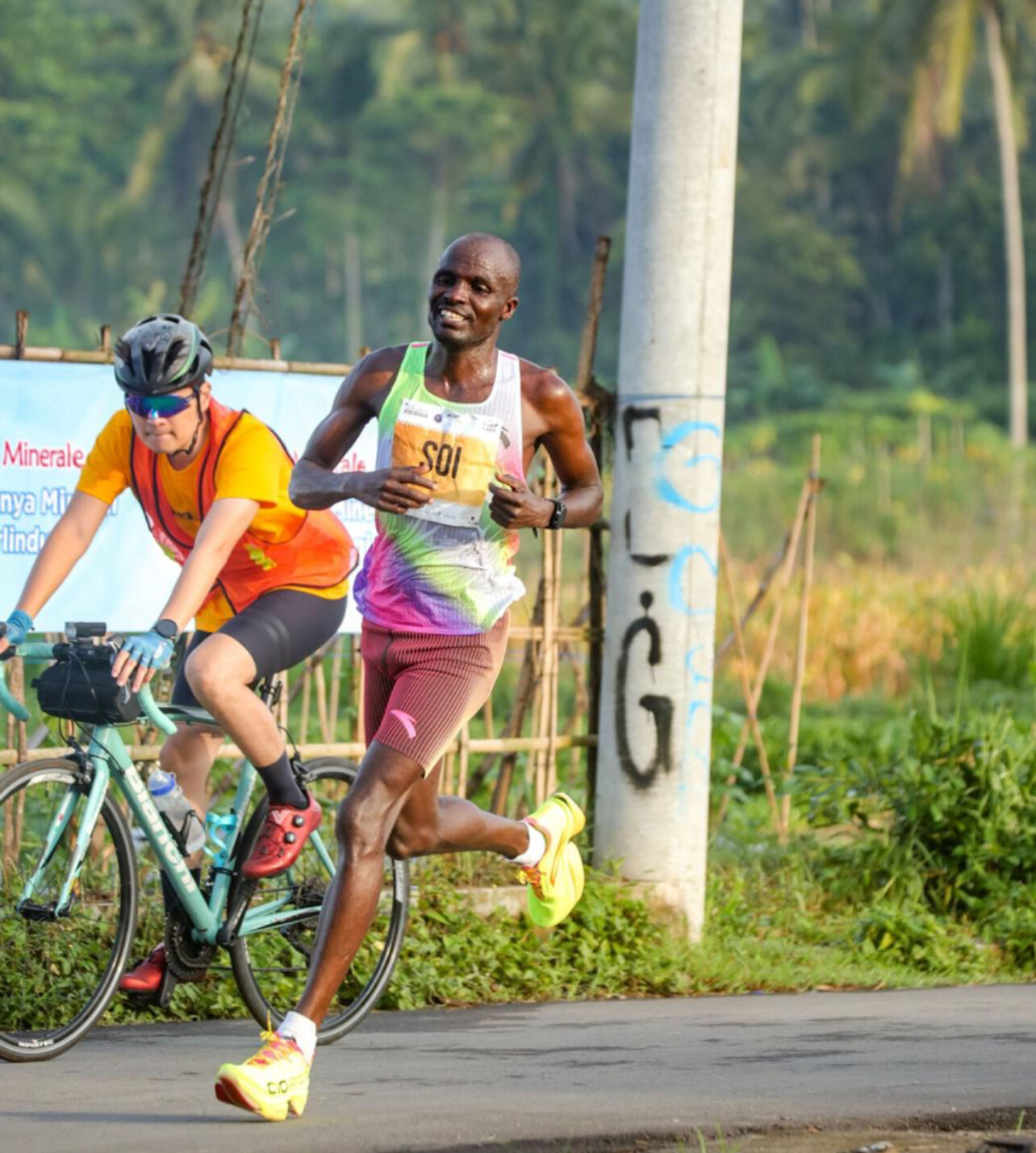
A Course That Demands Respect
The Borobudur route, winding through rice terraces, traditional villages, and the rolling Menoreh highlands, offered no shortcuts—and no mercy. It rewarded steady pacing, intelligent energy management, and deep aerobic strength, qualities Soi has been sharpening as he shifts to longer distances.
“The tropical heat and especially the humidity were the biggest challenges,” he said. “Even with the early start, the air felt heavy and thick as the sun rose. For us, training in the altitude and cooler air of Kenya, it required immense discipline with hydration from the first kilometer.”
The constant undulation of the course forced him into a measured rhythm:
“I had to run more conservatively in the first half to save energy for the inevitable struggle after 25km. But the scenery, the villages, the people cheering… it is one of the most beautiful races I’ve experienced.”
From Track Legend to Builder of Future Champions
Though he remains globally known for his devastating last-lap kick, Soi’s greatest work today may be happening far from stadium lights. In Kuresoi, through Bob Anderson’s KATA programme, he now mentors a rising generation of disciplined young runners.
“This has been a year of deepening purpose,” he said. “My reflection is less about my personal stopwatch and more about the impact I can have on the future of Kenyan running.”
He still trains at a high level, balancing heavy marathon mileage with the demands of leadership.
“Running competitively keeps me sharp and helps me understand the sacrifices my young athletes are making. Every morning, I run alongside them—I’m not just a coach shouting instructions; I am a competitor in the pain cave with them.”
On the misty loops of Kuresoi, he passes down the two things that shaped him: the speed of the track and the patience of the marathon.
Kenyan Depth on Full Display
Despite missing the podium, Soi helped anchor a dominant Kenyan performance in Magelang, Central Java, Indonesia, where the marathon began and finished inside the historic Lumbini Park complex at Borobudur Temple.
The top four in the elite men’s marathon—all representing Kenya—were:
1. Ezra Kipchumba Kering (Kenya) — 2:17:33
2. Alex Oloitiptip Korio (Kenya) — 2:17:43
3. Kiprop Tonui (Kenya) — 2:18:01
4. Edwin Cheruiyot Soi (Kenya) — 2:20:21
A Cultural and Competitive Showcase
The 2025 Borobudur Marathon, elevated to World Athletics Elite Label status, attracted more than 11,500 runners from 38 countries. Its scenery, cultural performances, and enthusiastic supporter crowds generated more than Rp 73 billion in economic impact, cementing its place as one of Asia’s rising marathon gems.
A Legacy in Motion
For Soi, Borobudur was more than a race—it was a declaration. A reminder that champions don’t fade; they evolve.
His footsteps now tell two intertwined stories: a veteran still capable of racing among the world’s best, and a mentor shaping futures in the hills of Kuresoi.
As Kenyan runners painted the leaderboard red, green, and black, Soi’s fourth-place finish stood out not for what it lacked, but for what it symbolized: a champion transforming—and lighting the path for those who follow.
by Robert Kibet
Login to leave a comment
A Record-Breaking Journey: 60 Townhall Athletes Set for NCAA Nationals
For young runners in Kenya, the dream has always extended far beyond the finish line. It is about opportunity, education, and building a future through running. On November 22, sixty alumni of Townhall Athletics will stand on the starting line at the Gans Creek Cross Country Course in Columbia, Missouri—not only as competitors, but as student-athletes whose journeys blend world-class talent with academic ambition.
Their road to the NCAA National Cross Country Championships was forged through nine regional qualifiers, where Townhall athletes earned advancement both individually and through team berths. Each qualifier represents a story that began on rugged high-altitude trails in Kenya and continued in American classrooms—balancing mileage with lectures, workouts with research projects.

A Pipeline for Talent and Learning
Many of these athletes grew up with limited access to formal training facilities—sometimes even without proper running shoes. Through Townhall Athletics, runners such as Brian Musau, Dennis Kipngetich, and Laban Kipkemboi at Oklahoma State University received structured coaching and the mentorship needed to secure life-changing scholarships.
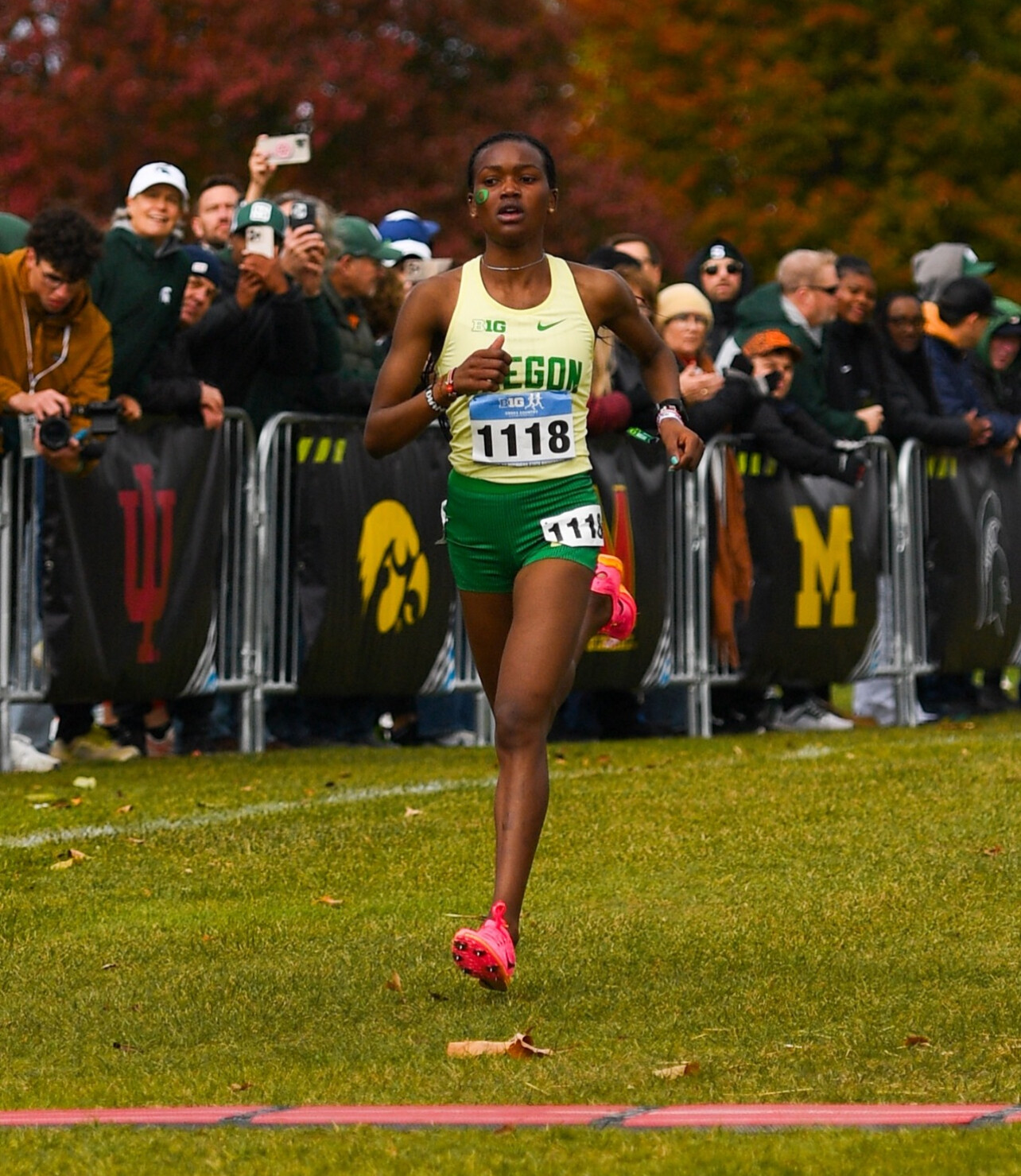
In Florida, Kelvin Cheruiyot, Desma Chepkoech, and Judy Chepkoech have combined tactical racing with strong academic records, while Debora Cherono at Texas A&M has emerged as a respected leader both on campus and on the track.
In the Mountain West Conference, New Mexico’s Evans Kiplagat and Vincent Chirchir continue to show how academic and athletic development go hand in hand. At Iowa State, Joash Rutto and Mercylin Kirwa have built reputations for consistency and endurance, exemplifying the discipline long associated with Kenyan distance running.
Other Townhall standouts, including Meshack Kuiyo at Boise State and Gilbert Rono at Tulane, carry the hopes of their programs while pursuing degrees and competing at the top level of collegiate sport.
Gans Creek: Where Experience Meets Ambition
Gans Creek is known for its rolling hills, long grass straights, and technical curves—terrain that demands smart pacing and a strong finish. For Kenyan athletes who grew up training at altitude, the course offers a blend of familiarity and challenge, providing a perfect stage to showcase endurance, resilience, and race intelligence.
Lining up against top collegiate athletes from across the United States and around the world, Townhall runners bring not only speed but also the mental fortitude and tactical awareness refined through years of structured training back home.
Voices of Support
Kenyan sports leaders continue to stress that athletic success must be paired with education to secure a long-term future.
Barnaba Korir, AK Youth Development Director and NOC-K First Vice President, emphasizes:
“These scholarships are more than athletic opportunities—they are life-changing. Education ensures our youth can thrive long after the final lap.”
Ibrahim Hussein Kipkemboi, Director of the Africa Athletics Development Centre, adds:
“Blending study with sport protects athletes from early burnout and equips them for the future.”
Athletics Kenya President Lt. Gen. (Rtd) Jackson Tuwei reinforces the message:
“The goal is not just fast runners, but well-rounded individuals. Education and athletics go hand in hand for global success.”
Impact Beyond the Course
These sixty qualifiers demonstrate how structured development and academic pathways can open doors for rural youth across Kenya. Their progress validates youth programs, inspires younger athletes, and shows how scholarships allow talent to flourish both on the track and in the classroom.
The Journey and the Finish Line
On race day, athletes such as Rosemary Longisa and Caroline Jepkorir of Washington State University, Evans Tanui of Arizona, and Diana Cherotich of Oregon will carry far more than personal ambition. They will carry the dreams of families, coaches, and communities who believed in them from the start.
Every stride over Missouri’s rolling terrain reflects years of discipline, sacrifice, and the pursuit of excellence—both academic and athletic.
When the final lap is run, results will matter. But so will the journey that brought them here. From dusty Kenyan tracks to the championship stage at Gans Creek, Townhall athletes have shown that with vision, support, and resilience, success in running and life can grow together.
As they race for NCAA glory, they continue to inspire a generation to see that the finish line is not an end—it is, in fact, the beginning.
by Robert Kibet
Login to leave a comment
Introducing the 200,000 KES KATA Athletics Performance Contest
To further motivate and reward our dedicated athletes, we’re launching the KATA Athletics Performance Contest—a biannual competition designed to celebrate the top earners among our athletes and camps.
How It Works:
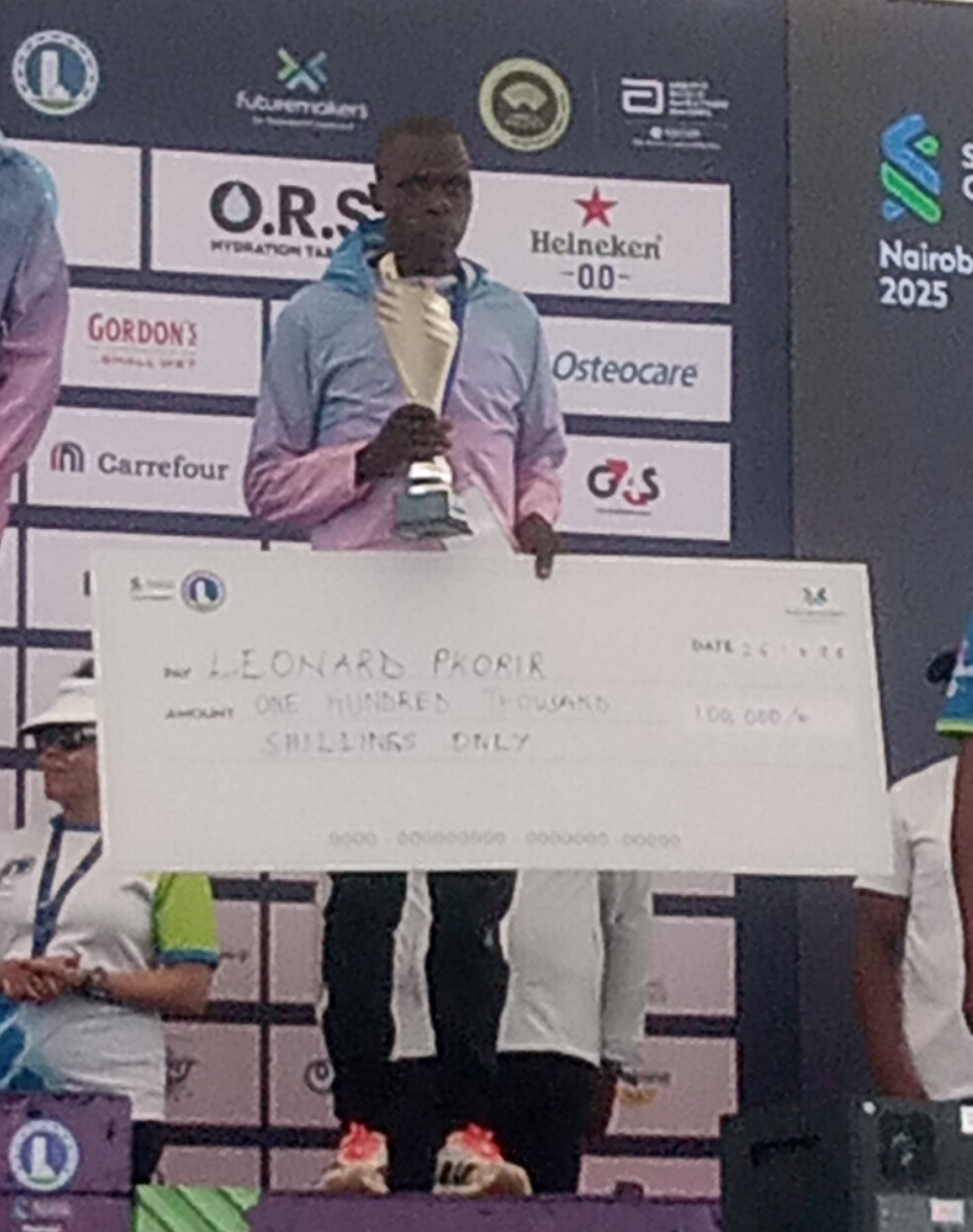
Twice a year, KATA will reward the athlete who has earned the most prize money by sending 15% of their winnings to KATA’s bank account. The responsibility lies with the camp or farm operator to ensure these funds are submitted, as results only count once the money is received in our account.
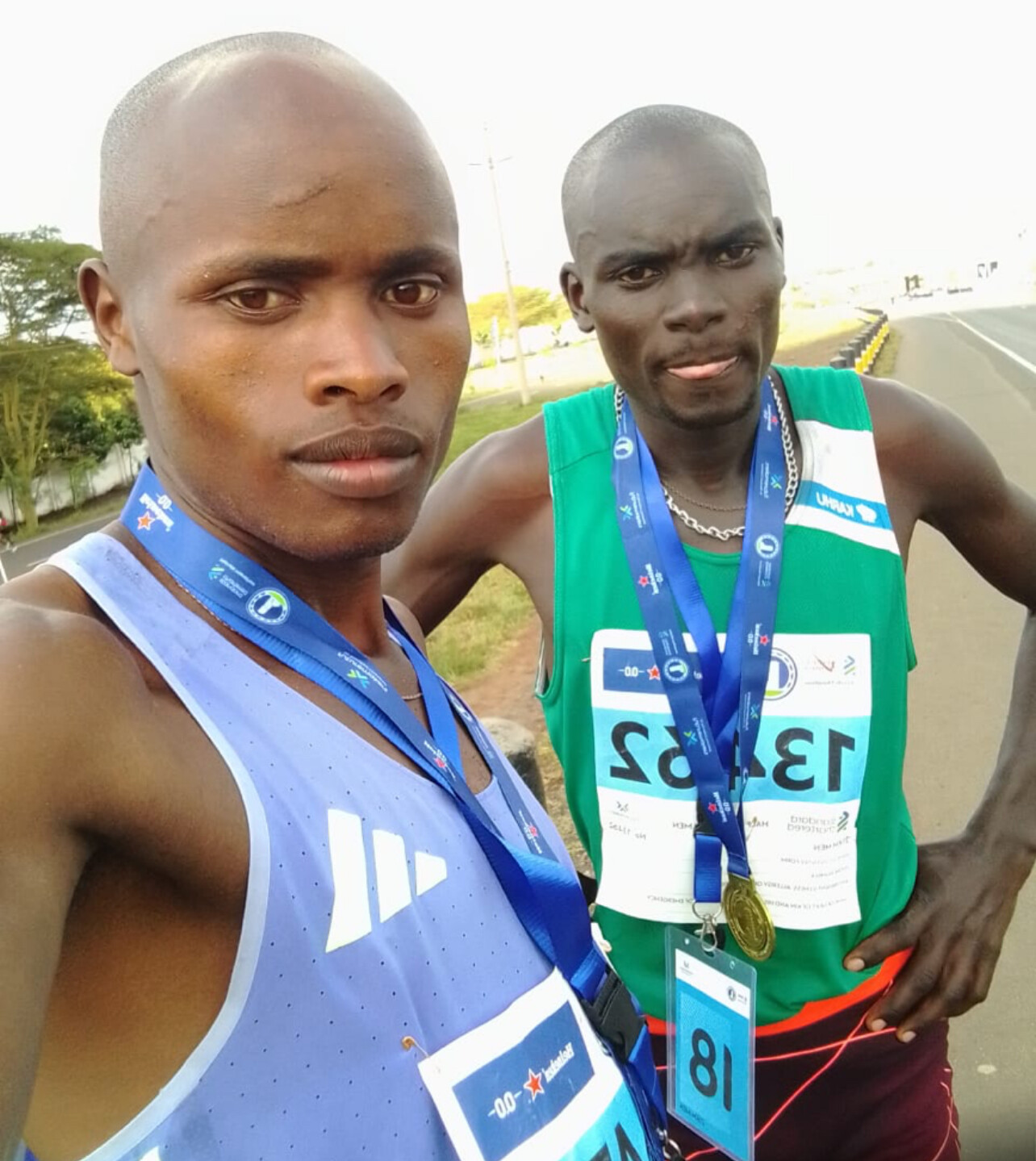
The first contest period will conclude at the end of January 2026, allowing for any delays in prize money payments. The second contest will wrap up at the end of July. This twice-annual schedule ensures everyone has ample time to report and account for their winnings.
Camp and Athlete Rewards:
At the end of each contest period, the individual athlete who has earned the most prize money will receive a 25,000 KES bonus. Additionally, the top three KATA camps—those whose athletes collectively submit the highest total winnings—will each receive 25,000 KES.
In other words, each contest distributes a total of 100,000 KES: 75,000 KES to the top three camps (25,000 each) and 25,000 KES to the top individual athlete. Over the course of a year, that’s a total of 200,000 KES in rewards.
Conclusion:
Because there can be delays in receiving prize money, the contest periods are extended slightly to ensure all earnings are accounted for. We’re excited to see our athletes and camps compete and look forward to celebrating their achievements together!
by Bob Anderson
Login to leave a comment
BingwaFest Returns: A High-Stakes Track Opportunity for KATA Athletes
After a competitive season across Nakuru, Siaya, and Machakos, Nairobi is set to host the Season 2 BingwaFest Nairobi Edition on November 22 at Kasarani Stadium. For KATA athletes spread across Kenya, this meet is far more than another race on the calendar—it’s a chance to shine on home soil, compete for substantial prize money, and demonstrate the strength of regionally developed talent. Powered by Betika, the Nairobi edition underscores the resurgence of Kenyan athletics and the rising impact of local competitions.
The season opened in Nakuru, where Maurine Jepkoech Chebor stamped her authority by sweeping both the women’s 5,000m and 10,000m. In the men’s events, Richard Etir and Daniel Kimaiyo delivered standout performances that set an early standard. Their efforts framed a season defined not just by speed and endurance, but by smart racing and tactical maturity.
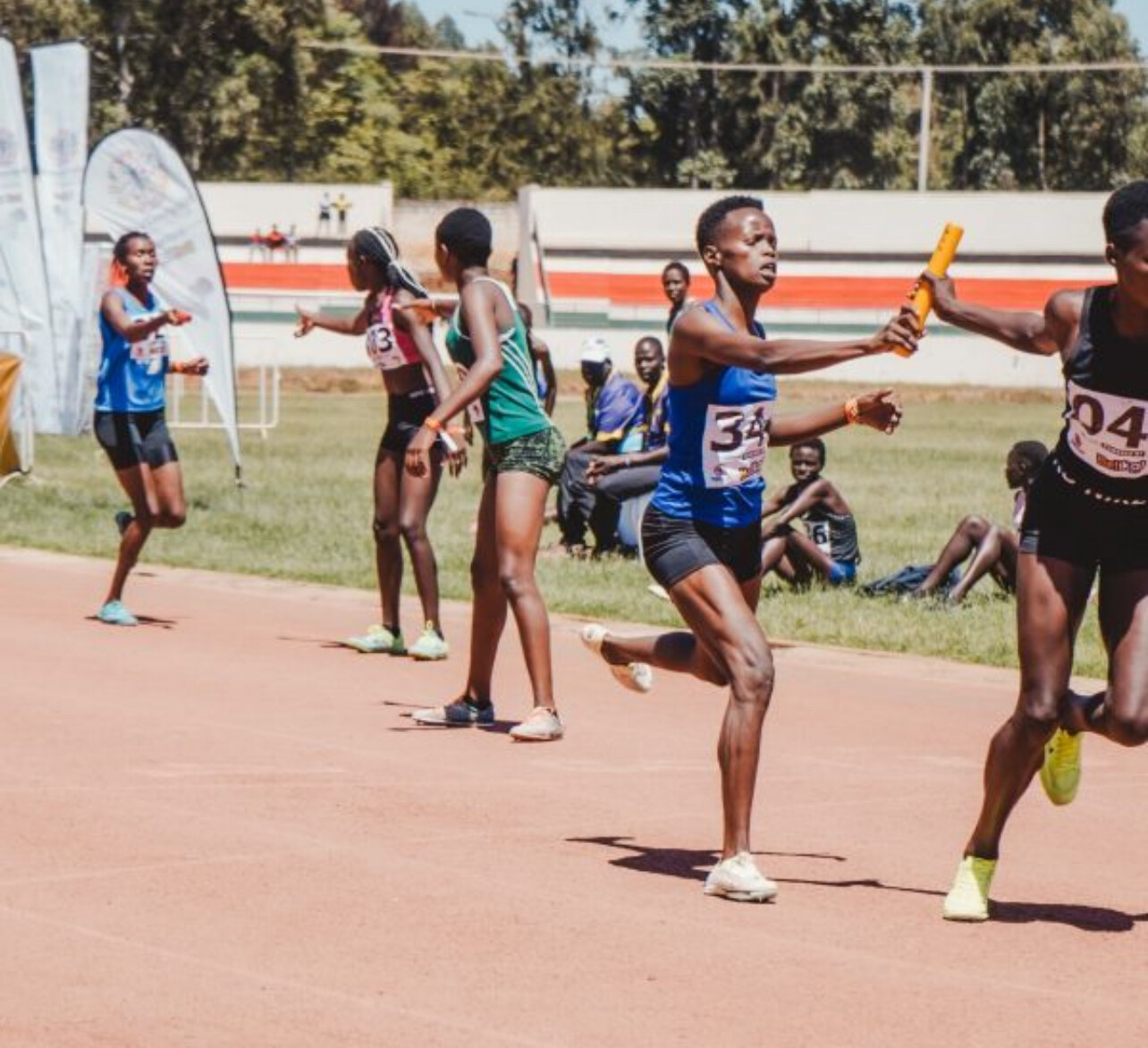
Siaya continued the trend, with Miriam Chebet taking double gold in the 5,000m and 10,000m. “Winning both races is a big confidence boost,” she said after her victories. “I hope to perform even better.” Titus Kiprotich provided a masterclass in patience and pacing to secure the men’s 10,000m. In Machakos, veterans Glorious Chepkurui and Francis Langat showcased consistency and experience, winning their respective 5,000m and 10,000m races with measured execution.
KATA athletes have been prominent across the domestic circuit, bolstered by strong results at major recent events such as the Standard Chartered Nairobi Marathon 2025. Under the guidance of Coach Philemon Kiptoo of KATA001 Kapcherop, athletes have not only raced well—they have emerged as crowd favorites, blending disciplined training with tactical sharpness. Their appearance in Nairobi reinforces the rising credibility of Kenya’s regional training hubs and shows that structured local programs can produce athletes capable of competing at international levels.
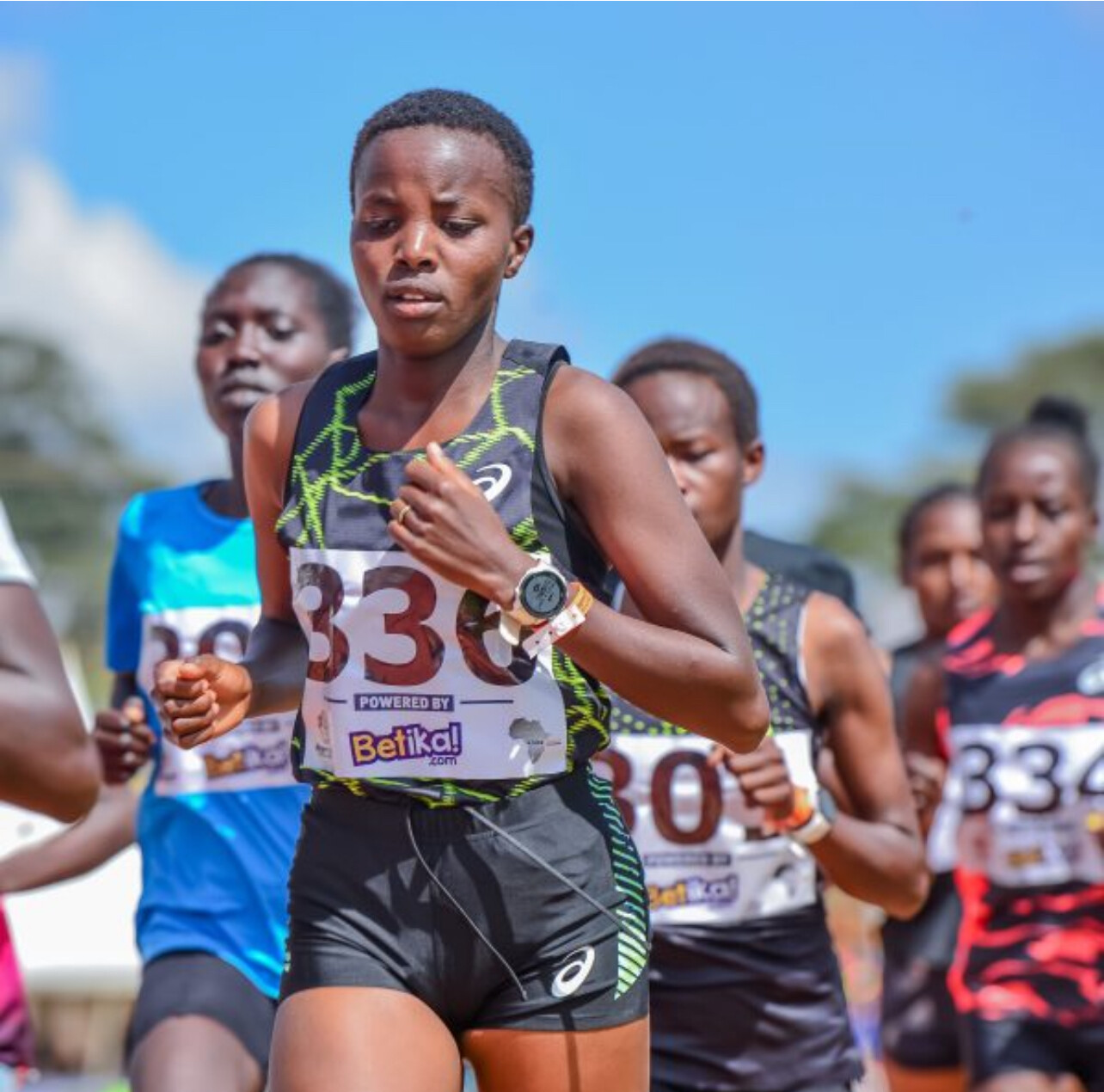
A distinctive factor behind the KATA program’s momentum is the community-driven economic engine supporting its athletes. Bob Anderson’s potato farming initiative—spread across the highland regions where KATA camps operate—has become a vital funding source. Revenue from these farms helps cover training expenses, travel costs, and essential equipment, allowing athletes to focus fully on performance. This model of local empowerment gives athletes the stability to build careers at home rather than chasing uncertain opportunities abroad.
This year’s event also marks the reopening of Kasarani Stadium following CHAN football upgrades, offering athletes a world-class track and a renewed sense of pride. For many, racing at Kasarani is deeply personal. As Timothy Cheruiyot has said of past editions, competing at home brings a sense of belonging and motivation unmatched by international travel. KATA athletes will look to create similar moments across the full program of events—from the 100m to 400m sprints, 800m and 1,500m middle distances, 5,000m and 10,000m long-distance races, and both the 4×100m and 4×400m relays.
The incentives are significant. Individual winners will earn 250,000 shillings, with 150,000 for second place and 100,000 for third. Relay teams will compete for up to 300,000 shillings. These rewards highlight a growing truth: Kenyan athletes can build sustainable careers through domestic competitions.
For KATA athletes, the return to Nairobi is a moment where disciplined training, homegrown support, and community-driven funding intersect. It’s proof that local competitions can create real opportunities—and that economic empowerment initiatives, like the KATA potato program, can directly fuel athletic success. As Kasarani opens its gates on November 22, the stage is set for Kenya’s rising stars to make their mark and keep the momentum of a nationwide athletics revival firmly in motion.
by Robert Kibet
Login to leave a comment
World Athletics Announces Finalists for Photograph of the Year
World Athletics has revealed the three finalists for its prestigious Photograph of the Year award—an annual honor recognizing the most powerful images captured across the global track and field season.
The finalists showcase emotion, danger, and artistry from three different continents:
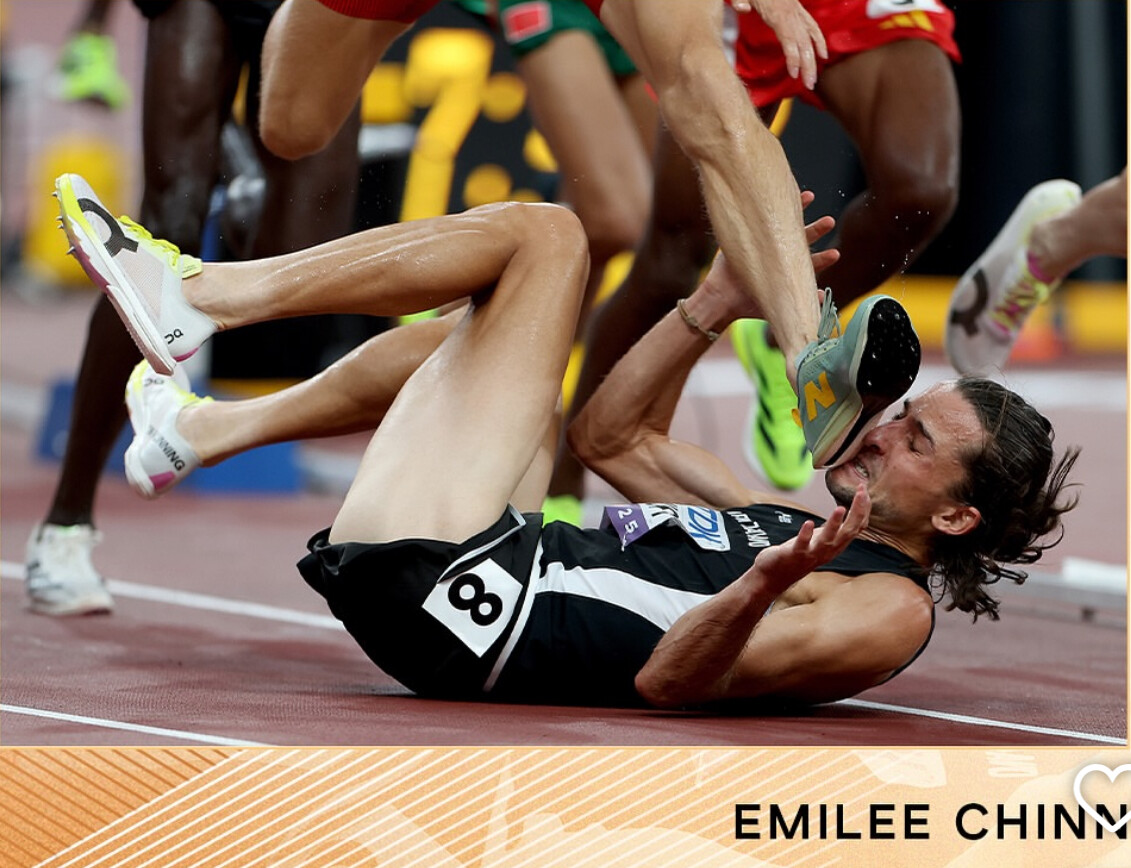
• Fabrizio Bensch (Germany) captured a celebratory and intimate moment between Noah Lyles and Tara Davis-Woodhall at the World Championships in Tokyo, just after they medaled in the 100m and long jump.

• Emilee Chinn (USA) froze a dramatic near-disaster during the steeplechase prelims, when George Beamish went down and Jean-Simon Desgagnés’ spikes came frighteningly close to his face.
• Vegard Grott (Norway) created a striking, shadow-filled composition during the iconic Dream Mileat the Bislett Games in Oslo.
Do the winning photographers receive prize money?
World Athletics awards the honor and global recognition, but no prize money is given directly to the photographer. The award is part of the annual World Athletics Awards program.
Login to leave a comment
20-Year-Old Becomes Youngest Ever to Earn the Seven Star Medal
A 20-year-old British runner has officially become the youngest person in history to complete all seven World Marathon Majors and earn the coveted Seven Star Medal, Abbott World Marathon Majors announced.
Lucy Scott, from Bishop’s Stortford in Hertfordshire, completed the seven marathons over an 18-month stretch: Tokyo, Boston, London, Berlin, Chicago, New York City, and Sydney. She secured the honor on November 2 when she crossed the finish line at the New York City Marathon, making her the “youngest Seven Star athlete” to date.
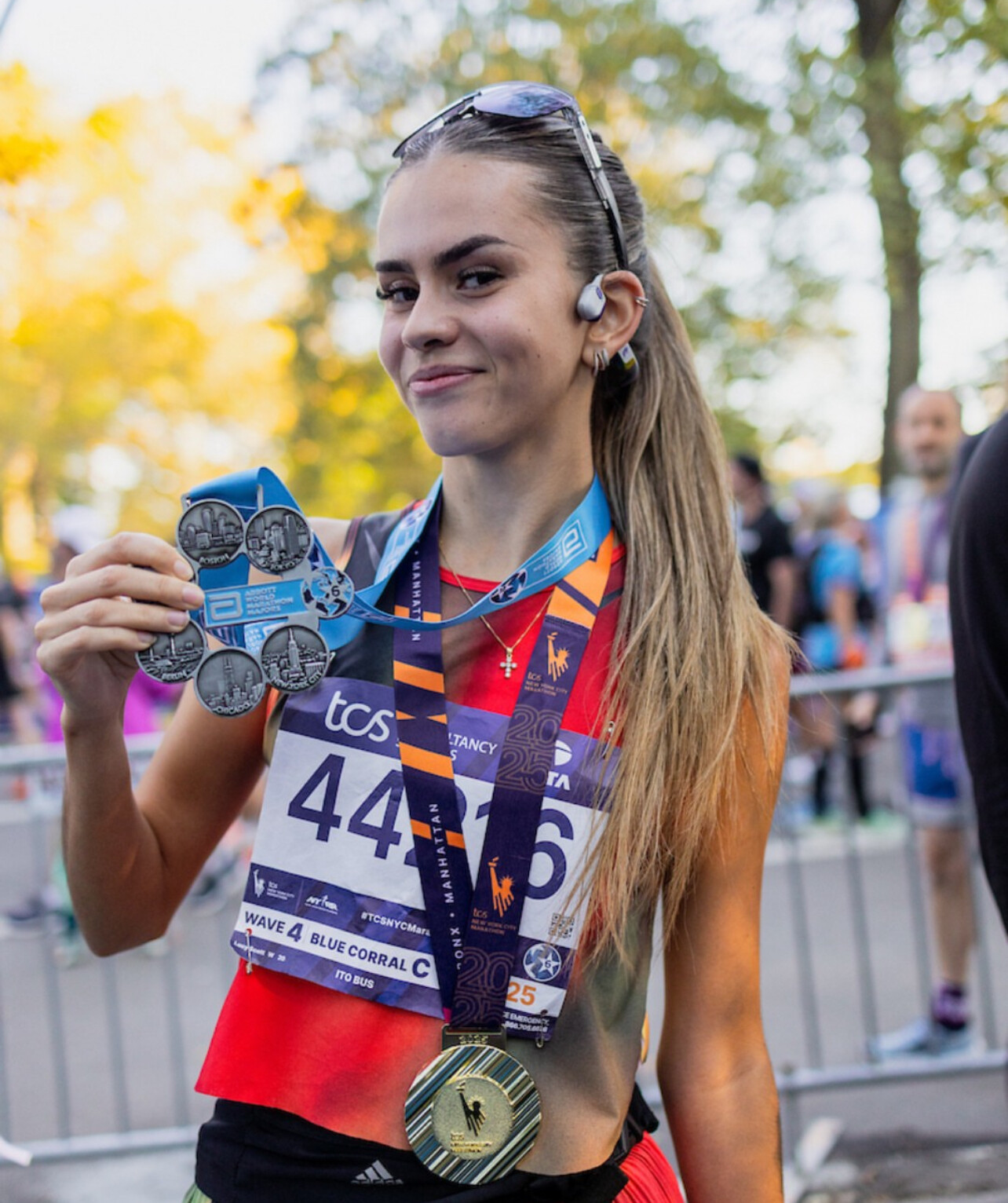
Scott, a history student at the University of Nottingham, only began running in 2024. “It’s the best thing I’ve ever done,” she said.
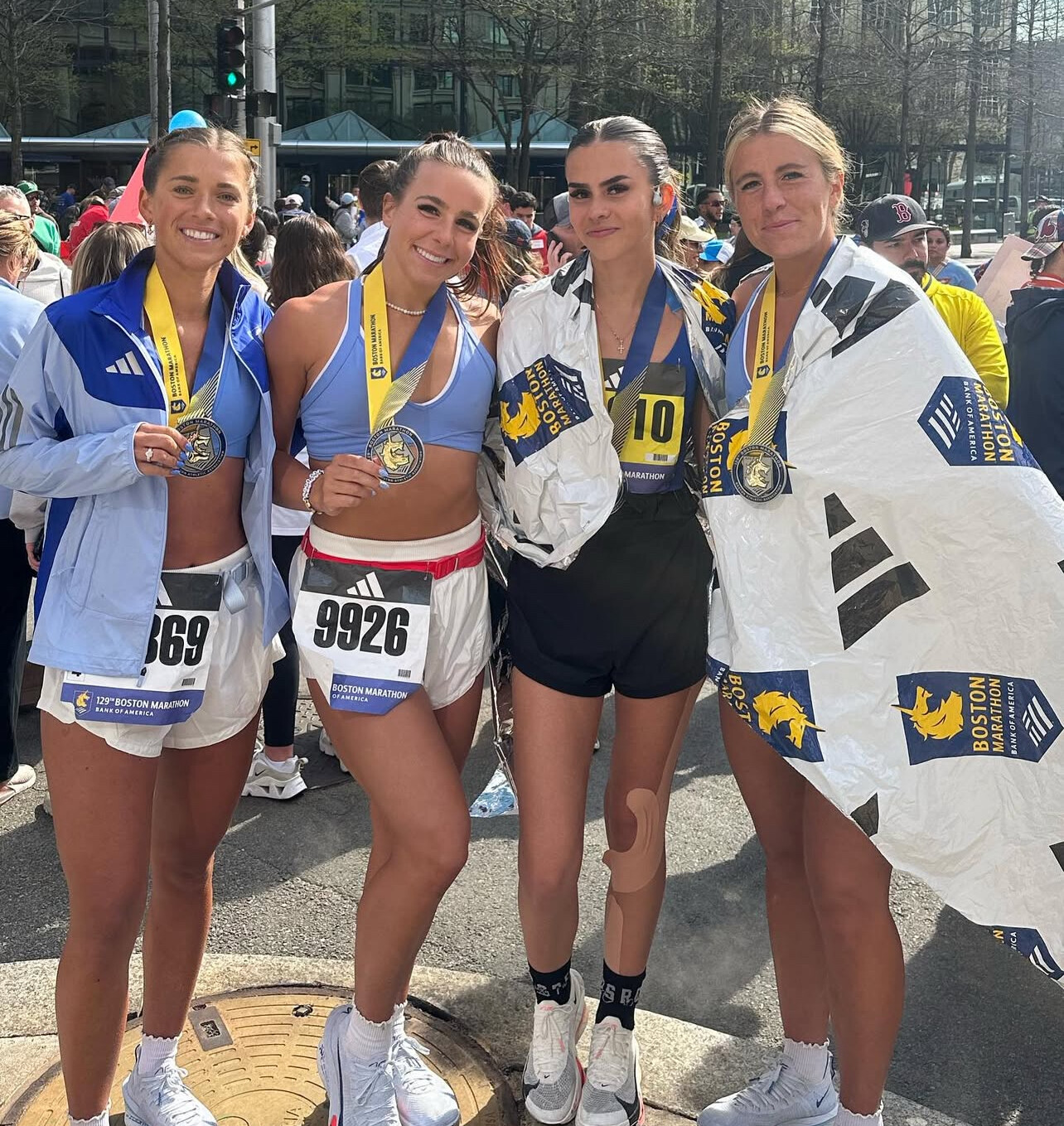
Introduced in 2016, the Six Star Medal originally honored runners who completed the six established majors. The series expanded in November 2024 with the addition of the Sydney Marathon, creating the Seven Star Medal Scott has now earned.
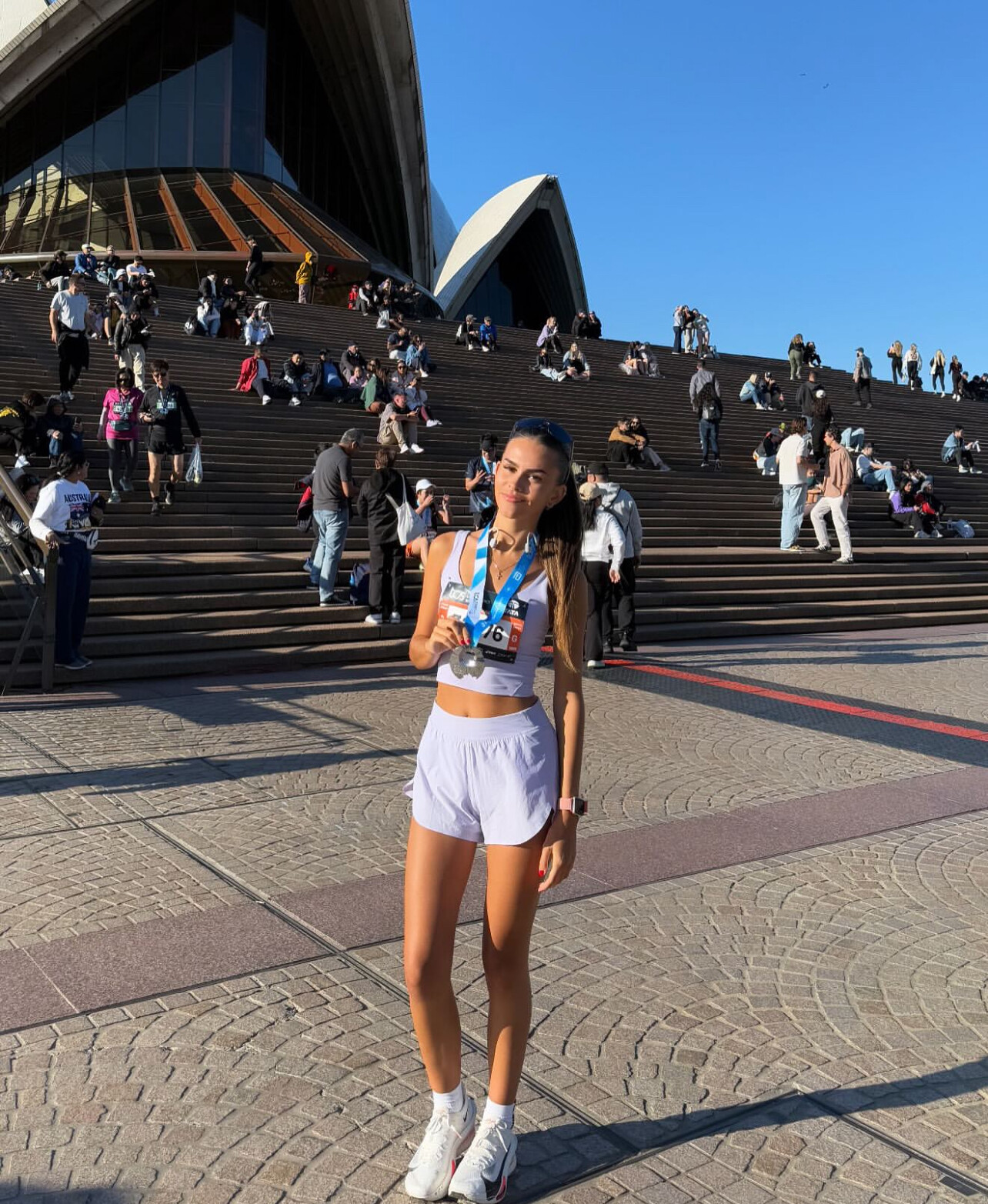
Despite having no previous running experience, Scott took up the sport during her first year at university. Her debut marathon came in 2024 at the TCS London Marathon, where she raised £7,685 for The Essex Disabled Sport Foundation.
She credits her father, John Scott, as her inspiration. He had been pursuing the Six Star Medal before the Covid pandemic, but injuries prevented him from completing Tokyo and Boston. Lucy has since carried his dream forward, with her parents traveling the world to cheer her on at every finish line.

“I think they’ve loved the experience as much as I have,” she said.
Looking ahead, Scott plans to run her third London Marathon in April 2026—“if I can balance university and fundraising,” she noted. She also hopes to pursue the proposed Nine Star Medal, which Abbott World Marathon Majors is considering adding by including Cape Town and Shanghai.
“If I can get a place, I would love to do that,” she said.
by Boris Baron
Login to leave a comment
Women’s 100 Meters to Be Contested in All Three Rounds on One Day at the 2028 Los Angeles Olympics
World Athletics has confirmed a major schedule change for the 2028 Los Angeles Olympic Games: all three rounds of the women’s 100 meters—including the final—will take place on the same day, July 15, 2028.
The morning session will open with the preliminary round featuring universality athletes from smaller nations, followed by the first round with the full roster of qualified sprinters. That evening, the championship stage will unfold rapidly with both the semifinal and the final, closing out an action-packed first day on the track.
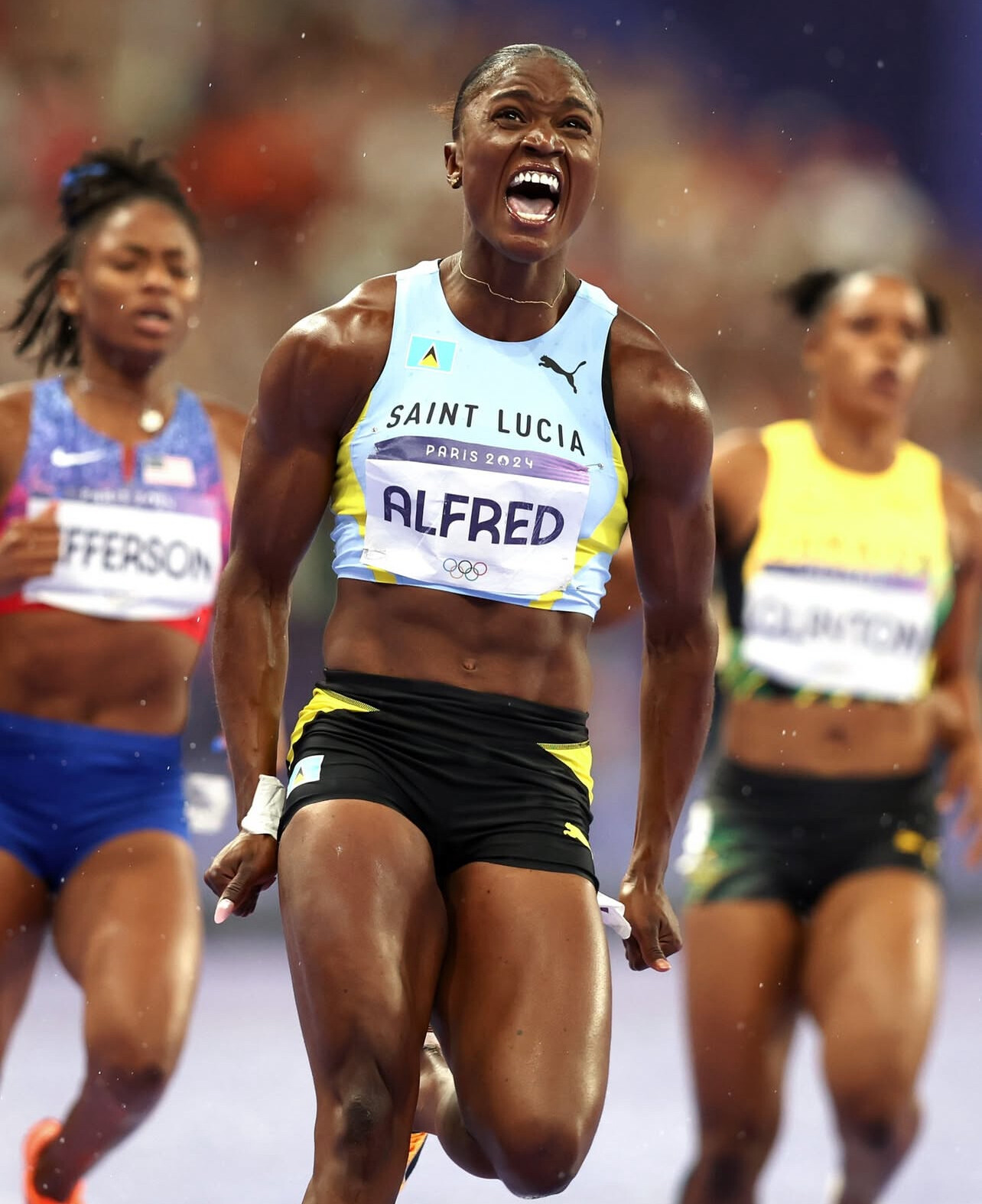
This format marks a significant shift from the usual two-day schedule used at recent Olympics and World Championships. Traditionally, the first round and semifinals are separated by many hours—often by a full day—to maximize recovery. Compressing the event into a single day places a greater emphasis on depth, consistency, and the ability to deliver multiple high-level performances in short succession.
Why the Change?

LA28 organizers and World Athletics have collaborated on a schedule designed to deliver a fast-moving, high-impact viewer experience on opening day. Condensing the women’s 100m serves several goals:
• A blockbuster start to the athletics program, with one of the Olympics’ most iconic events featured immediately.
• Improved broadcast flow, concentrating marquee moments into unified viewing windows.
• Greater schedule flexibility for the remaining days, especially for athletes competing in multiple sprint events.
Officials have also noted that elite sprinters frequently run multiple rounds in a single day during national trials and certain elite meets. However, doing so on the Olympic stage—with global pressure and championship-level stakes—adds a new layer of intensity.
What About the Men’s 100?
While the women’s 100m will be fully completed on July 15, the men’s 100 meters will remain on a two-day format. The men’s prelims and first round will also take place on July 15, but the semifinal and final are scheduled for the following evening, July 16. This staggered approach further highlights how unique the one-day women’s format will be in Los Angeles.
A Big Opening Day
The women’s 100m program will headline a Day 1 that also includes:
• Women’s Shot Put Final
• Men’s 10,000m Final
With sprinting, endurance, and power all showcased, July 15 is positioned to deliver one of the most compelling opening days in Olympic track and field history.
by Boris Baron
Login to leave a comment
This Is What It Really Takes to Get Faster
Every runner who dreams of shaving seconds—or minutes—off their personal best has to confront one truth: speed is earned through consistent work, not a single breakthrough workout.
Build Your Base First
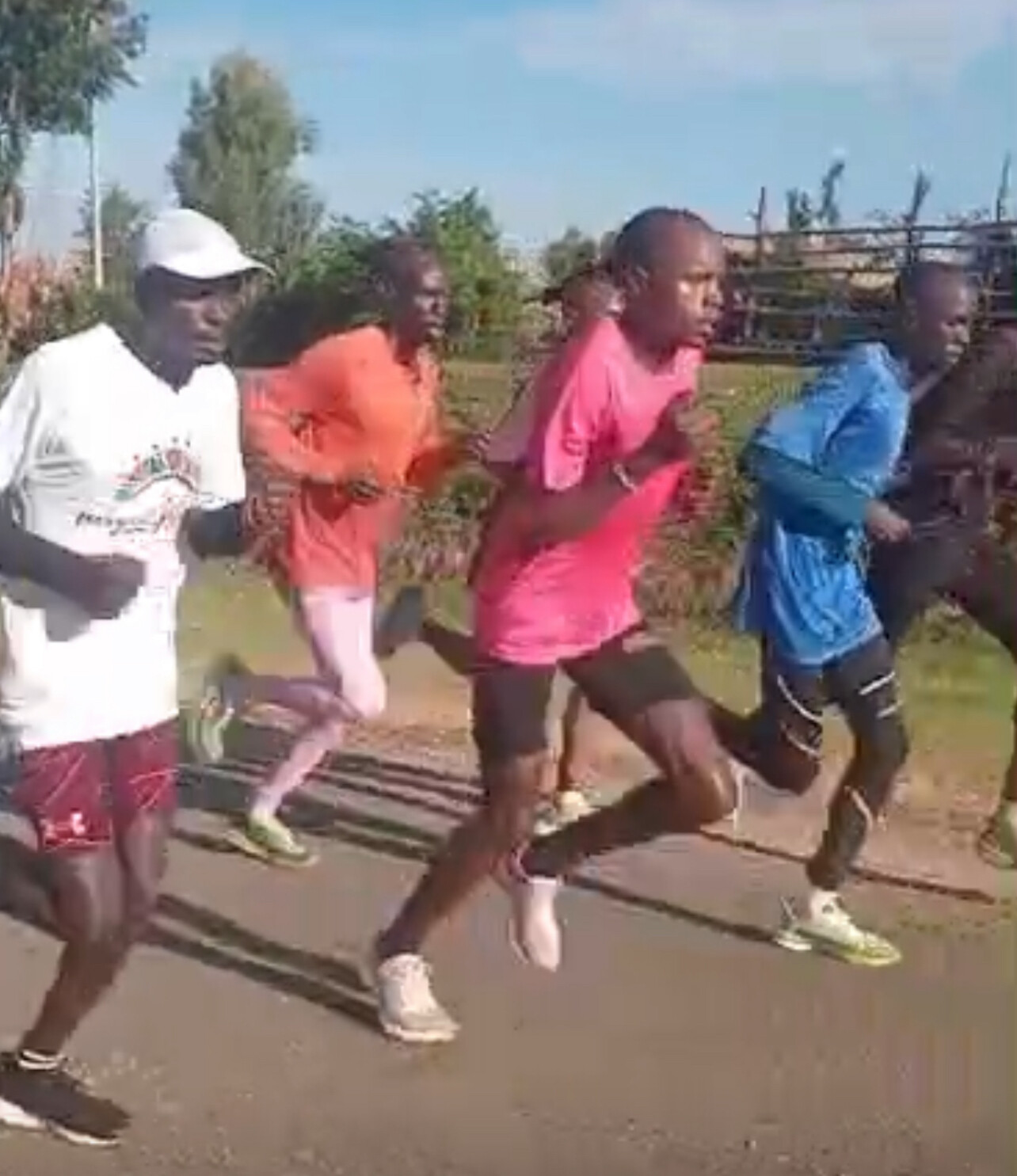
“You can’t get faster if you don’t already have an aerobic base,” says Kelly Roberts, RRCA-certified coach and founder of the Badass Lady Gang. That base comes from running three to four times per week for about 40 minutes at a conversational pace. Once you can sustain that comfortably, you’re ready to introduce speed work.

Speed Comes From Teaching Your Body to Run Fast
“Speed doesn’t come from one magical workout,” says Jes Woods, RRCA-certified Nike Running coach. “It comes from consistent speed work. That’s where you actually teach your body how to run fast.”
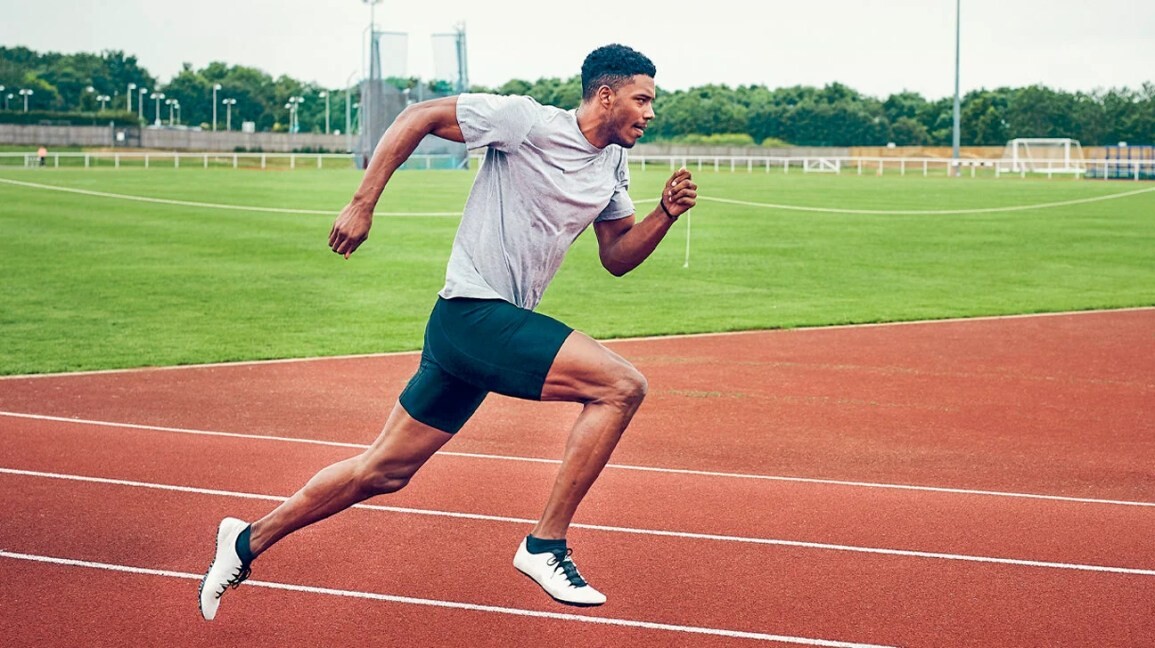
Speed work develops efficiency: better oxygen use, quicker lactate clearing, and greater tolerance for harder efforts. In short, it trains your body to handle more stress—and recover from it—at faster paces.
What Speed Workouts Look Like
You can build speed in several ways:
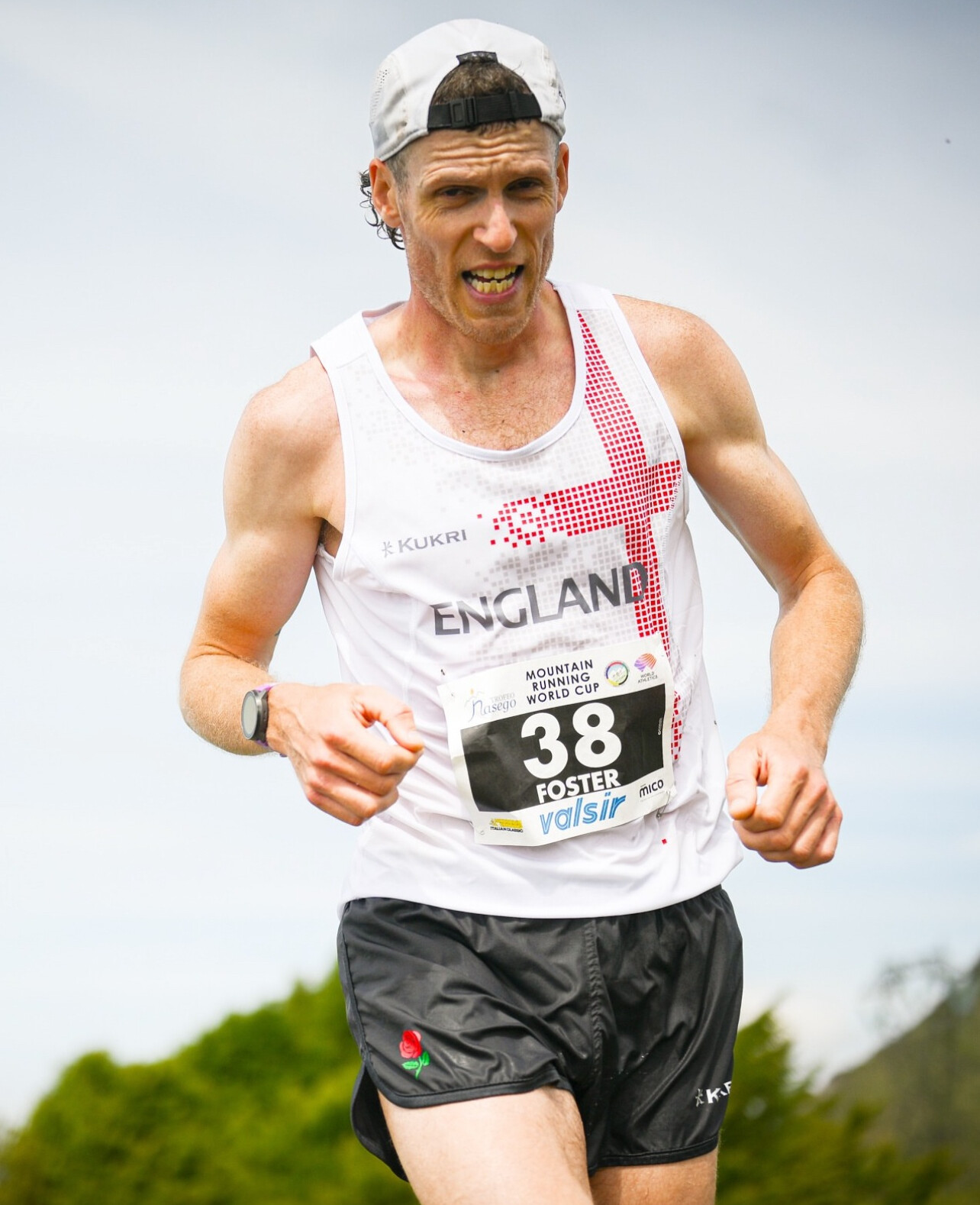
• Intervals: Fast segments with recoveries.
• Fartleks: Speed play with less structure.
• Tempo runs: Steady efforts just outside your comfort zone.
• Hill sprints: Strength and power mixed with speed.
A solid weekly plan to improve speed usually includes 1–2 speed sessions, 1–2 easy runs, one strength day, and a long run. Easy runs promote recovery, strength training builds power and stability, and long runs expand endurance—all essential pieces alongside your speed days.
“That balance allows your body to stress, adapt, and recover in the right proportions,” Woods says.
The Mental Side of Getting Faster
Speed training isn’t just physical. Roberts says the hardest part is managing the mental noise when things get uncomfortable.
“When you run faster, everything gets louder,” she says. “Your legs scream, and the little parrots on your shoulder scream back.”
Her advice: pay attention to self-talk and lean on mantras. One of her go-tos is, “I don’t know if I can do this. Let’s see what happens when I give my best.”
When You’ll Start Seeing Results
If you train consistently, most runners notice progress in six to eight weeks. Research backs this up: intermittent sprint training improved 10K times in six weeks in one study, and VO₂ max increased significantly after eight weeks of aerobic training in another.
“You’ll feel different,” Roberts says. “Your runs will feel easier as your aerobic strength improves.”
Beginner vs. Experienced Runners
Genetics, training history, and consistency all shape how quickly you’ll get faster. Some runners respond more quickly, while others chip away over time. But beginners often see the biggest gains because there’s more room for improvement.
“If you’re looking to get faster, you’ll never see bigger PR swings than you will as a new runner,” Roberts says.
The Bottom Line
Speed is attainable for every runner. Build your base, train consistently, mix your workouts, and practice staying calm when things get uncomfortable. Over time, the seconds will fall off—and you’ll become a faster, stronger version of yourself.
by Boris Baron
Login to leave a comment
Weldon Langat Shines Again at Sachangwan KATA Running Camp Time Trial
The third edition of the KATA Sachangwan Running Camp K 07 Time Trial on the scenic yet demanding Salgaa–Rongai route was held under bright, sunny skies with temperatures at 64°F (18°C), 67% humidity, light winds of 2 mph, and a moderate UV index of 4.5. Despite the tough weather and rolling terrain, athletes displayed tremendous resilience and speed, once again proving why the KATA Time Trials are a breeding ground for Kenyan endurance talent.
In the men’s 10km, Weldon Langat (19 years, Bib 025) extended his dominance on this course, unleashing a powerful finishing kick to win in 30:49. Langat has made the Salgaa–Rongai route his own, demonstrating both tactical awareness and strength through the hills. Ronald Cheruiyot (25 yrs, Bib 015) followed in 34:24, while Sammy Sang (35 yrs, Bib 022) took third in 37:50, rounding out a solid men’s podium.
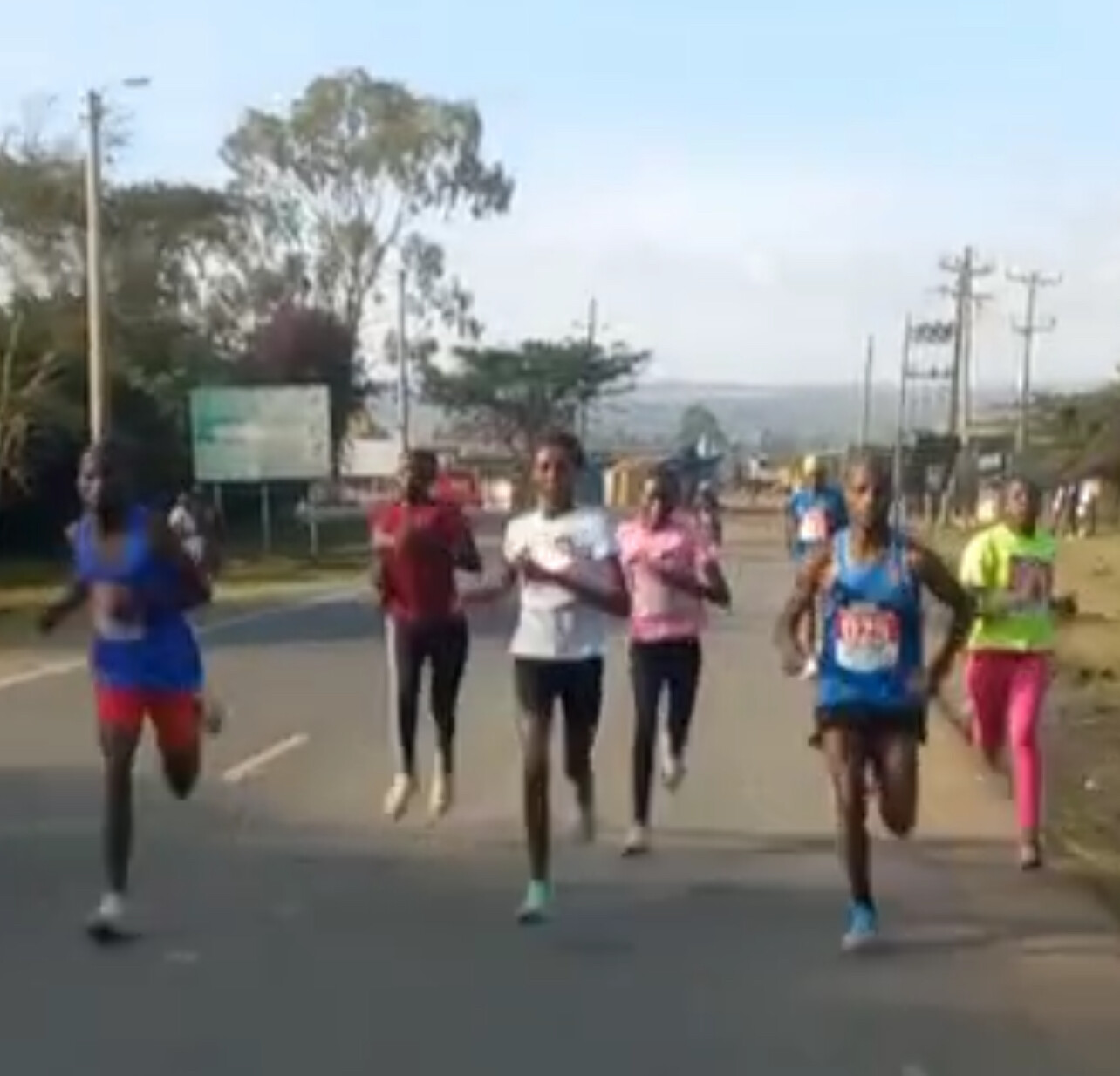
The men’s 5km saw rising star Benard Kitum (20 yrs, Bib 040) clock a personal best of 16:35, continuing his steady improvement within the KATA Running Camp system. His confidence and form signal a bright future ahead.
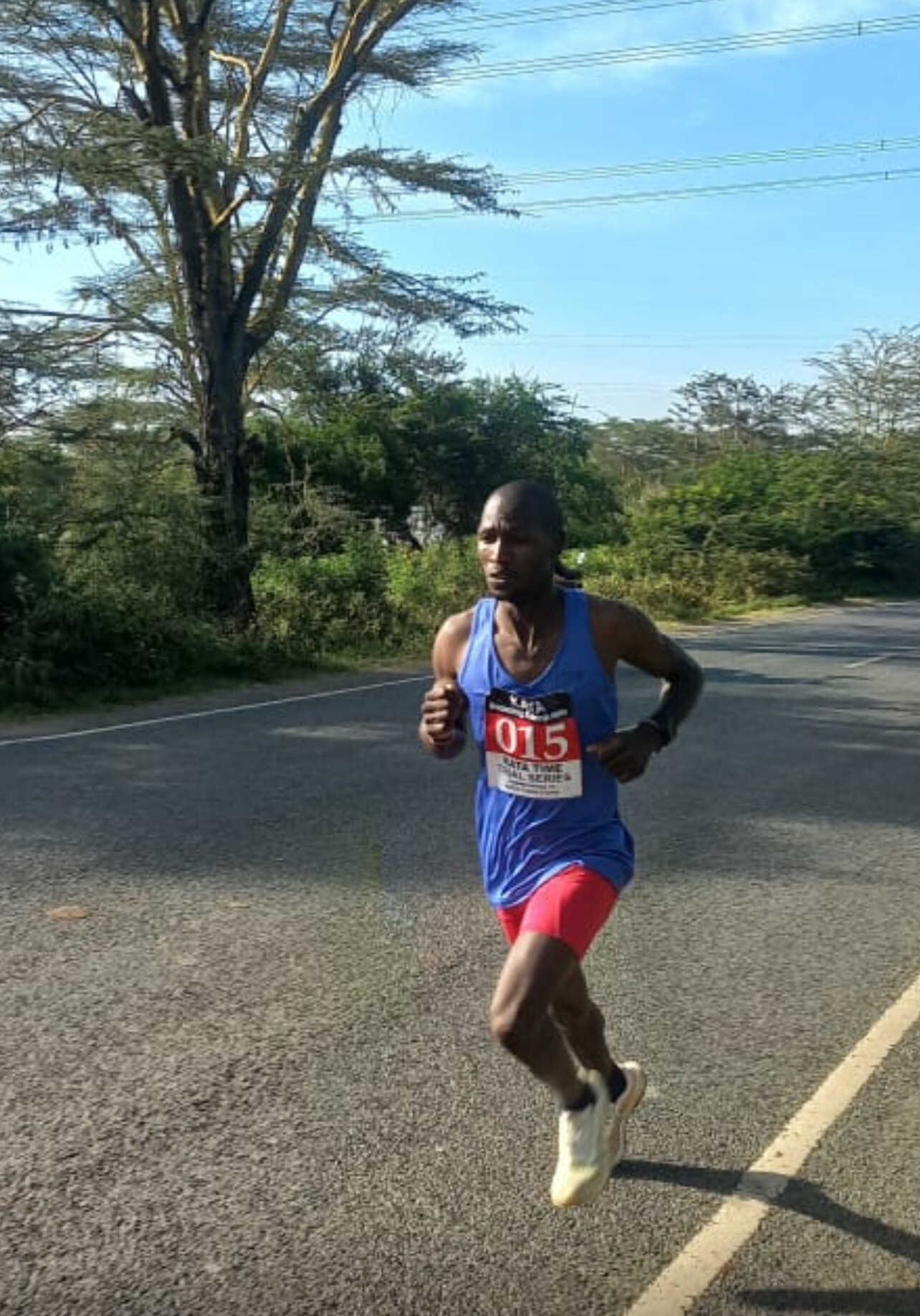
In the women’s 5km, Elizabeth Wambui (20 yrs, Bib 036) impressed once again, winning in 18:08with her trademark consistency and drive. Sandra Cheptoo (13 yrs, Bib 018) showed great promise in second, running 21:00, while Faith Chebet (16 yrs, Bib 033) was third in 23:12. Miriam Chebet (18 yrs, Bib 035) followed closely in 23:17, with Rahab Chemutai (13 yrs, Bib 019) finishing fifth in 25:27.
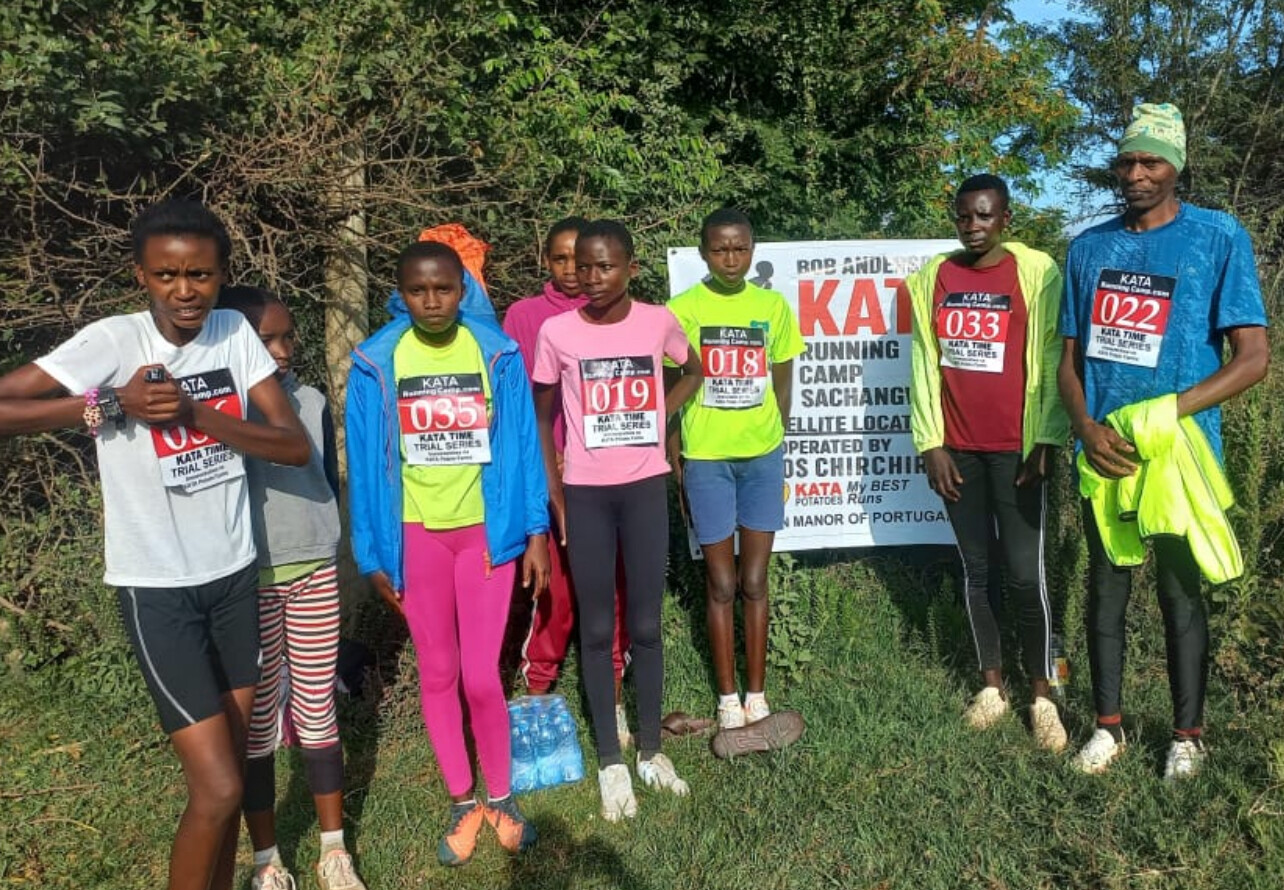
These performances highlight the diversity of talent within KATA’s growing satellite network — from seasoned runners to young emerging athletes.
The next KATA Time Trial will take place on December 17 across most of KATA’s satellite running camps, including the main academy in Thika, continuing the momentum of KATA’s “Fuel of Champions” program that blends training, racing, and development across Kenya.
The Salgaa–Rongai KATA Running Camp, one of KATA’s newest and most promising satellite locations, continues to build its reputation as a key hub for athlete development. Its consistent time trial events are helping to identify and prepare the next generation of Kenyan champions — runners who are fast proving that talent, dedication, and the right support can overcome even the toughest conditions.
KATA Time Trial – Salgaa–Rongai (3rd Edition) Official Results
10km Men
1. Weldon Langat – 19 yrs – Bib 025 – 30:49
2. Ronald Cheruiyot – 25 yrs – Bib 015 – 34:24
3. Sammy Sang – 35 yrs – Bib 022 – 37:50
5km Men
1. Benard Kitum – 20 yrs – Bib 040 – 16:35 (PB)
5km Women
1. Elizabeth Wambui – 20 yrs – Bib 036 – 18:08
2. Sandra Cheptoo – 13 yrs – Bib 018 – 21:00
3. Faith Chebet – 16 yrs – Bib 033 – 23:12
4. Miriam Chebet – 18 yrs – Bib 035 – 23:17
5. Rahab Chemutai – 13 yrs – Bib 019 – 25:27
by Boris Baron
Login to leave a comment
KATA Time Trial 50 Marks Milestone with Strong Performances in Thika
THIKA, Kenya — November 12, 2025 — The 50th edition of the KATA Time Trial was held today at the Kenyan Athletics Training Academy (KATA) in Thika, marking a major milestone for the event that continues to nurture and test athletes under challenging conditions. Despite the warm, humid air and gusty winds, runners delivered impressive performances across both the 5km and 10km distances.
In the men’s 5km race, Charles Ndirangu, still recovering from injury, displayed determination and class to cross the finish line first in 15:32. Sixteen-year-old James Lawrence followed with a strong run of 18:01, showing promise as one of KATA’s rising young athletes. Eric Mwaura, 18, clocked 18:07to round out the top three.
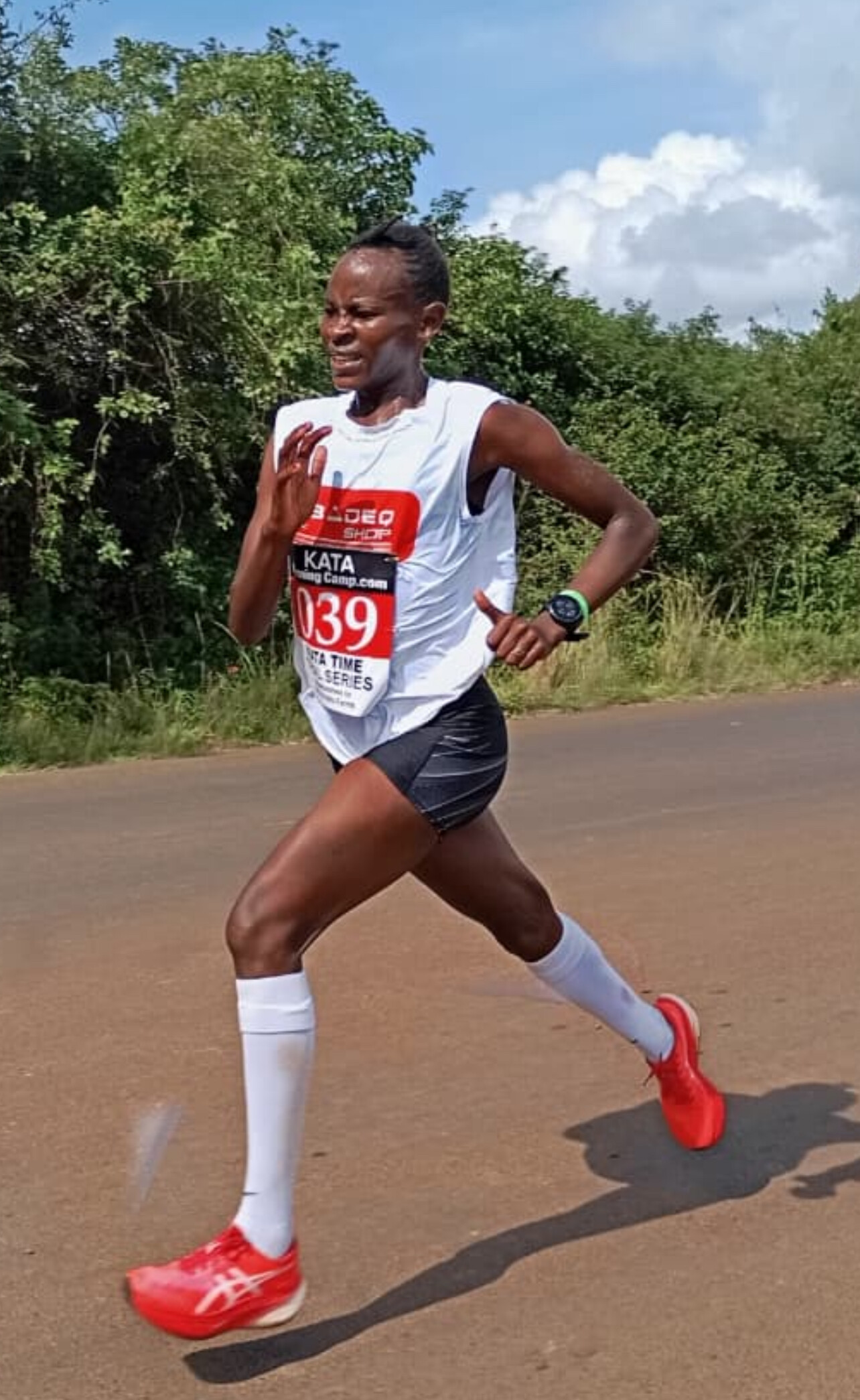
The women’s 5km race saw Agnes Wanjiru take to the course solo, clocking 19:21. Having recently battled illness, her performance reflected admirable resilience and commitment to the KATA program.
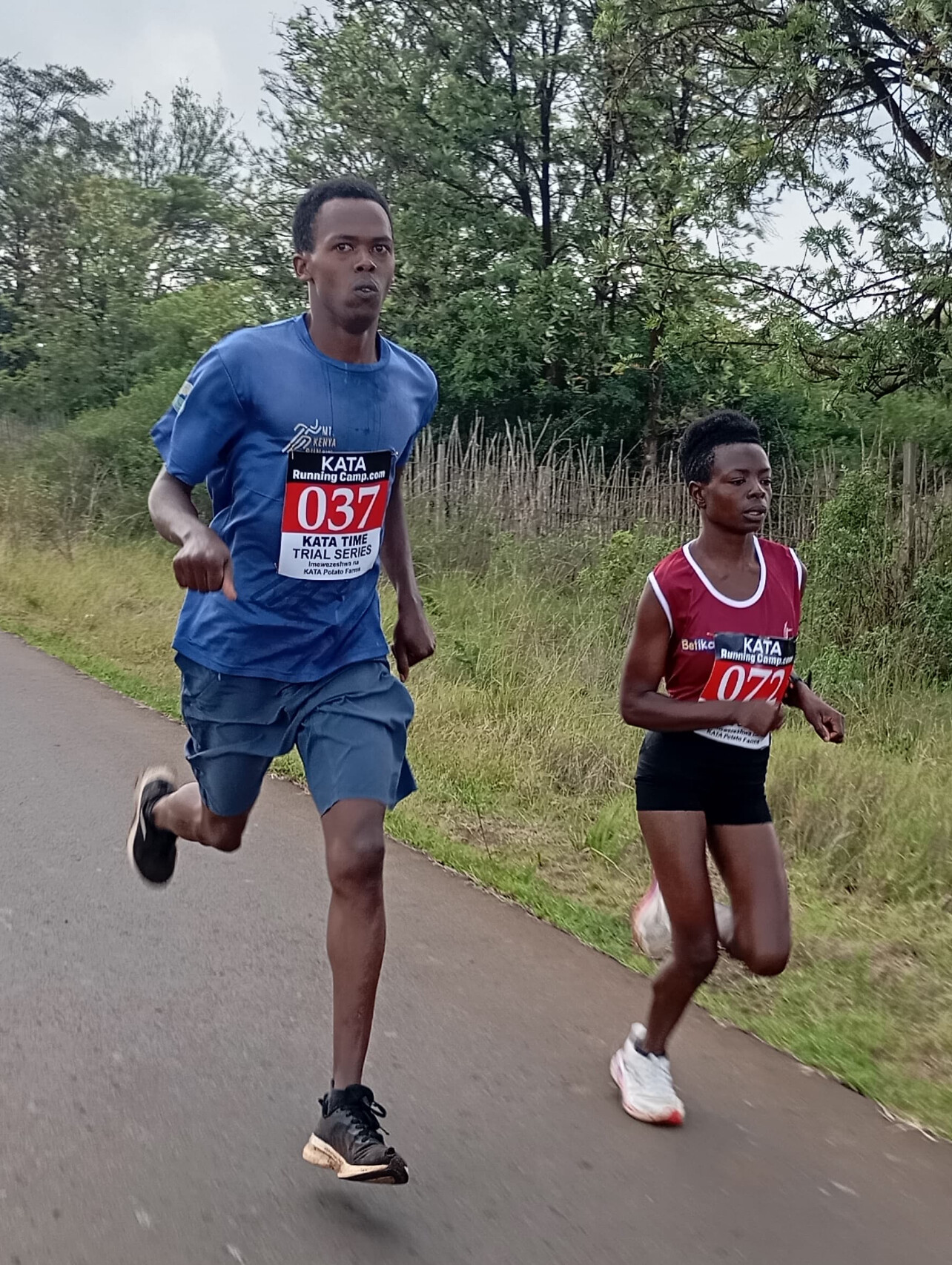
The men’s 10km was one of the most competitive fields of the day. John Chege, 21, took command early and maintained his lead to win in 29:49. He was followed by Bernard Waweru (40) in 30:29, with Stephen Ngigi, 22, close behind in 30:36 to complete the podium.
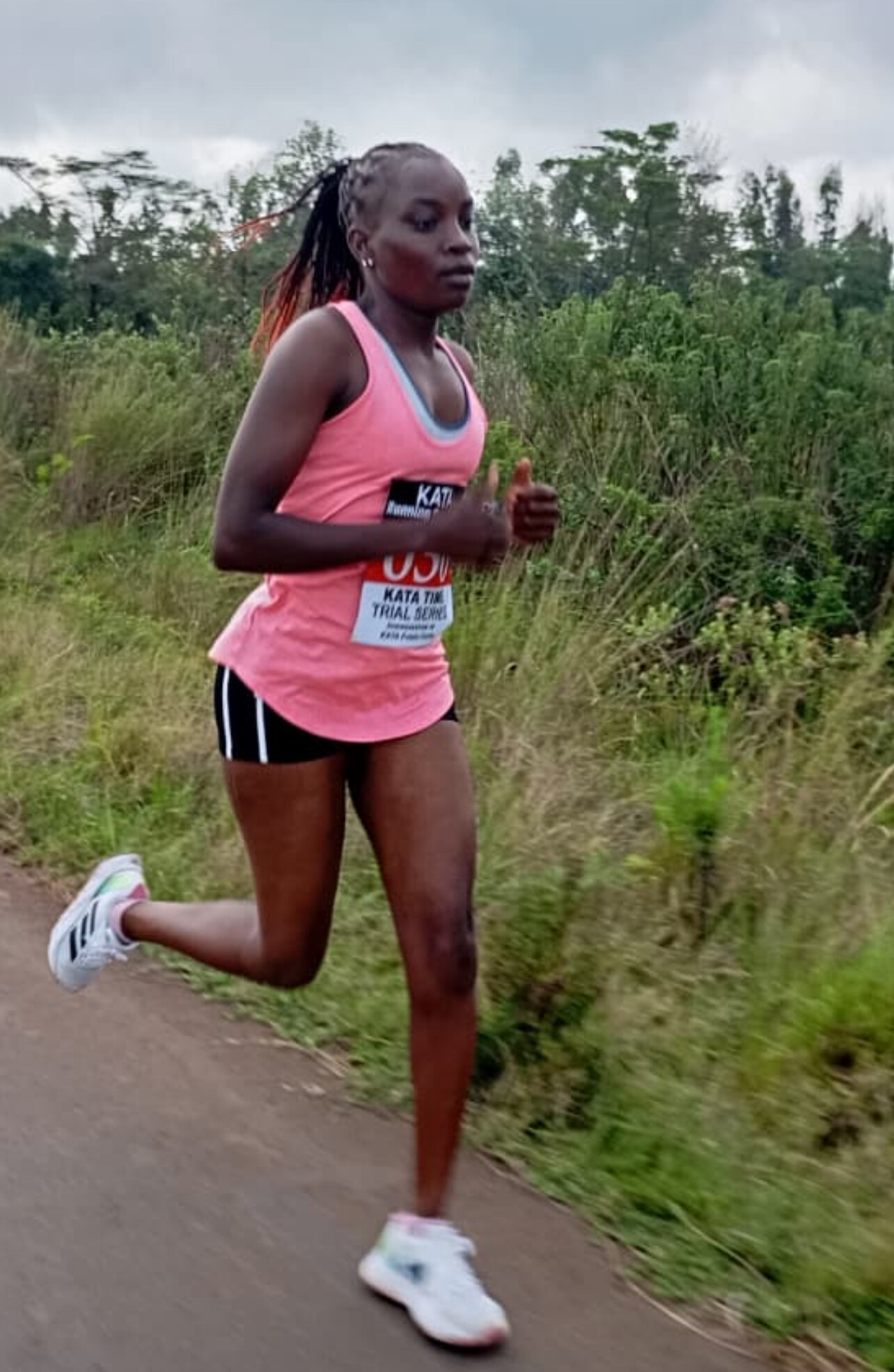
The women’s 10km produced another standout performance, with Loise Kiarie, 24, setting a new personal best of 33:49, improving her previous time by 30 seconds despite the less-than-ideal weather. Jacinta Kamau, also 24, claimed second in 34:48, while Kellen Waithira (38) finished third in 36:11.
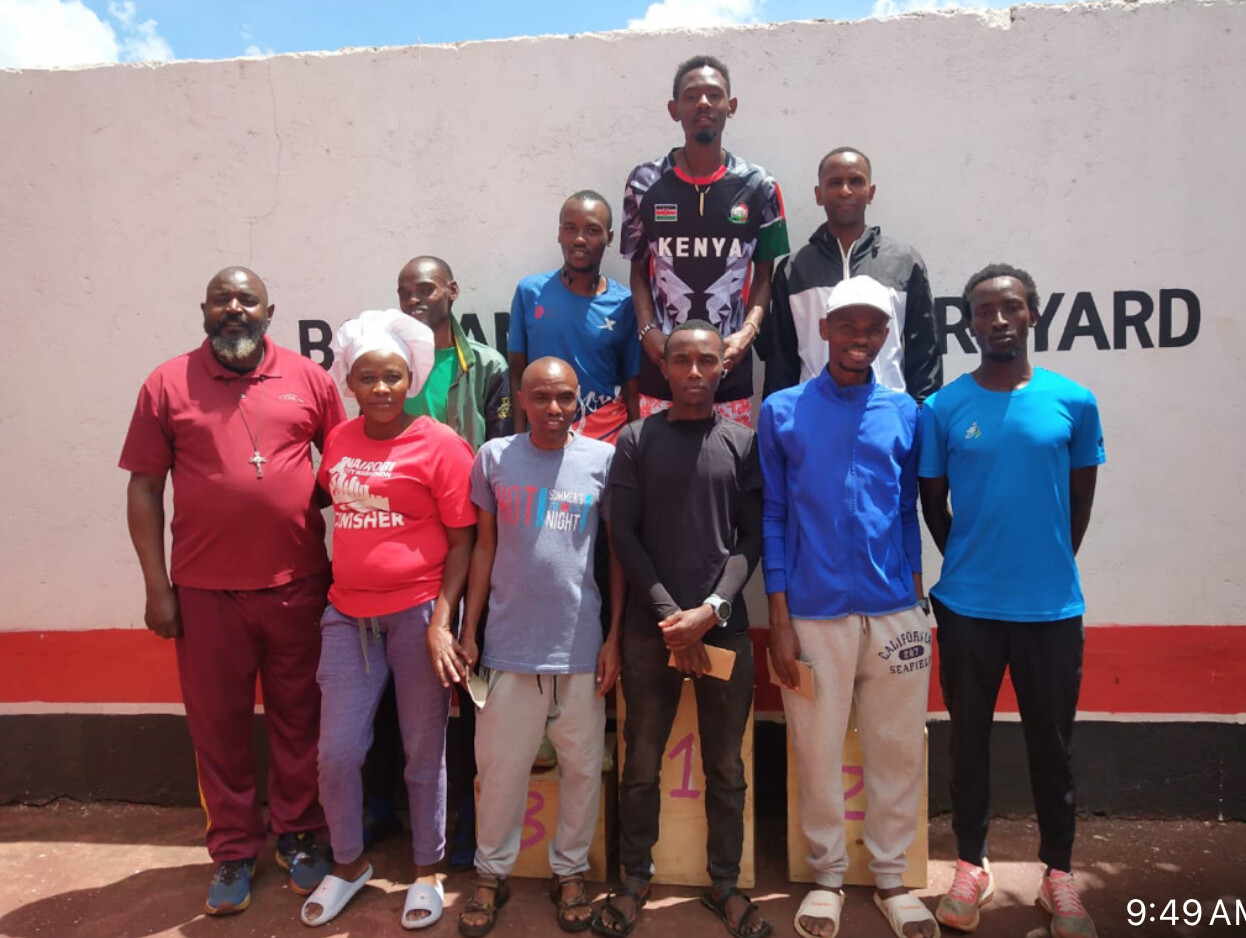
The KATA Time Trials, founded by Bob Anderson, continue to provide a world-class platform for Kenyan athletes to measure progress and stay race-ready between competitions. Today’s edition celebrated not only endurance and improvement but also the spirit of consistency that has defined the KATA community since its inception.
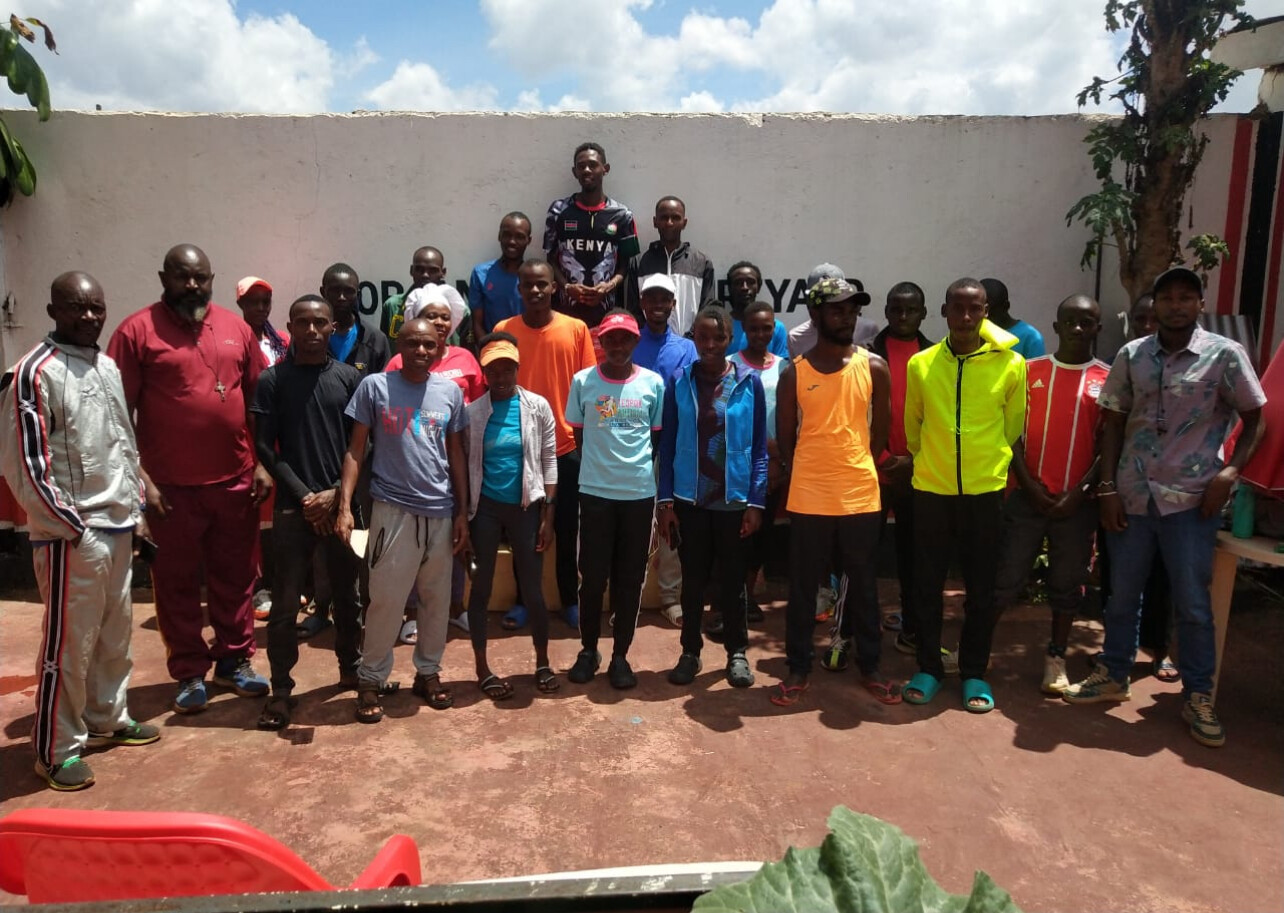
The next KATA Time Trial will take place on December 17, both in Thika and at most of KATA’s satellite running camps across Kenya, as the program continues to expand its reach and provide competitive opportunities to athletes nationwide.
KATA Time Trial #50 – Official Results
5km Men
- Charles Ndirangu – 24 yrs – Bib 74 – 15:32
- James Lawrence – 16 yrs – Bib 73 – 18:01
- Eric Mwaura – 18 yrs – Bib 35 – 18:07
- Tobias Kosgei – 16 yrs – Bib 73 – 18:50
5km Women
- Agnes Wanjiru – 20 yrs – Bib 33 – 19:21
10km Men
- John Chege – 21 yrs – Bib 76 – 29:49
- Bernard Waweru – 40 yrs – Bib 31 – 30:29
- Stephen Ngigi – 22 yrs – Bib 71 – 30:36
- Boniface Mungai – 30 yrs – Bib 77 – 30:53
- Dan Lolngojine – 19 yrs – Bib 49 – 31:01
- John Kuria – 30 yrs – Bib 40 – 31:33
- Joel Maina – 43 yrs – Bib 41 – 32:15
- Justus Nyamai – 18 yrs – Bib 48 – 33:25
- Ismael Mburu – 25 yrs – Bib 50 – 33:44
- Eric Cheruiyot – 30 yrs – Bib 46 – 33:55
- Joseph Nyota – 20 yrs – Bib 32 – 34:05
- Peter Mukundi – 27 yrs – Bib 37 – 36:46
- Charles Ndirangu – 65 yrs – Bib 53 – 38:02
10km Women
- Loise Kiarie – 24 yrs – Bib 39 – 33:49 (PB)
- Jacinta Kamau – 24 yrs – Bib 38 – 34:48
- Kellen Waithira – 38 yrs – Bib 54 – 36:11
- Susan Njuu – 40 yrs – Bib 52 – 36:34
- Lilian Nyamai – 25 yrs – Bib 47 – 37:04
- Karen Cheokemoi – 24 yrs – Bib 51 – 37:29
- Ruth Maina – 23 yrs – Bib 72 – 37:36
- Felistas Maina – 37 yrs – Bib 34 – 40:04
- Mary Wangari – 35 yrs – Bib 36 – 40:04
by Boris Baron
Login to leave a comment
KATA Time Trial Series
Welcome to the KATA Monthly Time Trial Held at the Kenyan Athletics Training Academy in Thika, Kenya, the KATA Monthly Time Trial is a unique and inclusive event designed to support runners of all levels in achieving their goals and showcasing their fitness. This event offers both 10K and 5K distances on an accurate, certified course, providing participants with...
more...Lucy Muritu’s Young Athletes Set Sights on 3rd Edition of Great Chepsaita Cross Country Run
NYANDARUA, Kenya Lucy Muritu, a dedicated KATA beneficiary and mentor, is preparing her young athletes to shine on the global stage at the upcoming 3rd edition of the Great Chepsaita Cross Country Run (Gold Label), set for December 6.
Beyond her success as a KATA potato farmer, Lucy has devoted herself to nurturing young running talent, proving that grassroots mentorship can open doors for children to excel both on the track and in the classroom.
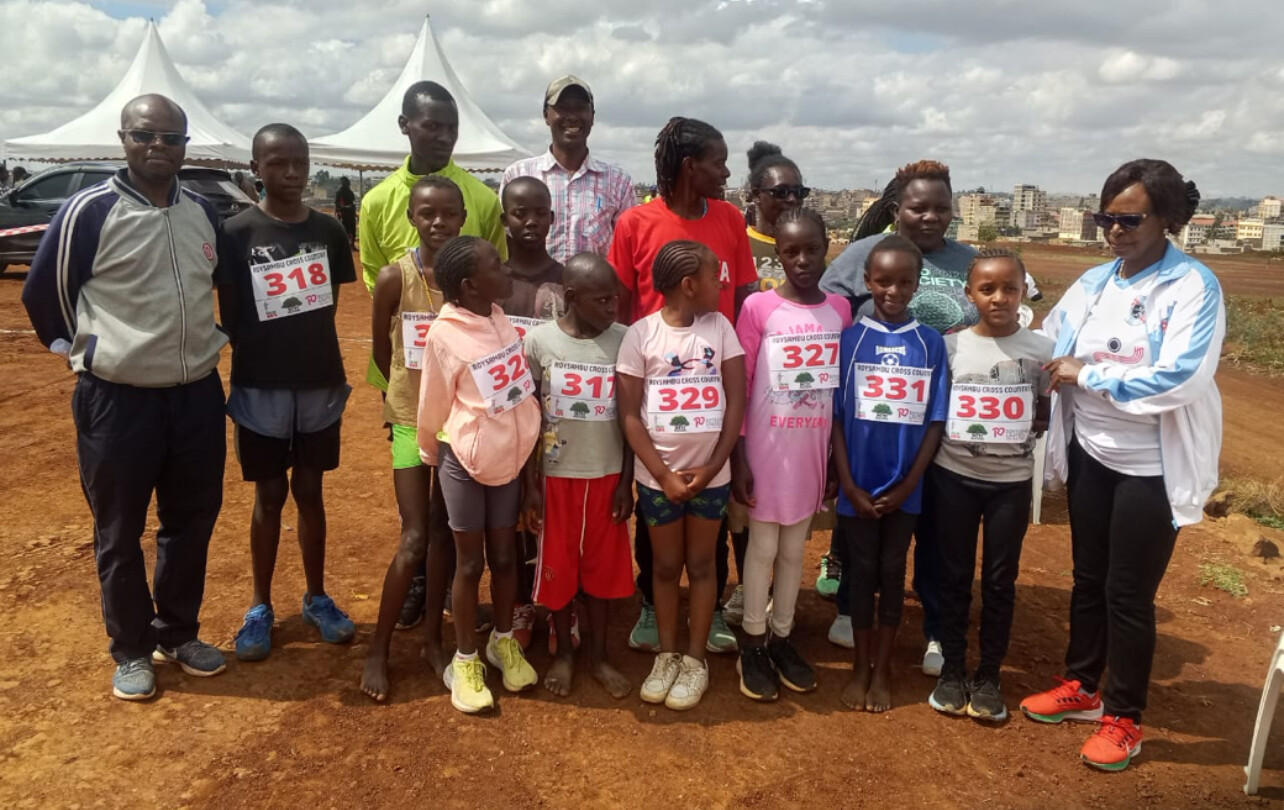
Among her protégés are sisters Florence Wangui (13) and Margaret Wanja (11), whose performances have already drawn national attention. The two recently triumphed in Bob’s One Mile Children’s Race, an initiative created by Bob Anderson to support emerging young runners. Alongside the annual Double Road Race, Bob’s One Mile has become a vital platform for discovering and nurturing athletic talent at the youth level.
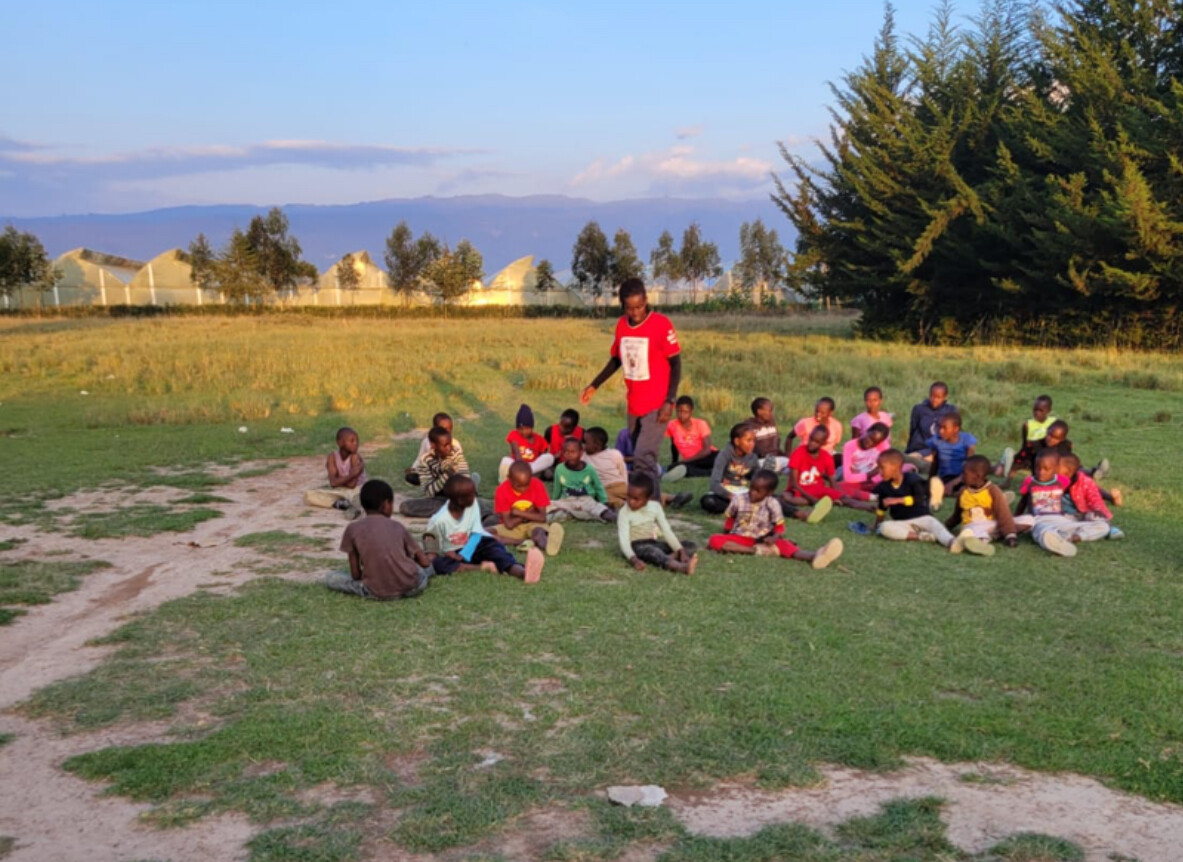
Florence and Margaret continued their winning streak by capturing titles at the Roy Sambu United Environment Cross Country Run in Nairobi, confirming their rising status among Kenya’s promising young athletes.
Lucy has already registered her full team for Chepsaita: Florence Wangui, Margaret Wanja, Godfrey Kahora (19), Ann Wanjiku (16), Tabitha Wanjiru (15), Tashian Wangari (8), and Alisha Njoki (9). Many of these young athletes come from humble backgrounds, yet through Lucy’s mentorship—and the support of programs like KATA and Bob Anderson’s initiatives—they are gaining both guidance and opportunity to grow in sport and in education.
Reflecting on her journey, Lucy said:
“I would like to sincerely thank Bob for the wonderful opportunity he has given me through KATA. Being part of this program has truly empowered me as a farmer and a mentor, and I am grateful for the trust and support that has been shown to me. With KATA’s guidance, I look forward to achieving even greater results and continuing to contribute to the growth of our community. At the same time, I am preparing our young athletes for a great race—the upcoming Chepsaita Cross Country Gold Label event. I’m excited to nurture and guide the next generation, and I believe their participation in such a prestigious event will inspire them to reach new heights.”
The Great Chepsaita Cross Country Run, recognized internationally as a Gold Label event, gives young athletes the chance to compete alongside elite runners—learning lessons in discipline, training, and sportsmanship that will shape their futures.
For Lucy and her team, the event represents far more than a race. It’s a platform where talent meets education, helping mold a generation of athletes who can thrive in both athletics and life.
KATA’s framework offers this same opportunity to coaches across Kenya, empowering them to identify young runners in their communities, register them in programs like Bob’s One Mile, and access mentorship and resources that foster both athletic and academic growth.
Lucy encourages other coaches to join the effort:
“There is talent everywhere, and KATA gives us a way to find it, guide it, and give children the opportunities they deserve. With more coaches participating, we can build a network of mentorship that reaches every county and ensures no gifted child goes unnoticed.”
As December 6 approaches, Lucy’s young athletes stand as a testament to the power of community-based mentorship. From the rolling hills of Nyandarua to the Gold Label course at Chepsaita, these children embody the resilience, dedication, and promise that programs like KATA and Bob’s One Mile are designed to nurture. Their journey shows that with the right guidance and opportunity, Kenya’s next generation of runners can achieve greatness—on the course and beyond.
by Robert Kibet
Login to leave a comment
Colorado Runner Completes All Seven World Marathon Majors in One Year
l“My wife thinks I’m crazy,” says 49-year-old Max Fulton
Golden, Colorado — Completing all six Abbott World Marathon Majors is a lifetime goal for many runners. But in 2025, with Sydney officially added as the seventh race, one Colorado man decided to do them all — in a single year.
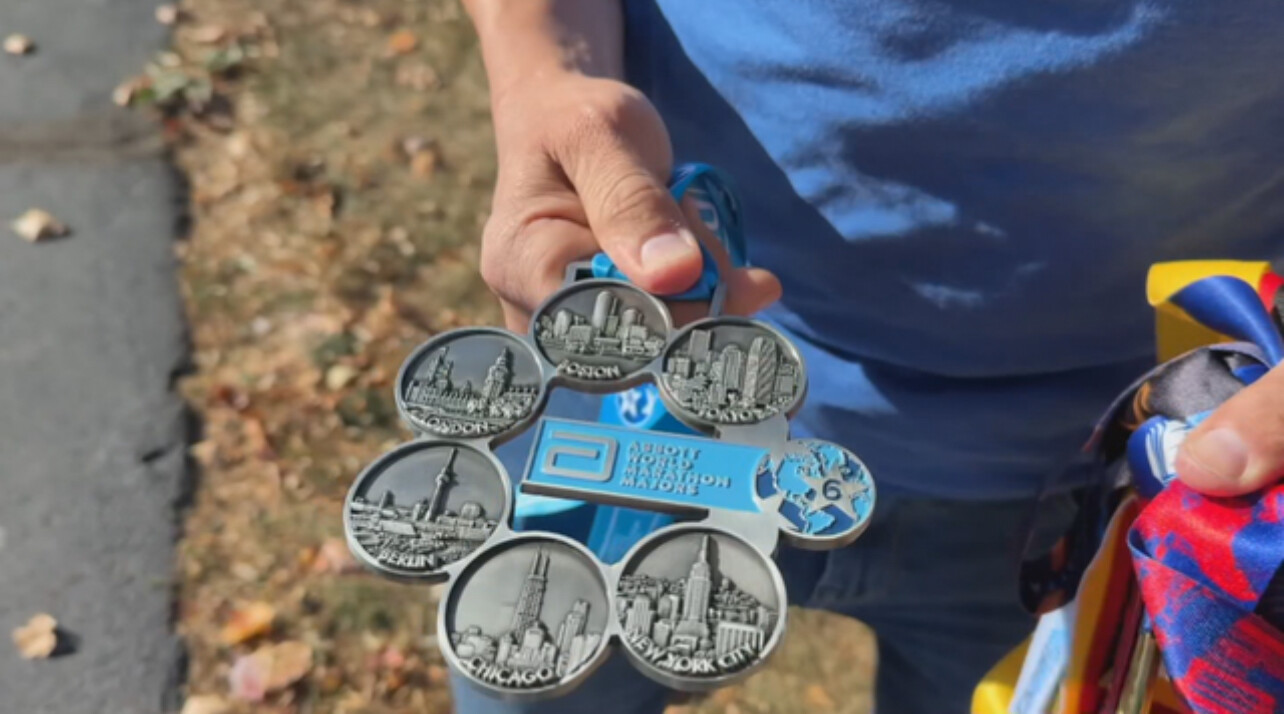
Max Fulton, 49, from Golden, crossed his final finish line last weekend, completing an extraordinary year that took him across the globe to tackle the world’s most iconic marathons: Tokyo, Boston, London, Berlin, Chicago, New York, and now Sydney.
“It was interesting. It was hard,” Fulton said, displaying his seven medals — one from each of the World Marathon Majors. “A lot of people try this and it takes them five or six years to get accomplished. I thought, what if I did them all in one year? And what if I’m the first person to do it?”
Fulton isn’t new to endurance challenges. A veteran ultrarunner, he’s finished the grueling Leadville 100 ten times. But he admits this marathon mission tested more than just his legs. “The hardest part, actually, was getting into all of them,” he said. “Even if you qualify, it doesn’t always guarantee entry.”
He managed it through a mix of qualification times, charity bibs, marathon tours, and lottery wins. Along the way, his family supported his ambitious plan — mostly. “My wife thinks I’m crazy,” Fulton laughed. “My daughter’s probably with her. My son thinks it’s awesome.”
Fulton believes he’s one of fewer than ten runners worldwide to have completed all seven Majors in 2025. For comparison, roughly 20,000 runners have finished all six Majors over their entire lives.
As for what’s next? “Maybe it’s time to spend more time on the bike,” he said — before pausing with a grin. “But Abbott is adding South Africa and Singapore. Maybe I’ll end up running nine of them.”
by Boris Baron
Login to leave a comment
2026 Boston Marathon Qualifying Standards Among the Most Demanding Ever Issued
The Boston Athletic Association (B.A.A.) has confirmed new qualifying standards for the 2026 Boston Marathon, scheduled for April 20, 2026, and they are among the most demanding ever issued in the event’s 130-year history. For runners aged 18 to 59, the time standards have been made five minutes faster than those used for the 2025 race — a reflection of both the extraordinary growth in marathon participation and the deepening field of competitive age-group runners.
These updates reinforce the B.A.A.’s commitment to maintaining the Boston Marathon as the pinnacle of achievement for amateur and professional runners alike. With more applicants qualifying each year than the race can accept, meeting the standard no longer guarantees entry — runners must often exceed the qualifying mark by several minutes to secure a bib.
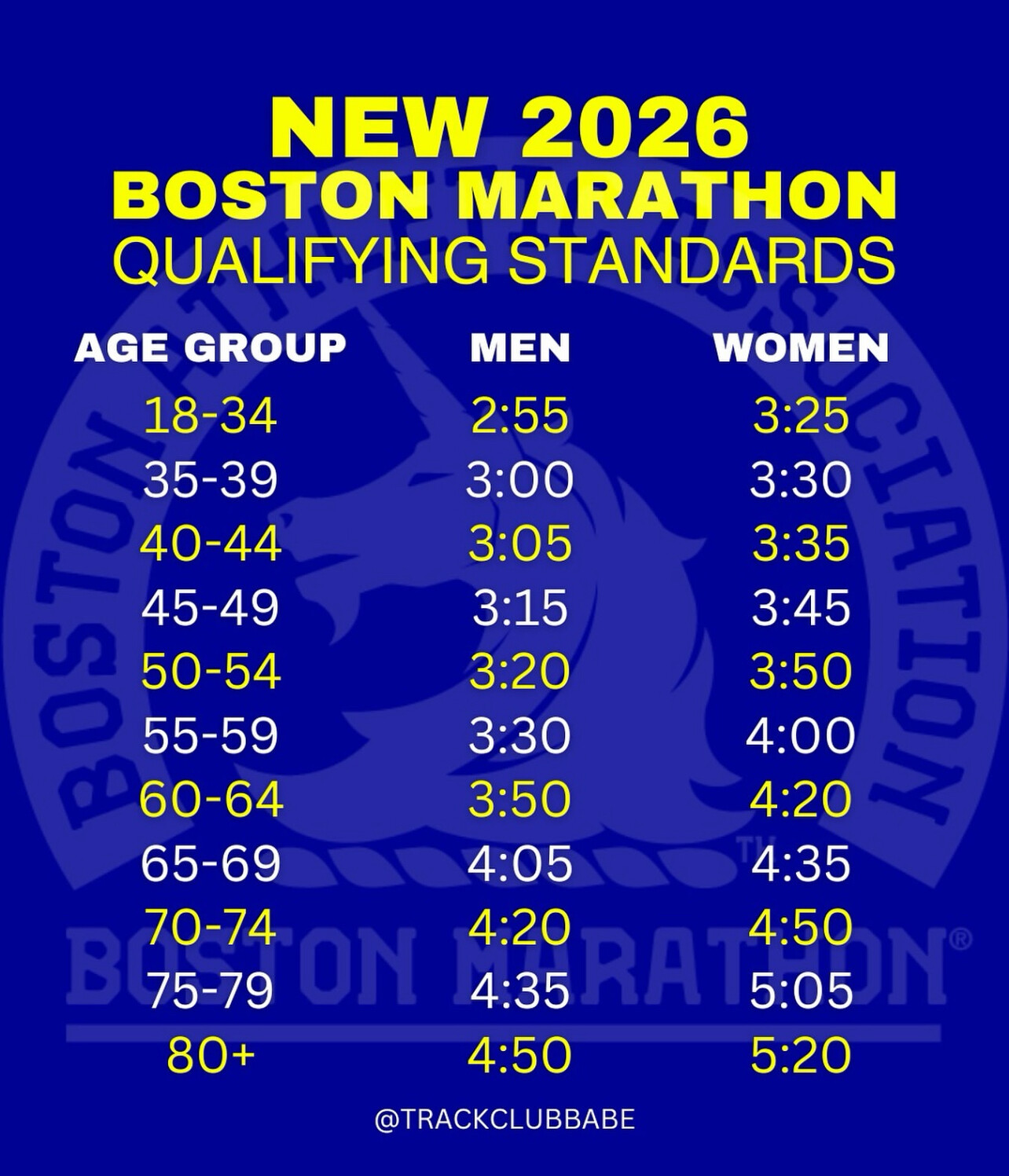
2026 Boston Marathon Qualifying Standards
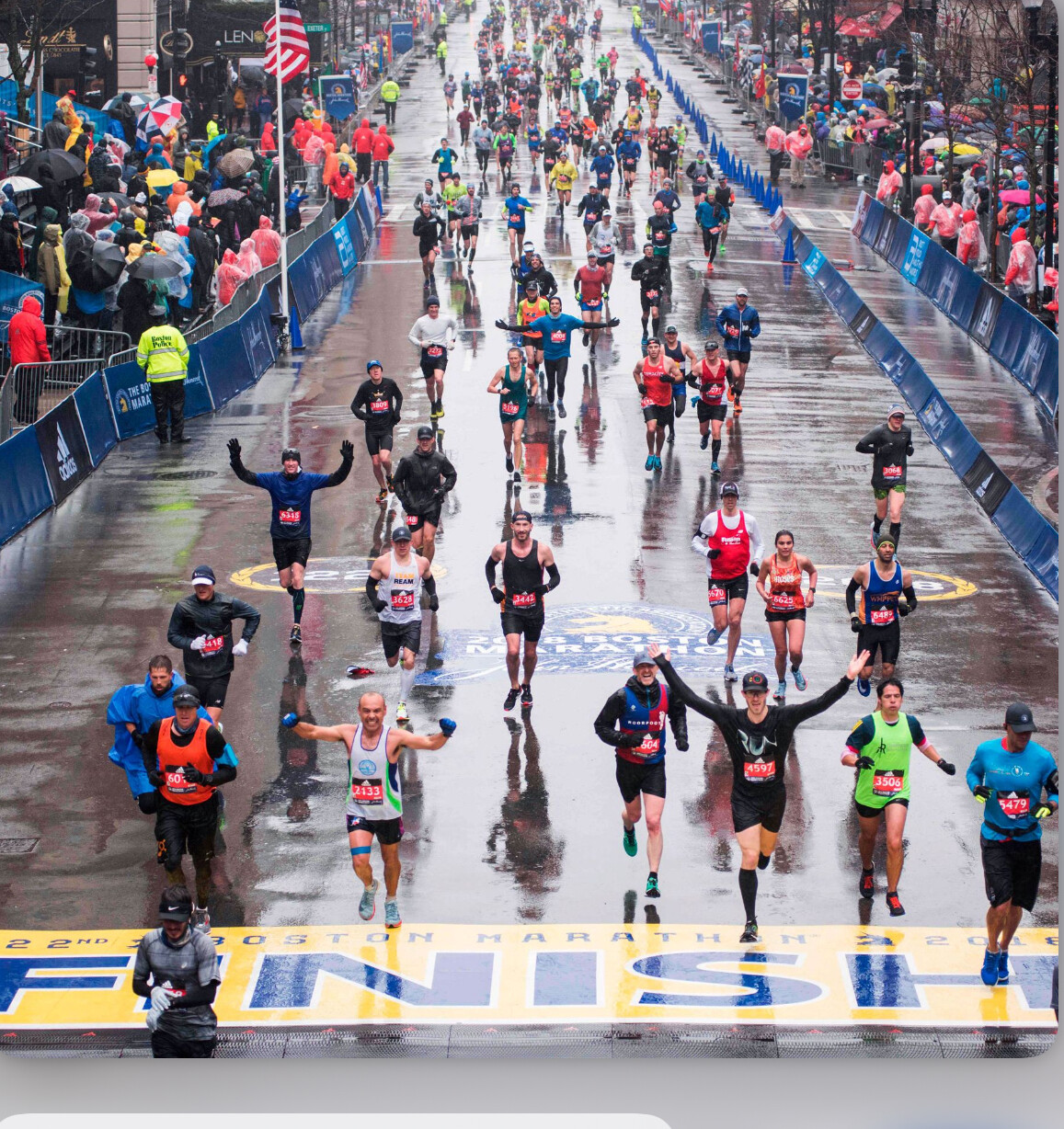
Age Group – Men – Women
18–34 – 2:55:00 – 3:25:00
35–39 – 3:00:00 – 3:30:00
40–44 – 3:05:00 – 3:35:00
45–49 – 3:15:00 – 3:45:00
50–54 – 3:20:00 – 3:50:00
55–59 – 3:30:00 – 4:00:00
60–64 – 3:50:00 – 4:20:00
65–69 – 4:05:00 – 4:35:00
70–74 – 4:20:00 – 4:50:00
75–79 – 4:35:00 – 5:05:00
80+ – 4:50:00 – 5:20:00
These standards closely match the official 2026 qualifying table published by the B.A.A. Standards for runners aged 60 and above have changed little or remained consistent with prior years, while younger age divisions (18–59) now face significantly faster requirements.
Meeting these times makes a runner eligible to apply for registration, but acceptance depends on the number of applicants. For the 2025 Boston Marathon, runners needed to be 6 minutes and 51 seconds faster than the posted standard to gain entry. For the 2026 edition, the cutoff narrowed but remained steep — 4 minutes and 34 seconds faster than the standard.
Elite Field Entry
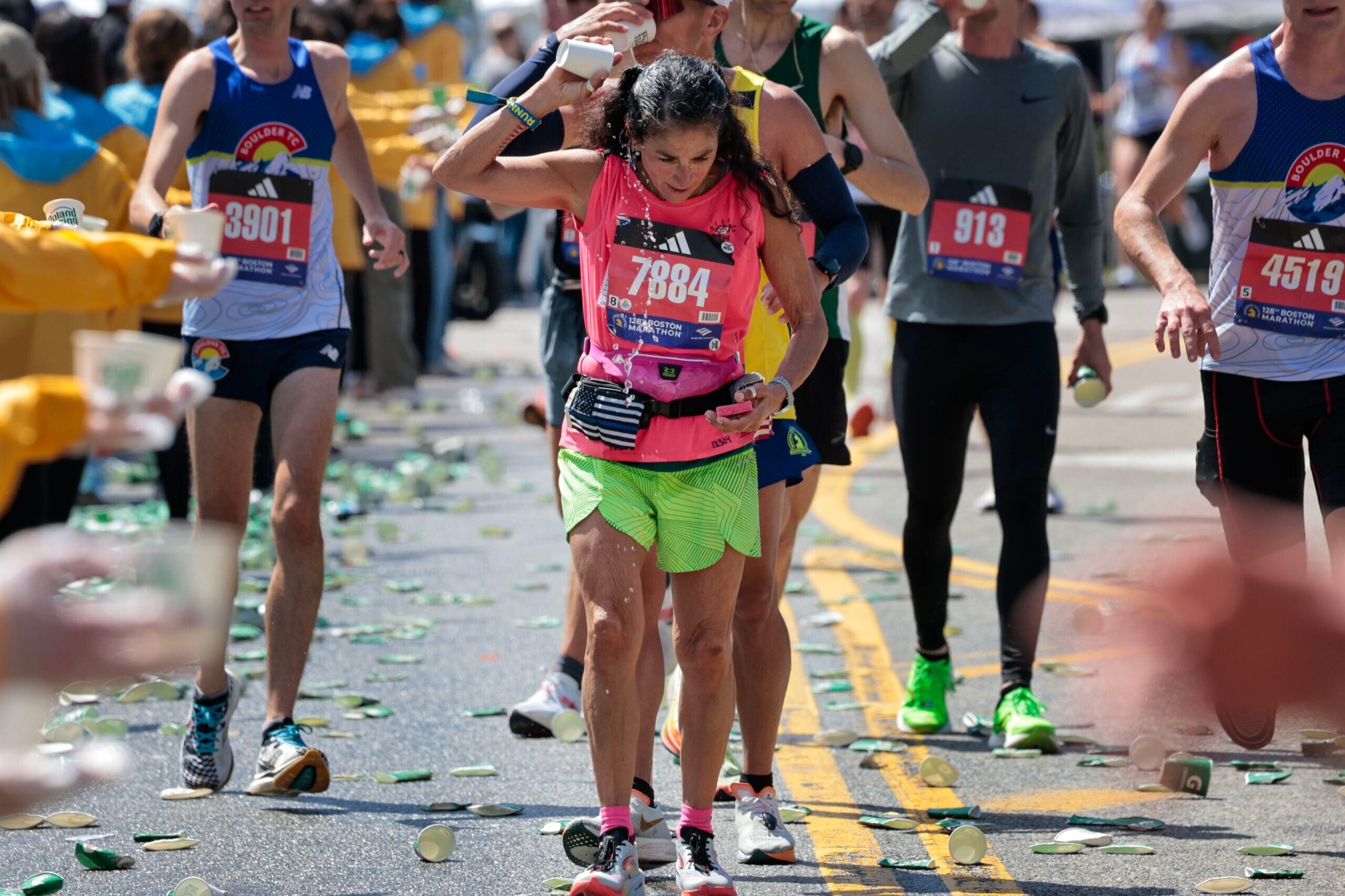
The B.A.A. does not publicly post official qualifying times for elite athletes. Instead, entries are extended by invitation to runners who have recently achieved world-class performances. While not formalized, typical benchmarks for consideration are around sub-2:20 for men and sub-2:45 for women, depending on the depth of the field and prior race results.
Course Adjustments Coming for 2027
Beginning with the 2027 Boston Marathon, new rules will redefine which marathon courses count toward qualification. Races with net-downhill profiles will face time “indexing” to ensure fairness:
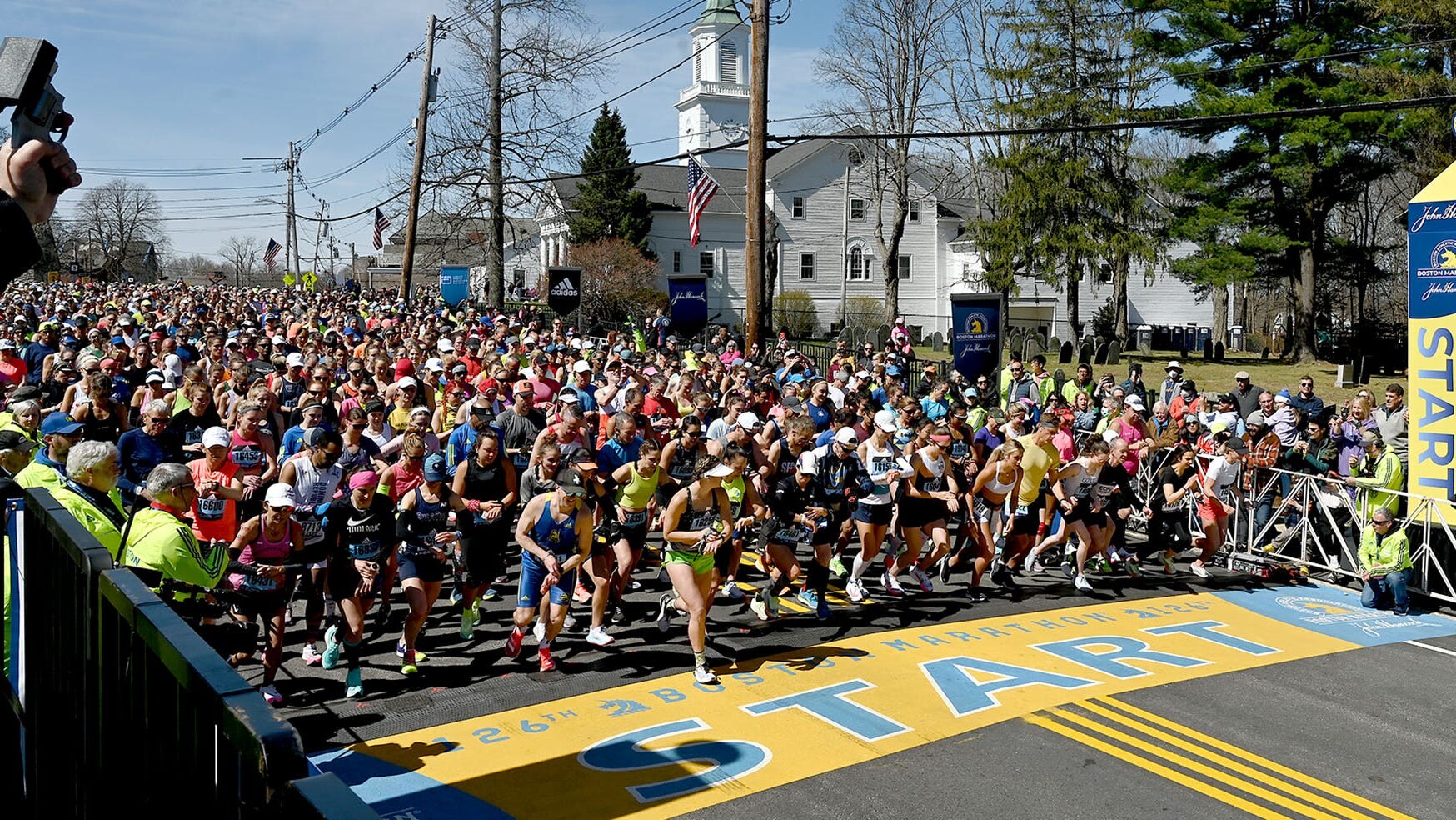
• Courses dropping 1,500–2,999 feet: +5 minutes added to finishing time
• Courses dropping 3,000–5,999 feet: +10 minutes added
• Courses dropping 6,000 feet or more: will no longer count as qualifiers
These adjustments, already confirmed by the B.A.A., are designed to standardize qualifying efforts across all marathon courses and eliminate advantages from steep downhill profiles.
What This Means for Runners
For competitive marathoners worldwide, the 2026 standards mark one of the most significant tightening periods in recent memory. The message from the B.A.A. is clear:
• Run faster than ever before.
• Choose a certified, fair course.
• Don’t aim to meet the standard — aim to beat it decisively.
The Boston Marathon remains the benchmark for excellence in distance running. With the 2026 standards now in place and additional adjustments ahead for 2027, the pursuit of a Boston Qualifier (BQ) remains one of the most respected — and challenging — achievements in the sport.
by Boris Baron
Login to leave a comment
Boston Marathon
Among the nation’s oldest athletic clubs, the B.A.A. was established in 1887, and, in 1896, more than half of the U.S. Olympic Team at the first modern games was composed of B.A.A. club members. The Olympic Games provided the inspiration for the first Boston Marathon, which culminated the B.A.A. Games on April 19, 1897. John J. McDermott emerged from a...
more...Fantaye Belayneh Repeats, Isaia Lasoi Shines at the 2025 Boston Half Marathon
Boston’s Emerald Necklace once again set the stage for one of the country’s most scenic and competitive half marathons on Sunday morning. Over 7,000 runners lined up at Franklin Park for the 2025 Boston Half Marathon, where Ethiopia’s Fantaye Belayneh successfully defended her women’s title and Kenya’s Isaia Lasoi powered to an impressive victory in the men’s race. Each champion earned $15,000 for their wins.
Men’s Race – Lasoi Dominates in 1:00:59
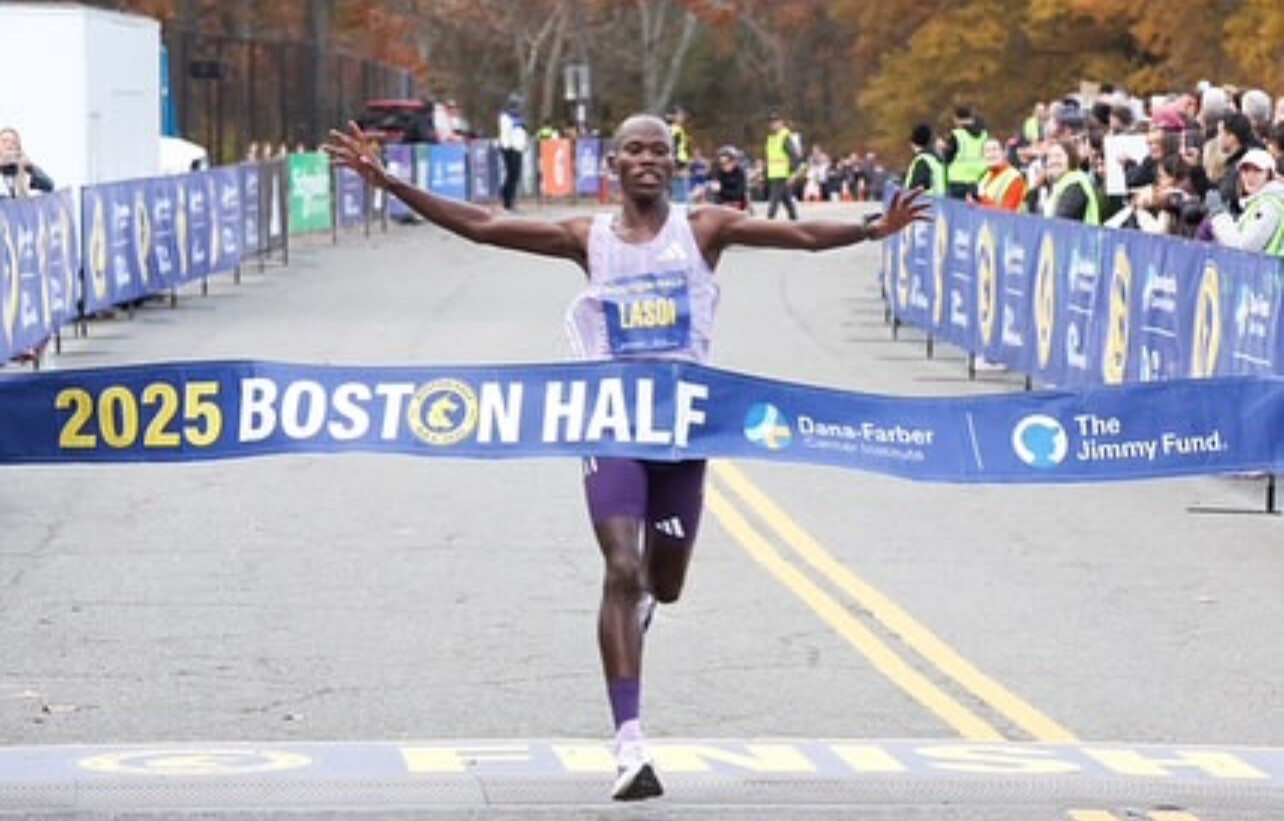
Kenya’s Isaia Lasoi delivered a commanding performance, clocking 1:00:59 to capture the men’s crown and the $15,000 winner’s prize. The race unfolded at a fast but controlled pace through the park-lined streets, with Lasoi making his decisive move in the final 5K. Uruguay’s Santiago Catrofefollowed in 1:01:23, while Kenya’s Andrea Kiptoo secured third in 1:01:30.
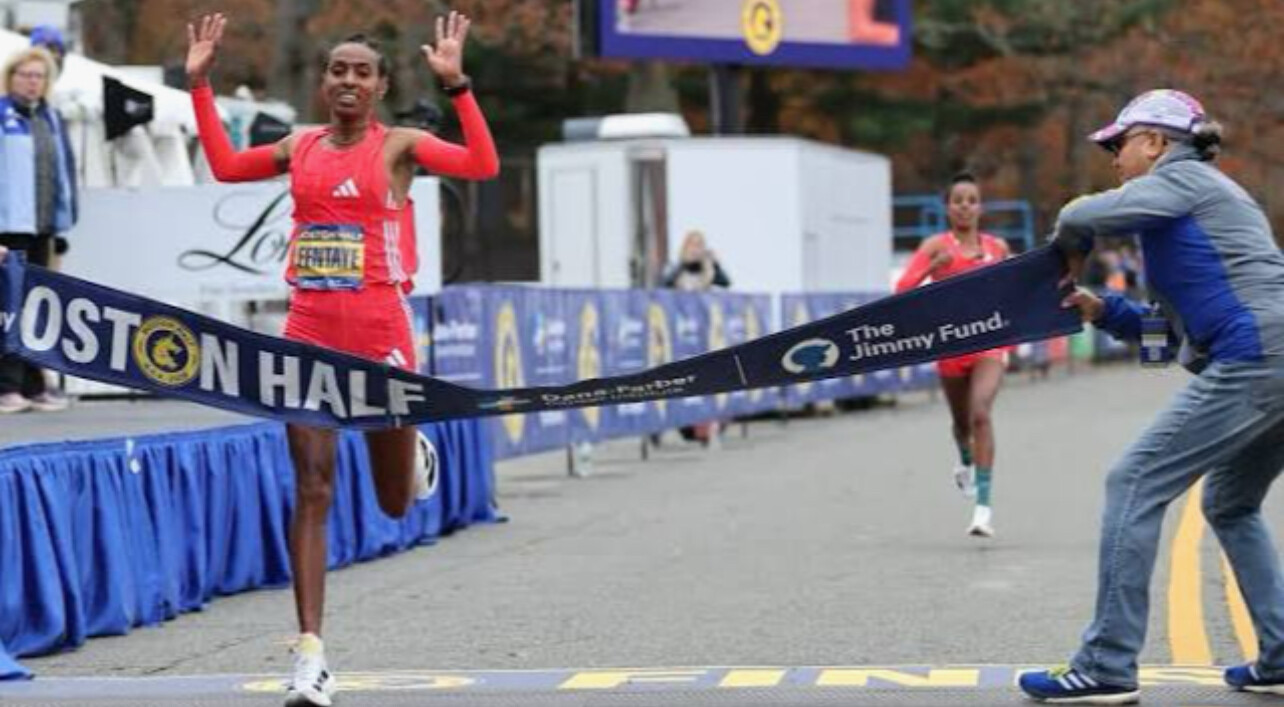
Lasoi’s sub-61 performance on Boston’s undulating course reinforced his growing status among Kenya’s new generation of road racing talent. His powerful stride and tactical patience over the final stretch left no doubt about his supremacy.
Women’s Race – Belayneh Holds Off Wudu in a Thrilling Finish
In the women’s division, Ethiopia’s Fantaye Belayneh out-kicked her compatriot Melknat Wudu in a dramatic finish, crossing the line in 1:08:51 — just two seconds ahead of Wudu (1:08:53). Kenya’s Evaline Chirchir completed the podium in 1:09:01. Belayneh’s repeat win also earned her $15,000, matching Lasoi’s prize.
Her victory made her the first woman since Joan Chelimo Melly (2017–2018) to win back-to-back Boston Half titles. With calm focus and a perfectly timed surge in the final meters, Belayneh turned a shoulder-to-shoulder battle into a defining moment of determination and poise.
Course and Conditions
Runners traversed Boston’s “Emerald Necklace,” a 13.1-mile loop of winding parkways and rolling roads connecting the city’s most picturesque green spaces. Conditions were ideal — cool temperatures and light winds — creating the perfect backdrop for fast times and fierce competition.
Race Legacy and Global Field
The Boston Half Marathon continues to attract elite international athletes alongside thousands of passionate runners from around the world. With its blend of competition, camaraderie, and New England charm, the event remains one of the premier fall half marathons in the United States.
Belayneh and Lasoi’s victories underscored the enduring global depth of distance running — and confirmed once again that Boston’s roads remain among the finest proving grounds for champions.
by Boris Baron
Login to leave a comment
Anne Flower Sets New Women’s 50-Mile World Record at the 2025 Tunnel Hill 50 Mile
In a stunning display of endurance and precision pacing, emergency-room physician and ultramarathon standout Anne Flower blazed to a new women’s world record of 5:18:57 for the 50-mile distance at the 2025 Tunnel Hill 50 Mile in Vienna, Illinois. The mark shatters the previous record of 5:31:56 held by Courtney Olsen, set on the same course last year.
Record-Setting Performance
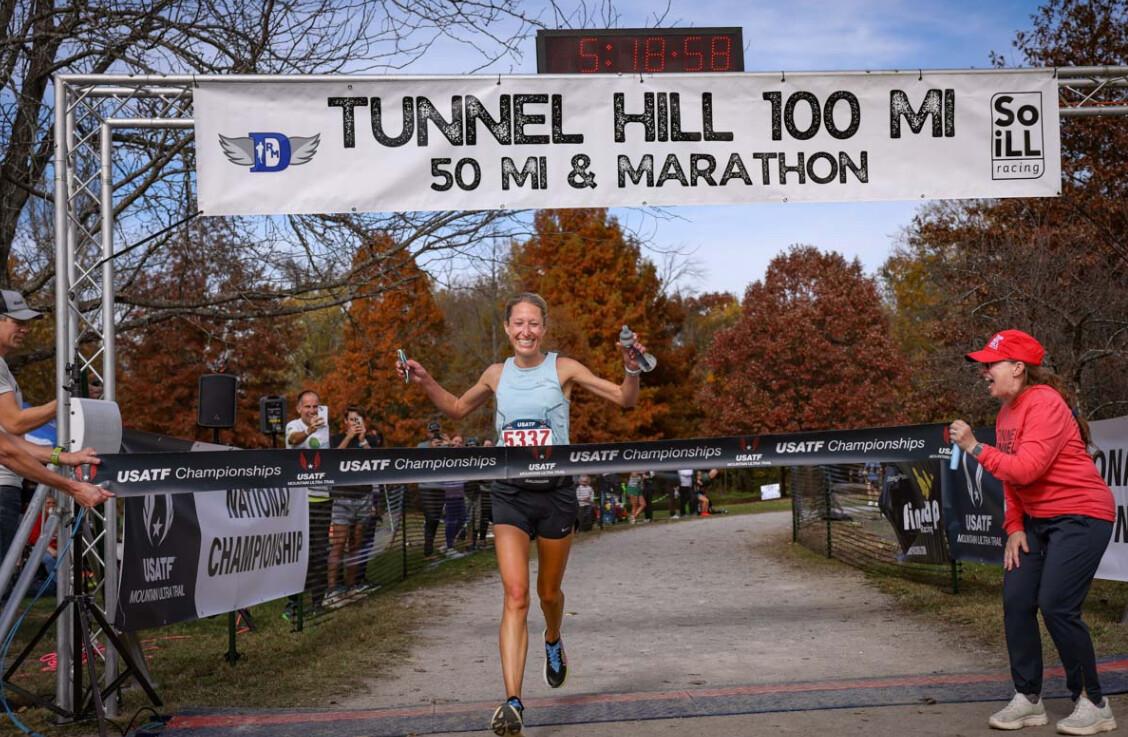
Held on the flat, crushed-gravel rails-to-trails route of the Tunnel Hill State Trail, the race has become a proving ground for world-class performances. Flower averaged an extraordinary 6:23 per mile (3:57 per kilometer) across the full 80.47 km course, running even splits and showing no signs of strain even as temperatures climbed later in the race.l
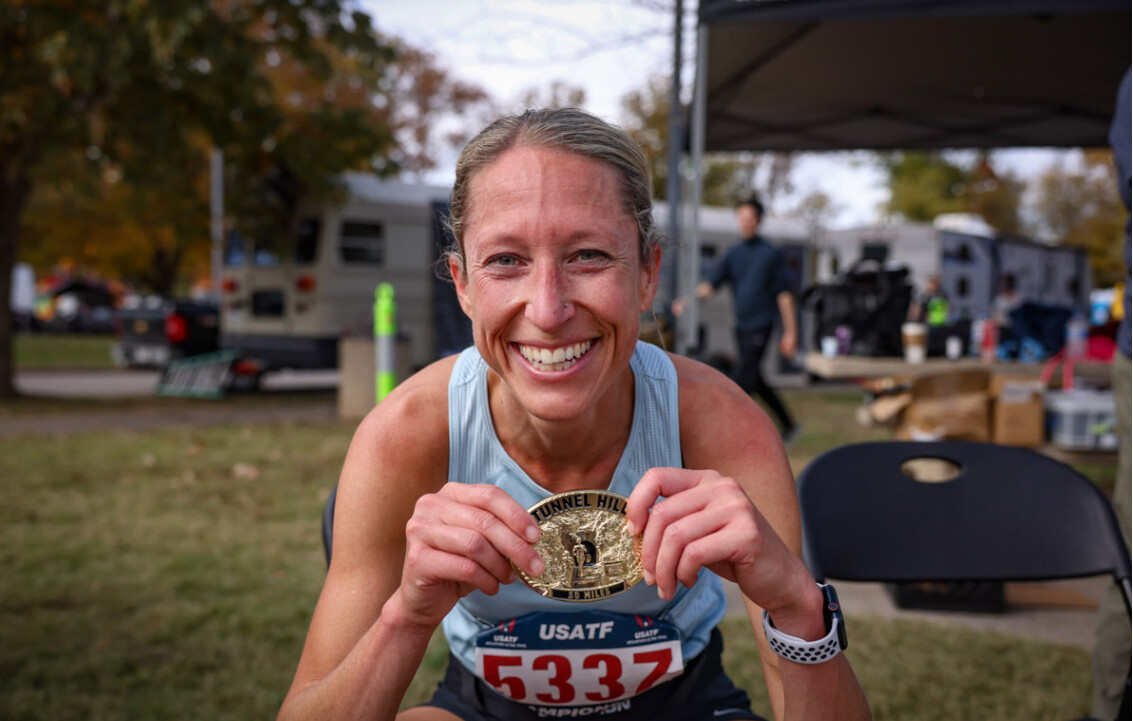
From the opening miles, Flower stayed well ahead of record pace, never faltering and closing strongly to seal a performance that redefines the women’s 50-mile standard. Olsen, competing in the 100k event this year, passed the 50-mile mark in 5:33:59—still an elite split, but more than 15 minutes behind Flower’s record pace.
From Marathons to Ultramarathons
Based in Colorado Springs, Colorado, Flower balances her demanding career as an emergency-room doctor with elite-level training. Before moving to the trails in 2019, she competed in marathons and took part in the 2020 U.S. Olympic Marathon Trials. Her road background shows in her efficient stride and disciplined pacing.
Over the past two seasons, she has built an impressive résumé:
Winner of the 2024 Javelina 100k
Champion of the 2025 Silver Rush 50 Mile
Record-breaker at the 2025 Leadville 100 Mile, where she eclipsed Ann Trason’s 31-year-old mark in her debut at the distance
These results paved the way for her dominant performance at Tunnel Hill, demonstrating both her endurance and her remarkable consistency.
Raising the Bar for Women’s Ultrarunning
Flower’s 5:18:57 isn’t just fast—it’s a historic leap forward. Taking more than 12 minutes off a world record at this level is rare, and doing so with such control underscores her potential for even greater achievements ahead.
Tunnel Hill has become synonymous with world-record performances, and Flower’s run further cements the race’s reputation as one of the premier venues for ultradistance excellence.
What’s Next
With records now at both 50 and 100 miles, Flower’s next challenge may be defending or lowering her new mark—or shifting her focus toward international championship events. Whatever path she chooses, her rise through the sport has been nothing short of extraordinary.
Anne Flower has proven that it’s possible to balance a demanding professional life with world-class athletic performance. Her blend of discipline, determination, and pure endurance has elevated her into the top tier of ultrarunning’s global elite.
by Boris Baron
Login to leave a comment
NYC Marathon Sets New World Record for Largest Number of Finishers
The 2025 TCS New York City Marathon has officially set a new world record for the largest number of finishers in a marathon, surpassing the mark set by the London Marathon earlier this year.
A total of 59,226 runners crossed the finish line in Central Park, eclipsing London’s 2025 record of 56,640 finishers achieved back in April. Last year, New York welcomed 55,643 finishers — making this year’s turnout an impressive increase of more than 3,500 participants.
This year’s field included 31,927 men, 27,156 women, and 143 non-binary runners, reflecting the marathon’s continued growth in global diversity and participation.
Average finish times:
• Men: 4:18:55
• Women: 4:48:11
• Non-binary: 4:43:59
• Overall: 4:32:25
The record underscores New York’s enduring status as one of the world’s most iconic marathons. Every November, the five-borough race captures the imagination of runners and fans alike, transforming the city into a global stage of endurance, determination, and celebration.
As one runner posted after finishing, “There’s nothing like New York — the crowd, the bridges, the skyline, and the feeling when you cross that line.”
With 59,226 finishers, the 2025 New York City Marathon is now not only the largest marathon in history but also a testament to the global passion for running that continues to grow stronger every year.
by Boris Baron
Login to leave a comment
Beatrice Chebet Named Kenya’s 2025 Female Long-Distance Athlete of the Year
Beatrice Chebet has been voted Kenya’s Female Long-Distance Athlete of the Year, receiving an overwhelming 67% of total fan votes in a nationwide poll conducted by Kenya Sports and Athletics Kenya.
Chebet’s 2025 season has been nothing short of historic. The 25-year-old claimed both the 5000mand 10,000m world titles, showcasing her dominance across the long-distance spectrum. She also shattered the 5000m world record, clocking a breathtaking 13:58.06, and became the first woman in history to break the 14-minute barrier.
Her remarkable achievements placed her far ahead of fellow Kenyan legends Hellen Obiri (12%) and Peres Jepchirchir (6%) in the fan voting.
Chebet’s versatility, strength, and consistency have redefined what’s possible for women’s distance running. Known for her calm confidence and powerful finishing kick, she has proven equally unstoppable on the track and the roads, inspiring a new generation of athletes around the world.
With a season marked by brilliance and history-making performances, Beatrice Chebet has firmly established herself among the all-time greats in athletics.
2025 Season Highlights
✅ 5000m World Champion
✅ 10,000m World Champion
✅ 5000m World Record – 13:58.06
Congratulations to Beatrice Chebet — a true champion of champions.
by Boris Baron
Login to leave a comment
Eliud Kipchoge Finishes the 2025 New York City Marathon in 2:14:36
Eliud Kipchoge, the greatest marathoner of all time, took on the challenging streets of New York City for the first time — and finished strong in 2:14:36. Known for his smooth efficiency and calm composure, Kipchoge tackled the hilly and tactical course with trademark focus, staying consistent through the early stages before the pace slowed slightly in the latter half.
His early splits showed controlled aggression: 15:12 at 5K, 30:25 at 10K, and 1:05:20 at halfway. Through 30K, he was still moving well in 1:33:02, but the final 10 kilometers through Central Park tested even the marathon master, bringing him home in 2:14:36.
Though not among his fastest times, this was a run filled with purpose and legacy. For Kipchoge, New York was never about breaking records — it was about embracing one of the sport’s most iconic stages and completing his journey across all six World Marathon Majors.
At 40 years old, the Kenyan legend has now conquered every major marathon city, further solidifying his place as the face of modern distance running. "Many at age 40 have run much faster but this is still very respectable," says KATA founder Bob Anderson.
by Boris Baron
Login to leave a comment
66-Year-Old Steve James Runs 200 Marathons in 200 Days Around Britain’s Coastline
At age 66, retired banker Steve James has accomplished an extraordinary feat — completing 200 marathons in 200 consecutive days while running around the entire coastline of Great Britain.
Starting in Topsham, Devon, in April, James covered an astonishing 5,240 miles (8,433 km) before returning to his starting point this past Saturday. Throughout the journey, researchers from the University of Exeter closely monitored his physical condition to study the effects of such extreme endurance on the human body.
“I haven’t had a day off in seven months,” James said after finishing. “I’m quite looking forward to the prospect of a lie-in and not having to complete 26 miles tomorrow.”
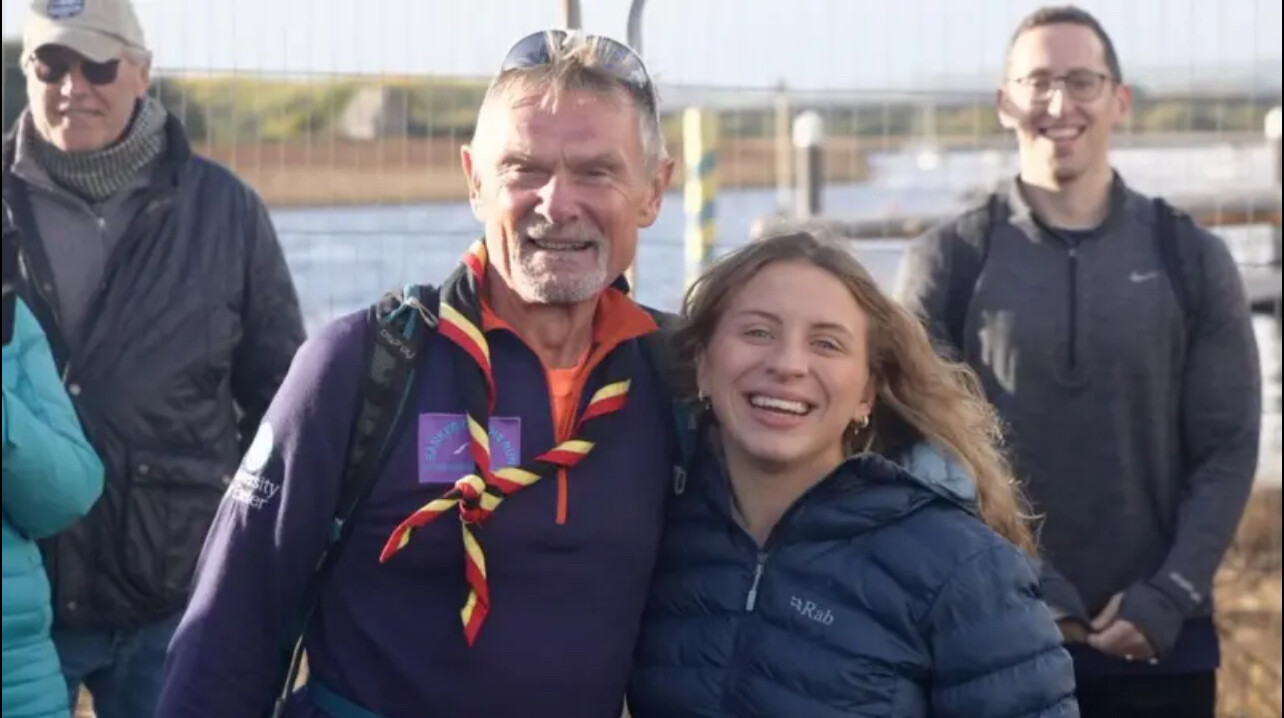
Despite enduring fierce weather, flooded paths, and even a gout flare-up that sent him briefly to the hospital, James remained determined. His route tested both his mental and physical resilience — but he finished strong and injury-free.
Over the course of his journey, James went through seven pairs of trainers, faced storms Floris and Amy, and climbed the equivalent elevation of Mount Everest ten times. Through it all, he regularly shared updates with followers on social media, inspiring thousands with his perseverance and humor.
Reflecting on his achievement, James said,
“It’s just shown me that you’re never too old to take on something huge. You’ve just got to start and keep going.”
His 200-day coastal run stands as a powerful reminder that age is no barrier to endurance — only determination and spirit truly define the limits of human potential.
by Boris Baron
Login to leave a comment
Benson Kipruto Wins a Thrilling 2025 New York City Marathon as Kipchoge and Bekele Fade
The streets of New York witnessed one of the most dramatic finishes in recent marathon history as Benson Kipruto of Kenya edged compatriot Alexander Mutiso by fractions of a second to win the 2025 TCS New York City Marathon. Both men were clocked at 2:08:09, with Kipruto leaning ahead in the final meters of Central Park to claim the title.
The victory marked a triumphant return to the top for Kipruto, who has previously won the Boston and Chicago Marathons. On a day when tactics mattered as much as fitness, he delivered a perfectly timed surge to secure the crown.
Alexander Mutiso finished a close second in 2:08:09, just 0.16 seconds behind, while 2021 New York champion Albert Korir completed the Kenyan sweep in third with a time of 2:08:57. Great Britain’s Patrick Dever ran a superb debut marathon to finish fourth in 2:08:58, and Swiss athlete Matthias Kyburz crossed the line fifth in 2:09:55.
All eyes were on Eliud Kipchoge, the two-time Olympic champion and marathon world record holder, making his long-awaited debut in New York. The legendary Kenyan started conservatively and remained in the lead pack through halfway, but the relentless climbs and bridges of the course eventually took their toll. Kipchoge finished 17th in 2:14:36, smiling as he crossed the line, suggesting this could be his final appearance at a World Marathon Major.
Ethiopian great Kenenisa Bekele also started among the favorites but faded after the 30-kilometer mark and did not finish the race. His withdrawal, along with Kipchoge’s struggles, highlighted the unique difficulty of New York’s course—one that tests strategy and strength more than sheer speed.
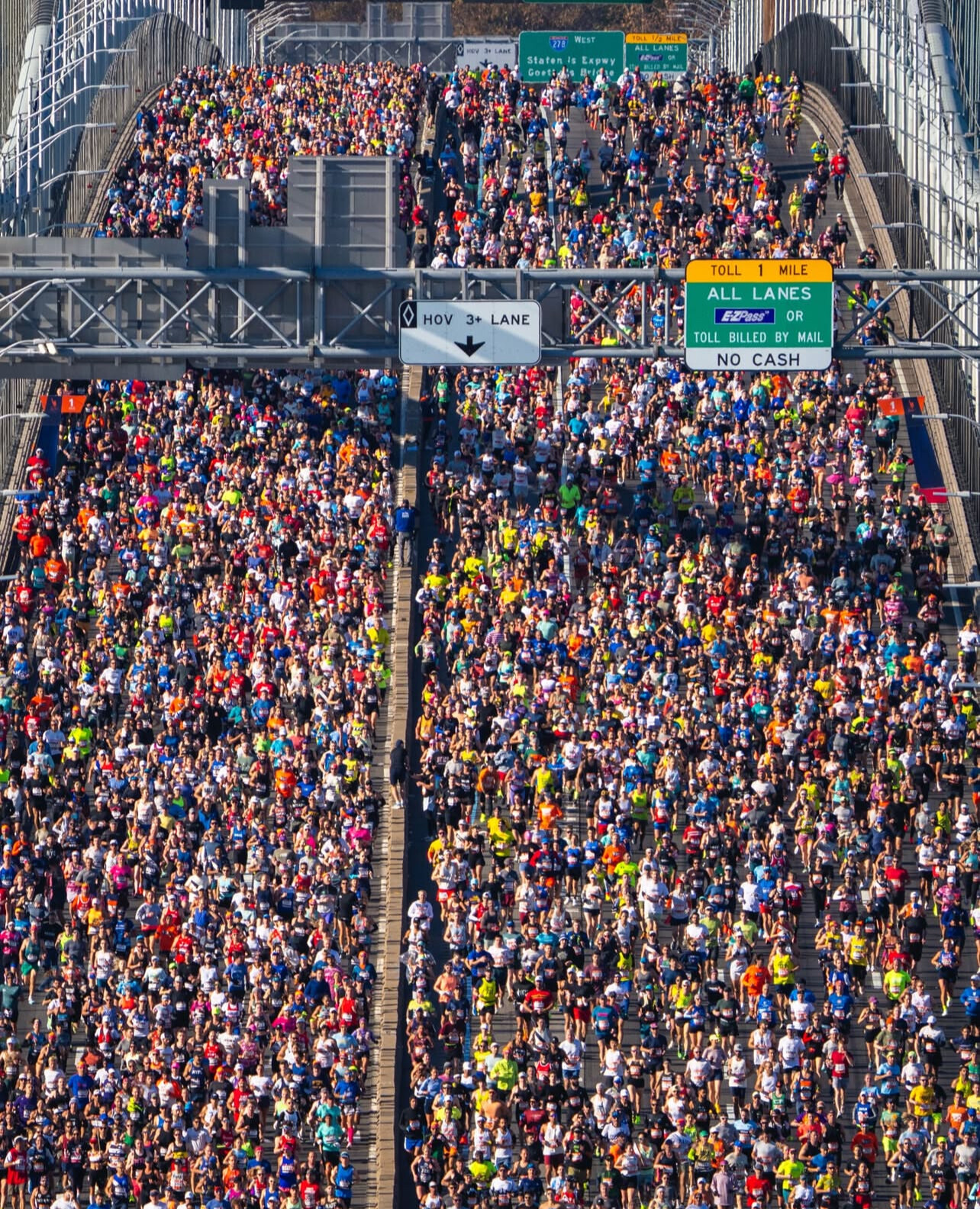
Despite the absence of a record-breaking time, the 2025 edition of the TCS New York City Marathon delivered unforgettable drama. The Kenyan trio’s podium sweep reaffirmed the country’s dominance in distance running, while thousands of runners from across the globe once again turned the streets of the five boroughs into a festival of endurance and inspiration.
Top 10 Men’s Results – 2025 TCS New York City Marathon:
1. Benson Kipruto (Kenya) – 2:08:09
2. Alexander Mutiso (Kenya) – 2:08:09
3. Albert Korir (Kenya) – 2:08:57
4. Patrick Dever (Great Britain) – 2:08:58
5. Matthias Kyburz (Switzerland) – 2:09:55
6. Joel Reichow (United States) – 2:09:56
7. Charles Hicks (United States) – 2:09:59
8. Sondre Moen (Norway) – 2:10:15
9. Tsegay Weldlibanos (Eritrea) – 2:10:36
10. Joe Klecker (United States) – 2:10:37
Eliud Kipchoge finished 17th in 2:14:36.
Kenenisa Bekele did not finish (DNF).
by Boris Baron
Login to leave a comment
Hellen Obiri Makes History in New York — First Woman to Break 2:20 in the Big Apple
NEW YORK CITY — Kenya’s Hellen Obiri produced a sensational performance at the 2025 TCS New York City Marathon, reclaiming her crown and making history with a course-record run of 2:19:51.
Obiri became the first woman ever to break 2 hours 20 minutes on New York’s notoriously challenging course, smashing Margaret Okayo’s 2003 record of 2:22:31 by more than two and a half minutes.
The two-time Olympic silver medalist and double world 5,000 m champion ran a controlled race through the early boroughs before unleashing a decisive surge over the final miles through Central Park. Her combination of power and precision over the rolling terrain solidified her place among the all-time marathon greats.
“This victory means everything,” Obiri said after crossing the line. “New York is one of the toughest courses in the world, and to break 2:20 here feels unbelievable. I wanted to show that history can be made anywhere.”
The result capped a remarkable day for Kenya, which swept the women’s podium.
Top 3 Women – 2025 TCS New York City Marathon
1. Hellen Obiri (KEN) — 2:19:51 (Course Record)
2. Sharon Lokedi (KEN) — 2:20:07
3. Sheila Chepkirui (KEN) — 2:20:24
by Boris Baron
Login to leave a comment
Rhonzas Kilimo and Bizuager Aderra Triumph in Thrilling Istanbul Marathon
ISTANBUL, November 2, 2025 — Kenya’s Rhonzas Kilimo and Ethiopia’s Bizuager Aderra claimed sensational victories at the 47th Türkiye İş Bankası Istanbul Marathon, both securing the biggest wins of their careers and pocketing $50,000 each.
In warm, sunny conditions, 29-year-old Kilimo edged out defending champion Dejene Debela in a fierce uphill battle to the finish, clocking 2:10:12. Debela was just 11 seconds back in 2:10:23, with fellow Ethiopian Sufaro Woliyi third in 2:10:26.

The women’s race delivered the closest finish in the marathon’s history. 22-year-old Bizuager Aderraemerged as a surprise champion, breaking her personal best with 2:26:19 — just two seconds ahead of Olympic steeplechase silver medalist Sofia Assefa. Kenya’s Joan Kilimo, unrelated to the men’s winner, finished third in 2:26:36.
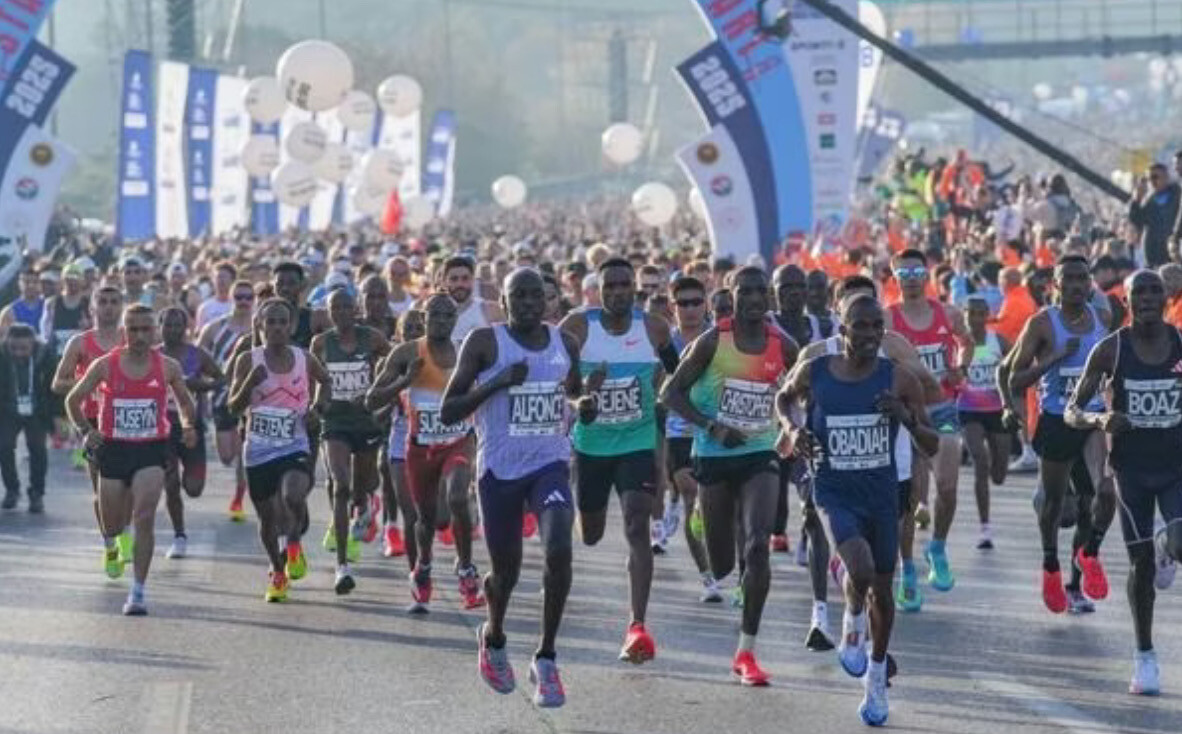
More than 6,000 runners competed in the marathon, with a total of 42,000 participants across all distances. The event holds a World Athletics Gold Label and is Turkey’s premier marathon.
Men’s Race: Kilimo Conquers the Hills
The men’s race began at an even pace, with the lead pack — including 16 athletes and four pacemakers — passing 10K in 30:41 and halfway in 1:04:41. Hopes of breaking the six-year-old course record (2:09:44 by Daniel Kibet) faded as the tempo dropped in the second half under 20°C heat.
As the runners approached the final mile-long climb, five men remained: Kilimo, Debela, Woliyi, Kenya’s Isaac Too, and Turkey’s Hüseyin Can. Too and Woliyi began to fade, leaving Kilimo and Debela to duel for victory.
“I had no clue about the uphill section at the end — it was a surprise to me,” Kilimo said afterward. “But I train in hilly areas around Iten, so I was ready.”
Kilimo, who ran a personal best of 2:06:09 in Seoul in 2024, crossed the line first in 2:10:12. “This was my biggest win so far,” he added. “My next goal is to run 2:03 on a fast course.”
Can delighted the home crowd by finishing fifth in a personal best of 2:10:58.
Women’s Race: Aderra’s Last-Minute Surge
The women’s field set an ambitious early pace — 33:38 at 10K and 1:11:22 at halfway — led by a pack of five: Ethiopians Bizuager Aderra, Sofia Assefa, Tigst Getnet, Gete Dukale, and Kenya’s Joan Kilimo.
As the temperature rose, the pace slowed. Assefa briefly fell behind but fought back, and with one kilometer to go, four women were still in contention. Assefa appeared to edge ahead, but Aderra responded with a decisive surge over the final 400 meters, sprinting into Sultan Ahmet Park to secure the win.
“This is the biggest win of my life — and a personal best,” said Aderra, whose previous mark was 2:28:27 from Rabat earlier this year. “My next goal is to go under 2:20.”
Top Results
Men
1. Rhonzas Kilimo (KEN) – 2:10:12
2. Dejene Debela (ETH) – 2:10:23
3. Sufaro Woliyi (ETH) – 2:10:26
4. Isaac Too (KEN) – 2:10:45
5. Hüseyin Can (TUR) – 2:10:58
6. Dickson Nyakundi (KEN) – 2:12:15
7. Charles Mneria (KEN) – 2:13:04
8. Dominik Bett (KEN) – 2:17:26
Women
1. Bizuager Aderra (ETH) – 2:26:19
2. Sofia Assefa (ETH) – 2:26:21
3. Joan Kilimo (KEN) – 2:26:36
4. Tigst Getnet (ETH) – 2:26:44
5. Gete Dukale (ETH) – 2:29:19
6. Roman Gidey (ETH) – 2:29:53
7. Rael Cherop (KEN) – 2:32:25
8. Yenenesh Tilahun Dinkesa (ETH) – 2:34:03
by Race News Service
Login to leave a comment
N Kolay Istanbul Marathon
At the beginning, the main intention was simply to organise a marathon event. Being a unique city in terms of history and geography, Istanbul deserved a unique marathon. Despite the financial and logistical problems, an initial project was set up for the Eurasia Marathon. In 1978, the officials were informed that a group of German tourists would visit Istanbul the...
more...Eliud Kipchoge’s Final Quest: Chasing Meaning, Not Medals in New York
When the sun rises over Staten Island this Sunday, the world will witness something special — Eliud Kipchoge, the greatest marathoner of all time, running the TCS New York City Marathon for the first time. At 40, the Kenyan legend isn’t chasing records. He’s chasing completeness — the final chapter of a career that redefined endurance and possibility.
With two Olympic golds, 11 major marathon victories, and the historic sub-two-hour run, Kipchoge already stands alone. Yet New York remains the one missing jewel in his Abbott World Marathon Majors crown. “If I don’t complete all of them,” he says, “I feel like I am halfway. My legacy will be complete when I have a sixth star.”
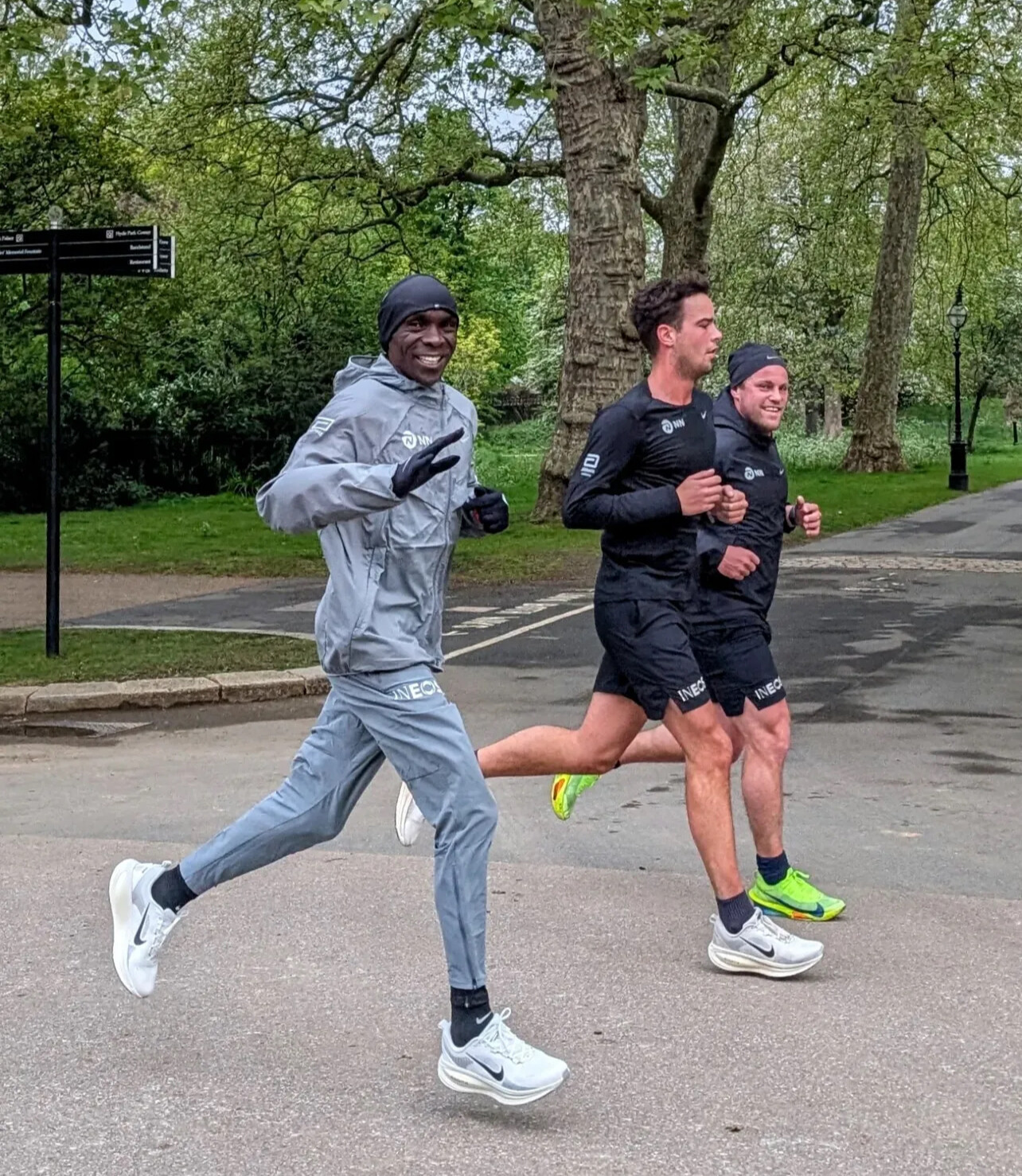
But New York is no Berlin. Its hills and bridges test rhythm and resolve. Kipchoge faces a tough field, led by his former training partner and defending champion Abdi Nageeye, along with Benson Kipruto, Alexander Mutiso, and Ethiopia’s Deresa Geleta. Nageeye, coming off a 2:04:20 in London, aims to defend his title and disrupt the legend’s farewell.
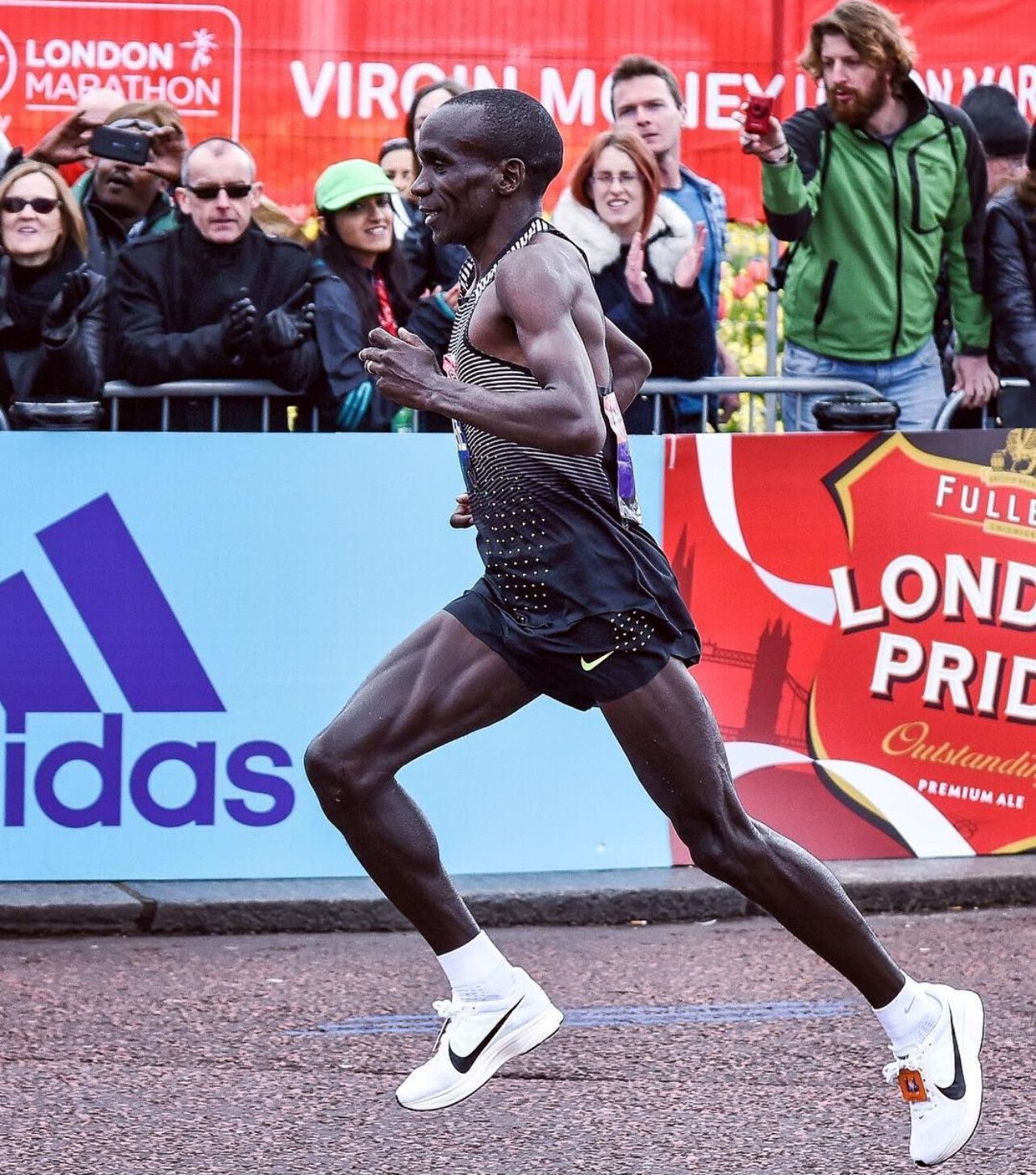
Still, for Kipchoge, this race is about purpose, not podiums. “My happiness is to see people getting interested in what I’m selling,” he says. “I’m selling the sport as a profession.” His mission now is to inspire — through running, mentorship, and his wellness platform Kotcha, which blends training, nutrition, and education. “We’re bringing knowledge to people’s fingertips,” he explains.
To him, running is a universal language. “All human beings are beautiful,” Kipchoge says. “The problem is ourselves — not using our knowledge.”
As 50,000 runners take on the five boroughs, Kipchoge’s presence turns the marathon into something larger — a meditation on effort, purpose, and legacy. His calm smile and relentless discipline remind the world that greatness isn’t about medals, but meaning.
On Sunday, as he strides through Central Park, Kipchoge won’t just be chasing a finish line. He’ll be closing a circle — running not for glory, but for the joy of fulfillment.
by Robert Kibet for My Best Runs
Login to leave a comment
Gladys Muthoni Ngure Named Female Sprinter of the Year
KATA Sprinters Kiambu Camp 16’s own Gladys Muthoni Ngure has been named Female Sprinter of the Year, a well-deserved recognition of her dedication, consistency, and outstanding performances on the track.
Representing KATA Sprinters Camp 16, Gladys has continued to impress throughout the season, capturing multiple medals and setting a strong example for Kenya’s next generation of sprinters. Her drive, discipline, and enthusiasm for improvement have made her a standout athlete within the KATA family.
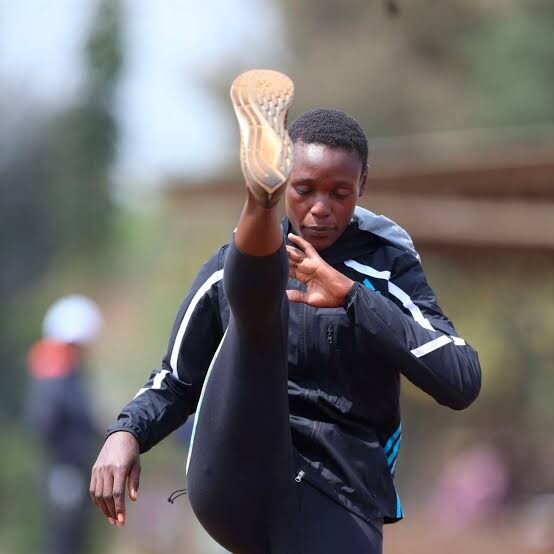
The award was presented during the Kiambu Sports Awards, where Gladys proudly represented her camp and coaches. Her commitment to training and her positive spirit have made her not only a fast runner but also a role model for her teammates.
“Gladys represents the KATA vision perfectly — combining hard work, focus, and a love for the sport,” said KATA Founder Bob Anderson. “We are proud of her progress and can’t wait to see what she accomplishes next season.”
Gladys’s journey in athletics has been built over years of dedication. According to her longtime coach Julius Gacheru, who began training her in 2015, Gladys has represented Kenya in multiple major events. She competed at the University Games in 2017, was part of Kenya’s 4x400m relay team in South Africa in 2024, and recently shone at the 2025 National Championships, where she captured gold in the 100m hurdles (14.5 seconds) and silver in the 400m hurdles (59.8 seconds).
Her achievements reflect both her personal commitment and the effectiveness of KATA’s structured system — blending world-class training, teamwork, and personal development.
With her latest honor, Gladys joins the growing list of KATA athletes making headlines across Kenya and beyond — proof that the KATA model is producing results at every level.
Congratulations, Gladys, on being named Female Sprinter of the Year. Your determination and speed continue to inspire the entire KATA family.
by Boris Baron
Login to leave a comment
Lucy Muritu: The Mother, Farmer, Coach, and Athlete Nurturing Nyandarua’s Next Generation
In the cool highlands of Nyandarua County, about 180 kilometers northwest of Nairobi, Lucy Muritu has built a life that seamlessly blends her passions for running, farming, and mentoring. Once based at the KATA Training Center in Thika, the seasoned road-running athlete has transformed her personal athletic journey into one of leadership, hard work, and community empowerment.
Born in Mukurweini, Nyeri County, Lucy grew up as the second of five children in a farming family. From a young age, she developed a deep respect for the land and a strong work ethic—values that continue to guide her today.
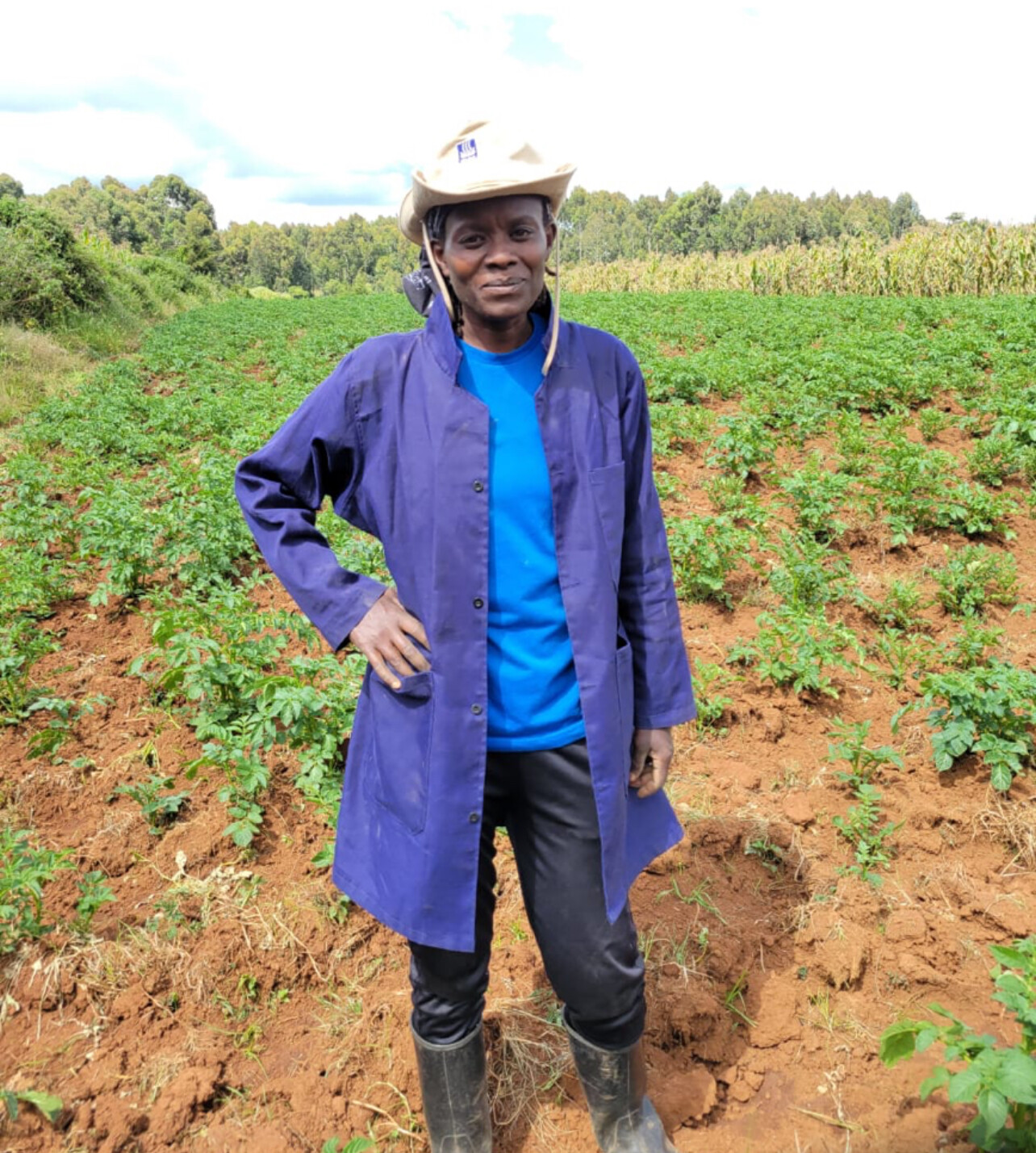
“Working in potato farming under the KATA program has been both rewarding and demanding,” she says. “The program provides valuable support like quality seeds, interest-free loans, and expert advice. These have helped me increase my yields and improve my farming practices. Through KATA, I’ve also met other farmers and taken part in competitions that keep me motivated to keep learning and growing.”
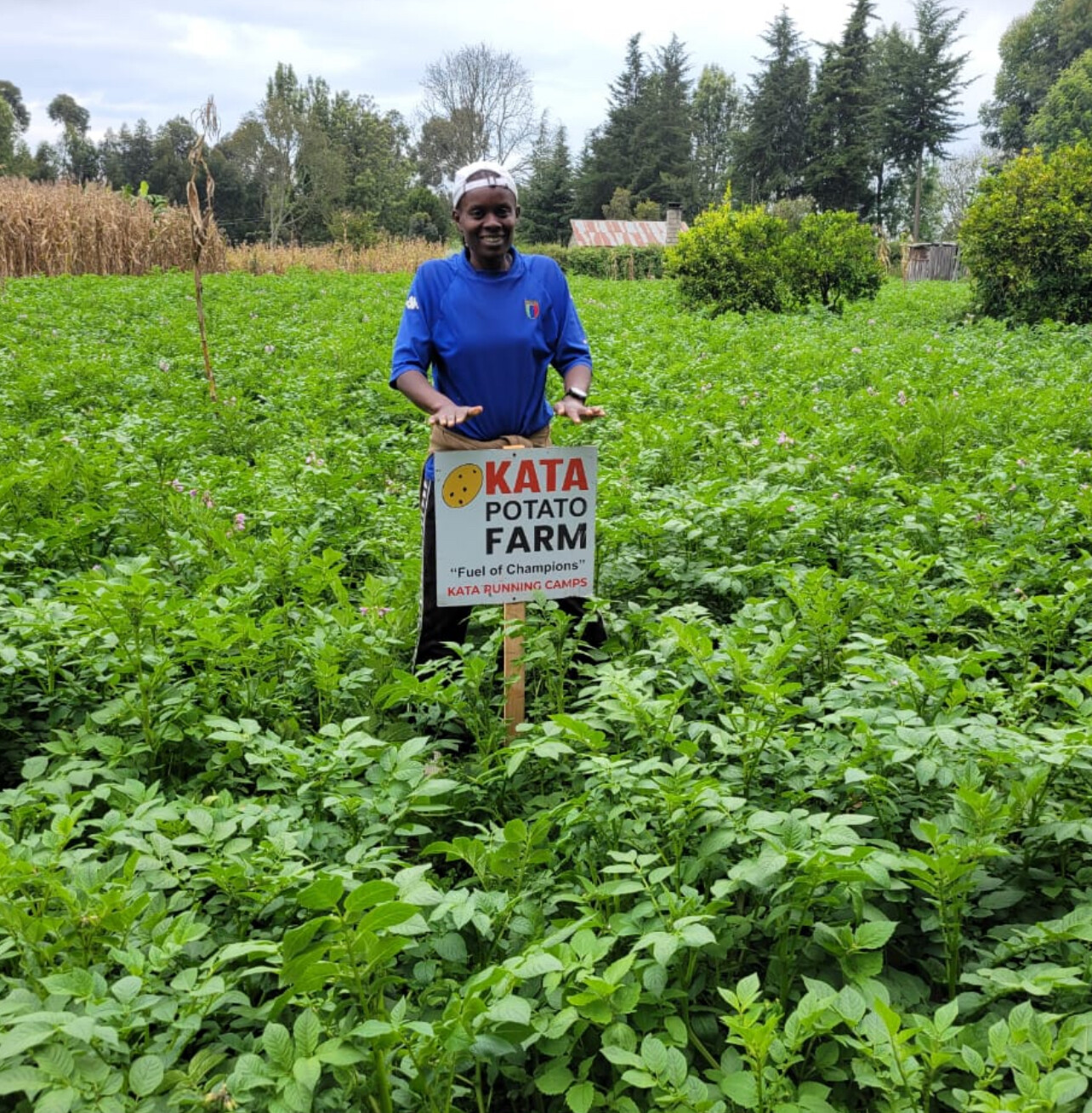
Her relocation to Nyandarua opened a new chapter, allowing her to merge her athletic discipline with agricultural entrepreneurship and youth development. “Balancing farming with training requires good time management and a strong support system,” she explains. “I plan my days carefully—mornings are for planting, weeding, or supervising workers, while afternoons and evenings are for running and workouts. It can be tough during planting seasons, but with determination and support from my family and team, I manage both. Staying active in both keeps me inspired and allows me to give back more to my community.”

Mentorship has become one of Lucy’s greatest sources of fulfillment. “I’m passionate about helping young and junior athletes,” she says. “By sharing what I’ve learned, I can help them reach their potential—not just in sports but in life. Growing up, mentors played a huge role in my journey, and I want to do the same for others, especially in rural areas where opportunities can be scarce.”

She beams when talking about the athletes she coaches. “Watching them grow in confidence, discipline, and skill is incredibly rewarding,” Lucy says. “I want them to understand that with hard work and determination, they can achieve their dreams—whether on the track, in the classroom, or in their communities.”
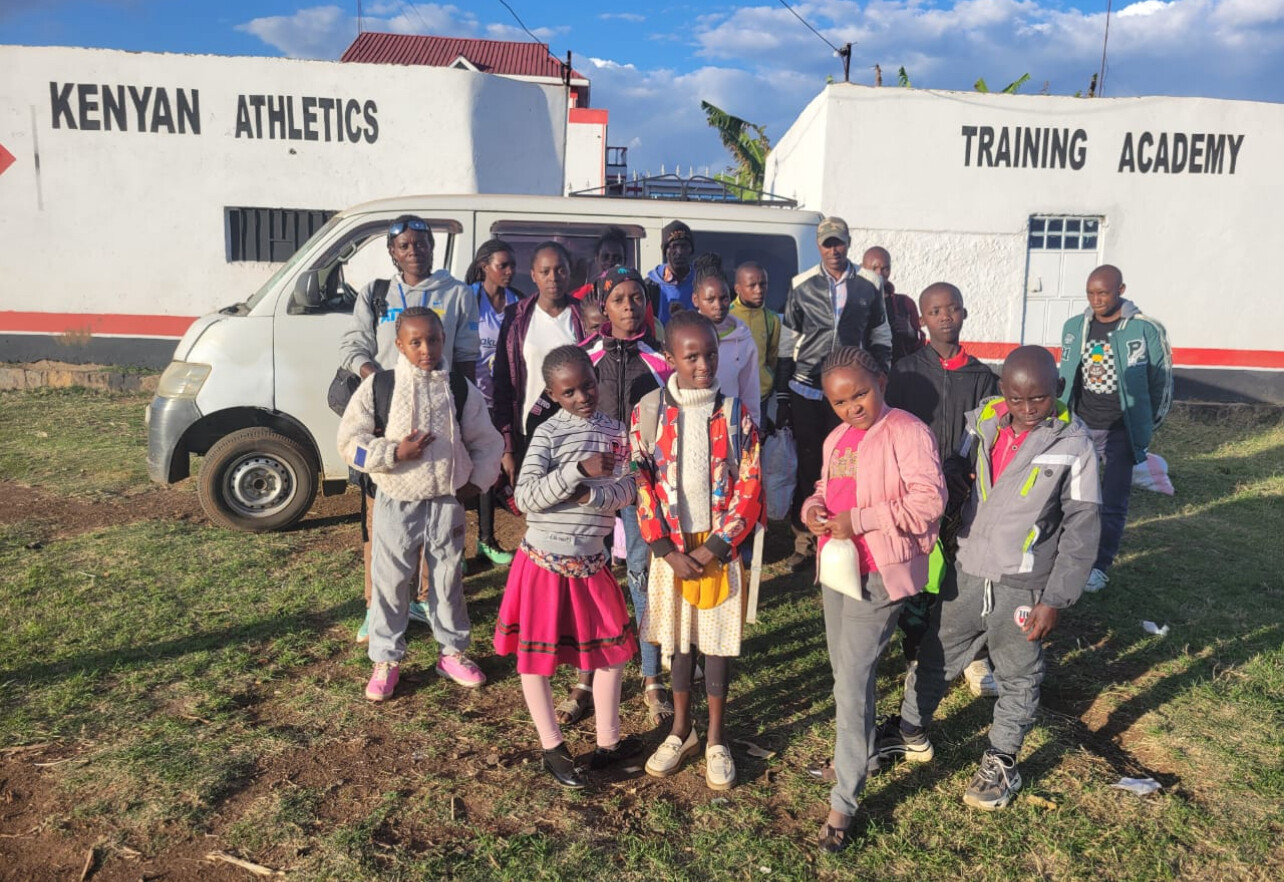
Lucy also carries a special message for women juggling multiple roles. “Believe in yourself and never underestimate your strength,” she says. “It’s not always easy to balance family, work, and personal dreams, but with determination, planning, and support, it’s possible to thrive in all areas. Don’t be afraid to ask for help, and always take time for yourself. Every role you play—as a mother, professional, coach, or athlete—has its own value. Celebrate every achievement and keep pushing forward. By following your passion and setting a positive example, you’re showing young girls that they too can dream big and succeed.”
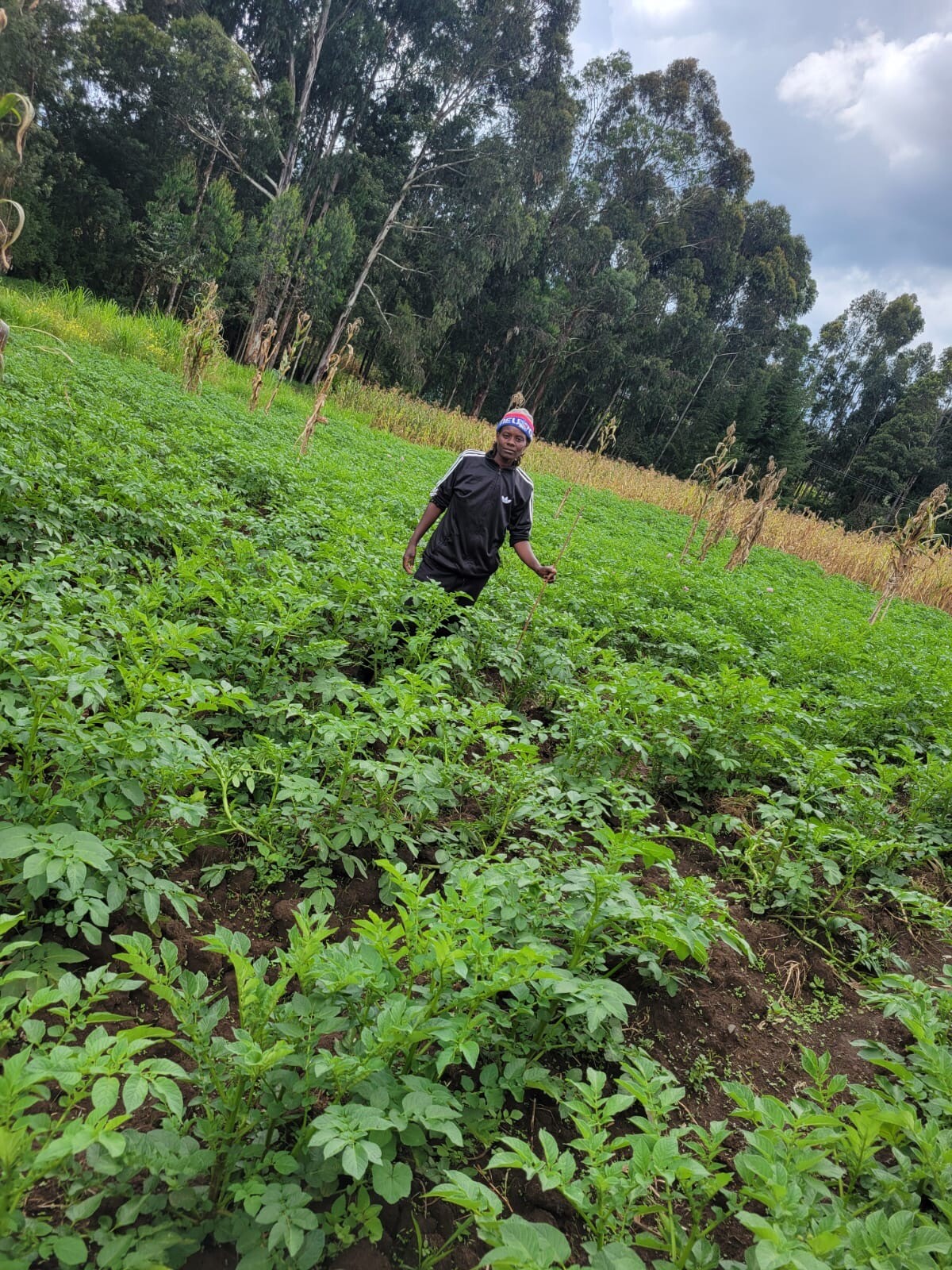
Lucy Muritu’s story is one of harmony—between nurturing crops and cultivating talent, between personal goals and community service. Her journey proves that true success doesn’t come from running away from your roots, but by running with them.
by Robert Kibet
Login to leave a comment
KATA Kerenget Runners Excel in 10K Time Trial Despite Challenging Weather
Athletes at the KATA Kerenget Running Camp (ID K03), operated by Sammy Dismas, showcased their determination and talent during a 10K time trial held today under tough weather conditions. Despite the challenge, the event was a success, demonstrating the resilience and dedication that define the KATA spirit.
In the men’s 10K, Amos Kirui (Bib 076) claimed victory with an impressive time of 29:56, edging out Jackson Koech (Bib 069), who finished close behind in 30:01. Cosmas Mutai (Bib 070) secured third place in 30:20, while Benard Kibilo (Bib 071) and camp operator Sammy Dismas (Bib 077) followed in 30:32 and 30:51, respectively. Simon Toli (Bib 070) rounded out the top six with a strong 31:00 finish.
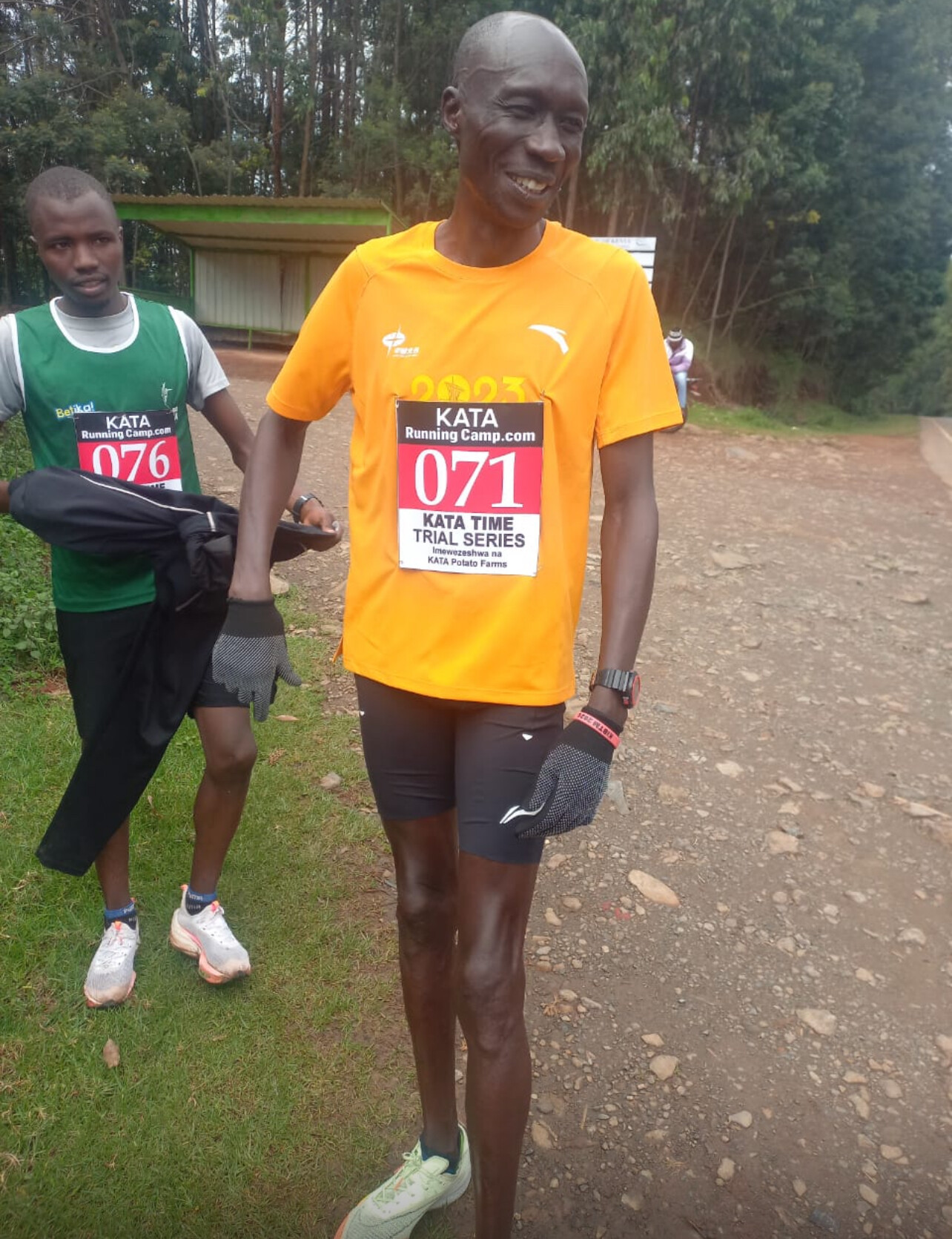
In the women’s 10K, Daphine Kiptoo (Bib 072) led from the front to take the win in 35:00, followed by Sharon Ndanu (Bib 074) in 35:40 and Mercy Chepngeno (Bib 073) in 36:15.
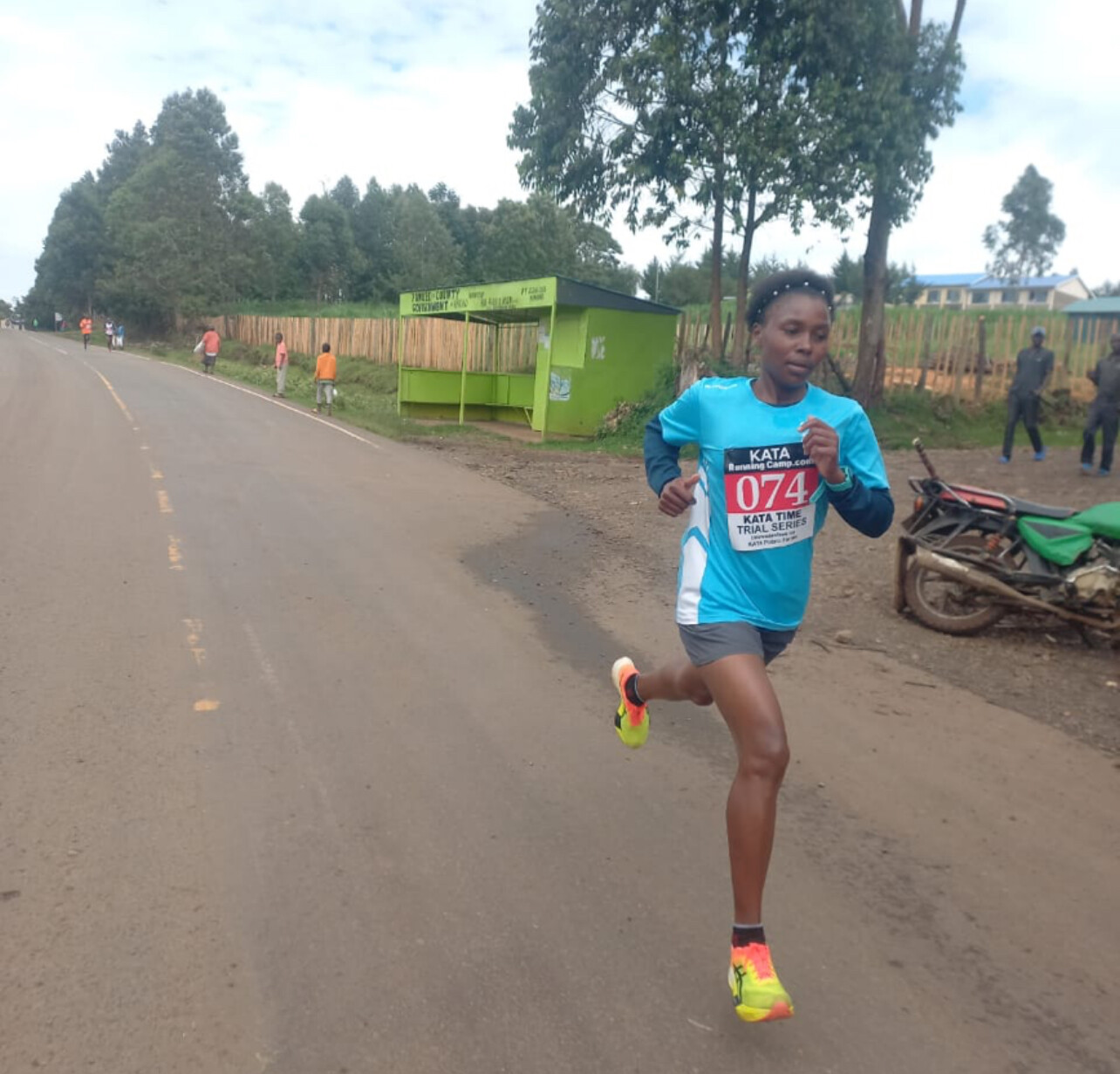
“Even though the weather was not favorable, we did our best to ensure everything went on well,” reported the Kerenget Camp team. Their commitment ensured another smooth and competitive trial for the KATA athletes.
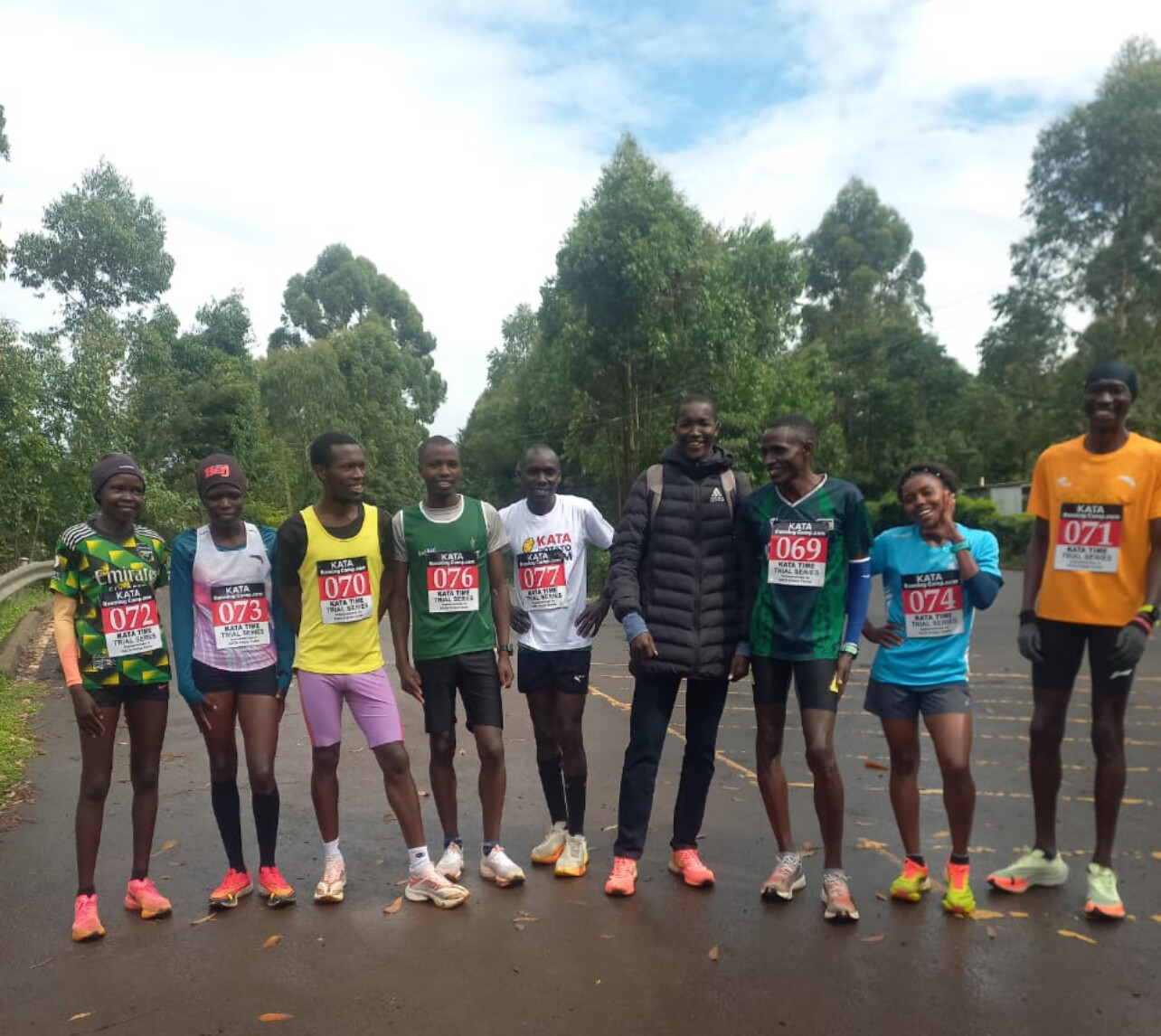
The KATA Kerenget Running Camp is one of 31 KATA Running Camps, mostly located in Kenya’s Rift Valley, that help athletes reach their potential under the Kenyan Athletics Training Academy (KATA)program. With regular time trials like this, runners continue to refine their form and fitness as they prepare for upcoming races both locally and internationally.
by Boris Baron
Login to leave a comment
Ethiopians Dejene Debela and Tigst Getnet Lead the Elite Fields at the 2025 Istanbul Marathon
The 47th Türkiye İş Bankası Istanbul Marathon takes place this Sunday, November 2, 2025, drawing top international athletes to one of the world’s most scenic and competitive races. A World Athletics Gold Label event, the marathon is famous for its cross-continental course that starts in Asia, crosses the Bosphorus Bridge, and finishes in Europe.
Elite Headliners
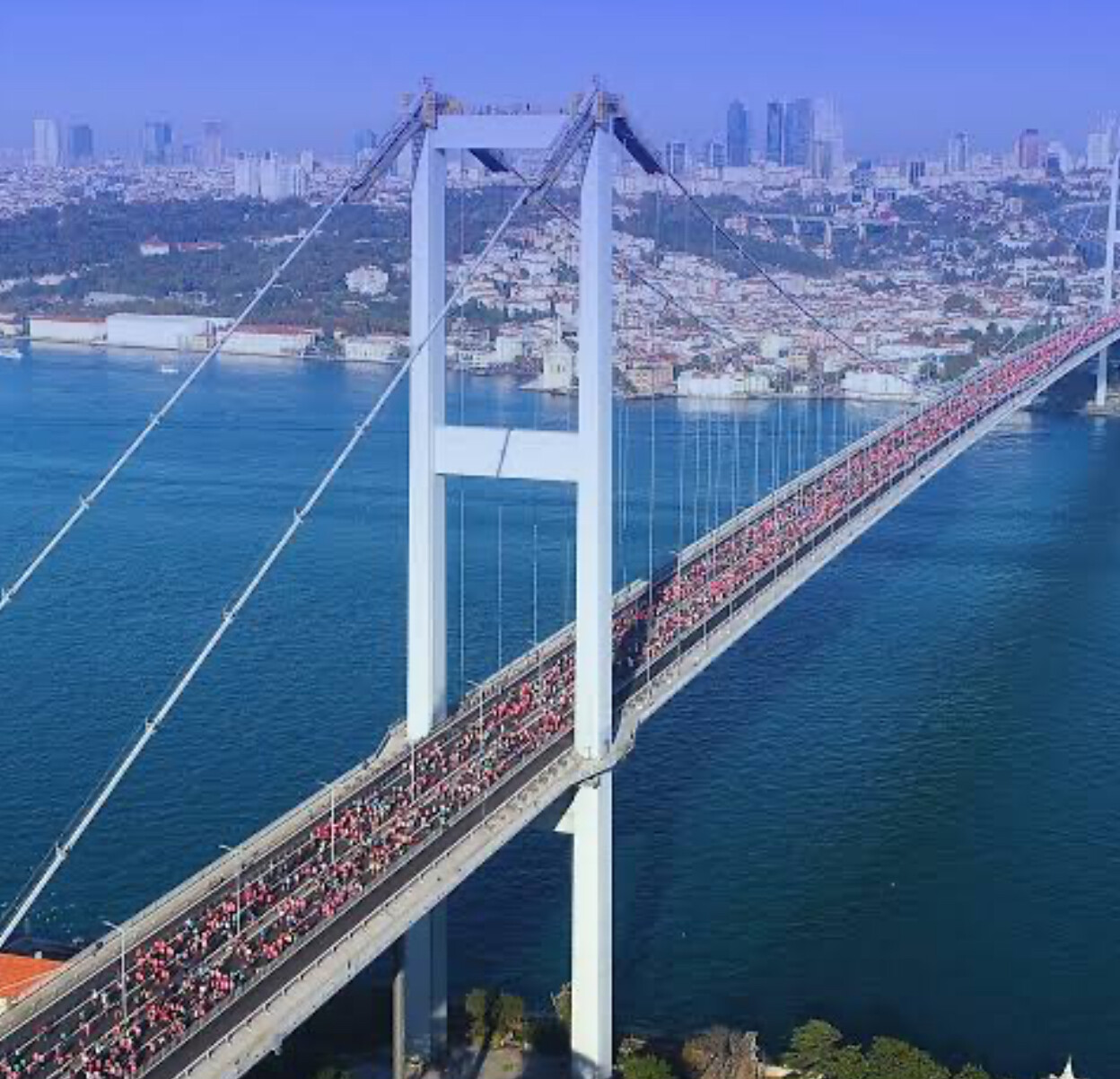
Defending champion Dejene Debela and fellow Ethiopian Tigst Getnet lead this year’s elite fields. Debela’s personal best is 2:05:46, while Getnet’s stands at 2:23:17. Both are eager to add another title to Ethiopia’s long tradition of marathon dominance.
The men’s and women’s races are deep with talent. Half a dozen men have run between 2:05:30 and 2:09:00, and six women enter with times under 2:26:00. Around 6,000 marathoners will race the full distance, joined by tens of thousands more in shorter events — totaling over 42,000 runners.
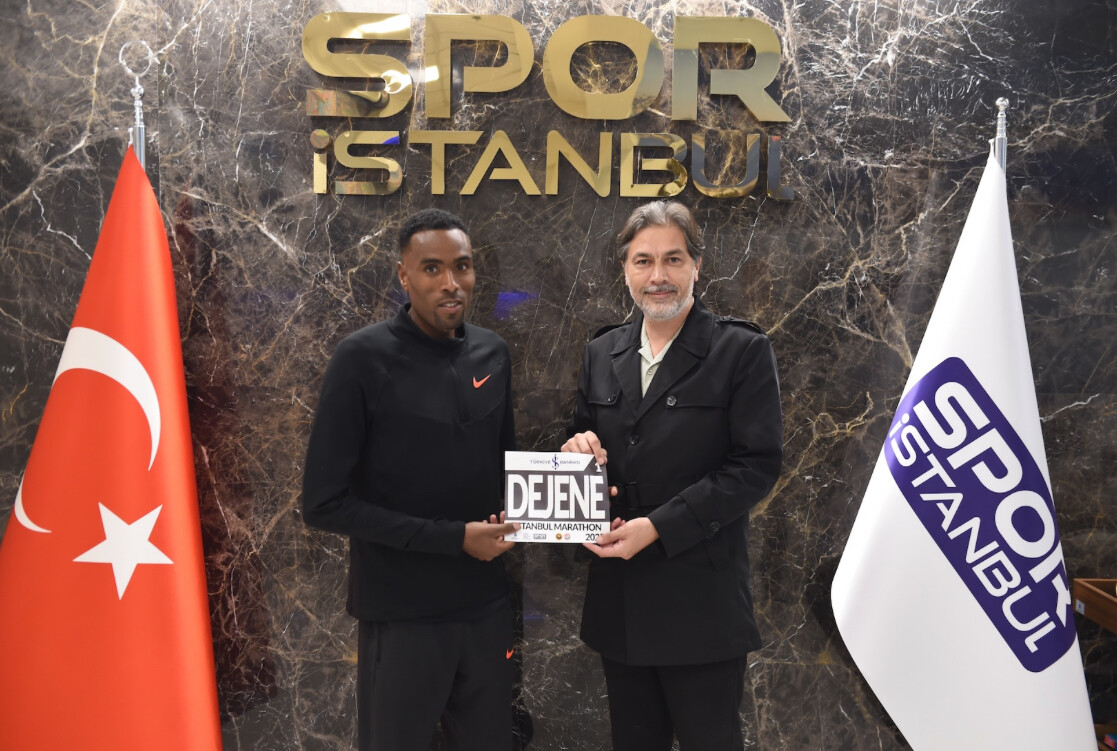
“Since Istanbul is a candidate for the 2036 Olympic Games, our marathon has an important role to play,” said Race Director Bilge Donuk.
The Men’s Race
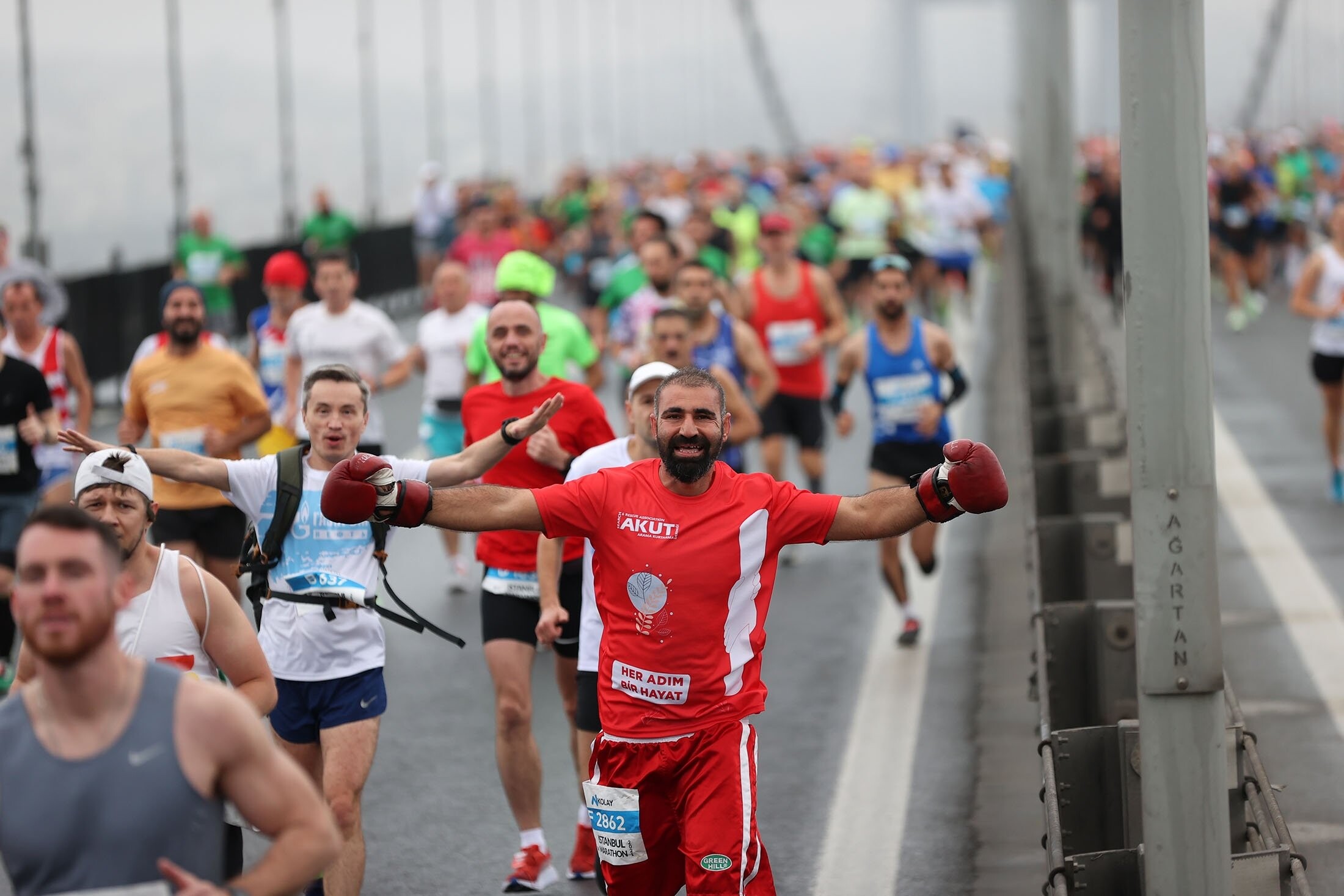
Dejene Debela returns to defend his title after winning in windy conditions last year. “It was very windy last year, so this time I hope for a much faster time,” he said. The 30-year-old Ethiopian, who trains in Addis Ababa, set his PB of 2:05:46 in Chicago (2019) and has since overcome injuries that slowed his progress.
Organizers expect pacemakers to target 63:30–63:45 at halfway — a pace Debela says fits his goal. He has raced sparingly this year, dropping out of the Wuxi Marathon in March as a precaution but now says he feels “ready to defend my title.”
Among his challengers are Rhonzas Kilimo (KEN, 2:06:09) and Ethiopia’s Sufaro Woliyi, just 22, who impressed with a 2:07:19 debut in Xiamen. Kenya’s Benard Kipkorir, fourth here last year, recently clocked 2:08:12 in Chongqing and could also contend.
Kenya’s Denis Chirchir was forced to withdraw with a stress fracture, while New Zealand’s Jake Robertson is sidelined by injury.
The Women’s Race
Two Ethiopian training partners — Tigst Getnet and Sofia Assefa — headline the women’s field. Both train under Kirubel Damtew in Addis Ababa. Getnet’s best is 2:23:17, while Assefa’s stands at 2:23:33.
Sofia Assefa, 37, is a former world-class steeplechaser who won Olympic silver in 2012 and World Championship bronze in 2013. After a promising marathon debut in Amsterdam, she placed second in Copenhagen this May with 2:26:21 and says she’s now in even better form.
Her training partner Tigst Getnet, 15 years younger, has already completed six marathons. Her debut in Dubai (2023) remains her best, and she’ll look to return to that level in Istanbul.
Other notable contenders include Yenenesh Tilahun Dinkesa (2:24:09), Letebrhan Gebreslasea (2:24:47), and Roman Gidey (2:25:22), who ran two strong marathons within two weeks in Guangzhou last year. Kenya’s rising 21-year-old Joan Kilimo (2:25:32 debut in Milan) leads the Kenyan challenge.
Defending champion Ruth Jebet has withdrawn to compete in the Islamic Solidarity Games next week in Riyadh.
Top Elite Runners and Personal Bests
Men
Dejene Debela (ETH) – 2:05:46
Rhonzas Kilimo (KEN) – 2:06:09
Sufaro Woliyi (ETH) – 2:07:19
Benard Kipkorir (KEN) – 2:08:12
Isaac Too (KEN) – 2:08:45
Charles Mneria (KEN) – 2:08:54
Hillary Kipchumba (KEN) – 2:09:53
Women
Tigst Getnet (ETH) – 2:23:17
Sofia Assefa (ETH) – 2:23:33
Yenenesh Tilahun Dinkesa (ETH) – 2:24:09
Letebrhan Gebreslasea (ETH) – 2:24:47
Roman Gidey (ETH) – 2:25:22
Joan Kilimo (KEN) – 2:25:32
by Race News Service
Login to leave a comment
Eliud Kipchoge Chases One Final Milestone as He Makes His New York City Marathon Debut This Sunday
One of the most anticipated starts in marathon history arrives this Sunday as Eliud Kipchoge, the two-time Olympic marathon champion and widely regarded as the greatest marathoner of all time, makes his debut at the TCS New York City Marathon (NYC Marathon).
The Big Picture
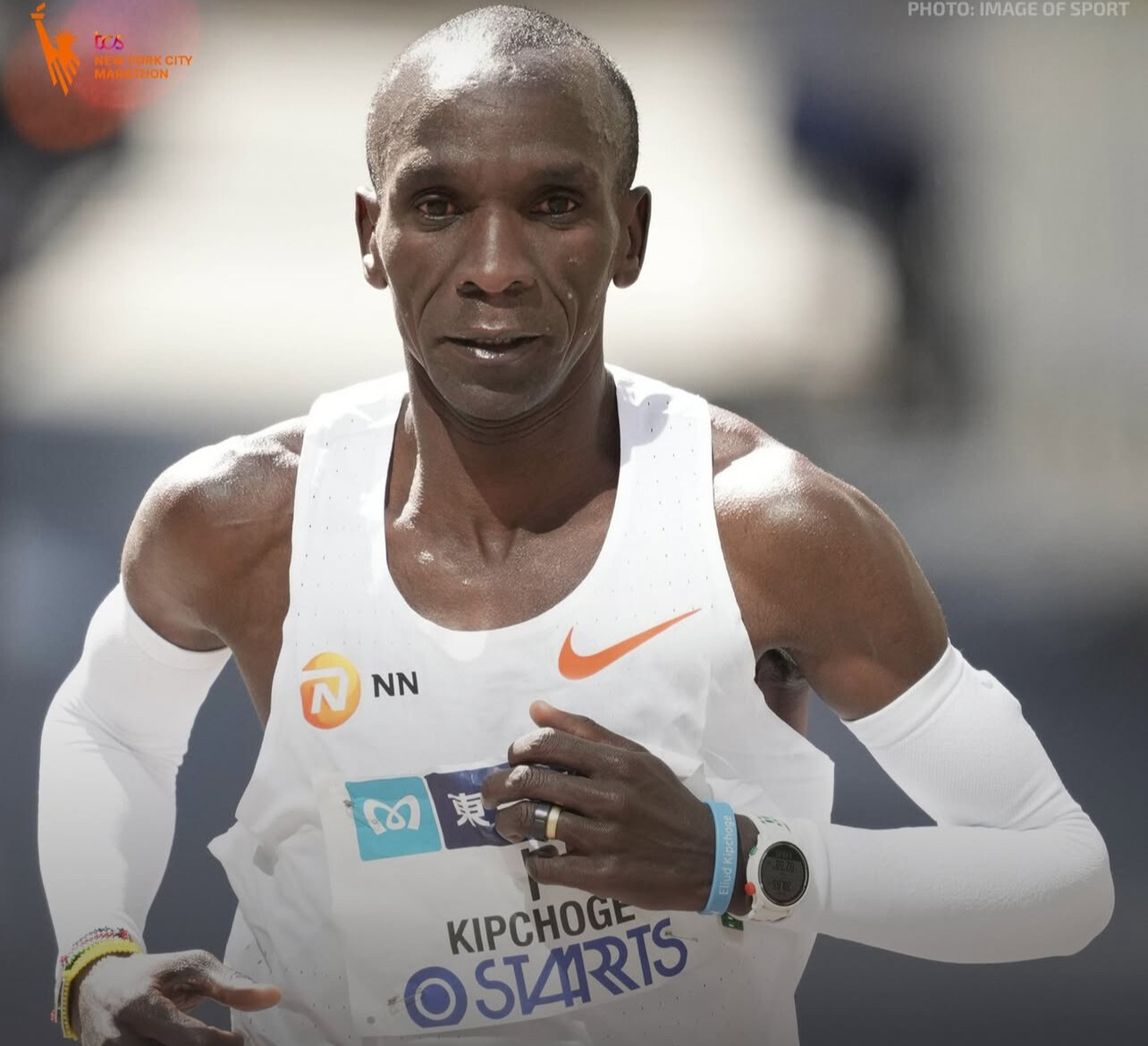
At 40 years old, Kipchoge has already built an extraordinary legacy: Olympic gold medals in 2016 (Rio) and 2020 (Tokyo), a world-record marathon time of 2:01:09 in Berlin 2022, and a historic sub-2-hour marathon effort in Vienna 2019 (1:59:40 – though not ratified).
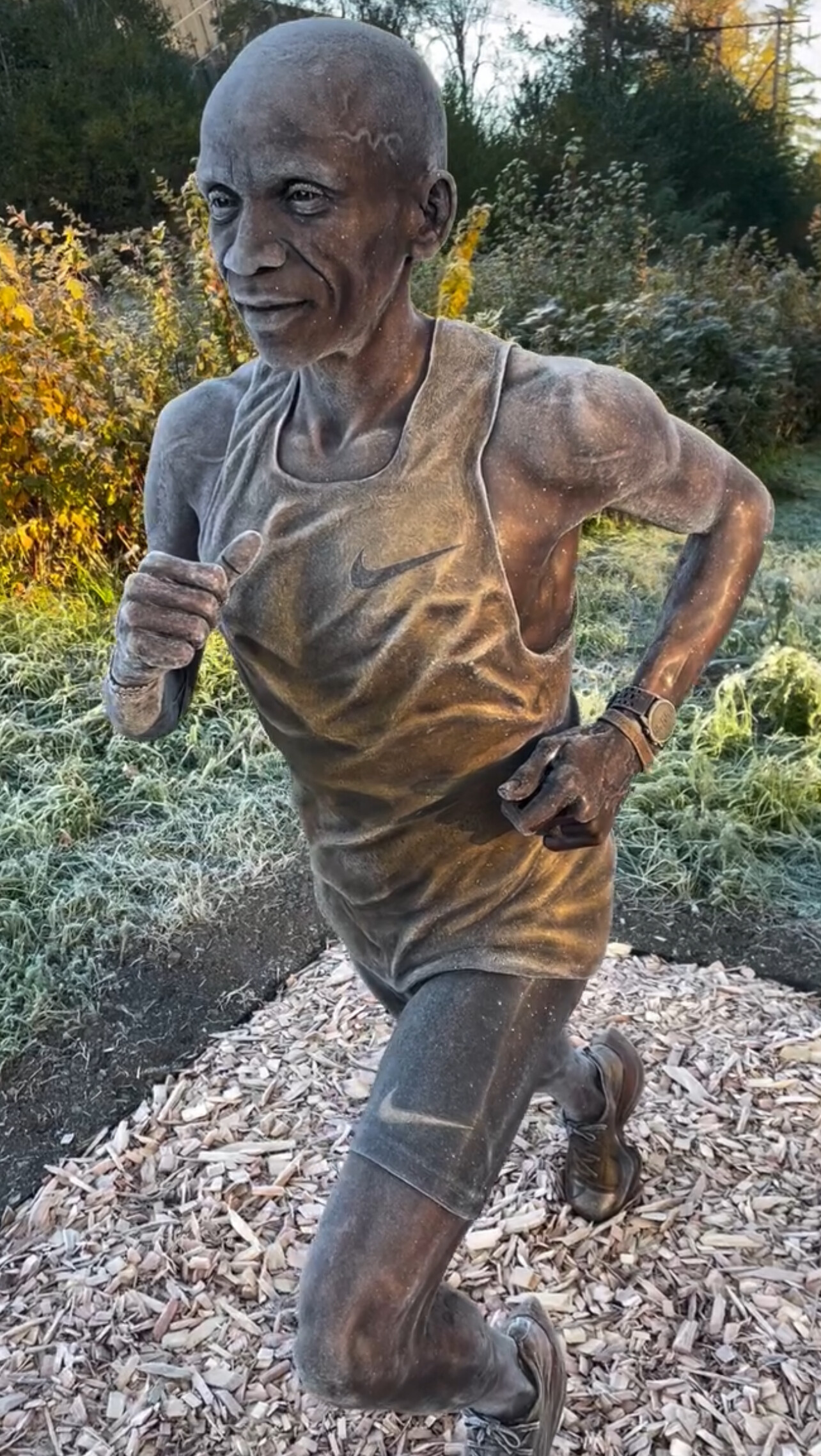
Yet until now, the NYC Marathon has been the elusive piece of the puzzle. By lining up this Sunday, Kipchoge will complete his set of the major Abbott World Marathon Majors (AWMM) if he crosses the finish line—it’s the only major marathon he has yet to run.
Why It Matters
• Legacy: Finishing NYC would give Kipchoge the coveted “six-star” AWMM medal for running all six of the premier majors.
• New challenge: The NYC course is markedly different from the flat, fast courses of Berlin or London. It’s undulating, uses bridges, and traverses the five boroughs—a true test of both physical and mental strength.
• Age and motivation: While Kipchoge remains in top shape, he acknowledges the impact of time and says this race is as much about meaning and experience as it is about finishing fast.
The Competition & Conditions
Kipchoge enters a stacked elite field. He’ll face defending champion Abdi Nageeye of the Netherlands, former NYC winners Evans Chebet and Albert Korir, and several rising stars with sub-2:04 personal bests.
What to Watch
• Will Kipchoge go for a bold win or focus on completing this final major?
• How will the unique challenges of NYC—bridges, hills, and roaring crowds—affect his pacing and strategy?
• Could this race mark the close of his competitive marathon career—or the beginning of a new chapter as ambassador and mentor?
Sunday’s race isn’t just another marathon for Eliud Kipchoge. It’s a long-awaited chapter in a legendary career—one that may see him conquer the final major, inspire millions, and reaffirm his enduring message: No human is limited.
by Boris Baron
Login to leave a comment
Still Racing Strong, Olympic Medalist Edwin Soi Leads by Example at KATA — Growing Potatoes, Training Hard, and Competing for the Half-Million Shilling Farmer Bonus
Edwin Soi is a 5000m Olympic medalist and still running well photo of him running 27:30 just a few months back at altitude). He is also one of the KATA Running Camp operators and has three acres of KATA potatoes. He posted this after we announced our new contest for our KATA farmers.
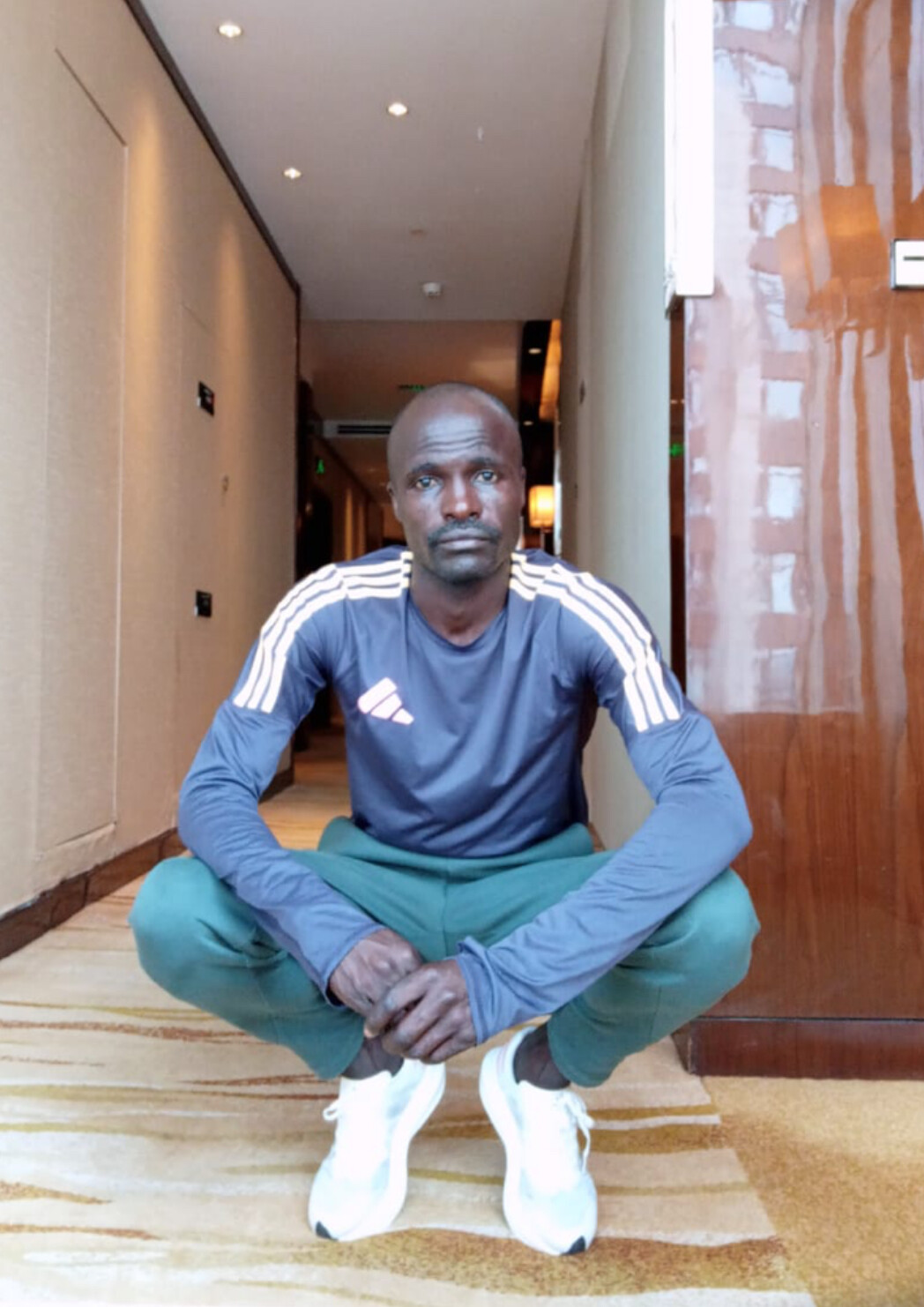
“This is the kind of motivation,” says Edwin that pushes us past our limits. We promise to take this challenge to the top notch in both arenas.
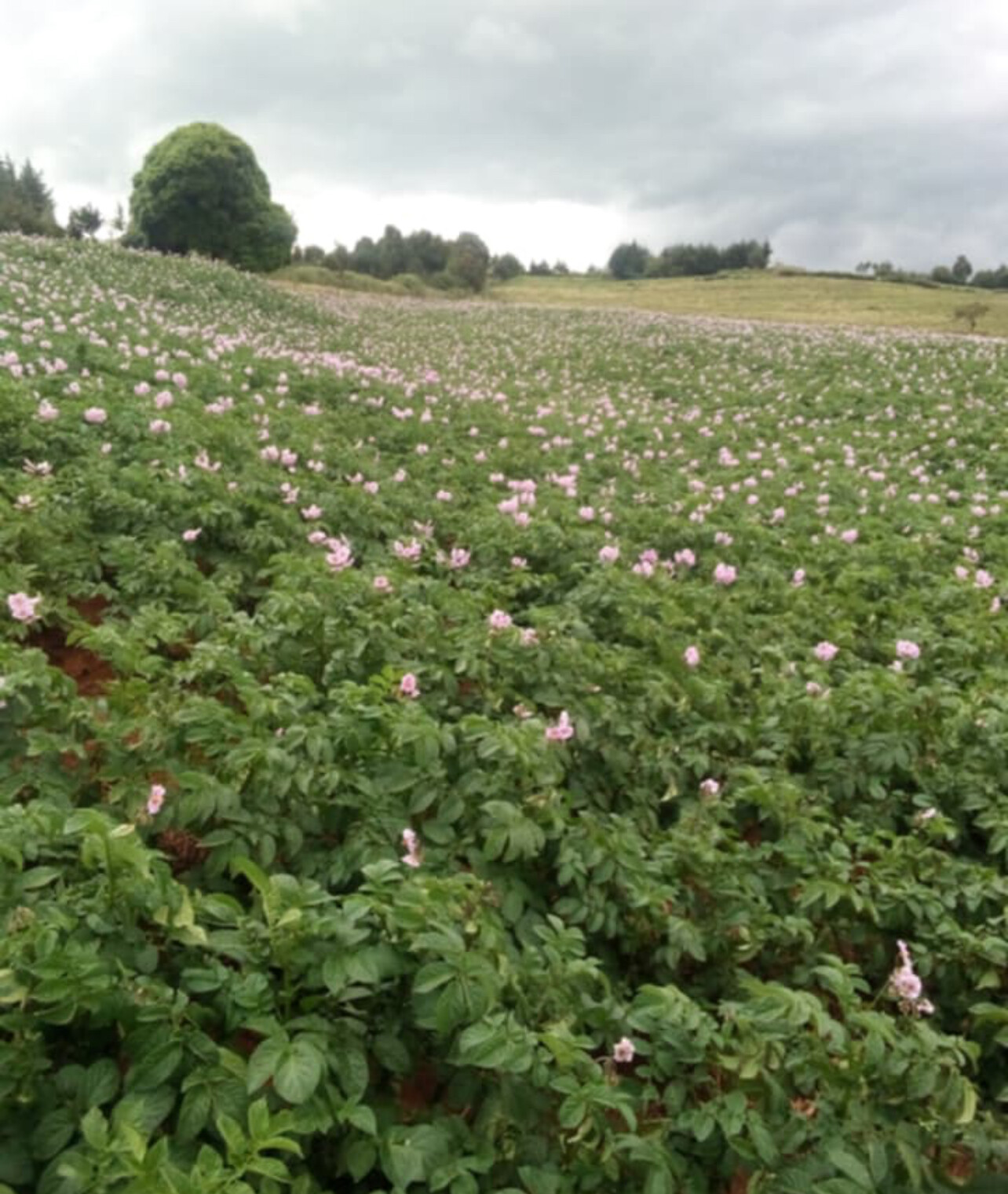
On the farm, we focused on achieving a record potato yield per acre to be a winner in both Contest #1 and Contest #2. On the running field, that spirit translates directly into training harder and competing fiercer.
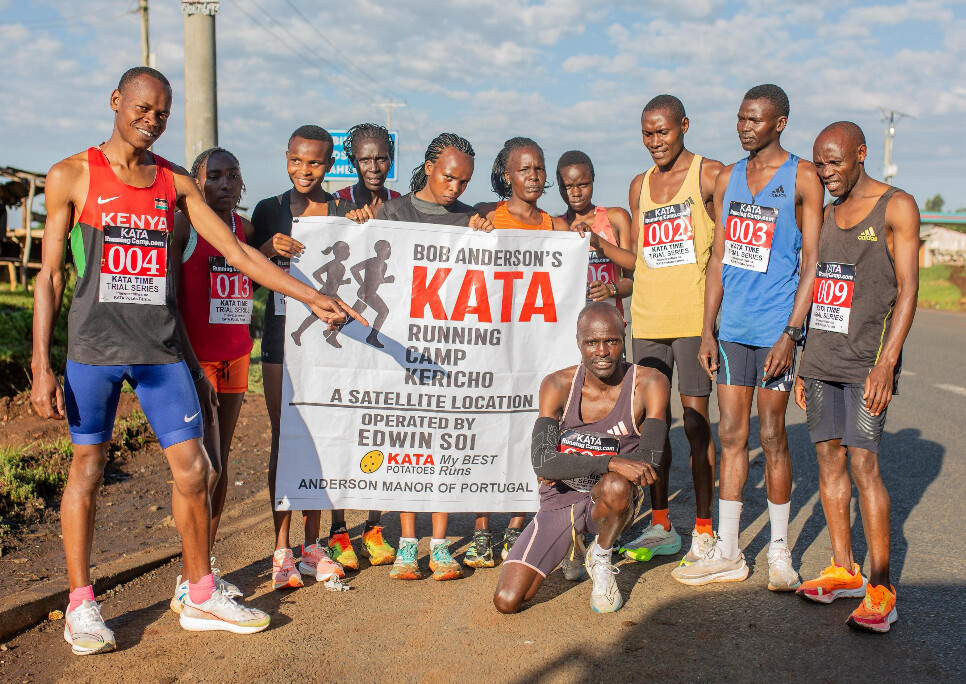
We will not just grow strong; we will demonstrate absolute excellence. Thank you Bob for fueling our drive to be champions. #GoKATA
Here are the details of our new contest:
KATA Potato Farmer Half-Million Bonus! ?
KATA is bringing its competitive spirit to the fields!
Twice a year, five KATA farmers with the best yield per acre will each earn 50,000 KES — that’s half a million shillings annually! ?
Contest #1 closes: Dec 31, 2025
Contest #2 closes: Jun 30, 2026
✅ Yields counted in 50 kg bags sold to verified buyers
✅ One bag kept for personal use not counted
✅ Once funds are received by KATA and confirmed by CTO Dennis, your yield is officially recorded
All results verified by Dennis (CTO), Gideon & John (Sales Directors), and Fridah (Accounts Manager).
Each contest will name five different winners — but a farmer can win both see seasons!
“KATA rewards excellence — on the track and in the field.”
— Bob Anderson, Founder & Director
Additional camps and farms will be added starting in December. Contact Bob Anderson on WhatsApp.
Stay current at www.KATA.ke
by Boris Baron
Login to leave a comment
KATA Launches Half-Million Bonus for Top Potato Farmers
Expanding its spirit of competition from the track to the fields, KATA rewards excellence in both running and farming.
KATA is taking its competitive spirit from the track to the fields with the new KATA Potato Farmer Half-Million Bonus Prize Package. This program will reward five KATA farmers with 50,000 Kenyan Shillings each, recognizing those who achieve the best yield per acre.

The first payout will be made on December 31, followed by a second on June 30. Each cycle, five farmers with the top single-acre harvests will receive the bonus, totaling half a million shillings annually.
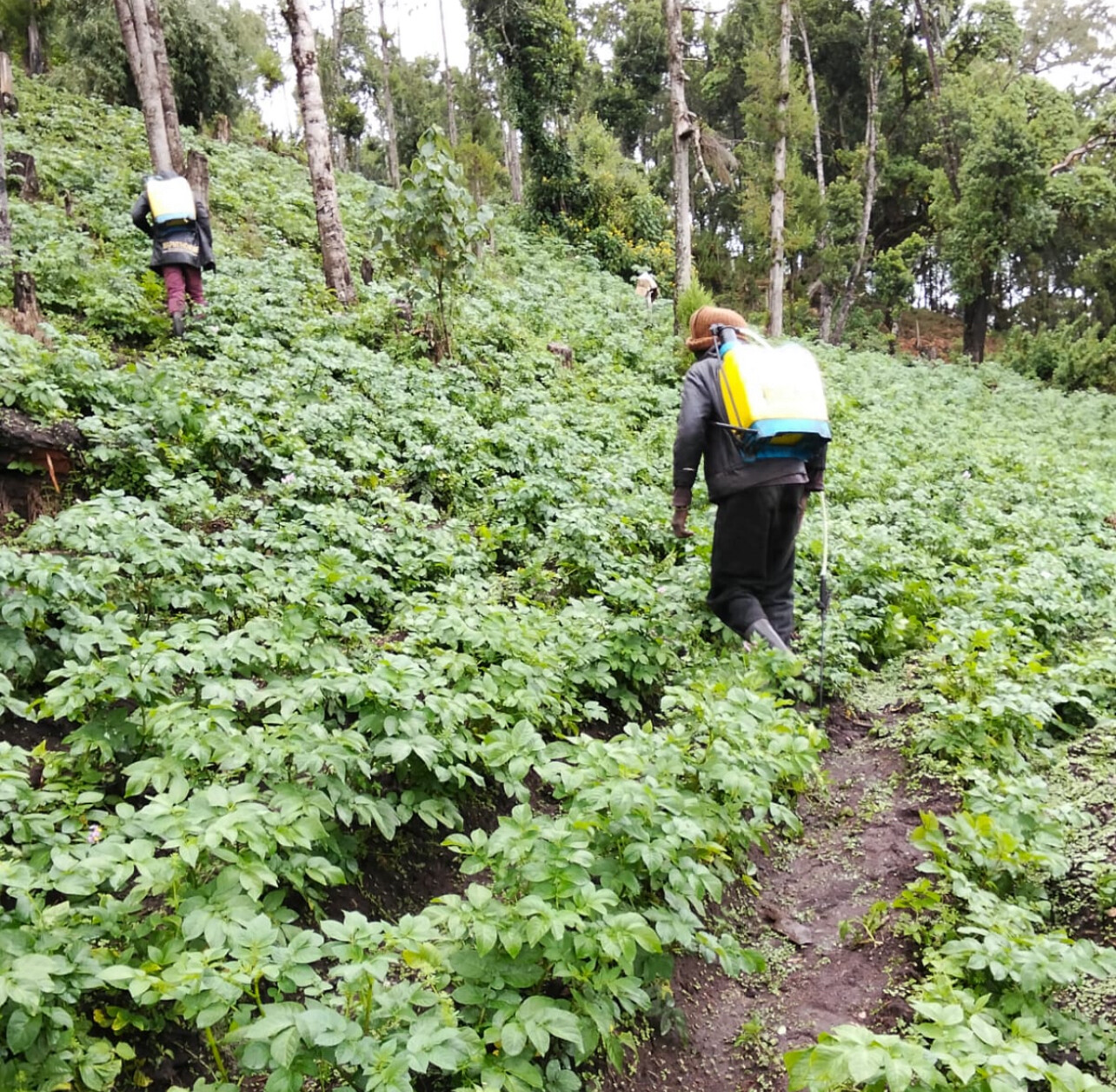
Yields will be measured in 50 kg bags and must be sold to verified buyers. Results will be confirmed by CTO Dennis, Sales Directors Gideon and John, and Accounts Manager Fridah. The one bag each farmer keeps for home use will not count, and only bags sold and confirmed as paid to KATAwill qualify.

“We offer prize money for races, and with all the hard work it takes to grow KATA potatoes, I thought—why not turn this into a competition as well?” says Bob Anderson, KATA Founder and Director.
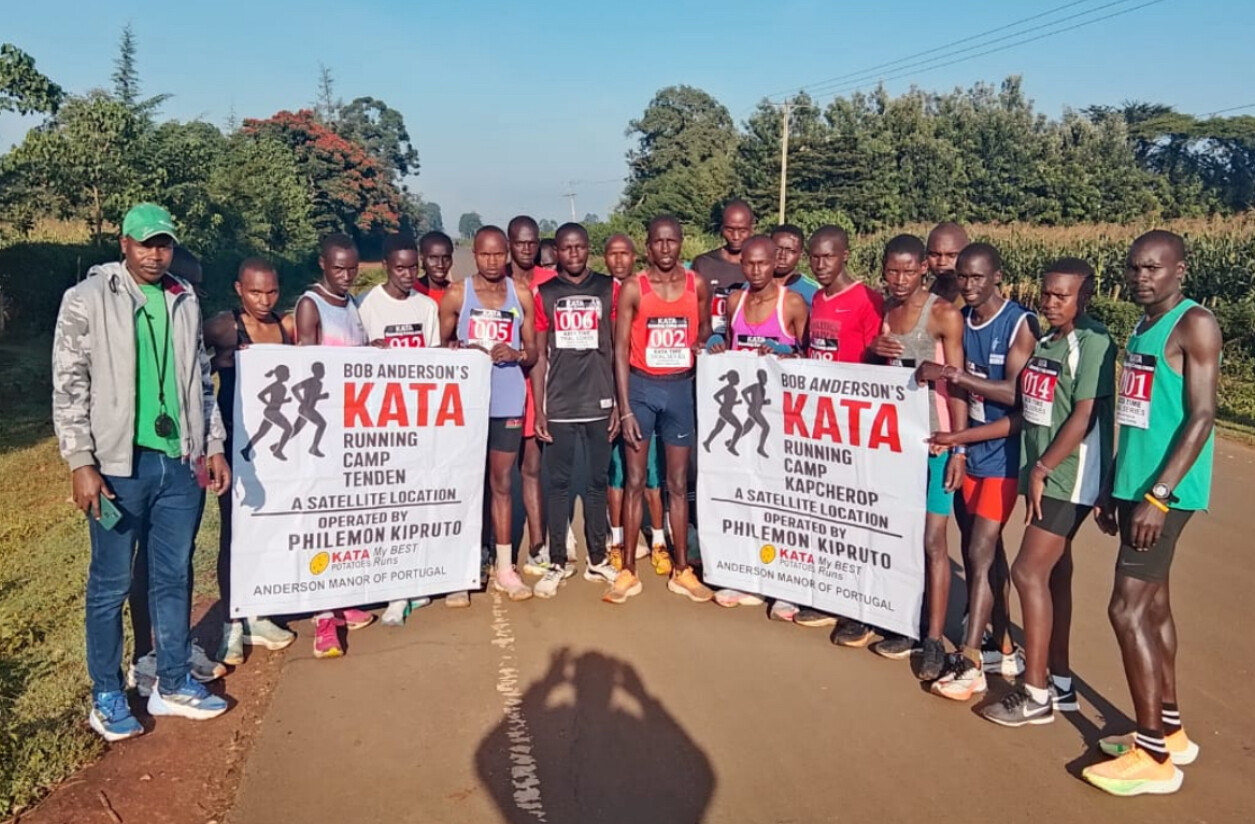
A farmer can win twice a year if they achieve the best results in both seasons. The initiative mirrors KATA’s philosophy—rewarding effort, precision, and perseverance whether it’s on the course or in the soil.

From Running to Farming Excellence
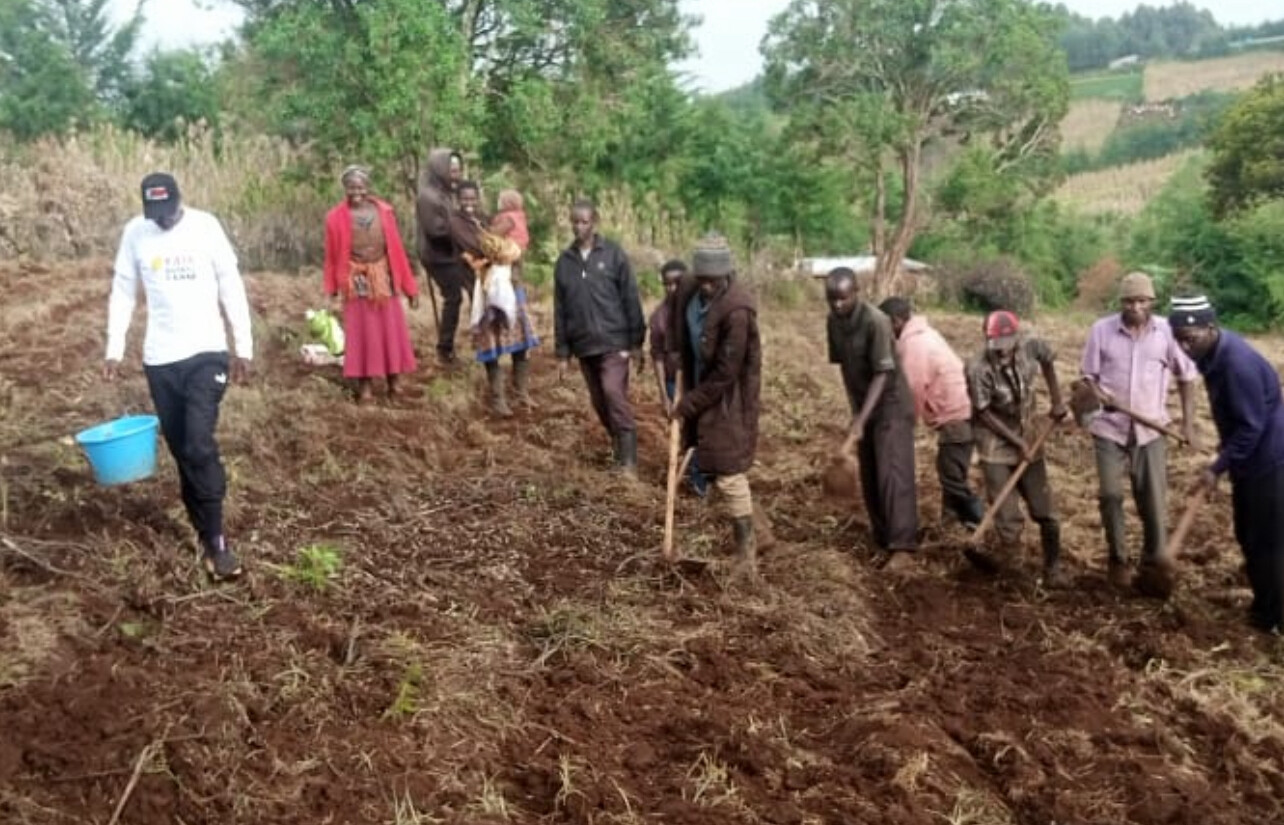
The Kenyan Athletics Training Academy (KATA), founded by Bob Anderson, the creator of Runner’s World and My Best Runs, began as a world-class training center for runners in Thika, Kenya. Today, it has grown into a dynamic network that includes over 30 KATA Running Camps and 60+ KATA Potato Farms across Kenya, and an international headquarters at Anderson Manor in Portugal.
Each KATA farm operates under a system that combines athletics and agriculture, offering farmers interest-free loans and ongoing support to grow certified Shangi potatoes. The harvests are marketed through KATA’s coordinated sales network, ensuring fair prices and dependable returns for each farmer.
Many KATA farmers are also runners—or closely connected to the athletic community—bringing the same discipline, teamwork, and endurance to farming that they apply to training.
Empowering Champions in Every Field
From the start, KATA’s mission has been to help people reach their potential through endurance, consistency, and community. The new Half-Million Bonus Prize Package celebrates that mission—recognizing those who deliver exceptional results through focus and commitment.
As Anderson explains, “Whether it’s crossing a finish line or bringing in a record harvest, both take focus, endurance, and belief in yourself. That’s what KATA is all about.”
The first group of winners for the KATA Potato Farmer Half-Million Bonus Prize will be announced on December 31, 2025.
Additional KATA Running Camps and KATA Potatoe farms are going to be confirmed starting in December. Confirm your interest by contacting Bob Anderson on WhatsApp.
by Boris Baron
Login to leave a comment
Uasin Gishu Half Marathon The Spirit of Eldoret Lives On
The Uasin Gishu Half Marathon, that is held annually in August in the heart of Kenya’s running country, once again showcased the nation’s unrivaled distance-running talent and spirit.
Thousands of athletes took to the scenic, high-altitude roads of Eldoret, cheered on by local fans who lined the streets from start to finish. The race, sponsored by Betika, continues to grow in stature each year, combining elite performances with strong community participation.
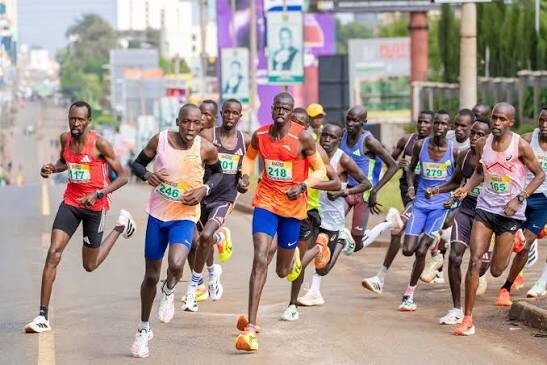
In the men’s race, Robert Kiprop stormed to victory with an impressive time of 1:00:56, pulling away in the final kilometers to secure the crown. On the women’s side, Gladys Chepkurui was dominant, finishing in 68:56, ahead of Vivian Cherotich, who clocked 70:02. Both races reflected the incredible depth of talent that defines Kenyan running—where even regional competitions produce world-class results. The champions each earned KSh. 300,000, with the runners-up taking home KSh. 200,000—a reflection of the event’s growing professional stature.
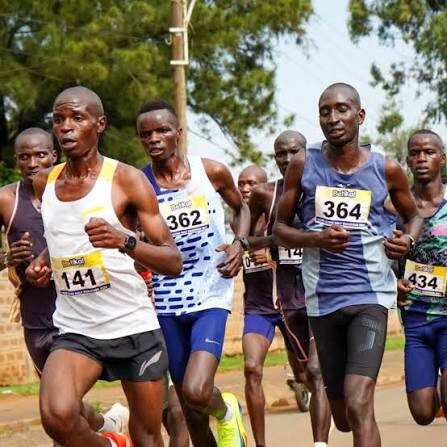
Beyond the competition, the Uasin Gishu Half Marathon offered an unforgettable racing experience. The rolling terrain, high altitude, and enthusiastic crowds create a course that challenges every runner while celebrating Kenya’s proud running heritage.
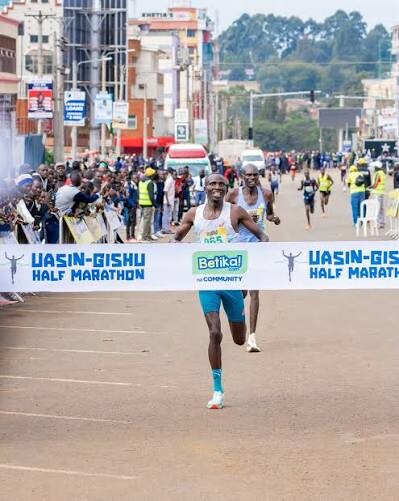
As one of the country’s most exciting half marathons, Uasin Gishu has become a proving ground for rising stars and a celebration for local and visiting runners alike. It’s a reminder that in Kenya, running is more than a sport—it’s a way of life.
by Boris Baron
Login to leave a comment
Jakob Ingebrigtsen Has His Eyes on Three World Records in 2026
Norwegian superstar Jakob Ingebrigtsen is already looking ahead to 2026 with one of the boldest ambitions in track and field — to break world records in the 1500 meters, the mile, and the 5000 meters.
In an interview shared by Chris Chavez on X (formerly Twitter), Ingebrigtsen revealed his mindset and meticulous approach to choosing the perfect time and place to chase history.
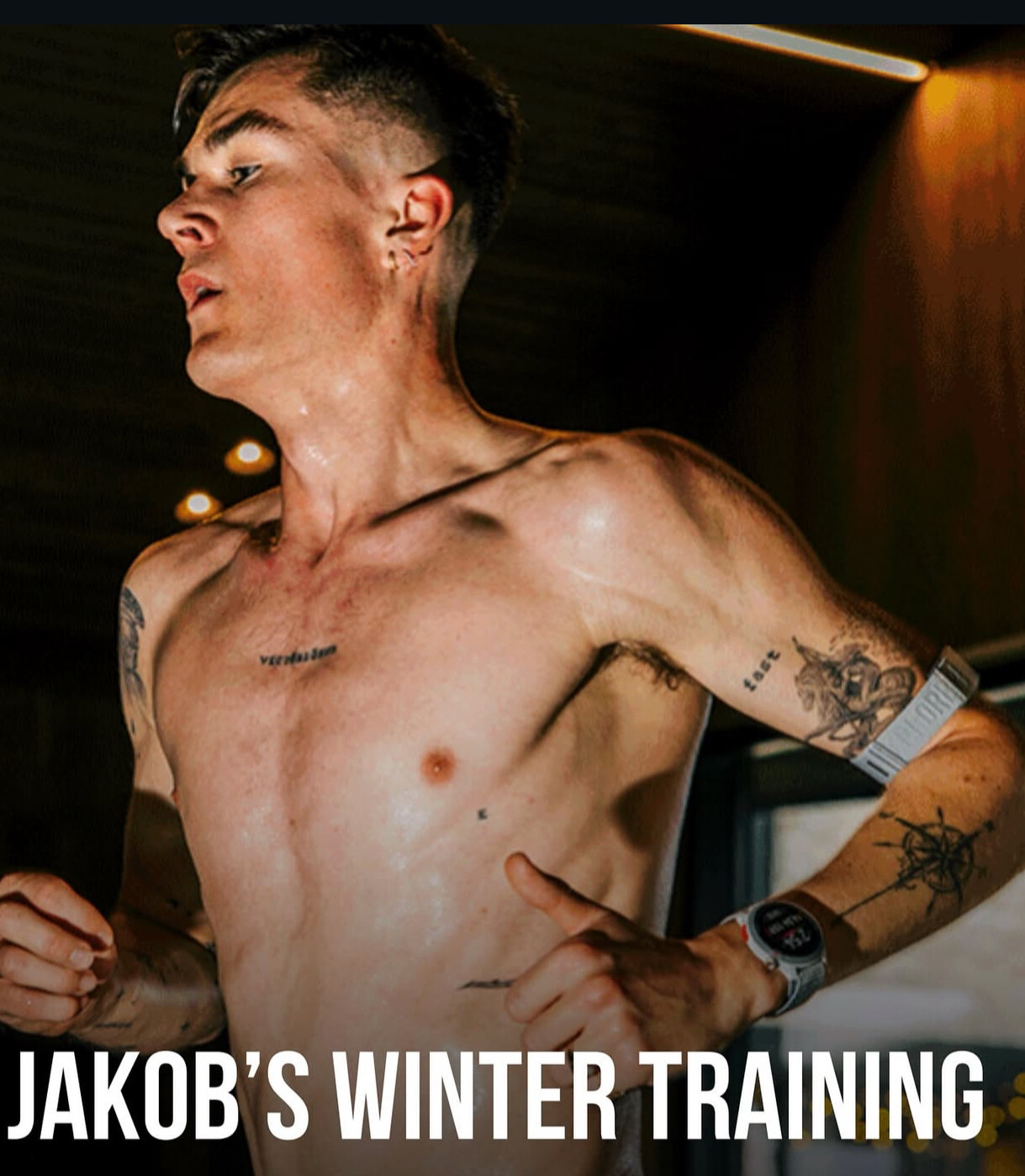
“I hope to break the world records in the 1500 meters, the mile, and the 5000 meters. If I can do that, I’ll be happy. I’ll have to pick out some meets and dates where I have the best chance to make a good attempt,” he told Norway’s VG.
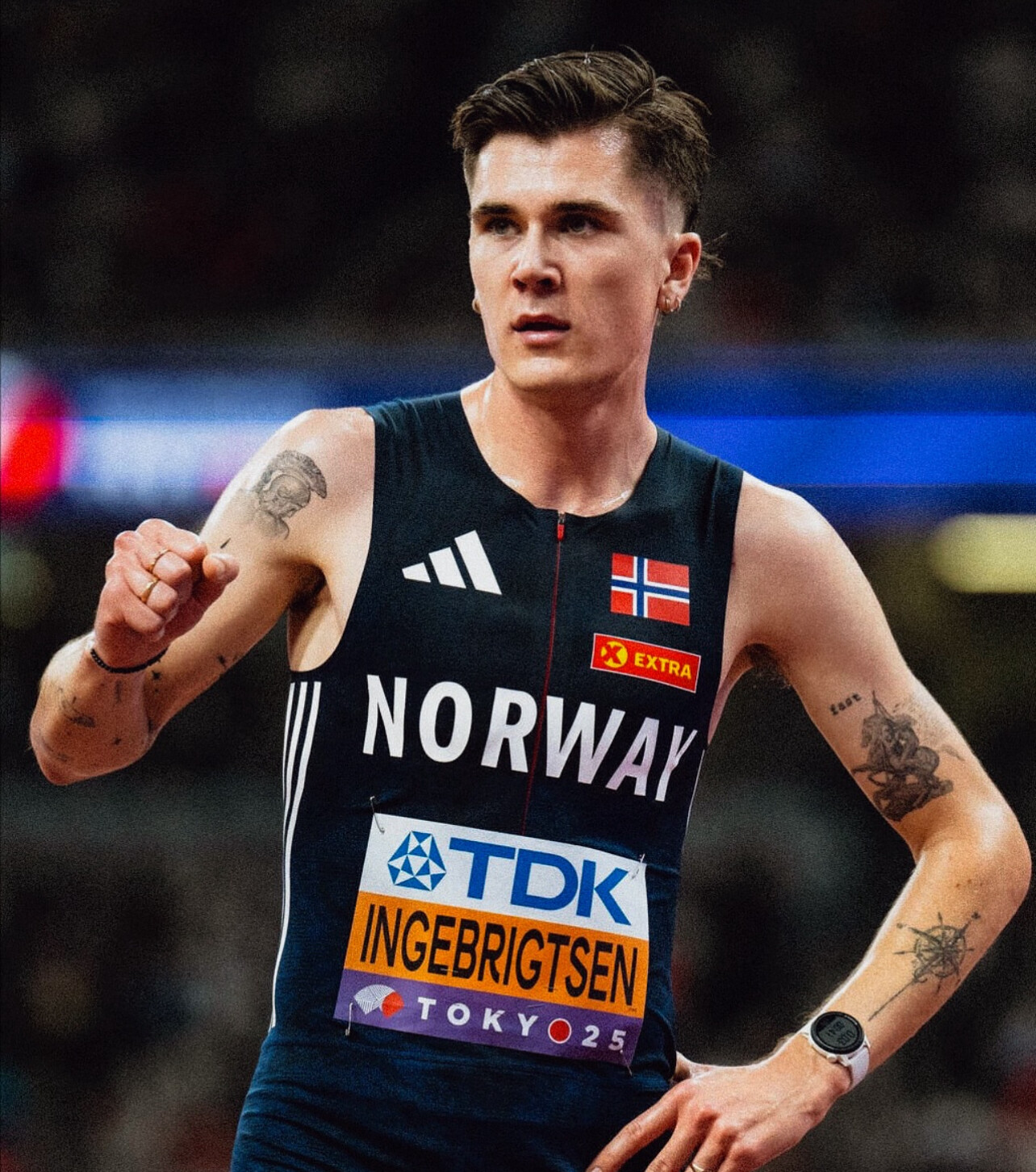
Ingebrigtsen and his wife are already mapping out potential race venues, with Monaco, Paris, Silesia, and Oslo among the leading candidates. Each of these meets has seen lightning-fast performances and could provide the ideal setting for record-breaking runs.
How he stacks up right now:
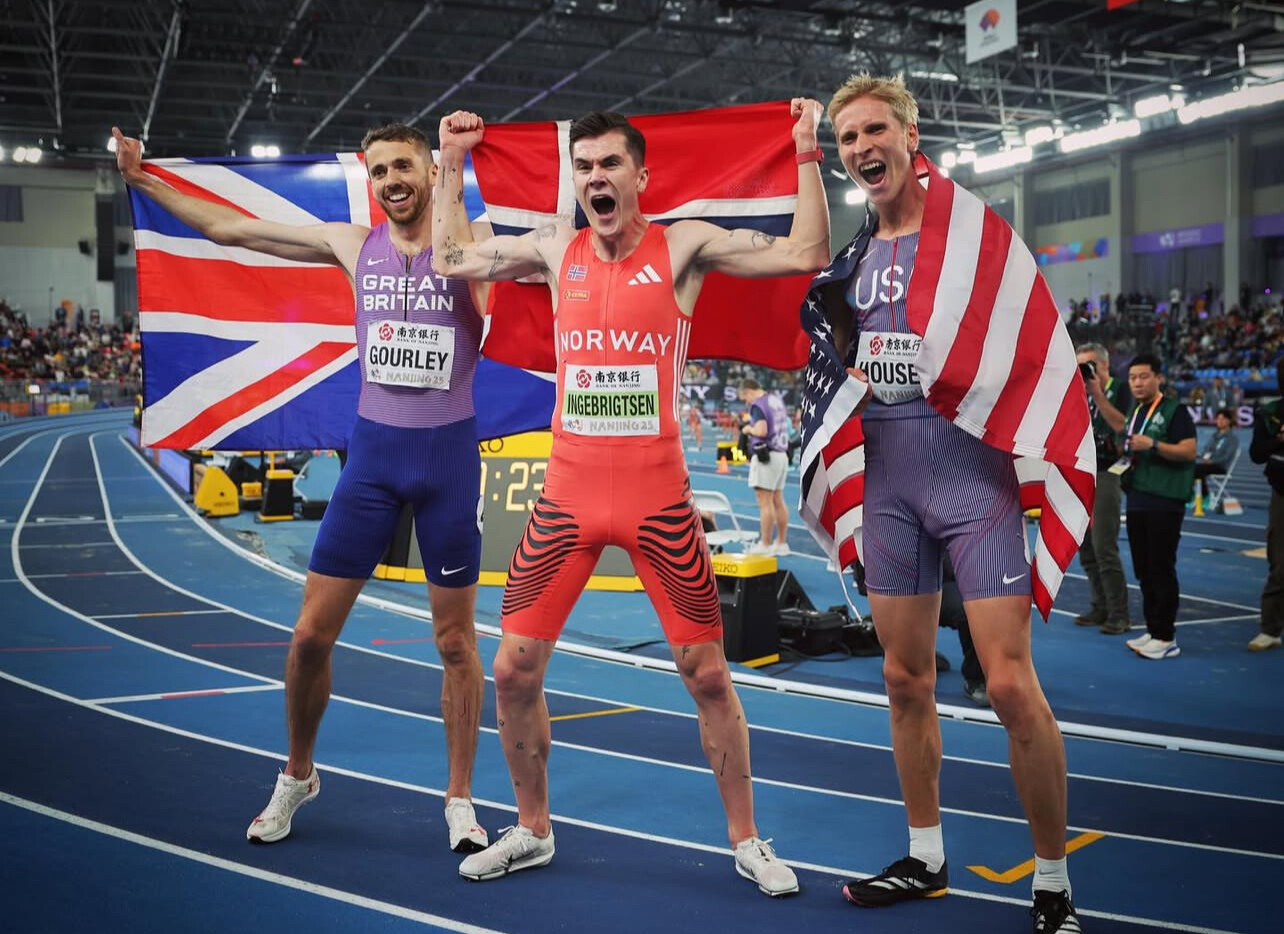
The world record for 1500 meters is 3:26.00, set by Hicham El Guerrouj in 1998. Ingebrigtsen’s personal best is 3:26.73.
The world record for the mile is 3:43.13, also held by El Guerrouj from 1999. Ingebrigtsen’s personal best is 3:43.73.
The world record for the 5000 meters is 12:35.36, set by Joshua Cheptegei in 2020. Ingebrigtsen’s personal best is 12:48.45.
While Ingebrigtsen’s personal bests are already within striking distance of both El Guerrouj’s legendary middle-distance marks and Cheptegei’s long-distance record, breaking all three in one season would be unprecedented.
A Legacy in Motion
At just 25, Ingebrigtsen has already cemented himself as one of the most dominant and versatile athletes in modern track history. From his Olympic gold to multiple World and European Championship titles, his consistency and competitiveness have made him the face of a new generation of runners.
However, much of the 2025 season was disrupted by injury. An Achilles tendon issue forced him to withdraw from major meets and limited his racing calendar. Despite the setback, his ambition remains undimmed.
A sweep of these three world records would not only elevate his legacy but also redefine the limits of what’s possible across middle and long-distance running.
As he carefully plans his record attempts, the world will be watching — because when Jakob Ingebrigtsen sets his mind on something, history often follows.
by Boris Baron
Login to leave a comment
Susanna Sullivan — The Teacher Who Runs Among the World’s Best Set to run NYC Sunday
American marathoner Susanna Sullivan continues to prove that world-class athleticism and everyday life can coexist. A sixth-grade math and science teacher from McLean, Virginia, Sullivan has quietly become one of the top American women in marathon history — balancing the classroom with 120-mile training weeks and remarkable consistency on the roads.
From Humble Beginnings to World Class
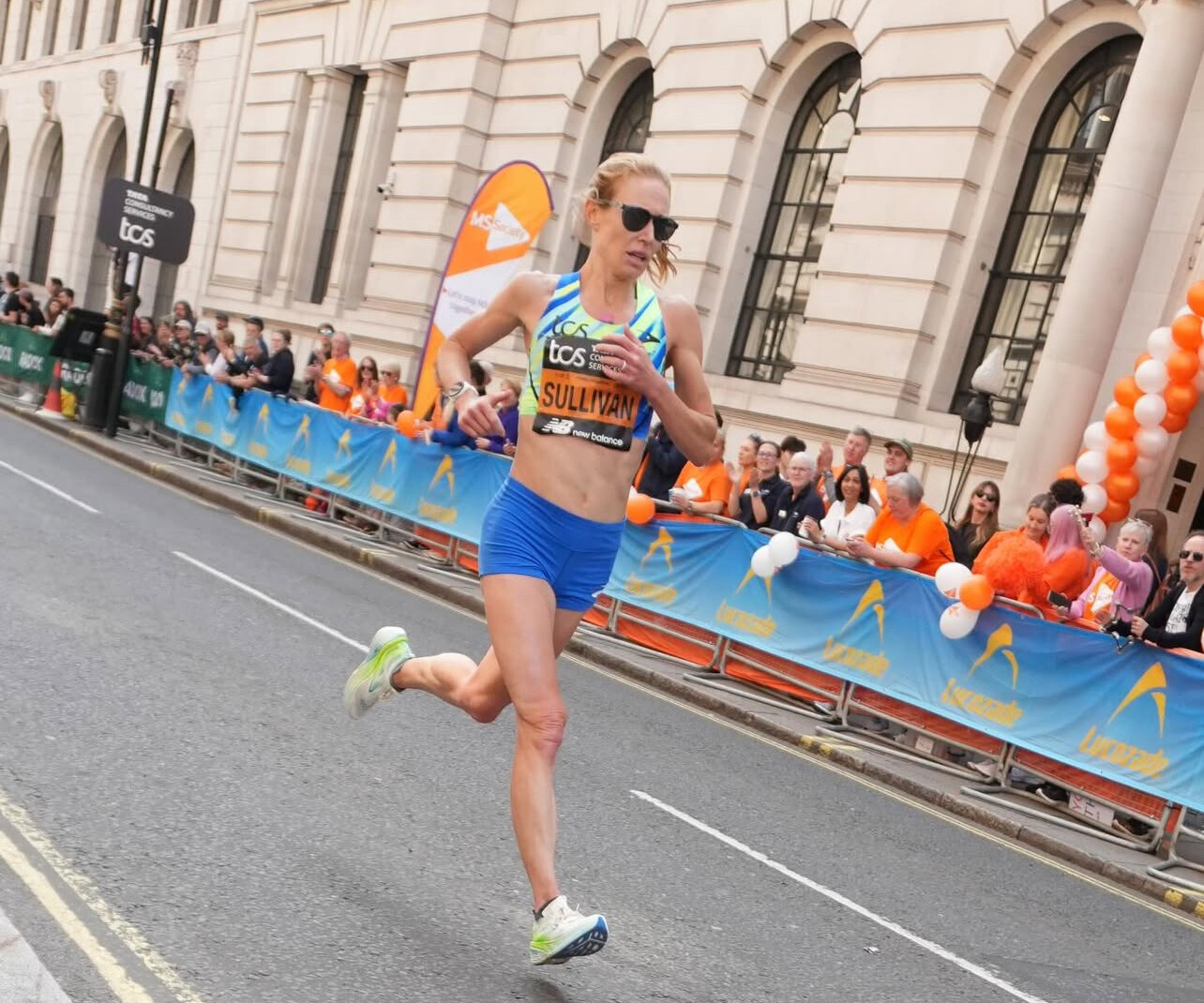
Born May 13, 1990, in West Palm Beach, Florida, and raised in Virginia, Sullivan’s early success came at George Mason High School, where she earned multiple state titles in cross-country and track. After competing at the University of Notre Dame, she battled injuries and fatigue but never lost her love for the sport.
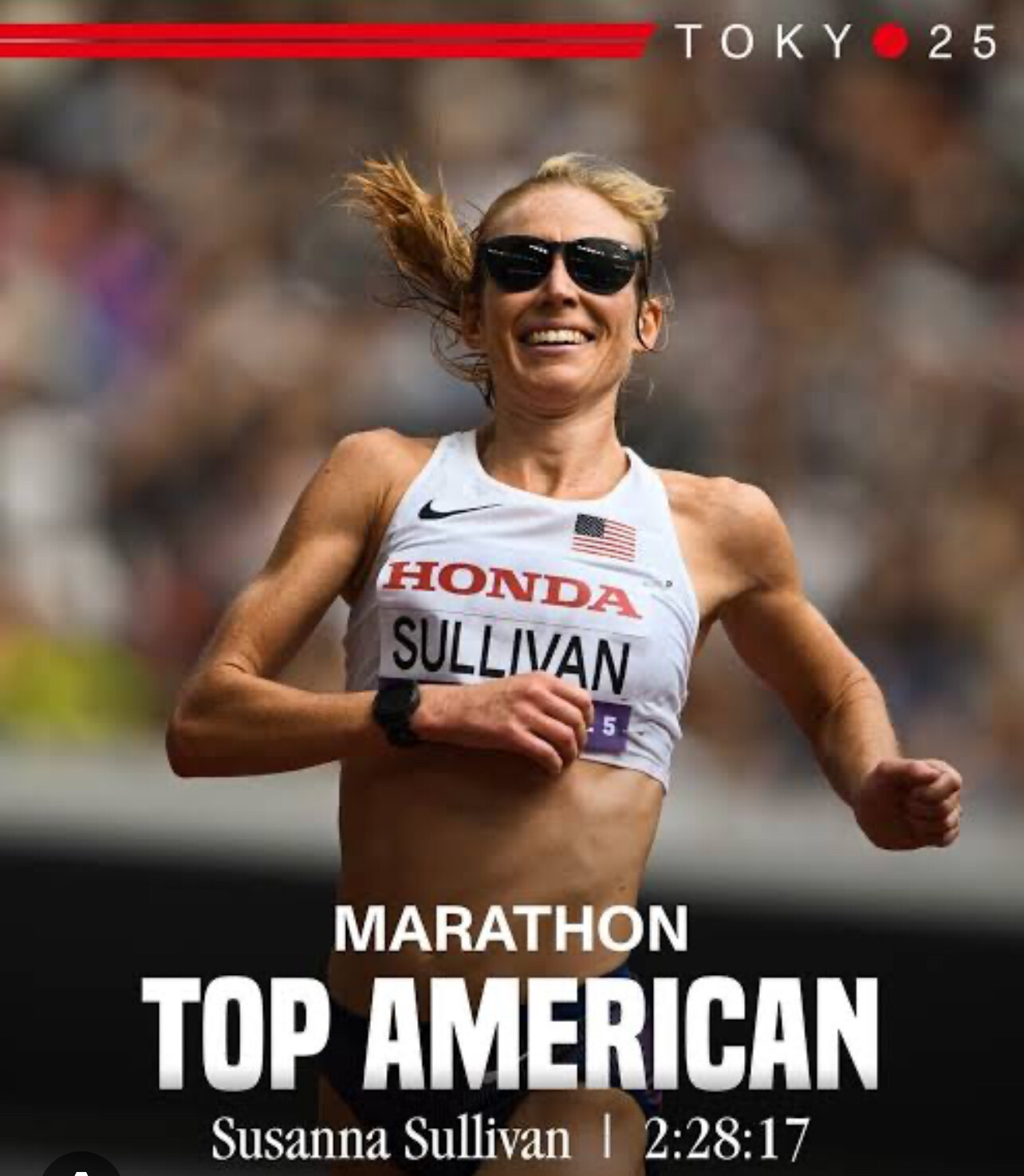
Her marathon debut came in 2015 at Grandma’s Marathon in Minnesota, where she clocked 2:35:37 for 9th place. Over the next decade, she quietly built momentum, cutting time from race to race. The breakthrough arrived in 2024 at the Chicago Marathon, where she finished 7th overall — and first American — in 2:21:56, a personal best that placed her among the top ten fastest U.S. women of all time.
Fourth at the 2025 World Championships in Tokyo
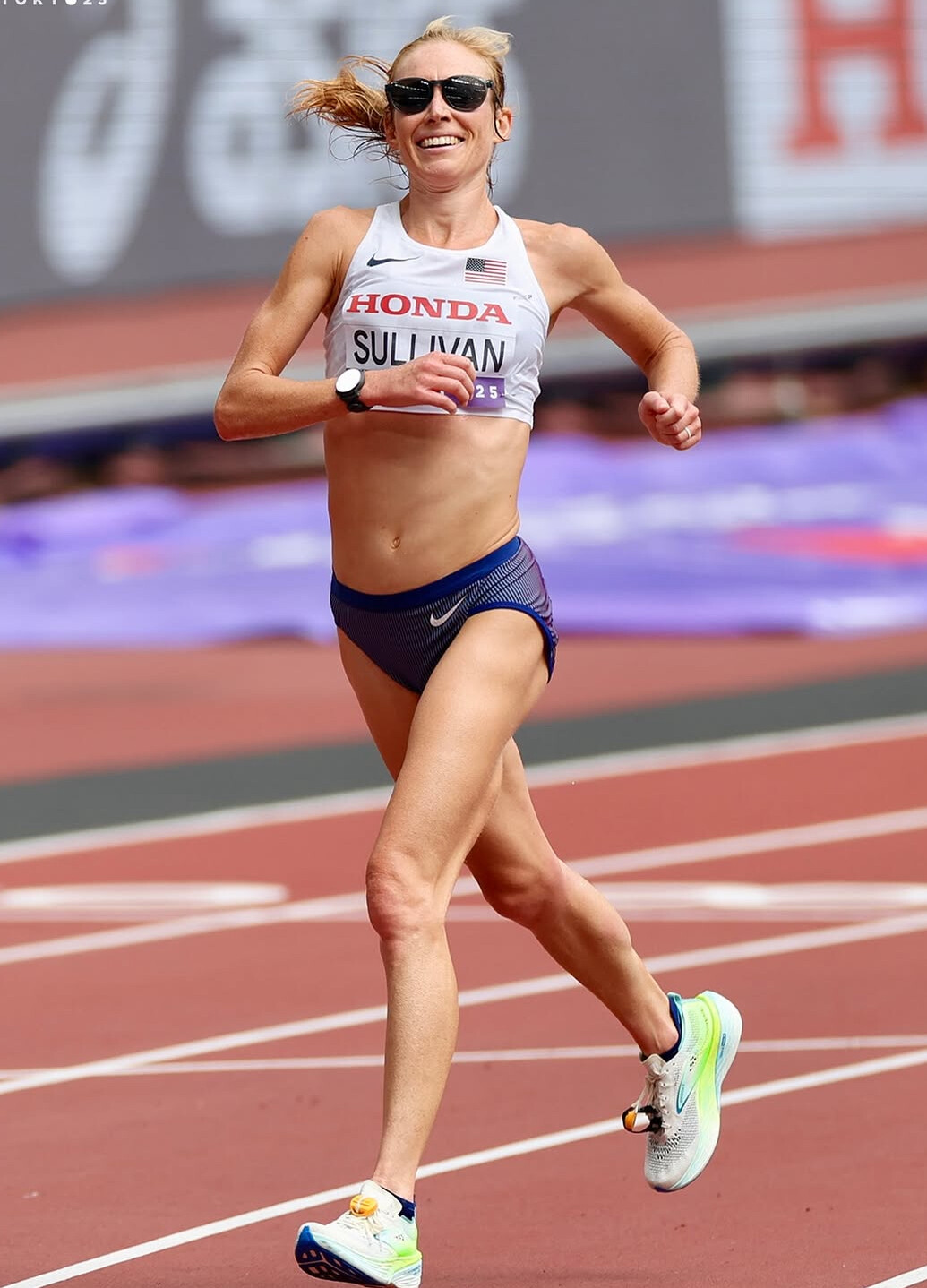
On September 14, 2025, Sullivan delivered one of her finest performances at the World Athletics Championships Marathon in Tokyo, finishing fourth in 2:28:17.
Under sweltering heat and high humidity, Sullivan courageously led much of the race, setting the pace through 25 kilometers before the eventual medalists pulled away. Her performance — the top American finish — underscored her strength, tactical intelligence, and resilience on one of the sport’s biggest stages.
It also marked a full-circle comeback. Two years earlier, at the 2023 World Championships, Sullivan fractured her kneecap mid-race and limped home in 58th place. Her return to the top five in Tokyo symbolized perseverance and renewed confidence.
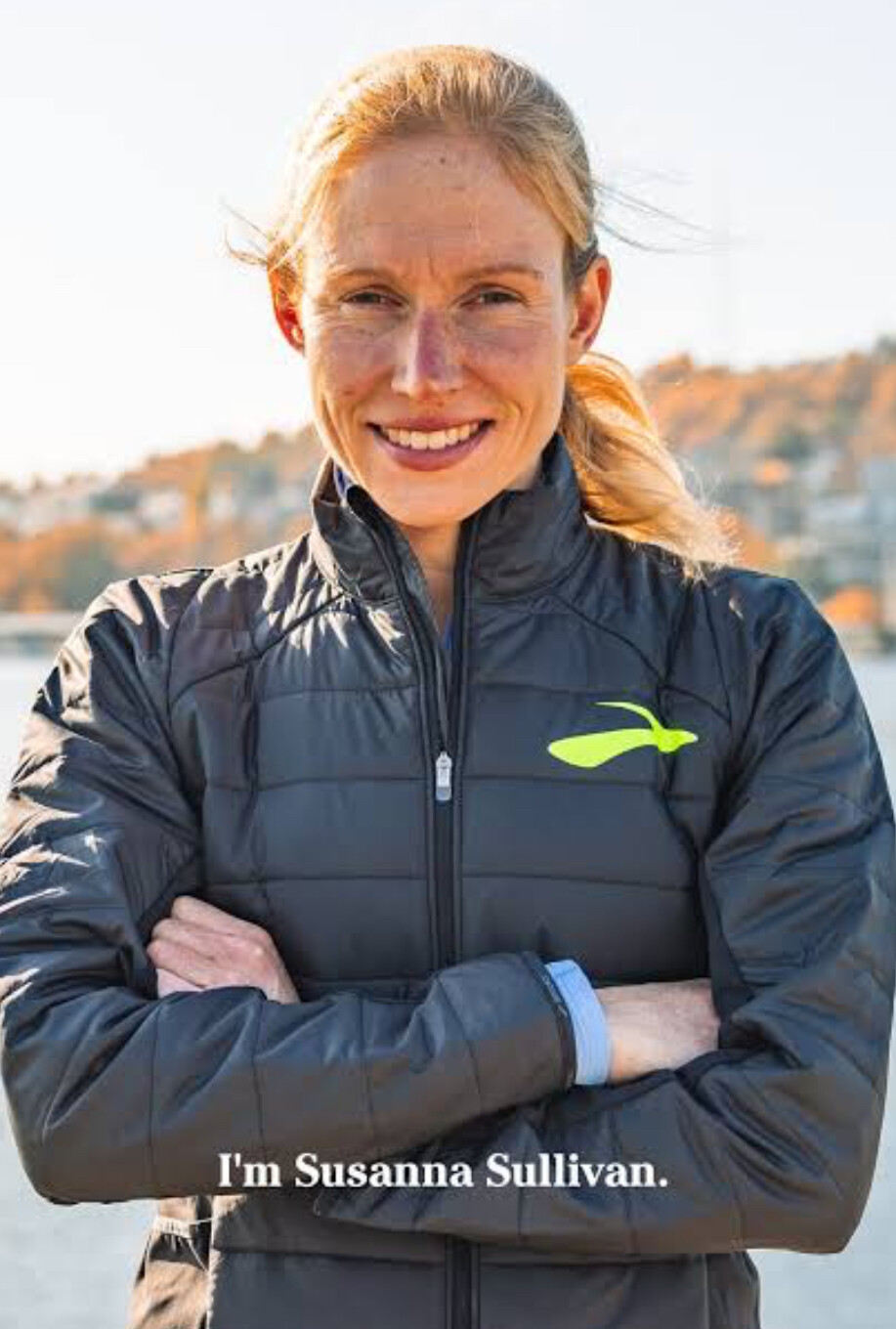
The Balance of Two Worlds
While most professional runners build their lives around training, Sullivan still starts her mornings in the classroom. She teaches sixth-grade advanced math and science, grading papers and designing lessons between workouts.
“Running gives me perspective,” she has said in interviews. “It keeps me grounded. Teaching reminds me there’s more to life than splits and finish times.”
Her ability to balance two demanding worlds has made her an inspiration for runners who juggle careers, families, and athletic dreams.
On to New York
Next up, Sullivan is set to compete in the 2025 TCS New York City Marathon on Sunday, November 2. She enters as one of the leading Americans to watch in a stacked international field that includes Olympians and major-marathon champions.
After her stellar run in Tokyo, many eyes will be on how she handles the challenging hills and bridges of New York — a course that rewards experience and toughness rather than speed alone. Few embody those traits better than Sullivan.
Lessons from Her Journey
• Patience and perseverance — her steady rise from 2:35 to 2:21 shows the value of long-term commitment.
• Balance — proof that excellence isn’t limited to full-time athletes.
• Resilience — recovering from injuries and setbacks only to climb higher.
• Leadership — both in the classroom and in leading a world championship field
Career Highlights
• Marathon PR: 2:21:56 – Chicago (2024)
• World Championships Tokyo (2025): 4th Place, 2:28:17
• London Marathon (2023): 10th Place, 2:24:27 (top American)
• Cherry Blossom 10-Mile (2022): Champion, 52:32
• Half Marathon PR: 1:08:59 – January 2025
A Runner to Watch
Susanna Sullivan’s story reminds us that greatness doesn’t always come from perfect conditions or full-time focus. Sometimes it comes from a quiet classroom in Virginia, where a teacher grades homework — and then goes out to train like one of the best marathoners in the world.
Her journey is far from over, and as she lines up in New York, she represents not just American distance running but every runner chasing balance, progress, and purpose — one mile at a time.
by Boris Baron
Login to leave a comment
Buze Diriba Eyes Greater Heights After Frankfurt Marathon Triumph
Ethiopia’s Buze Diriba could be the next major star in women’s marathon running, judging by her performance at the Mainova Frankfurt Marathon. On Sunday, the 31-year-old captured the biggest win of her road-running career, dominating the race from start to finish and clocking a personal best of 2:19:34 — making her the fifth-fastest woman in Frankfurt’s history.
Despite strong headwinds and the loss of her pacemaker with 10 kilometers to go, Diriba maintained control. “If that hadn’t happened and the wind hadn’t been so strong, I would have run 2:16 today,” she said after earning the €30,000 winner’s prize. “Next time I’ll aim to run around 2:16.”
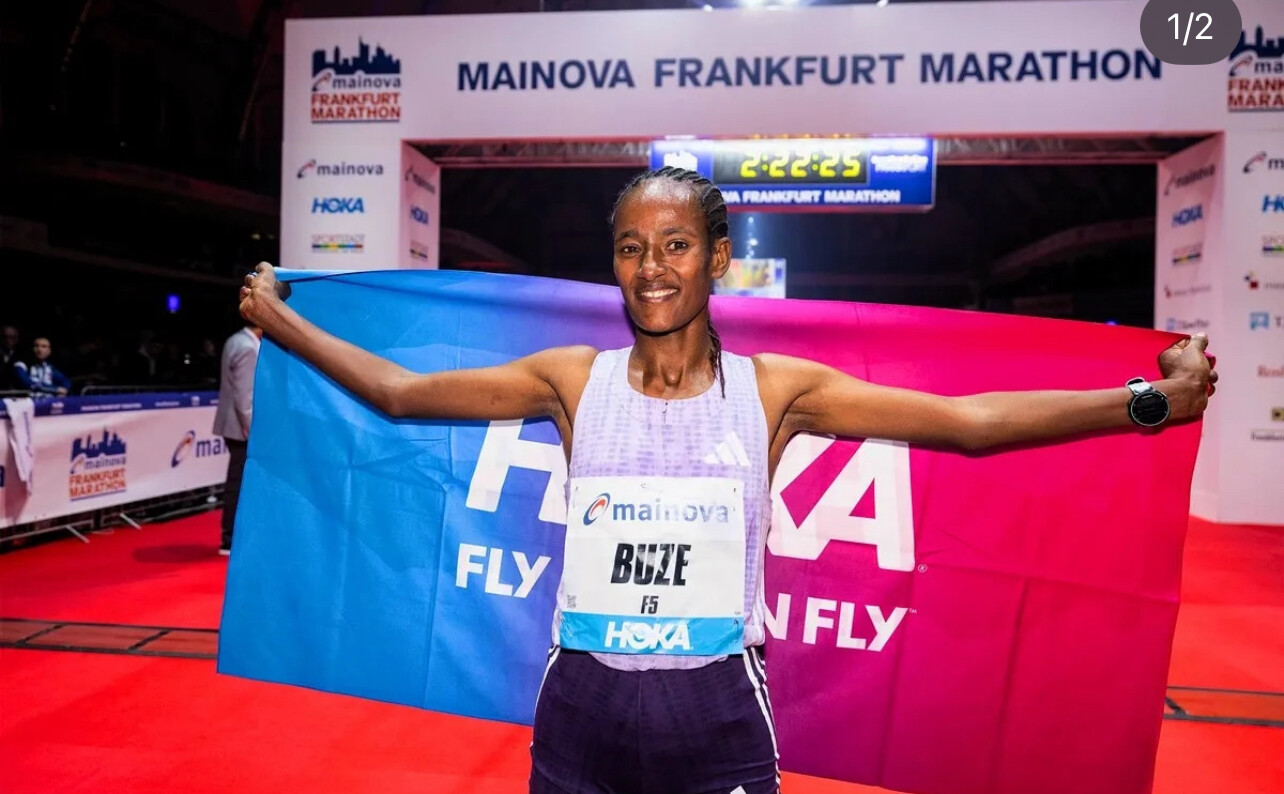
Ambitions Beyond Frankfurt
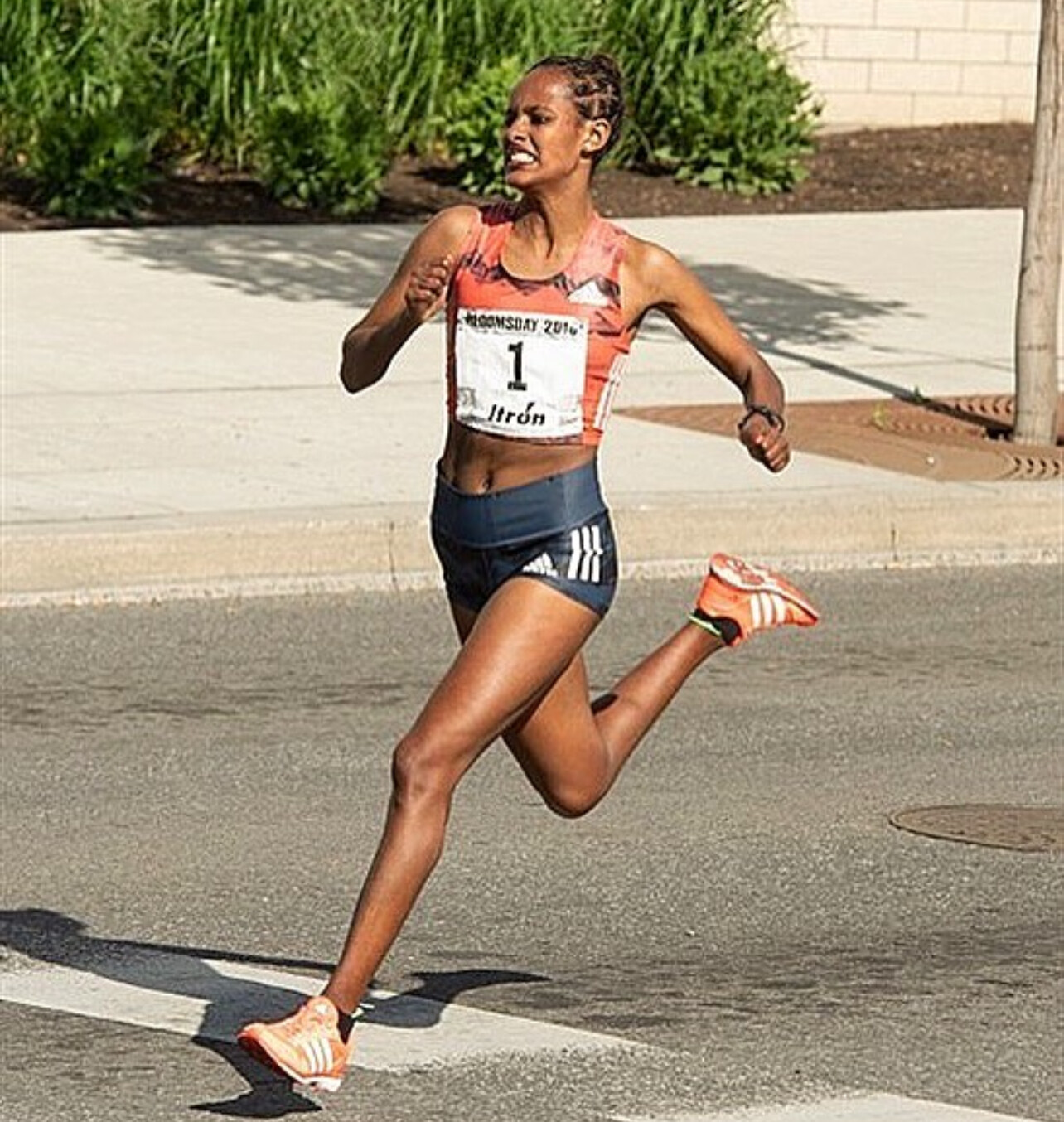
Diriba’s breakthrough in Frankfurt could mark the beginning of a new chapter. “I want to run in the World Championships and Olympic Games and win titles,” she said. Her goal is clear — to join the elite ranks of Ethiopia’s greatest distance runners.
She trains under Gedemu Dedefo in Addis Ababa, one of the most powerful marathon training groups in the world. The camp includes Olympic and World Championship silver medalist Tigst Assefa, Chicago Marathon champion Hawi Feysa, and Olympic marathon champion Tamirat Tola.
A year ago, Feysa used Frankfurt as her own launchpad to stardom, setting a course record of 2:17:25. Diriba came to this year’s edition determined to challenge that mark. “It helps me to have such strong training partners — it makes me stronger,” she explained. “I know I’ll need to run under 2:15 in the future to reach world-class level.”
From Arsi to the World Stage
Diriba hails from Asela, in Ethiopia’s famed Arsi region — the same area that produced legends such as Haile Gebrselassie. Her parents are farmers, and as a child she helped with chores before running to school each morning, “only about 20 minutes away.”
She began running competitively at 16, inspired by Ethiopian Olympic champions Meseret Defar and Tirunesh Dibaba. At 18, she captured the World Junior 5,000m title (2012), signaling her potential as a future great.
“Since then, Gemedu Dedefo has been my coach,” Diriba said. Now a mother of two young daughters, she credits her husband Guta Wami for keeping the household running while she trains and competes.
A Family of Runners
Athletic talent runs deep in the Diriba family. Her younger brother Boki Diriba, 21, is already making his mark, finishing 10th at the 2023 World Cross Country Championships and running 2:07:13 for sixth in Hamburg this April.
With Buze and Boki both rising fast, the Diriba name could soon become one of the most recognized in international road running — a new family dynasty emerging from Ethiopia’s storied highlands.
by Race News Service
Login to leave a comment
Finding Freedom on the Trails: How Running Helps a Yorkshire Mum Reclaim Her Identity
For 52-year-old Jude Harrison of York, North Yorkshire, England, running is far more than a fitness routine—it’s a lifeline. Between caring for her 17-year-old stepdaughter Emily, who was born with a rare chromosome translocation, and raising her 11-year-old daughter Tilly, life can feel like a constant balancing act. Yet through trail running, Jude has discovered a renewed sense of freedom and self.
“Sometimes it feels like Steve and I are two single parents living together,” Jude admits. “We’re always dividing our time because the girls have such different needs.”
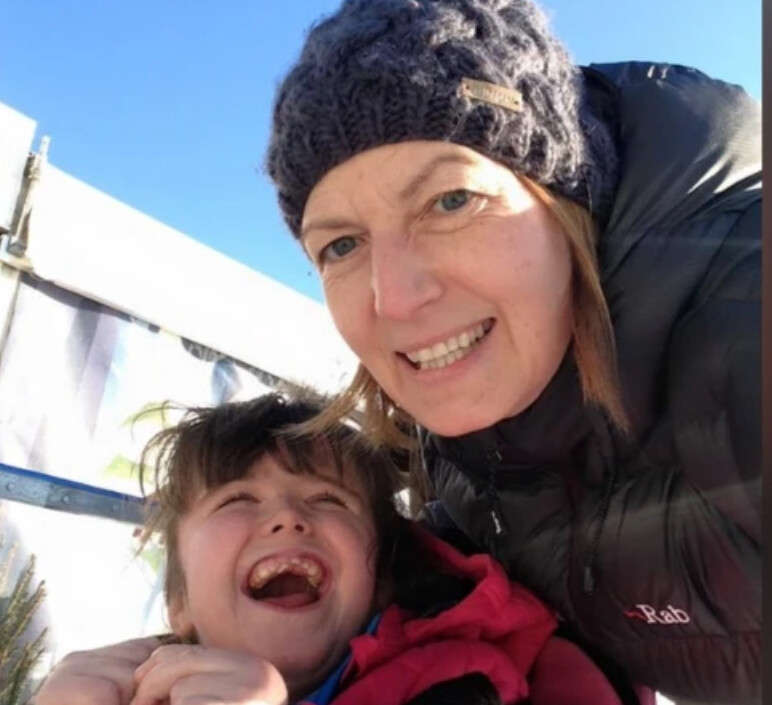
Emily is non-verbal, non-mobile, and lives with developmental delays that require full-time care. She attends a special needs school and receives monthly respite support, but most of the time, Jude and her husband Steve share her day-to-day care.
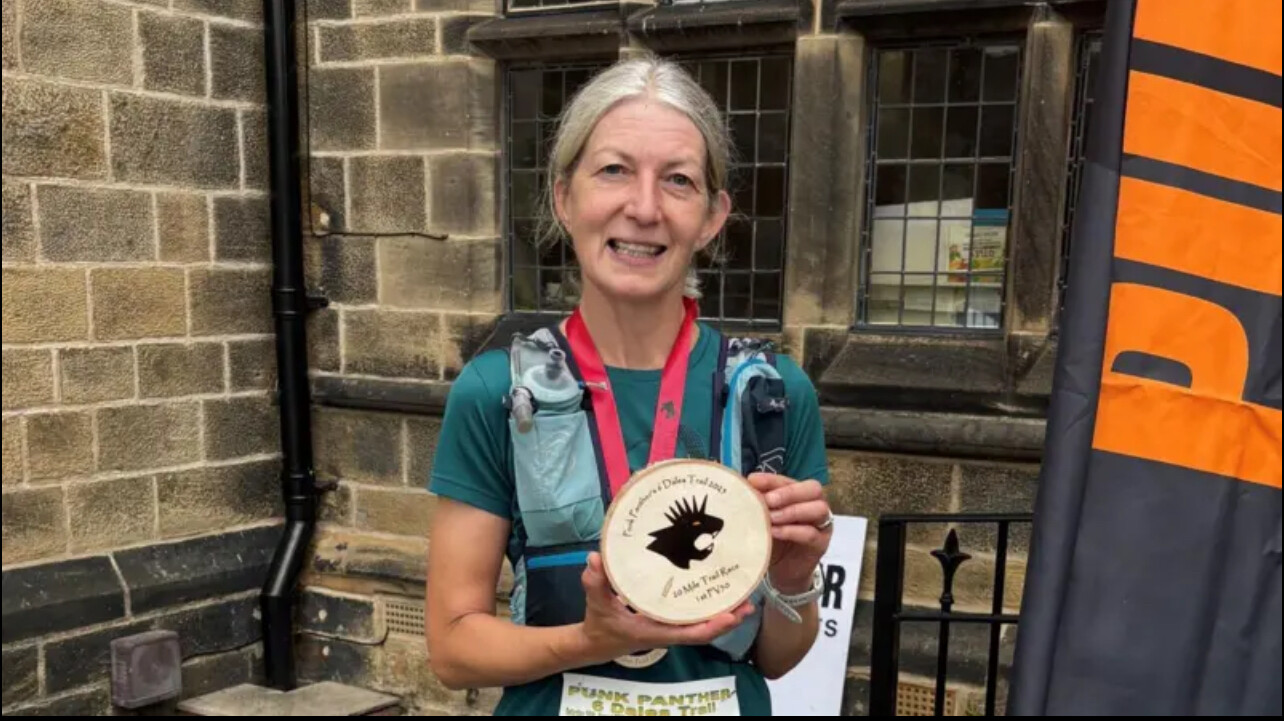
“When you become a parent, it’s easy to lose your sense of identity,” Jude says. “With a child who has complex needs, that feeling can be even stronger. Running is the time I carve out just for me. It’s my thing—it’s who I am. Out on the trails, I’m not just Emily’s mum or Tilly’s mum—I’m Jude.”
Trail running has become her sanctuary, helping her manage stress and stay mentally strong. Jude says the variety of the terrain, the scenery, and the camaraderie make it more rewarding than road running.
“People think trail running is harder, but I disagree,” she says. “There’s an unspoken rule that you walk the hills, run the flats, and enjoy the downhills. It’s about fun and community as much as fitness.”
Last month, Jude took on the 2 Valleys 22K Trail Race in the Lake District, England. With her husband staying home to care for Emily, she joined a team of 25 athletes and adventurers sponsored by Coventry Building Society, part of its campaign to support over-50s achieving their goals.
“Crossing the finish line in Keswick felt incredible,” she recalls. “Everyone was shouting my name. For once, it was just about me. It reminded me that I’m still capable of chasing my own goals.”
Now, Jude has her sights set on next year’s 5 Valleys Challenge, which doubles the distance of her most recent race.
“I sometimes have to remind myself that I’m 52 and still out here doing this,” she says. “It’s not about trophies—it’s about being present, keeping fit, and showing my daughters that age and circumstance don’t define you. I’ve still got plenty of running left in me.”
by Boris Baron
Login to leave a comment
At 91, Koichi Kitabatake Will Be the Oldest Runner in the 2025 New York City Marathon
When Koichi Kitabatake steps onto the starting line of the 2025 TCS New York City Marathon on November 2, he will make history as the oldest competitor in the field — at 91 years old.
The runner from Kanagawa, Japan, didn’t start running until long after most people retire. In fact, he only took up the sport at age 74, after finishing a long career as a telecommunications specialist. Four years later, at 78, he ran his first marathon — and he hasn’t stopped since.

This year’s race will mark his 34th marathon, including two previous finishes in New York City. Kitabatake has flown across the world to participate in marathons on nearly every continent, proving that passion and discipline know no age limits.
Running Into His 90s
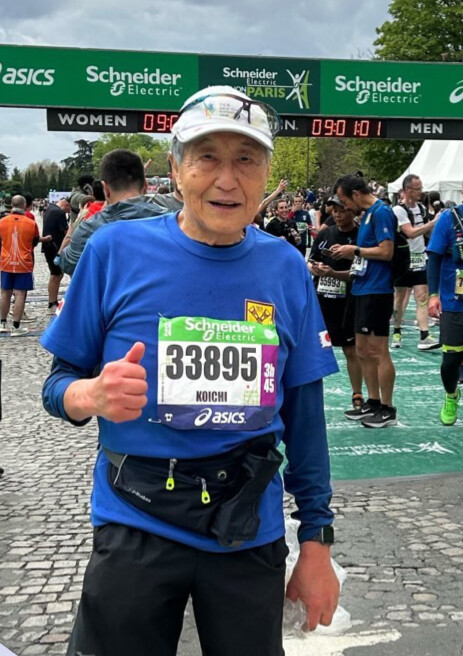
As he prepares for the 26.2-mile journey through all five boroughs of New York City, Kitabatake shared with the Daily Mail some of his daily habits that keep him strong — both physically and mentally — well into his 90s.
“I do a short workout and stretching every morning for about half an hour,” he said. “Then I run four to six miles twice a week, depending on how I feel.”
It’s a simple but powerful routine — one that underscores his belief in consistency over intensity.
Beyond the physical benefits, Kitabatake says running has transformed his outlook on life.
“Running has changed how I see things,” he told the Daily Mail. “It helps me stay positive and keeps my mind healthy.”
A Source of Inspiration
Kitabatake’s story has inspired countless others, especially those who feel it’s “too late” to start something new. His steady approach, humility, and unwavering commitment to movement highlight the broader spirit of the marathon itself — endurance, courage, and the celebration of life at every age.
As thousands line up in Staten Island to begin the 2025 TCS New York City Marathon, Kitabatake will stand among them — proof that age is just a number, and that the human spirit, when fueled by purpose, can keep running forever.
by Boris Baron
Login to leave a comment
Kenenisa Bekele Joins 2025 New York City Marathon Elite Field
Ethiopian legend Kenenisa Bekele, the third-fastest marathoner in history with a 2:01:41 personal best from Berlin 2019, has officially been added to the 2025 TCS New York City Marathon elite men’s field — setting up yet another thrilling clash with Eliud Kipchoge.
Bekele, now 43, withdrew from April’s London Marathon due to recurring injuries that disrupted his buildup. His most recent marathon finish came at the Paris Olympic Marathon, where he placed 39th in 2:12:24. Despite the setback, Bekele’s experience and resilience continue to make him one of the sport’s most compelling figures.
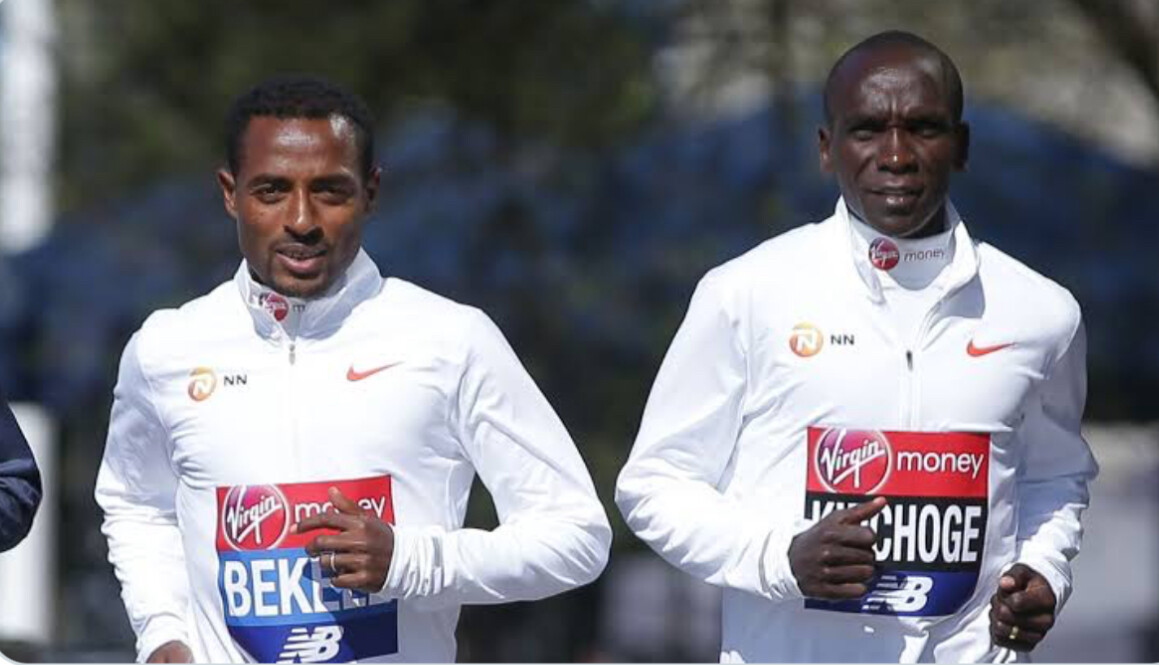
This year’s New York City Marathon will mark Bekele’s sixth career race against Kipchoge, the reigning Olympic champion and former world record holder. Bekele’s only “victory” in that rivalry came at the Paris Olympics, when Kipchoge dropped out mid-race.

Bekele’s addition brings new intrigue to a field already rich in talent and storylines. While New York’s undulating course rarely produces record times, it remains one of the most prestigious and unpredictable races on the global marathon calendar — a true test of strategy and mental strength.
Notably absent from the 2025 lineup is Evans Chebet, the 2022 NYC Marathon champion and last year’s runner-up. Chebet has withdrawn from this year’s race after failing to finish at the Boston Marathon in April.
As the countdown begins, all eyes turn to Central Park, where two of the greatest marathoners of all time — Bekele and Kipchoge — are set to renew their rivalry on one of the world’s toughest stages.
Will Bekele’s comeback write a new chapter in marathon history, or will Kipchoge’s consistency once again define the day? On November 2, New York will have its answer.
by Boris Baron
Login to leave a comment
From Charcoal Seller to Champion Coach: The Remarkable Journey of Philemon Kiptoo in Kapcherop
In the cool highlands of Kapcherop, where morning mist drapes over rolling potato farms and runners trace winding red-dirt trails, coach Philemon Kiptoo is living out a dream that once seemed far beyond his reach.
The son of a humble family of nine, Philemon’s rise from selling charcoal barefoot to mentoring Kenya’s next generation of marathon stars is a story of resilience, faith, and the transformative power of community.
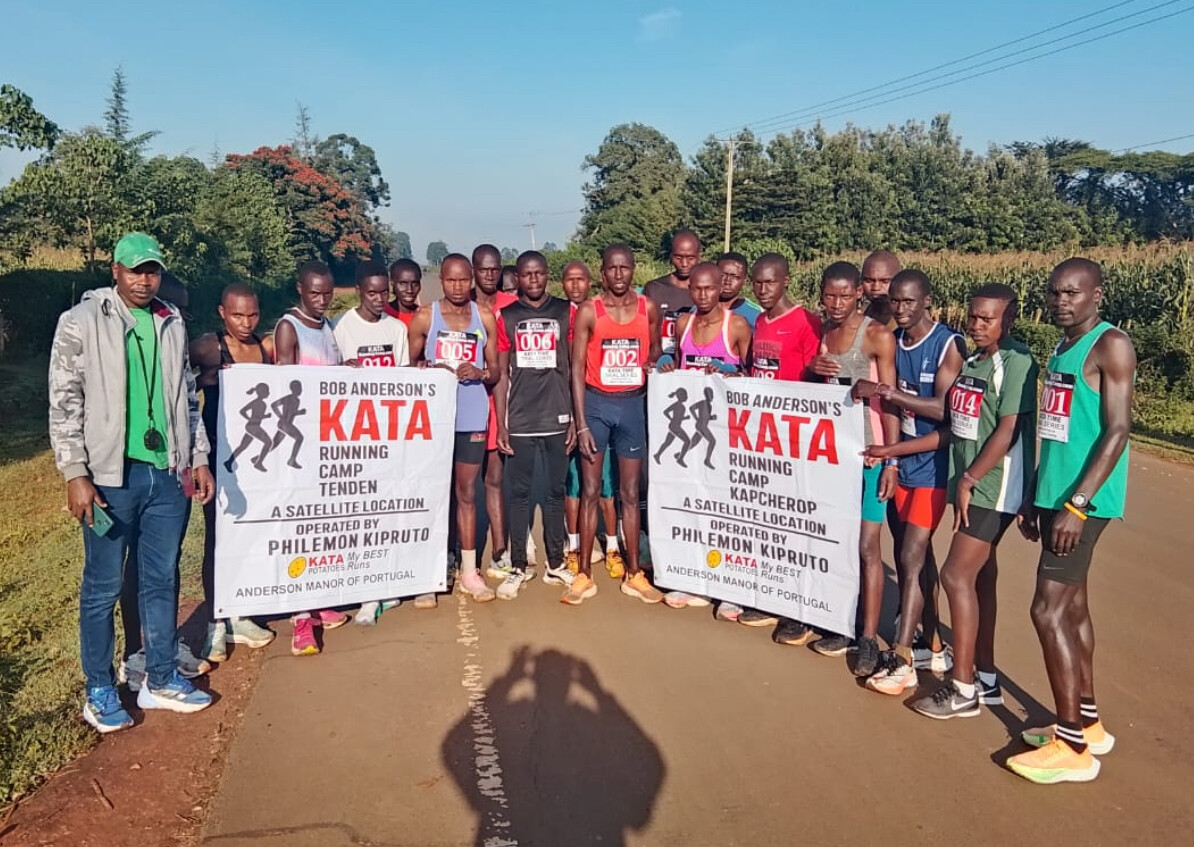
A New Chapter with KATA
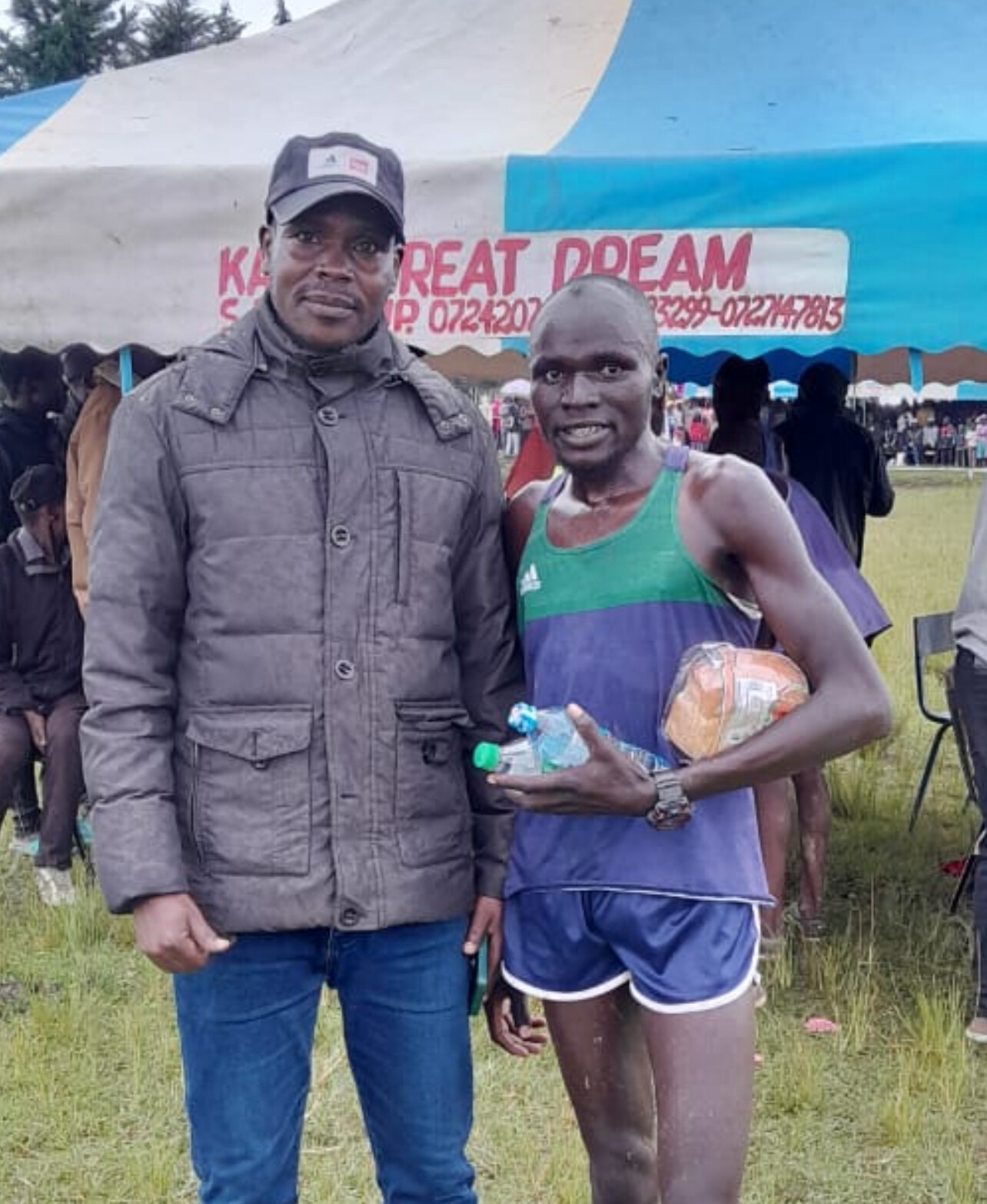
Philemon’s turning point came when he joined the KATA network — an initiative founded by U.S.-based running pioneer Bob Anderson to empower grassroots runners and coaches through mentorship, clean sport advocacy, and sustainable income projects.
At his Kapcherop Training Camp, KATA’s support extends beyond athletics. Through the organization’s integrated potato farming program, athletes earn a steady income that helps cover food, accommodation, and basic gear.
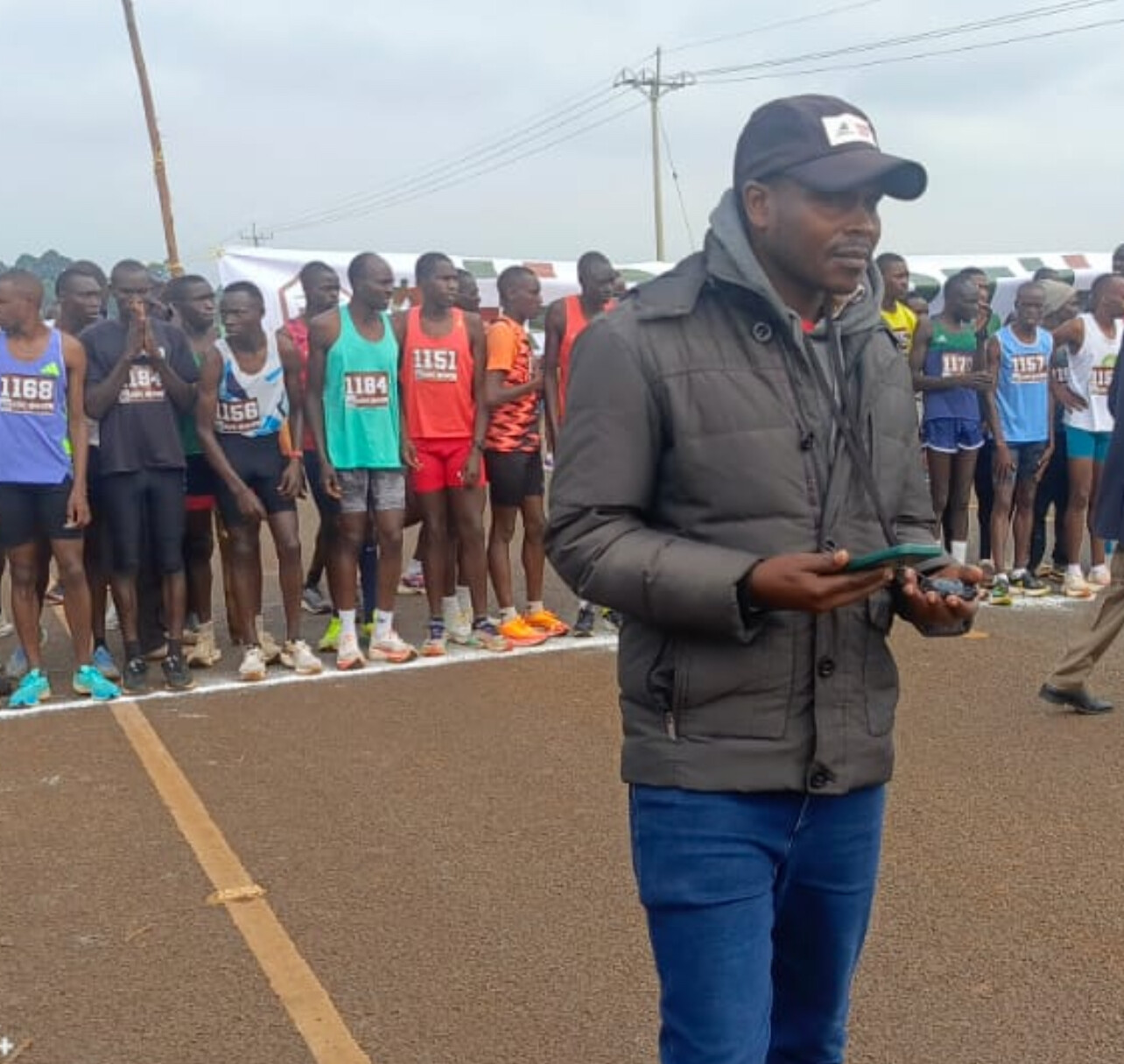
“The support from KATA has made a big difference,” Philemon says with quiet pride. “Most of my athletes come from humble backgrounds like mine. With potato farming and basic support, we can now train without worrying about what to eat or where to stay.”
That stability has begun to pay off. At the Standard Chartered Nairobi Marathon on October 26, his athletes delivered impressive performances: Donald Kimaru finished 4th in the men’s marathon; Dancan Kemei and Dennis Kosgei placed 18th and 21st in the men’s half marathon; Beatrice Rutto finished 11th in the women’s marathon; and in the men’s 10K, Leonard Pkorir and Enoch Tanui placed 3rd and 5th respectively, with Evans Kemboi 16th. Donald also on September 20th placed second at the Double Road Race 15k just 17 seconds behind the winner Edwin Soi in the two leg race. The sixth best time ever.
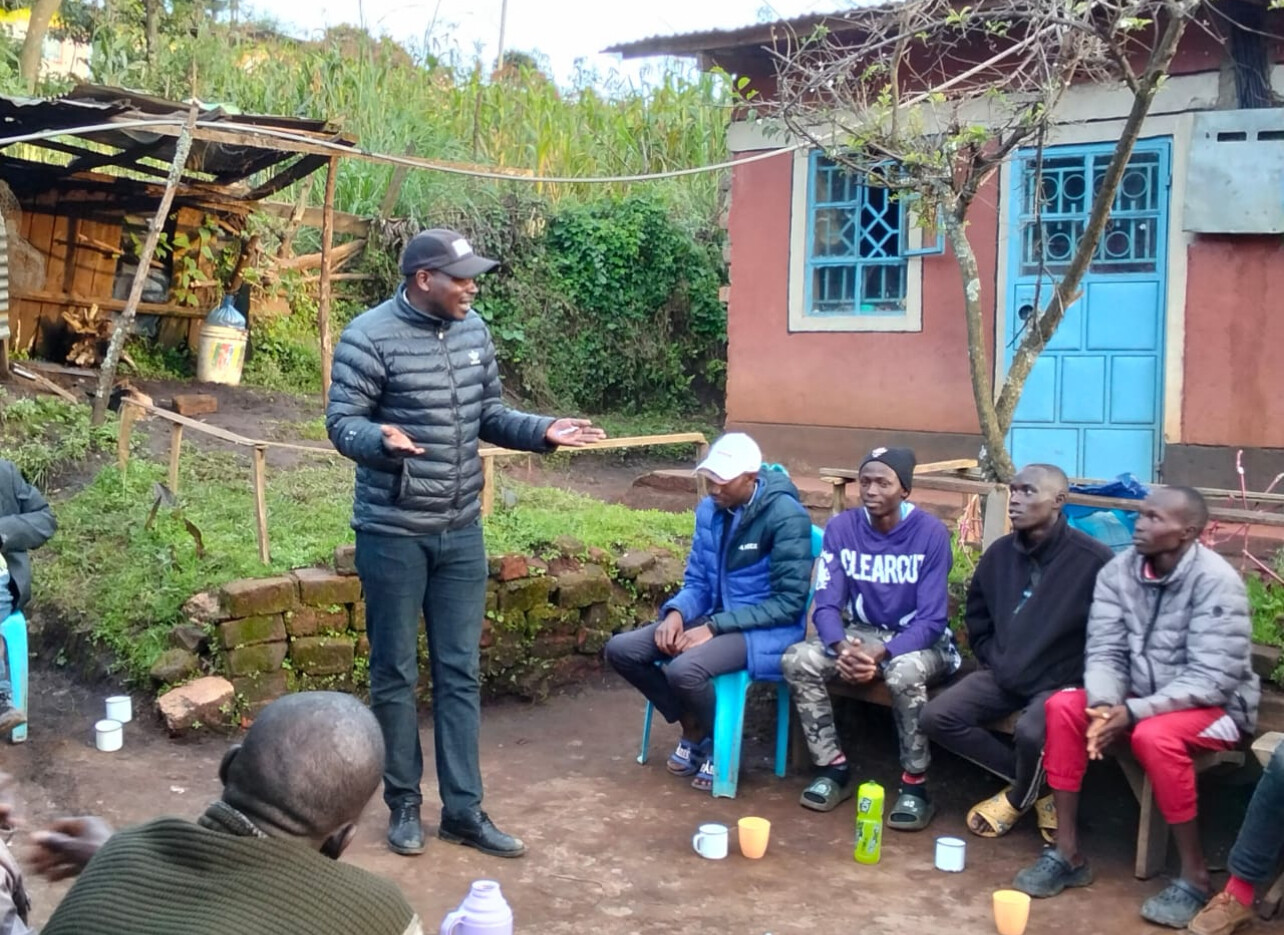
“Each of these athletes represents hope,” Philemon reflects. “With clean training and support, young people from small villages can stand tall on the national stage.”
Humble Beginnings
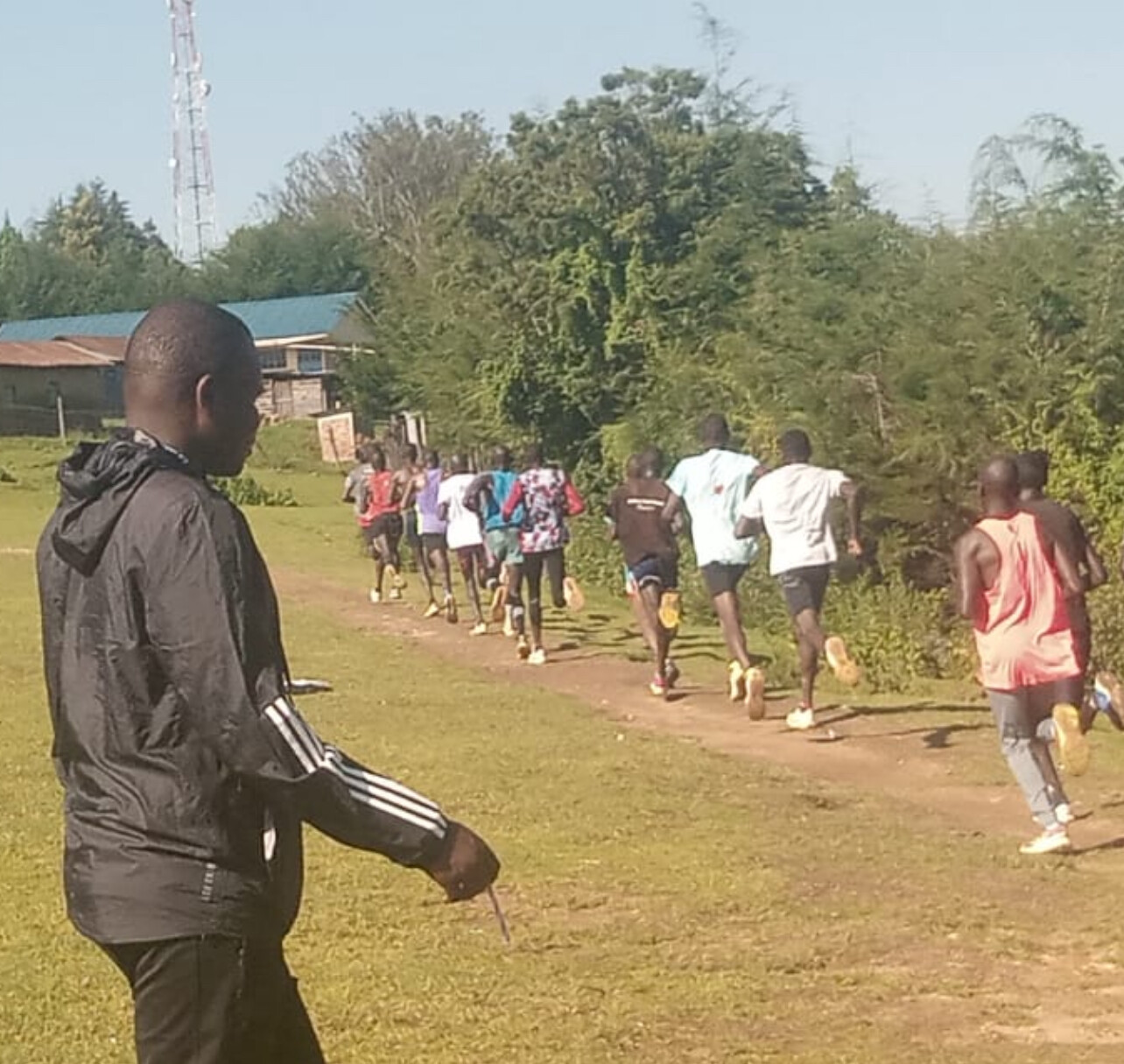
Born in Sing’ore, near the slopes of Elgeyo Marakwet, Philemon’s path to athletics was shaped by hardship.
“I was the last born in a family of nine — three brothers and sisters,” he recalls. “I attended Kobil Primary near Sing’ore Girls and later Kimuron Secondary, but I couldn’t finish because of school fees.”
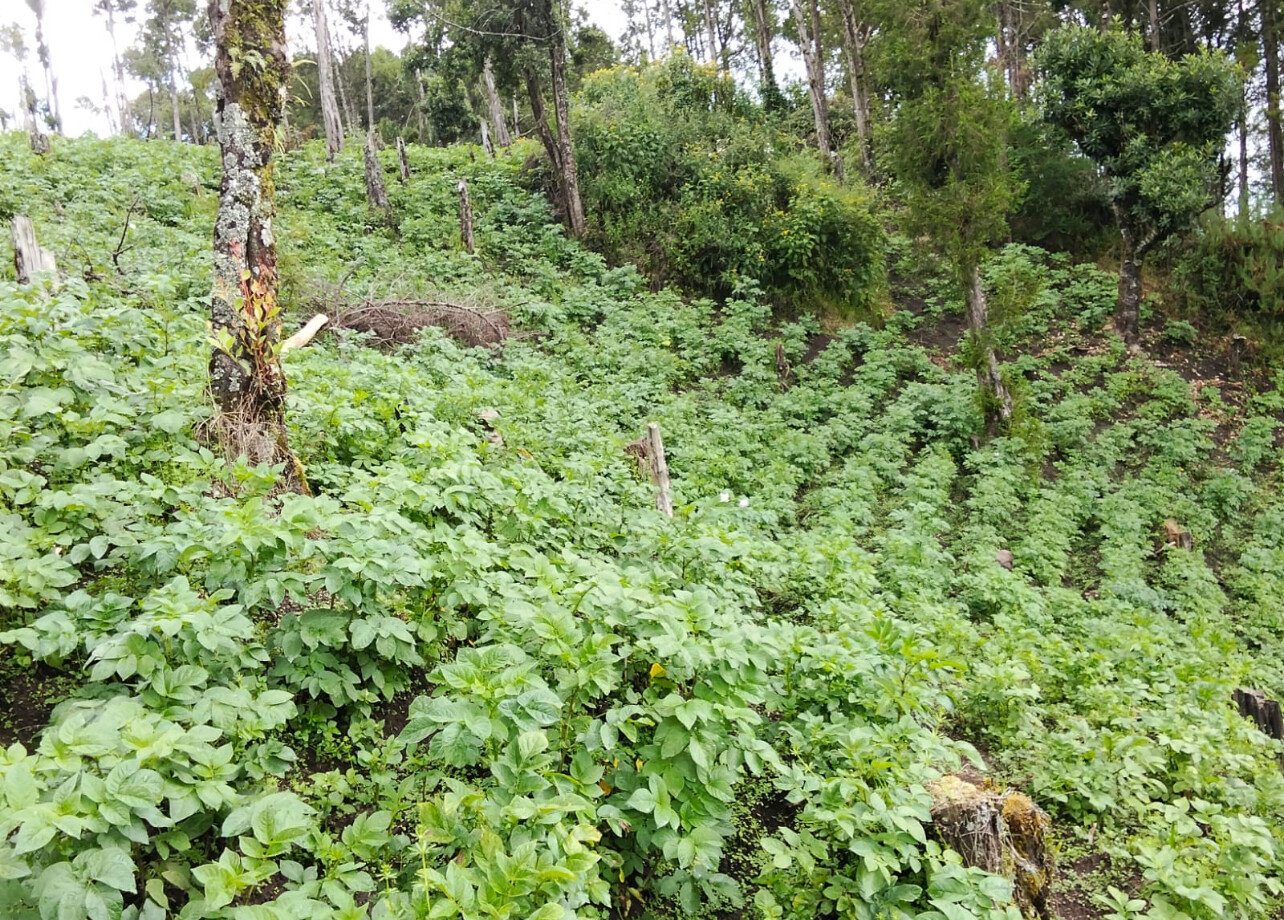
Returning home to Kapkanyar, he refused to give up.
“In 2007, I started training with no shoes,” he says. “I sold charcoal to buy my first pair of Asics for 700 shillings (about $6).”
Years of persistence paid off when he began racing in 2012, earning his first major result with a runner-up finish at the Kakamega Forest Half Marathon. That breakthrough fueled his dream — not just to compete, but to guide others.
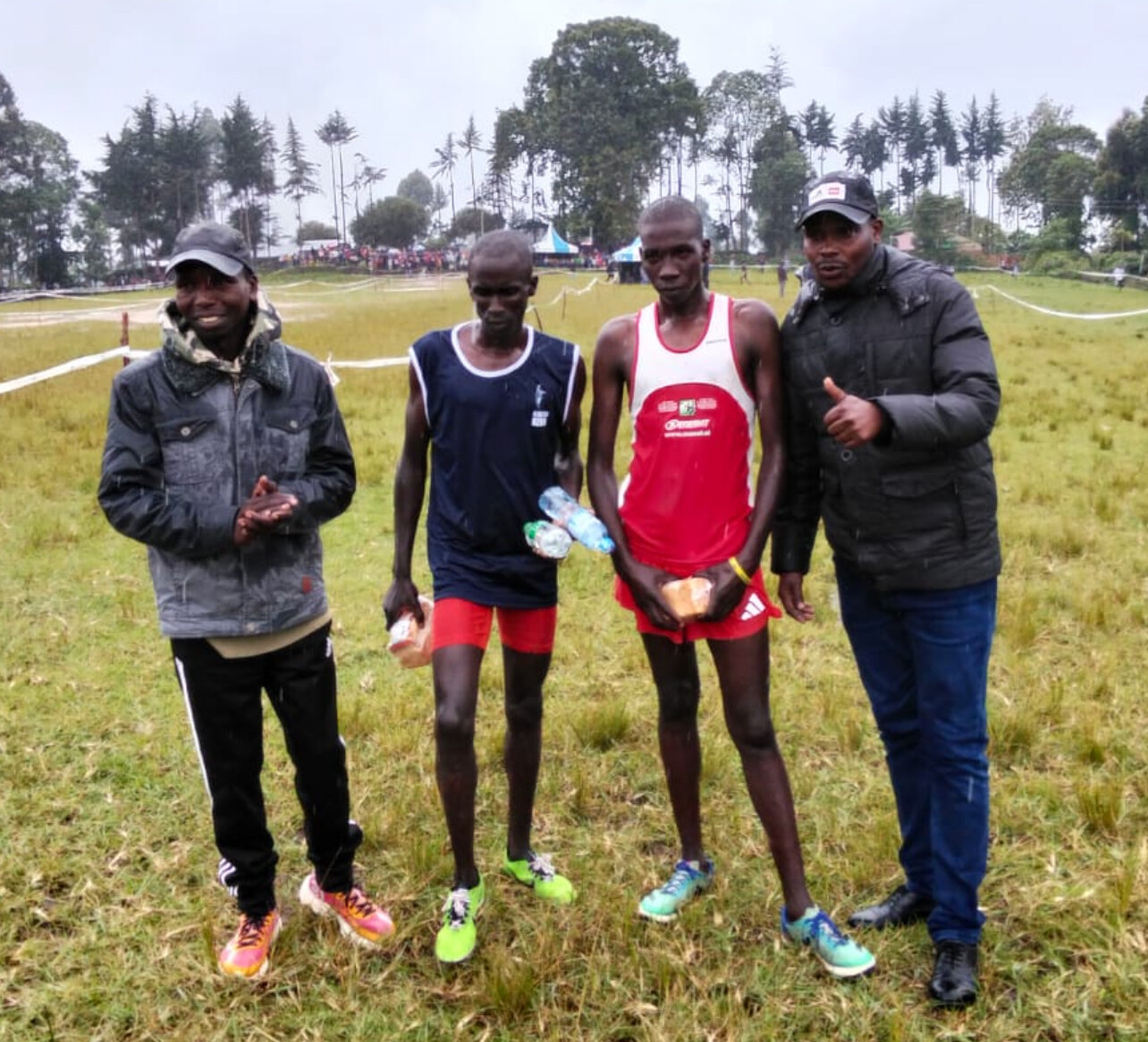
Building Champions
“I started with a few athletes,” Philemon says. “I rented them a small house and bought food — not because I had much, but because I knew what it felt like to need a chance.”
Today, he stands alongside a remarkable family of mentors: four brothers, all coaches.
• Eric Kimaiyo leads the Kapsait Training Camp.
• Andurson Chirchir coaches in Kaptagat.
• Kimutai runs training at Srowback.
• And Philemon oversees the Kapcherop Camp — a thriving hub for emerging distance runners.
Integrity and Clean Sport
What makes Philemon’s story powerful isn’t only perseverance — it’s integrity. A vocal advocate of clean sport, he embodies KATA’s core philosophy.
“We must speak the truth and say no to doping,” he insists. “If you train clean and stay patient, you’ll win with pride. There are no shortcuts to greatness.”
KATA’s influence has reinforced those values, fostering a culture of honesty and teamwork across its growing network.
“Bob Anderson’s support hasn’t just sustained our camp,” Philemon adds. “It has helped shape a generation built on discipline and hard work. We are building athletes who can inspire others.”
A Legacy of Hope
To his athletes, Philemon is more than a coach — he’s a father figure.
“He treats us like family,” says Leonard Pkorir, who won bronze in the Nairobi 10K. “He believes in our dreams even when we doubt ourselves.”
Looking ahead, Philemon’s goal remains simple yet profound: to use running as a bridge to a better life.
“My happiness will be to see my athletes doing great things, helping others, and carrying forward the spirit of running clean,” he says. “That will be my legacy.”
As evening fog rolls across the Kapcherop hills and the rhythmic thud of training shoes fades into the distance, Philemon Kiptoo’s story stands as a reminder that greatness can indeed grow from the humblest soil — when it is nurtured with purpose, honesty, and heart.
by Robert Kibet
Login to leave a comment
Andreas Almgren Breaks European Record as Agnes Ngetich Runs Second Fastest Half Marathon Ever in Valencia
Valencia, Spain — October 26, 2025 - The 2025 Valencia Half Marathon Trinidad Alfonso Zurich once again lived up to its global reputation as the fastest half marathon on Earth. The flat, coastal course produced extraordinary performances from both the men’s and women’s elite fields — highlighted by Sweden’s Andreas Almgren becoming the first European ever to break 59 minutes, and Kenya’s Agnes Jebet Ngetich clocking the second-fastest women’s time in history.
MEN’S RACE: ALMGREN MAKES HISTORY AS KEJELCHA DOMINATES

Ethiopia’s Yomif Kejelcha retained his Valencia title with a blistering 58:02, further cementing his place among the all-time greats. Though it was outside the current world record of 56:42, set earlier this year by Uganda’s Jacob Kiplimo at the Barcelona Half Marathon, Kejelcha’s effort was commanding from start to finish.

Running in his slipstream, Rodrigue Kwizera of Burundi and Brian Kibor of Kenya both crossed in 58:39, but the day’s biggest breakthrough came from Sweden’s Andreas Almgren, who stormed home in 58:41 — a stunning new European record.
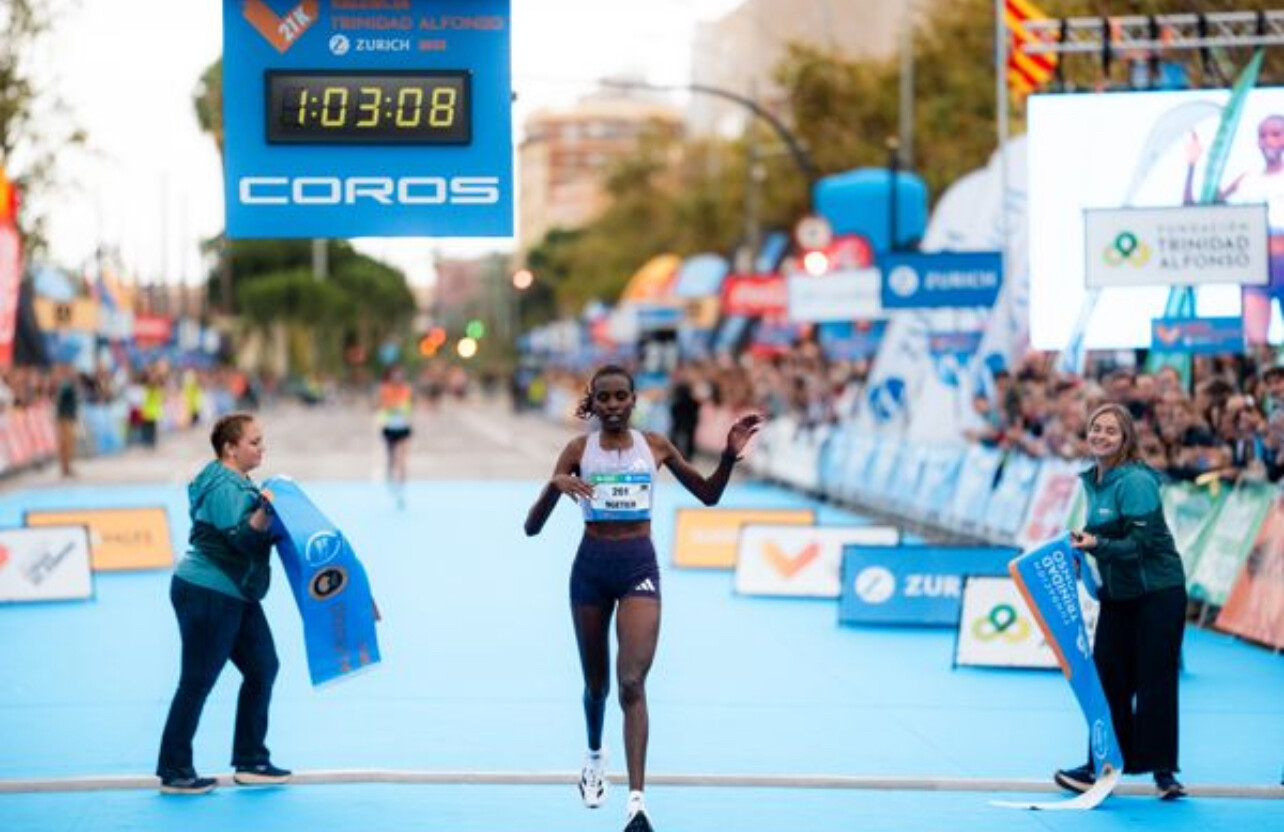
The 29-year-old Almgren shattered the previous continental best of 59:13, set by Julien Wanders in 2019, and became the first European athlete in history to dip under the 59-minute barrier.
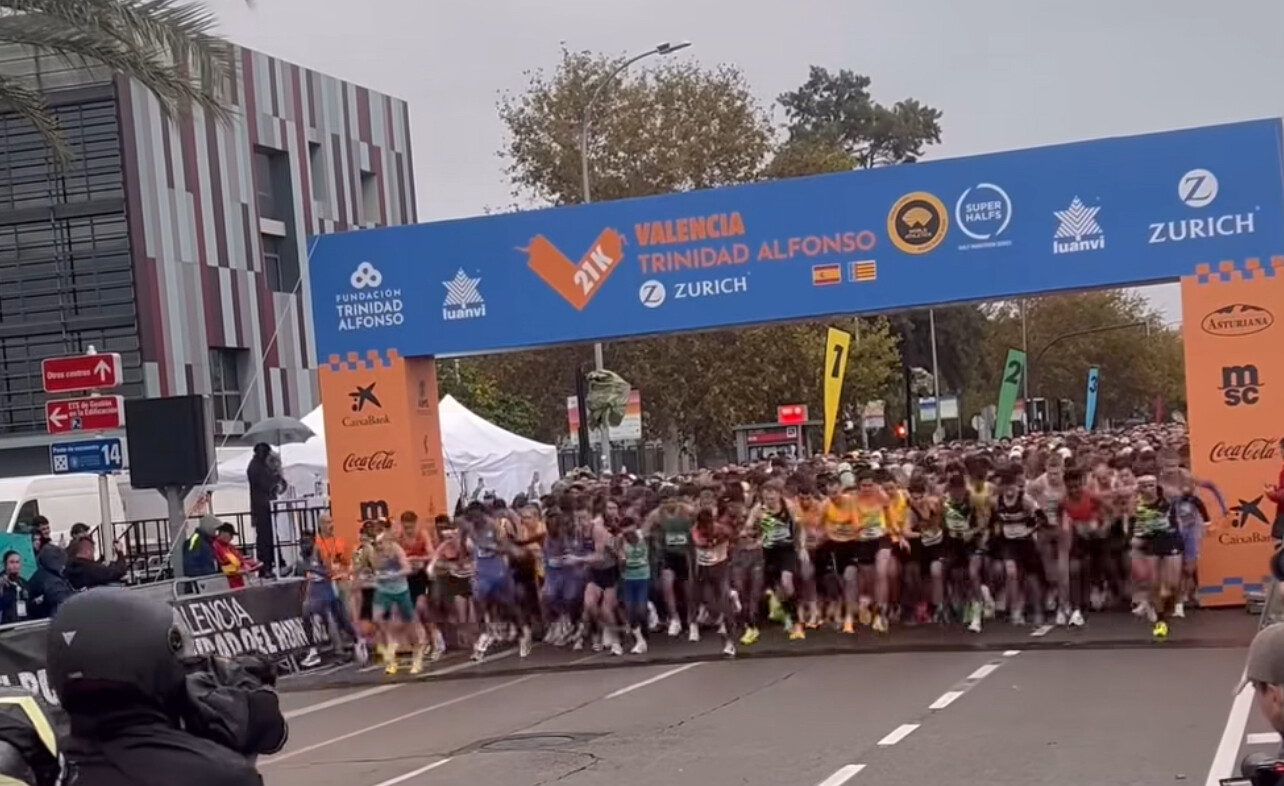
“This means everything,” Almgren said after the finish. “I came to Valencia knowing it was the place for fast times, but to run 58:41 — it’s beyond my dreams. Europe is back in the game.”
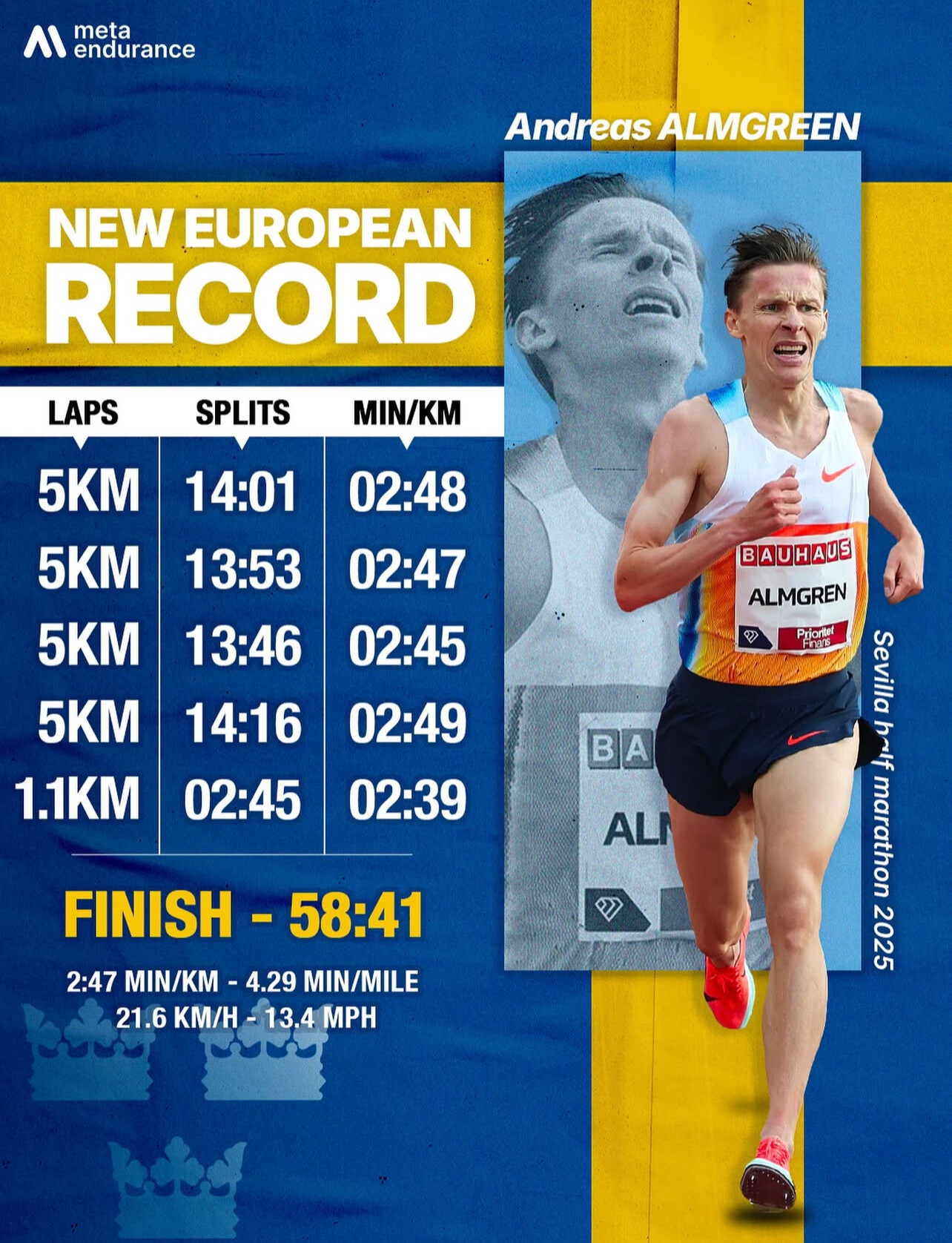
Kejelcha went out hard with early splits suggesting another sub-58 performance might be possible, hitting 10K in around 27:13. Slight headwinds in the final kilometers kept him just off world-record pace, but his margin of control was never in doubt.
WOMEN’S RACE: NGETICH CLOSES IN ON THE WORLD RECORD
Kenya’s Agnes Jebet Ngetich produced yet another masterpiece on the streets of Valencia, winning the women’s title in 1:03:08, the second-fastest time ever recorded for the half marathon. Only Letesenbet Gidey’s world record of 1:02:52, also set in Valencia in 2021, stands ahead of her on the all-time list.
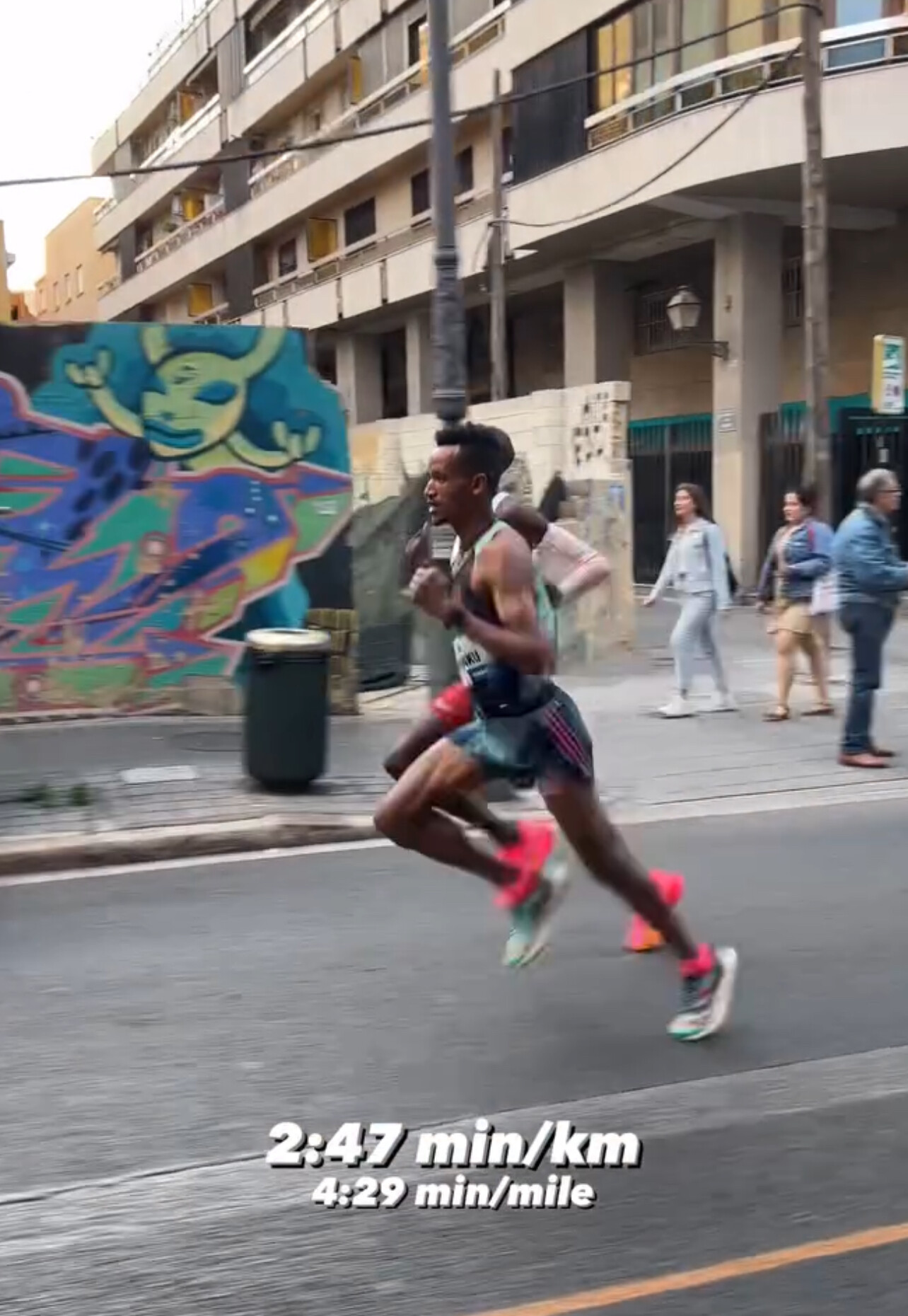
Ngetich went out aggressively, passing 10K in 29:28, well inside world-record pace. But a headwind over the final five kilometers cost her valuable seconds. Despite missing the record, her performance once again showcased her dominance and her special connection with the streets of Valencia, where she has repeatedly delivered career-defining runs.
“Valencia brings out the best in me,” Ngetich said. “I felt strong, and even though I missed the record, I know it’s within reach. I’ll be back.”
Ethiopia’s Fotyen Tesfay took second in 1:05:11, while Kenya’s Veronica Loleo ran a superb personal best of 1:05:46 to finish third. The top performances underscored the remarkable depth and quality in women’s distance running today.
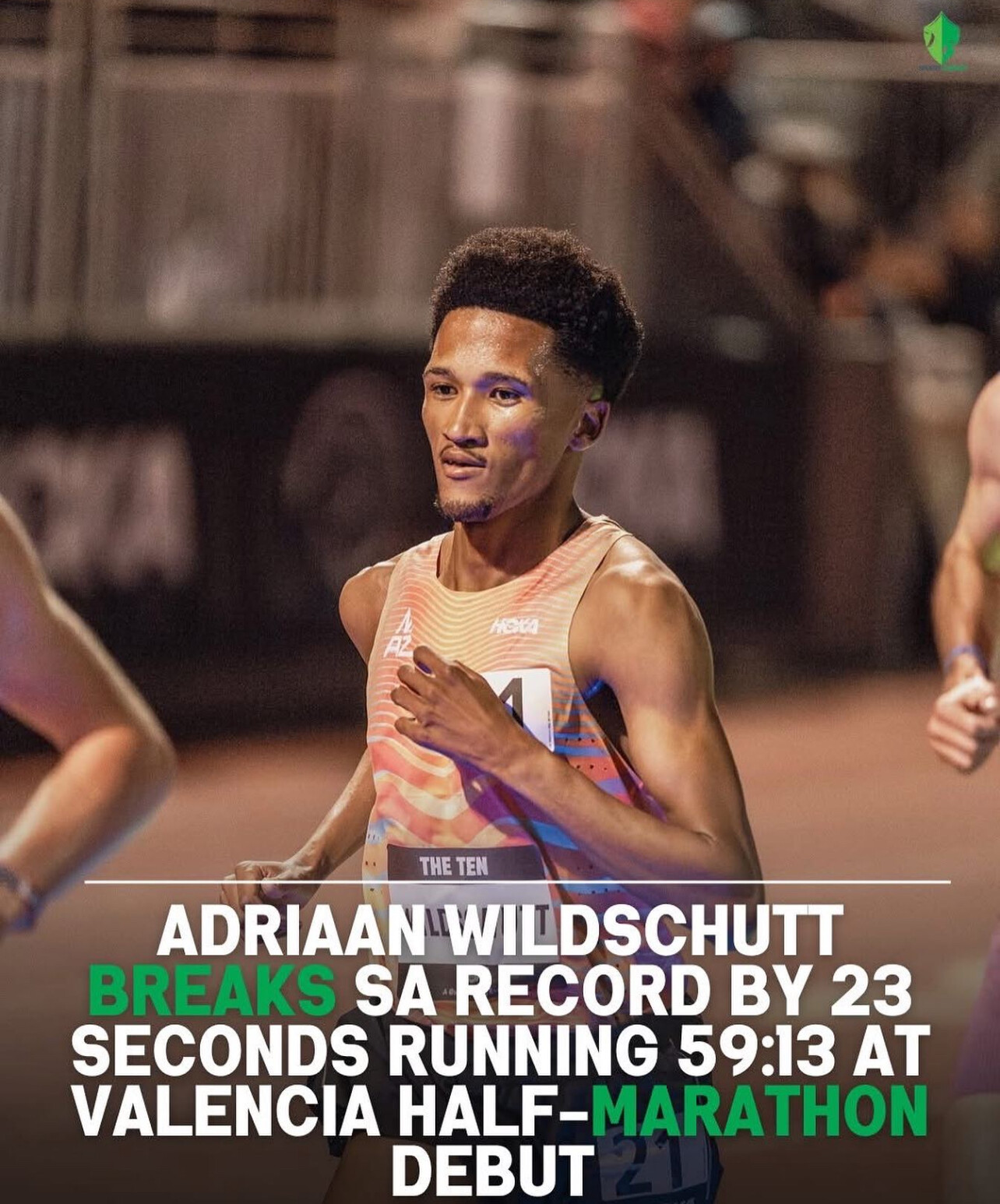
RACE CONDITIONS AND COURSE
Cool temperatures, light humidity, and minimal wind set the stage for another record-friendly day in Valencia. The famously flat and fast course — celebrated for its long straightaways and sea-level setting — once again proved why it’s the go-to destination for athletes chasing lifetime bests and global marks.
Pacemakers set an aggressive tempo from the start in both races, and despite minor breezes in the final stretch, the results confirmed that Valencia remains the gold standard for road racing worldwide.
TOP RESULTS
Men’s Elite Results
1. Yomif Kejelcha (Ethiopia) – 58:02
2. Rodrigue Kwizera (Burundi) – 58:39
3. Brian Kibor (Kenya) – 58:39
4. Andreas Almgren (Sweden) – 58:41 (European Record)
5. Milkesa Mengesha (Ethiopia) – 59:12
6. Boniface Kibiwott (Kenya) – 59:16
7. Sebastian Sawe (Kenya) – 59:22
8. Mohamed Essa (Morocco) – 59:45
9. Tadese Worku (Ethiopia) – 59:58
10. Gabriel Geay (Tanzania) – 1:00:02
Women’s Elite Results
1. Agnes Jebet Ngetich (Kenya) – 1:03:08 (Second-fastest time ever)
2. Fotyen Tesfay (Ethiopia) – 1:05:11
3. Veronica Loleo (Kenya) – 1:05:46 (Personal Best)
4. Irine Cheptai (Kenya) – 1:06:03
5. Melat Kejeta (Germany) – 1:06:37
6. Viola Chepngeno (Kenya) – 1:06:44
7. Tsige Haileslase (Ethiopia) – 1:06:56
8. Eilish McColgan (Great Britain) – 1:07:09
9. Selly Chepyego (Kenya) – 1:07:16
10. Marta Galimany (Spain) – 1:08:21
WHY VALENCIA CONTINUES TO INSPIRE THE WORLD
For more than a decade, Valencia has been the epicenter of half-marathon excellence. From Gidey’s women’s world record in 2021, to Kandie’s men’s mark in 2020, to Kejelcha’s near-record runs and now Almgren’s European breakthrough — the course has become synonymous with speed and history.
This year’s edition reinforced three powerful truths about modern distance running:
1. Yomif Kejelcha remains one of the greatest half-marathon specialists of all time.
2. Agnes Jebet Ngetich has brought women’s road racing to new heights, now sitting just seconds shy of a world record.
3. Andreas Almgren’s European record symbolizes a resurgent era for European endurance running.
FINAL SUMMARY
Event: 2025 Valencia Half Marathon Trinidad Alfonso Zurich
Date: October 26, 2025
Location: Valencia, Spain
Men’s Champion: Yomif Kejelcha (Ethiopia) – 58:02
Women’s Champion: Agnes Jebet Ngetich (Kenya) – 1:03:08 (Second-fastest ever)
European Record: Andreas Almgren (Sweden) – 58:41
by Boris Baron
Login to leave a comment
Valencia Half Marathon
The Trinidad Alfonso Valencia Half Marathon has become one of the top running events in the world. Valencia is one of the fastest half marathon in the world. The race, organized by SD Correcaminos Athletics Club, celebrated its silver anniversary in style with record participation, record crowd numbers, Silver label IAAF accreditation and an atmosphere that you will not find...
more...KATA’s Donald Kimaru Finishes 4th at 2025 Standard Chartered Nairobi Marathon
The 2025 Standard Chartered Nairobi Marathon delivered a thrilling showcase of endurance on October 26, as top athletes battled it out on the streets of Nairobi under ideal racing conditions. This year’s event, one of the premier marathons on the African continent, once again attracted a deep field of elite talent.
Among the day’s standout performances was Donald Kimaru, a KATA athlete training out of the Kapcherop KATA Running Camp, who finished a remarkable 4th place in a highly competitive men’s race.
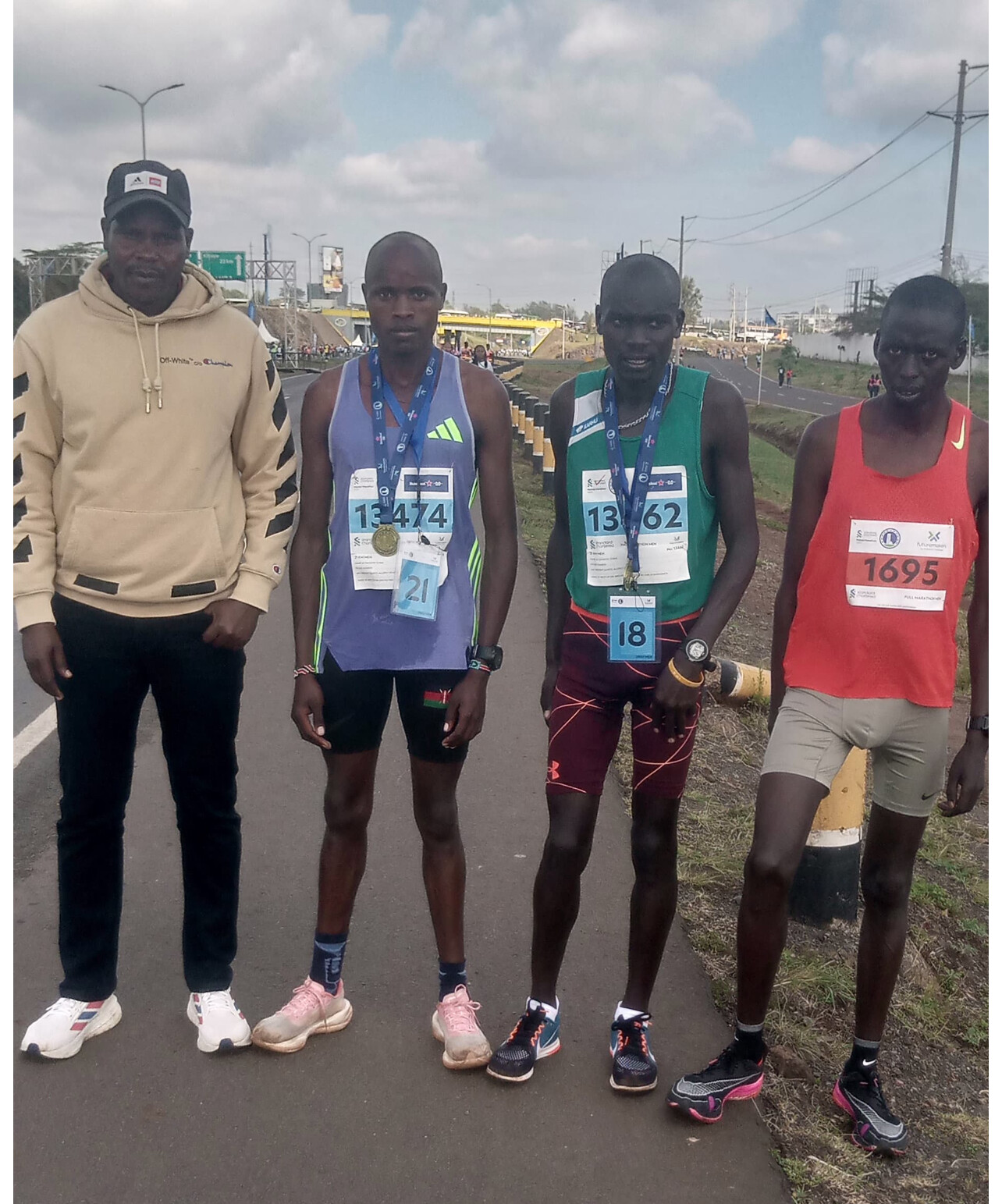
Donald Kimaru: Fuelled by KATA, Ready for the Global Stage
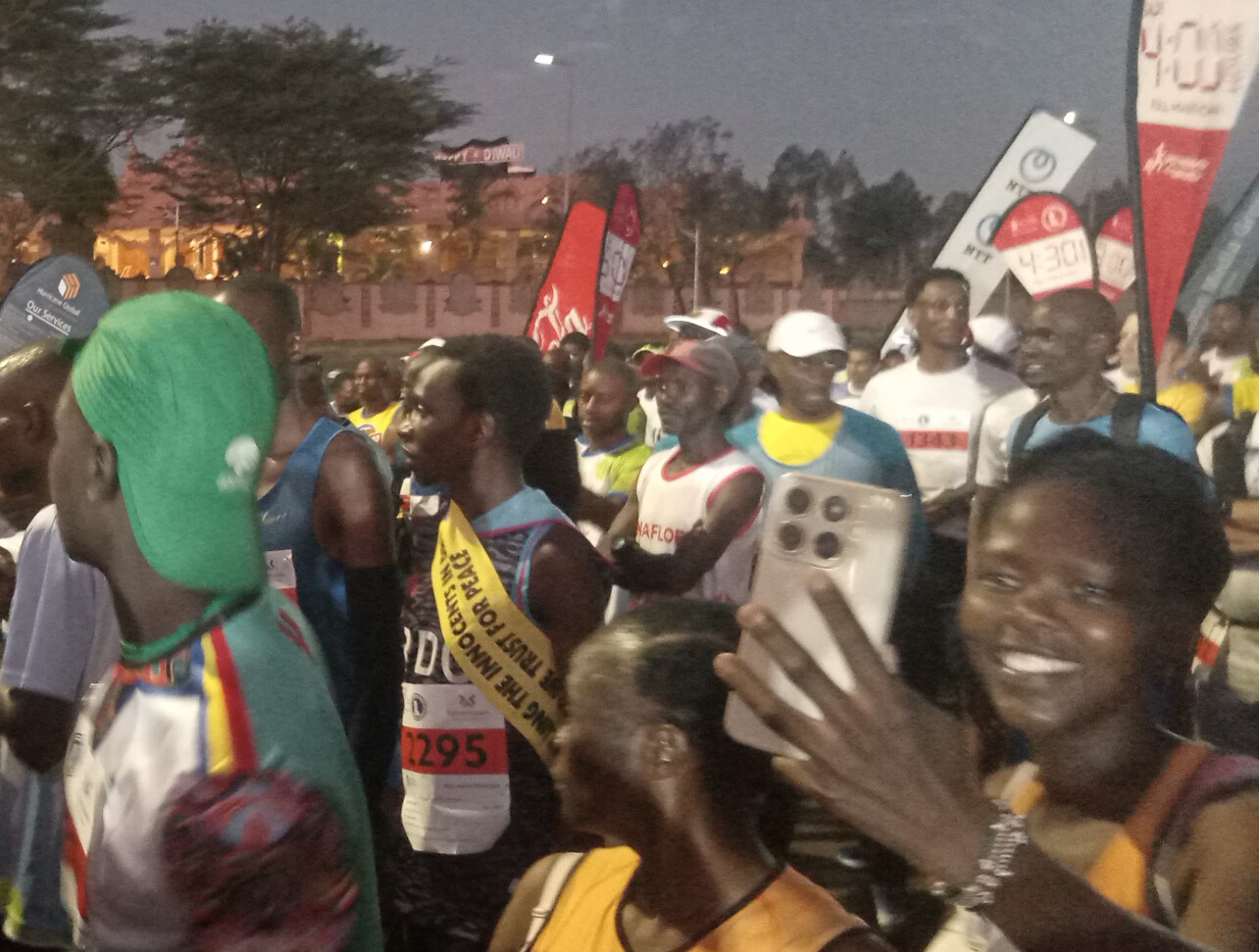
Clocking a time of 2:12:02, Kimaru finished just over a minute behind the winner, Benard Chepkowny (2:11:01), and less than 30 seconds from the podium. It was a huge breakthrough for the rising long-distance runner, who trains under the high-altitude guidance of Coach Philemon Kipruto at the KATA facility in Kapcherop.
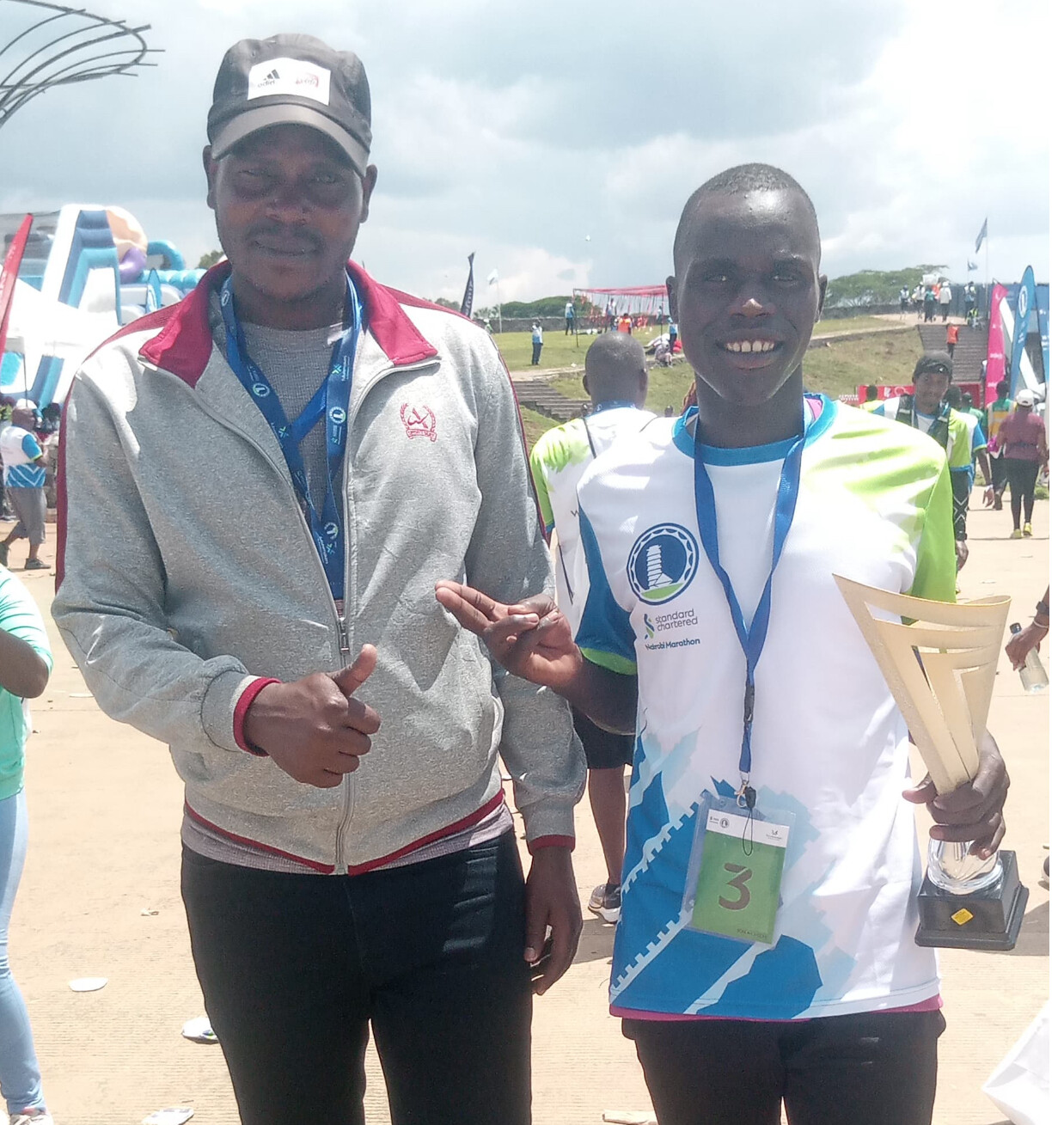
“Donald is showing the power of patience and consistency,” Coach Kipruto noted. “We’ve known he had the potential, and now he’s proving it in one of Kenya’s most important races.”
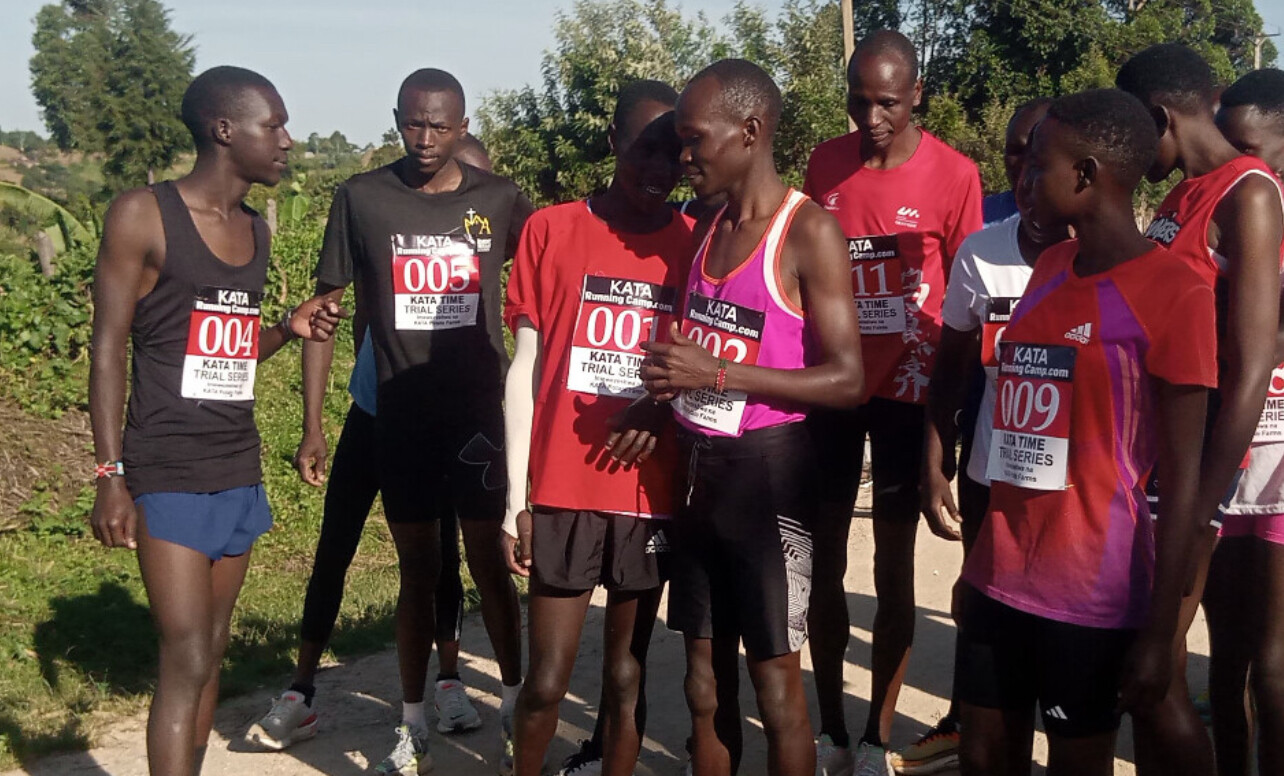
Chepkwony, returning to major competition, wasted no time asserting his intent. He set a strong pace from the start, joined by Silas Chesang, Donald Kimaru, Ezekiel Kemboi, Bethwel Chemuno, and Wilfred Kiplagat, all determined to stay in contention.
As the race progressed past the 30km mark, Chepkwony maintained the lead despite Chesang mounting a late push after struggling on the uphill sections.
Chepkwony’s endurance and composure carried him through to the finish line, clocking an impressive 2:11:01 to seal his comeback victory.
Kimaru trains in an environment designed to create champions, where runners combine disciplined training with the nutritional strength of KATA Potatoes – The Fuel of Champions. His performance in Nairobi is a testament to this holistic approach. Donald had placed second at the KATA Double Road Race 15k held September 20 in Thika.
Top 10 Elite Men – 2025 Standard Chartered Nairobi Marathon
1. Benard Chepkowny – KEN – 2:11:01 (first photo)
2. Alex Chepkwik Saekwo – KEN – 2:11:26
3. Ezekiel Kemboi Omullo – KEN – 2:11:40
4. Donald Kimaru – KEN – 2:12:02
5. Wilfred Kiplagat – UGA – 2:13:42
6. Charles Kimeli – KEN – 2:14:08
7. Nehemiah Kiprono Sang – KEN – 2:14:38
8. Solomon Yego – KEN – 2:14:50
9. Dennis Kipkemboi Koech – KEN – 2:15:39
10. Silas Chesang Keitany – KEN – 2:15:51
Women’s Race Highlight
In the women’s marathon, Hellen Chepkorir dominated with a powerful performance, finishing in 2:27:17 at an average pace of 3:30/km.
KATA’s Impact Growing
Donald Kimaru’s top finish adds to the growing list of success stories emerging from the KATA Running Camp ecosystem. Founded by Bob Anderson, KATA is reshaping the Kenyan distance running scene with over 30 camps across the country, combining elite training with a sustainable agricultural model. Runners like Donald are not only developing as athletes but also helping uplift their communities.
Next for Donald? A potential international marathon debut in 2026, where he’ll look to break the 2:10 barrier and cement his name among Kenya’s top marathoners.
by Boris Baron
Login to leave a comment
NAIROBI MARATHON
Nairobi Marathon is an annual road running competition over the marathon distance held in October in Nairobi, Kenya. First held in 2003, the competition expanded and now includes a half marathon race along with the main race. It was part of "The Greatest Race on Earth", fully sponsored by Standard Chartered Bank....
more...

